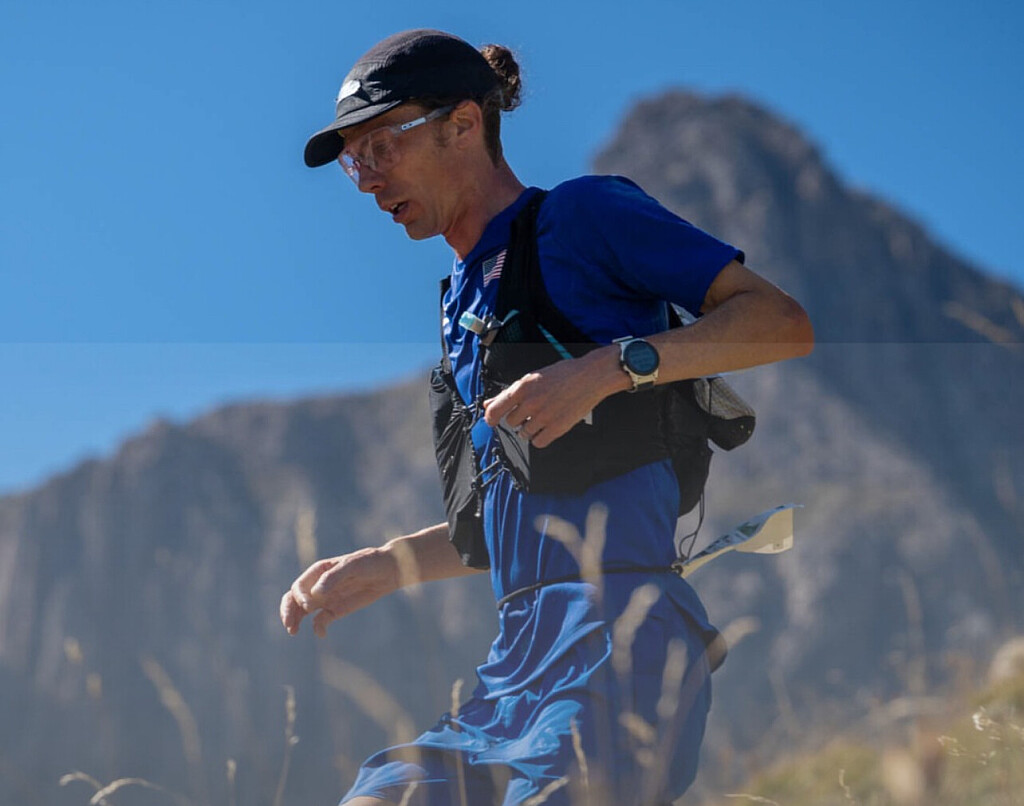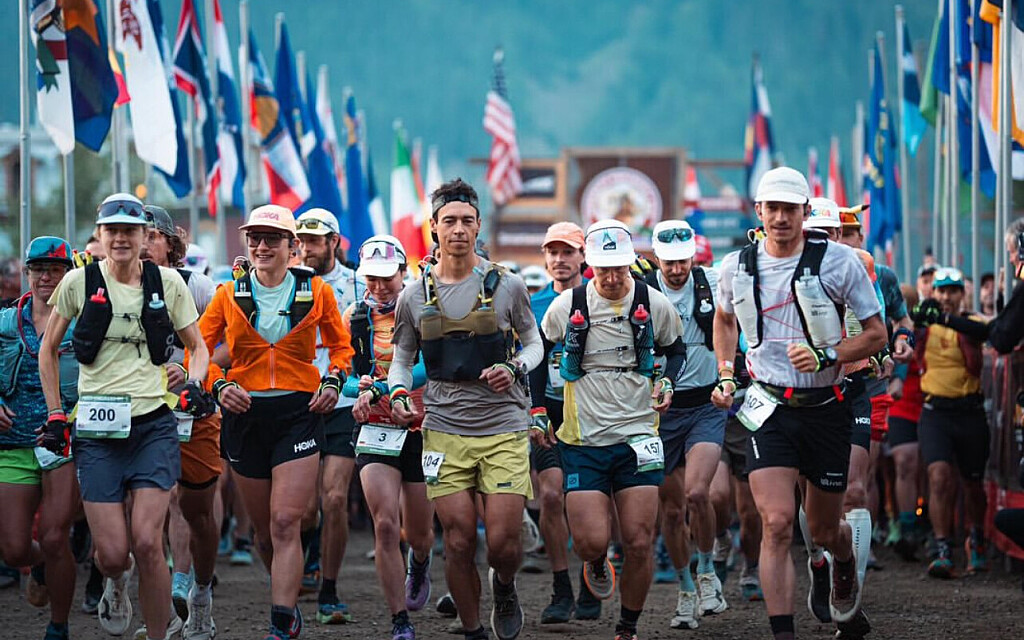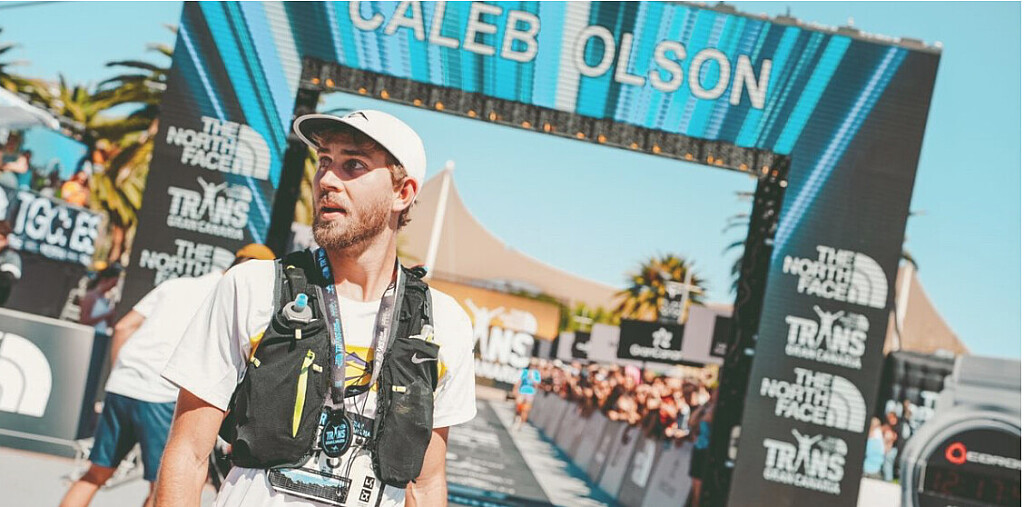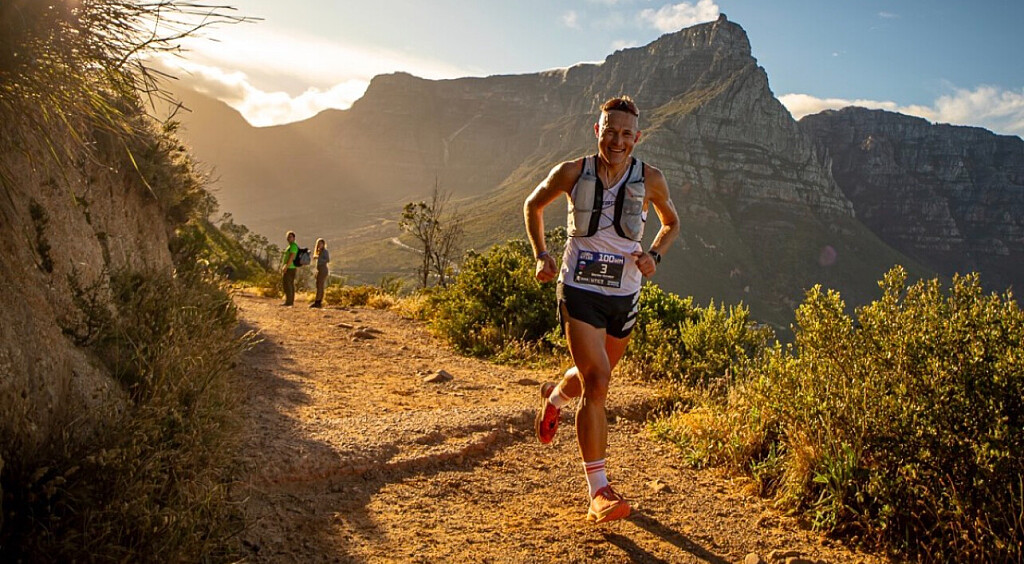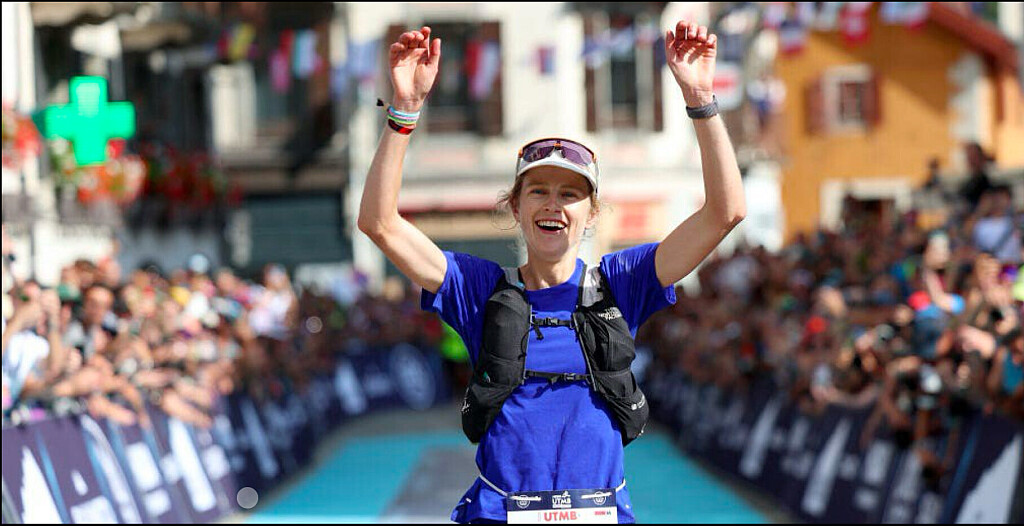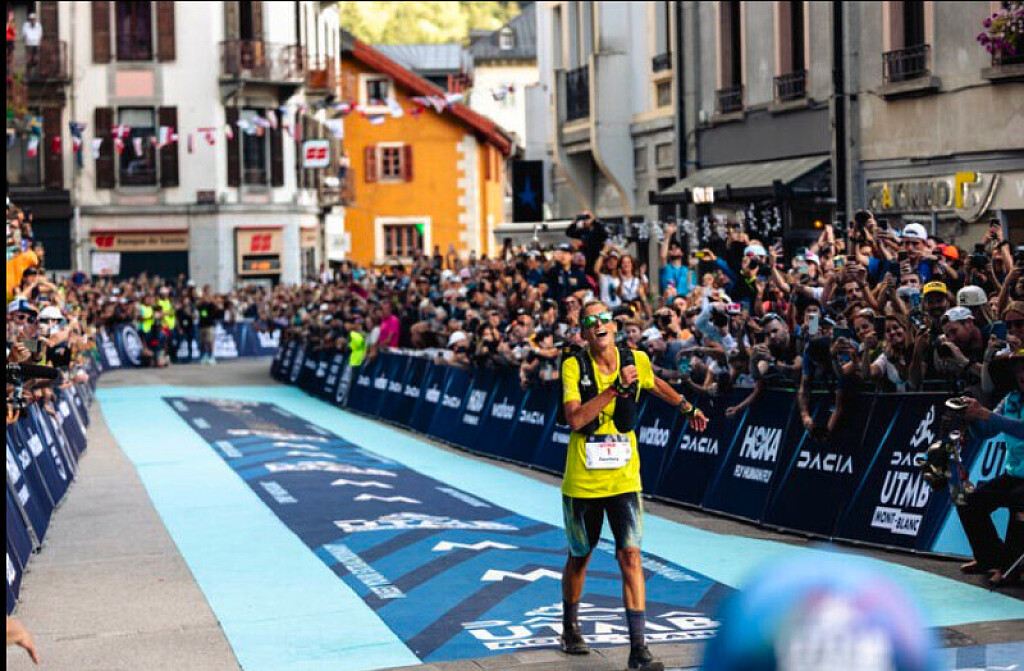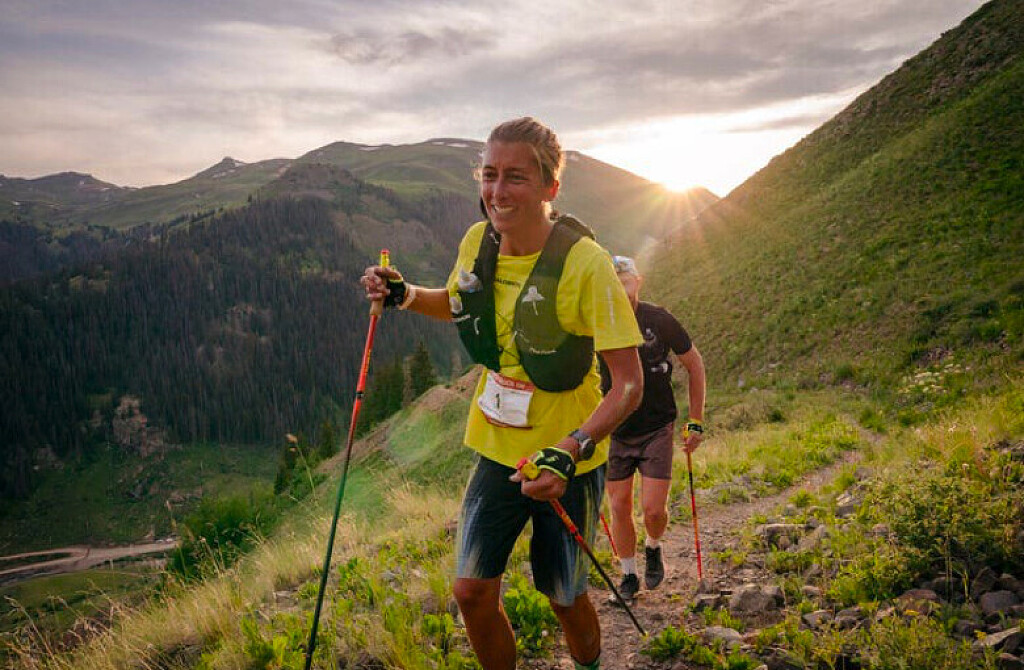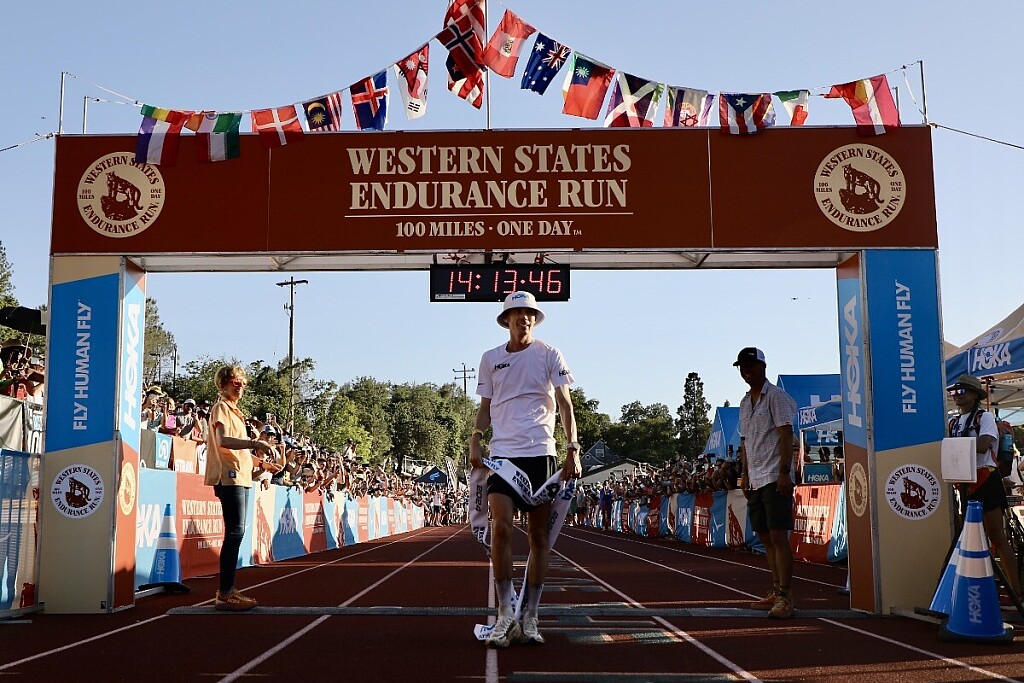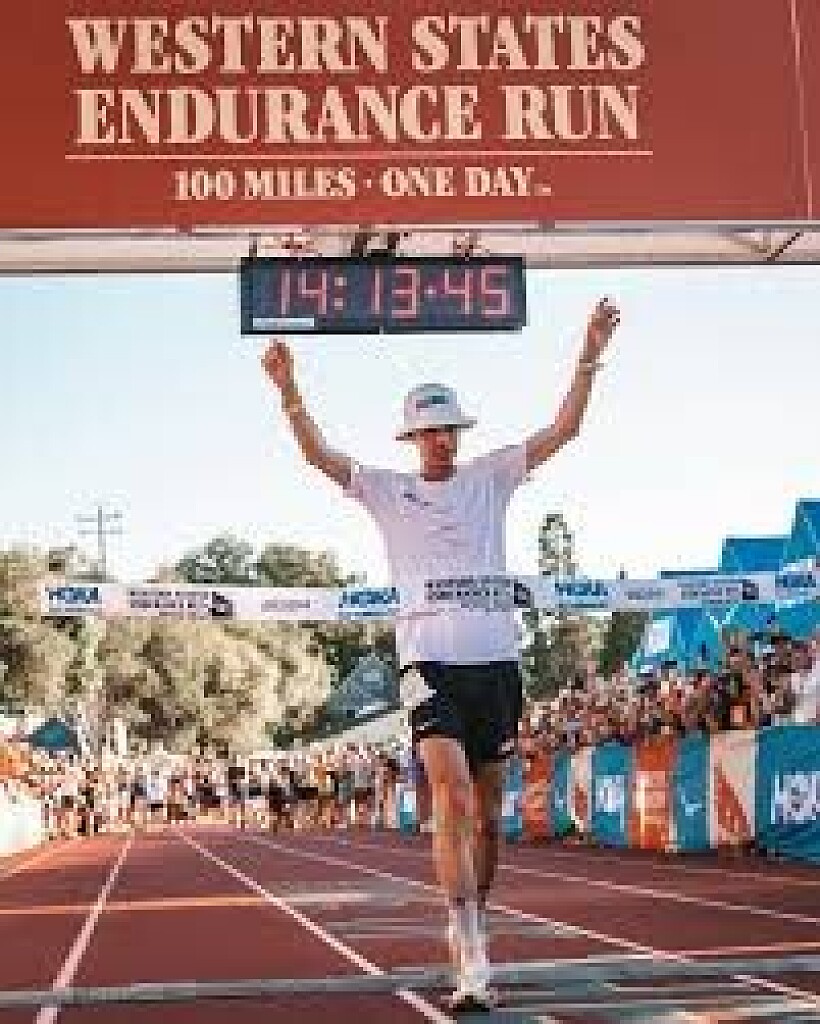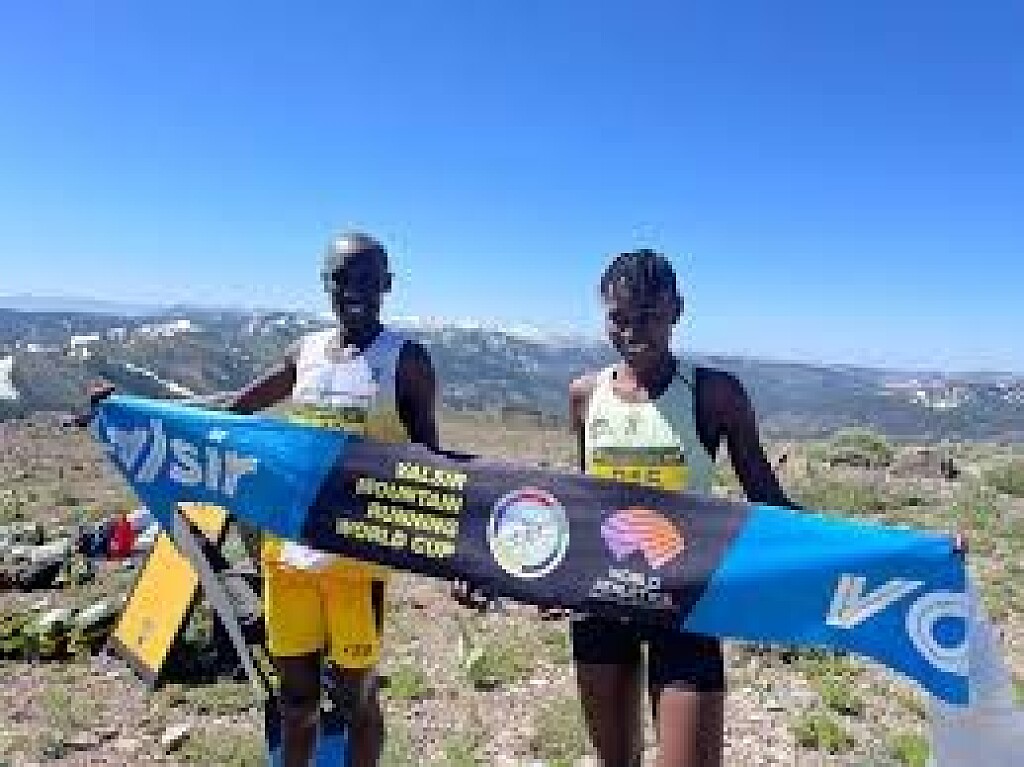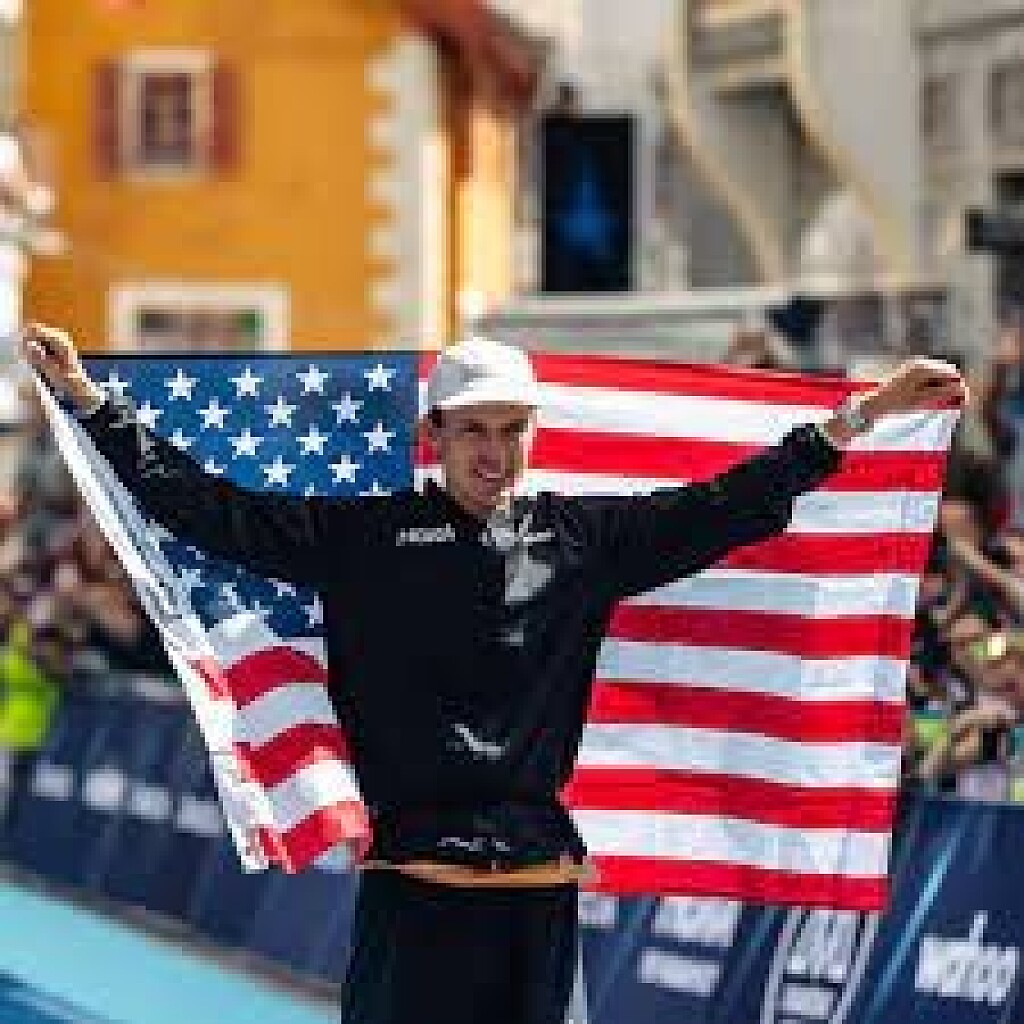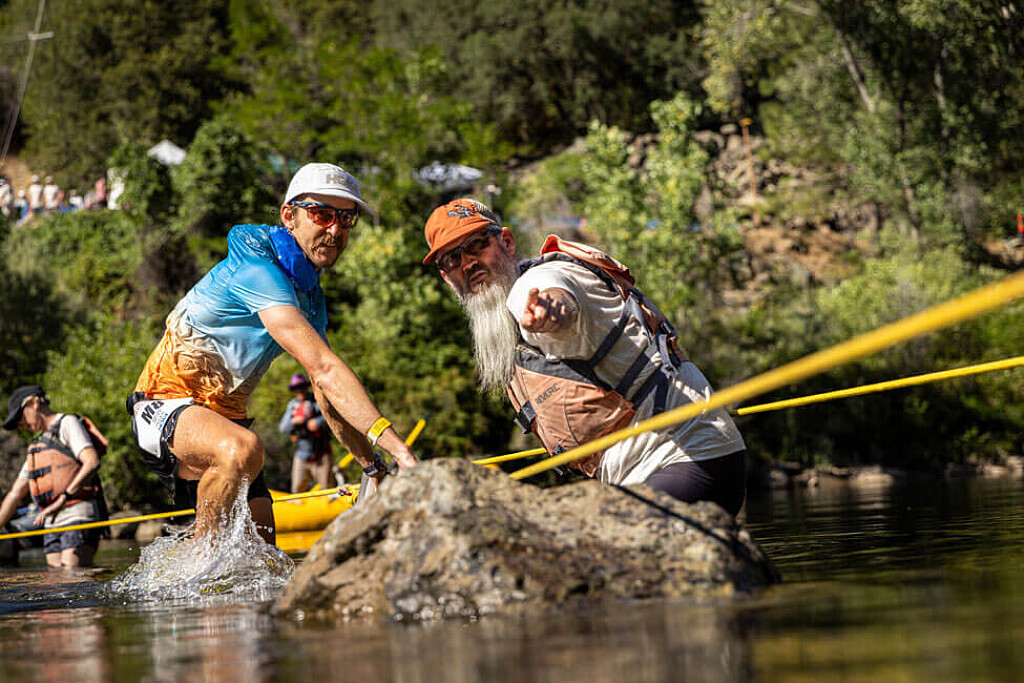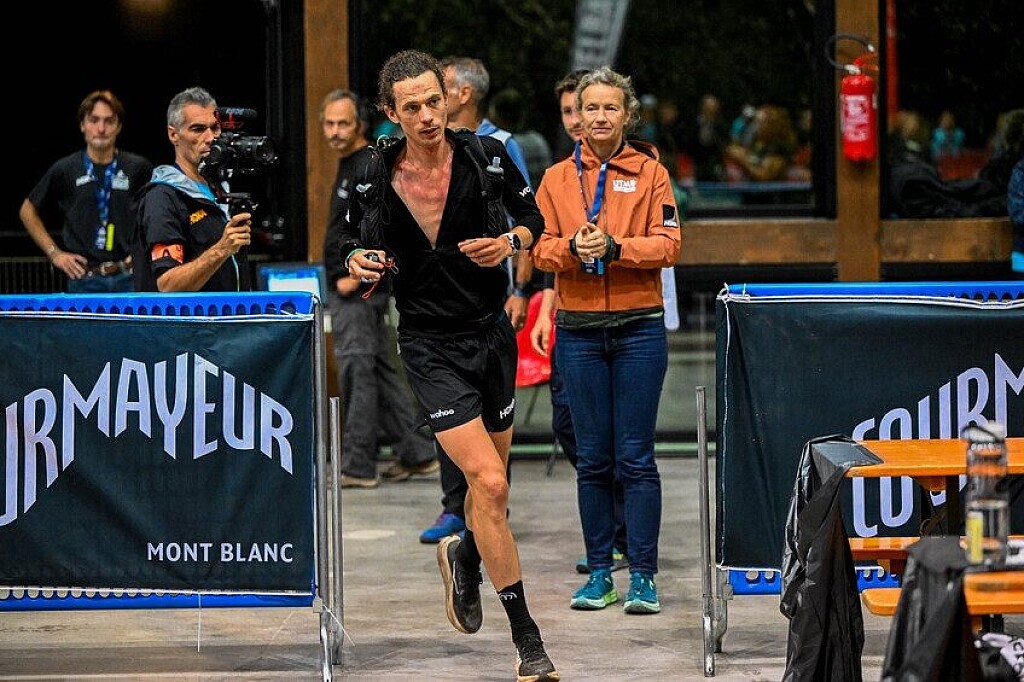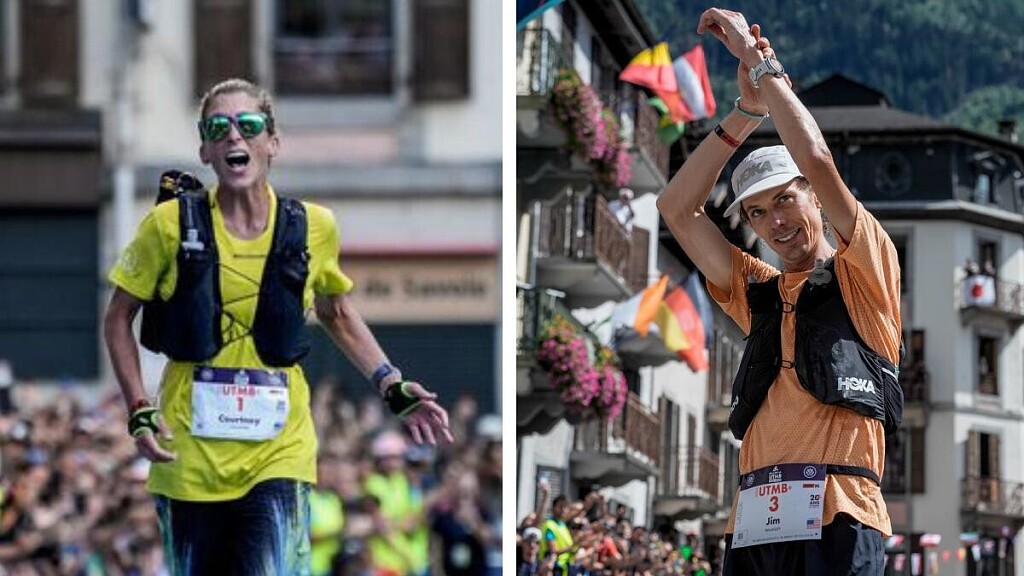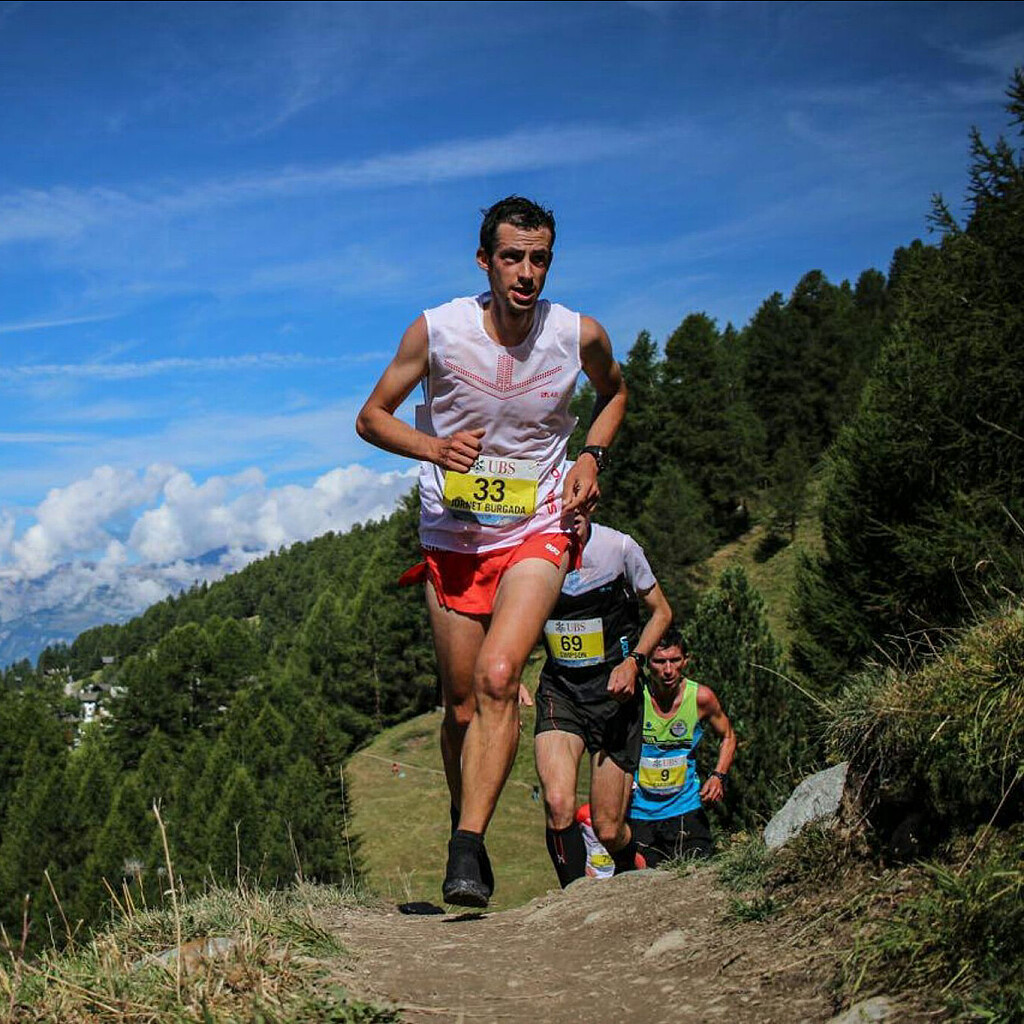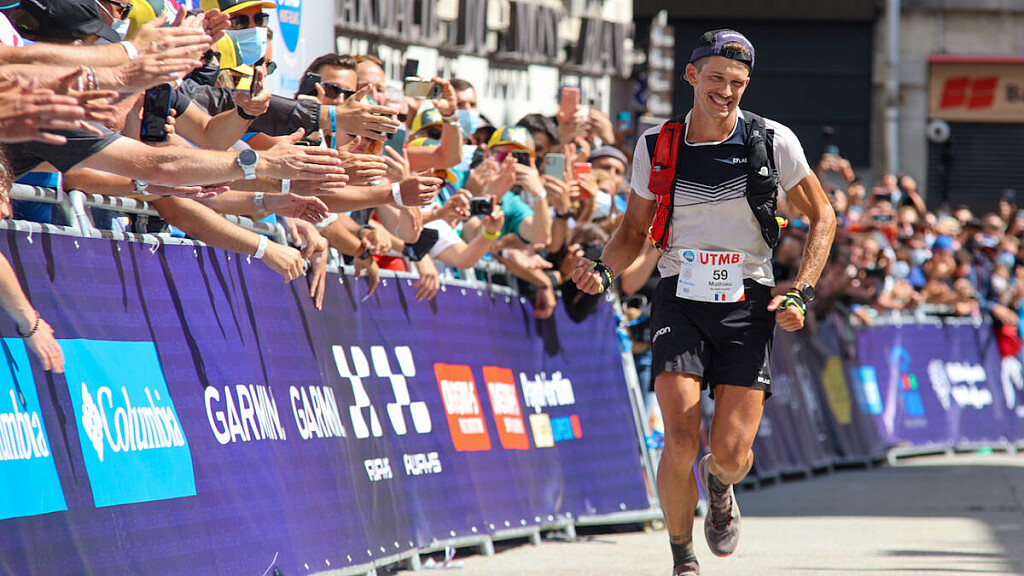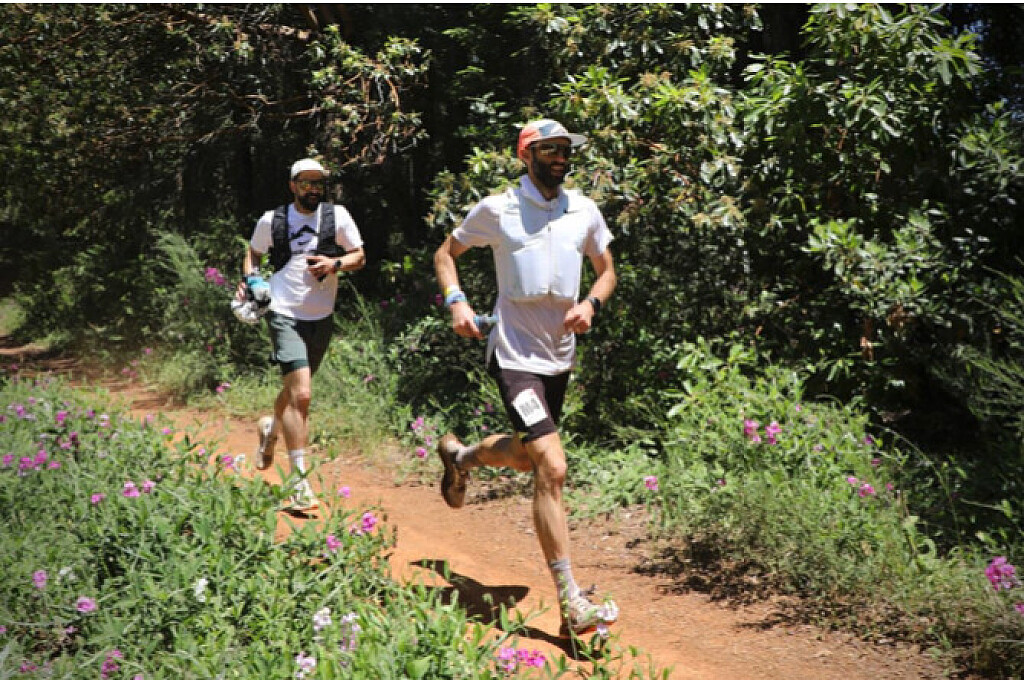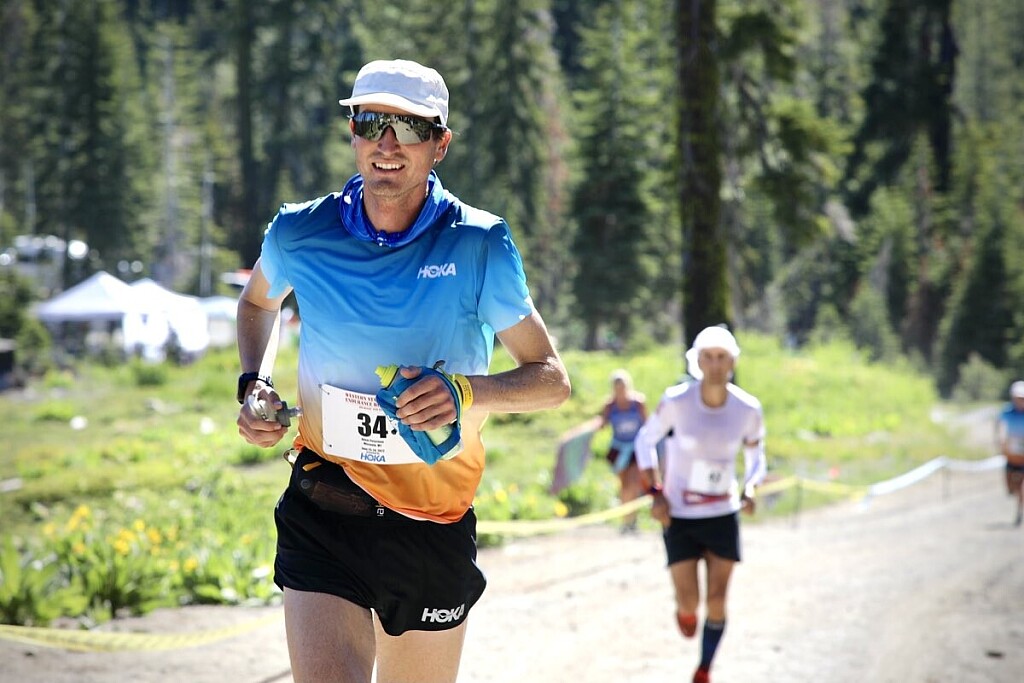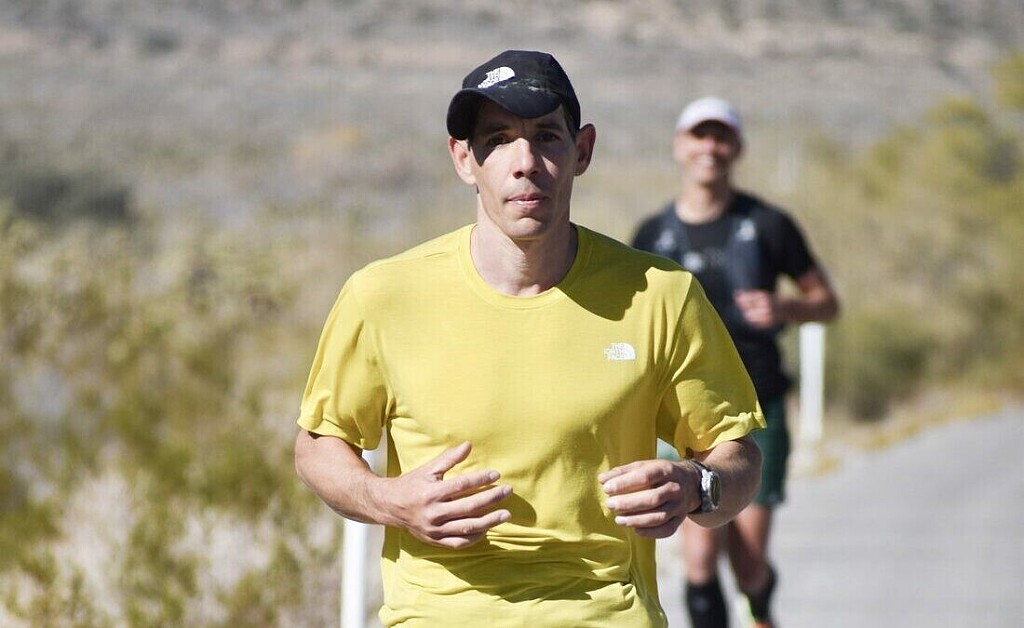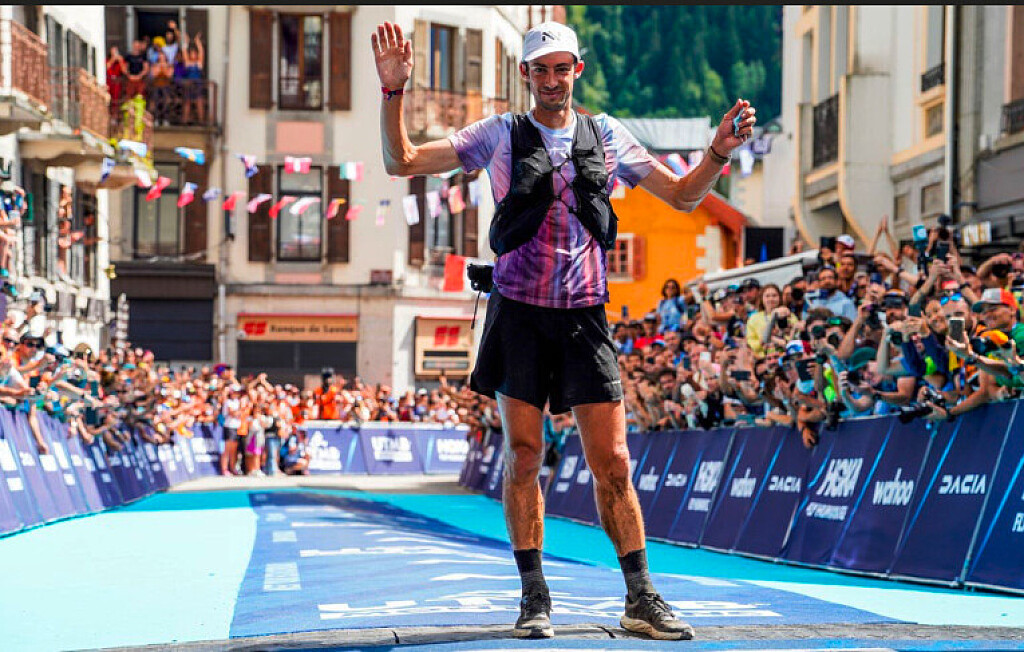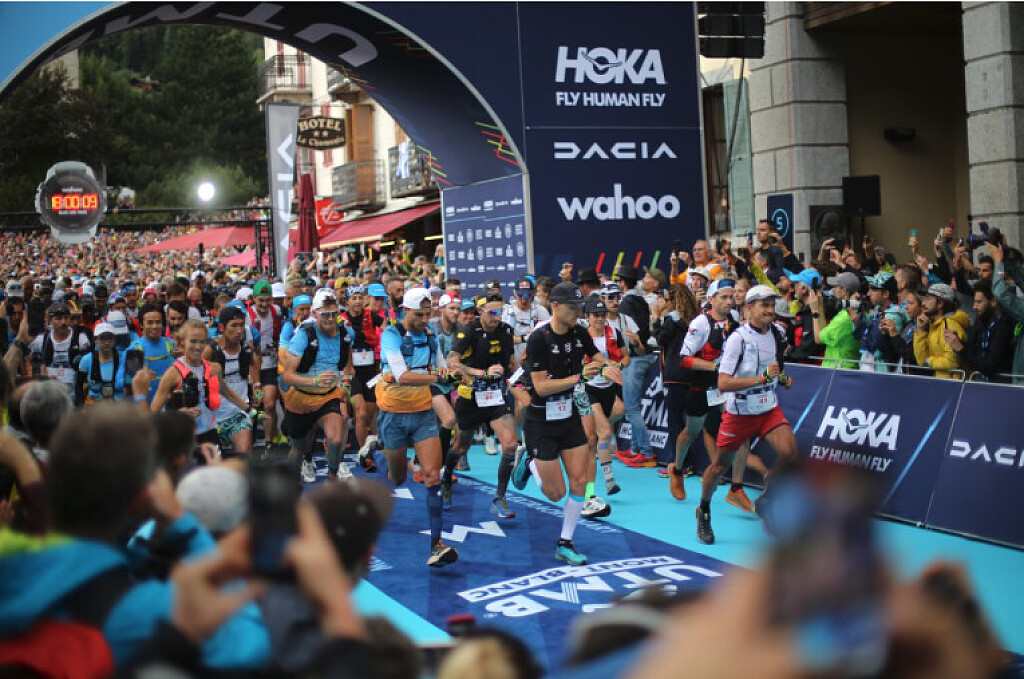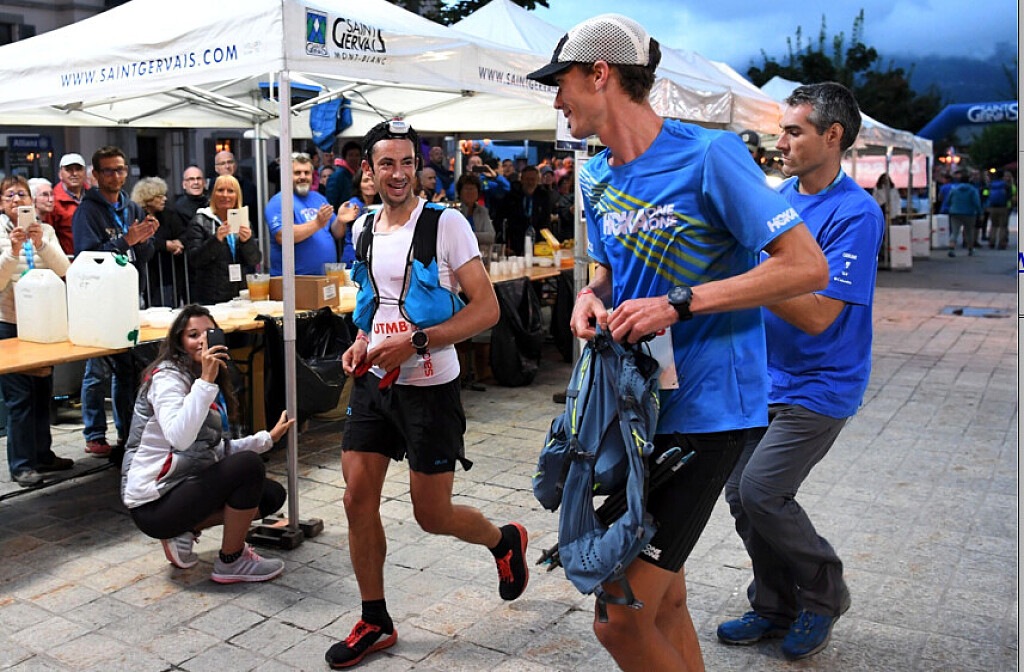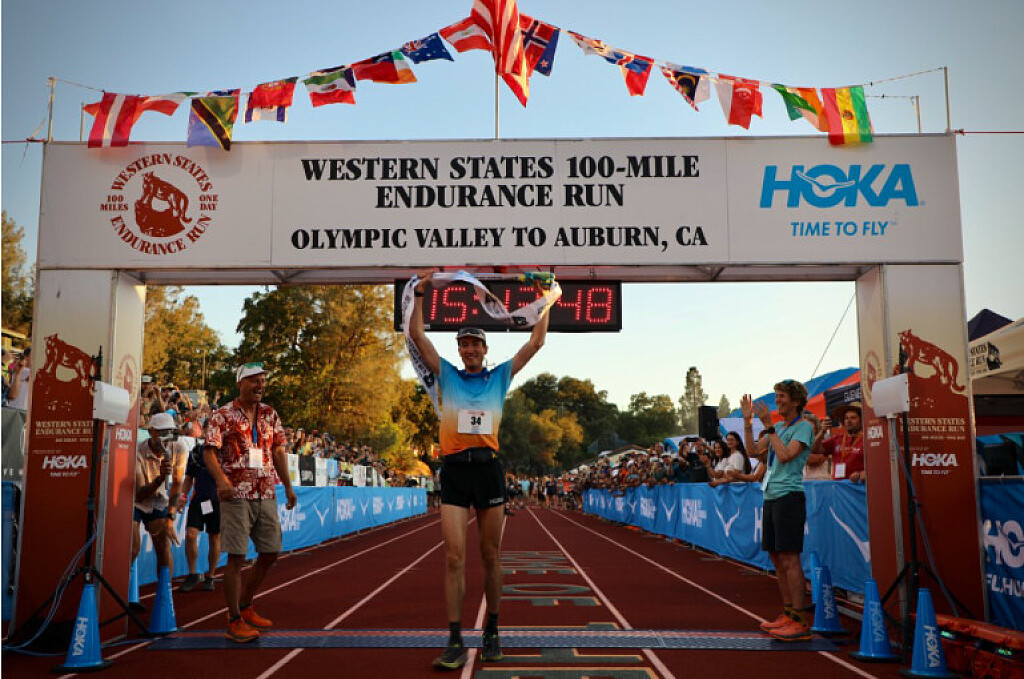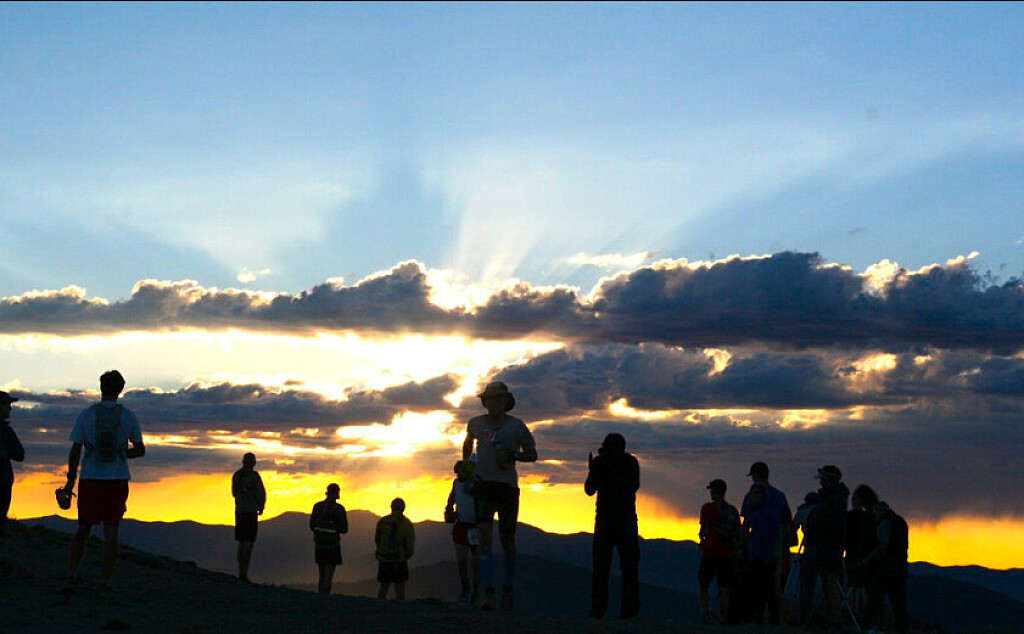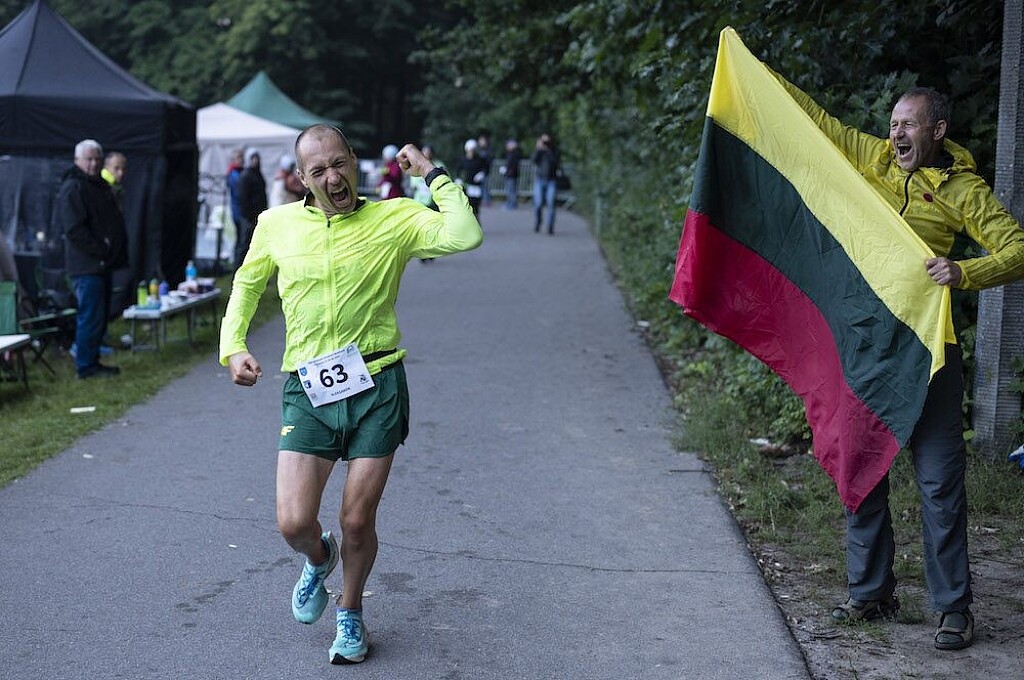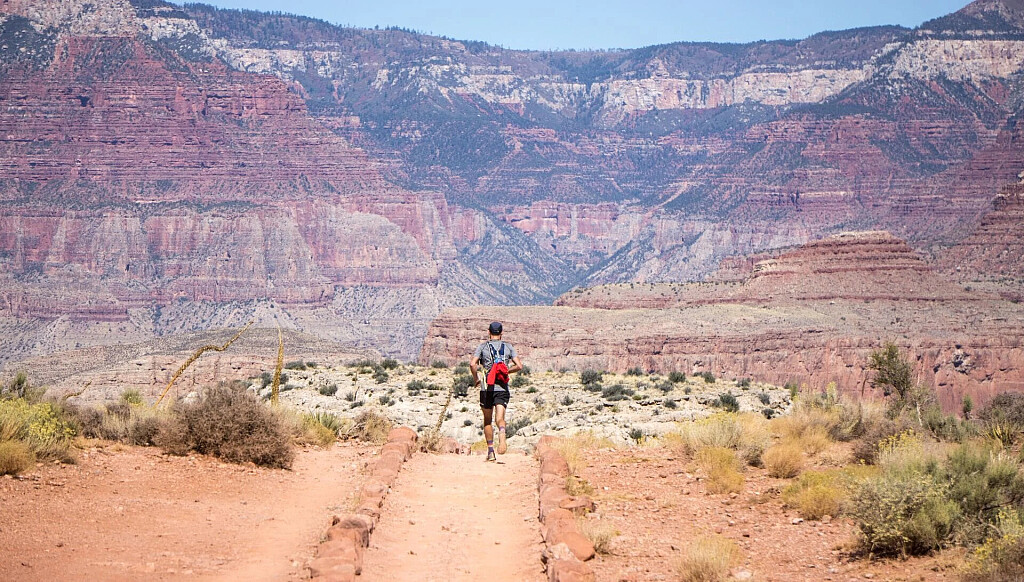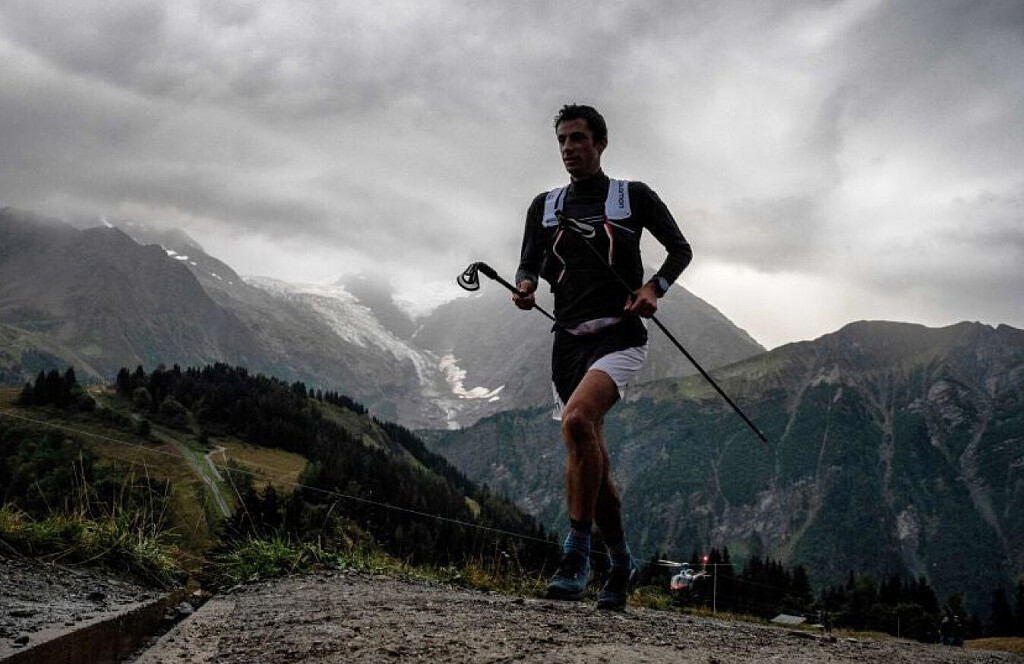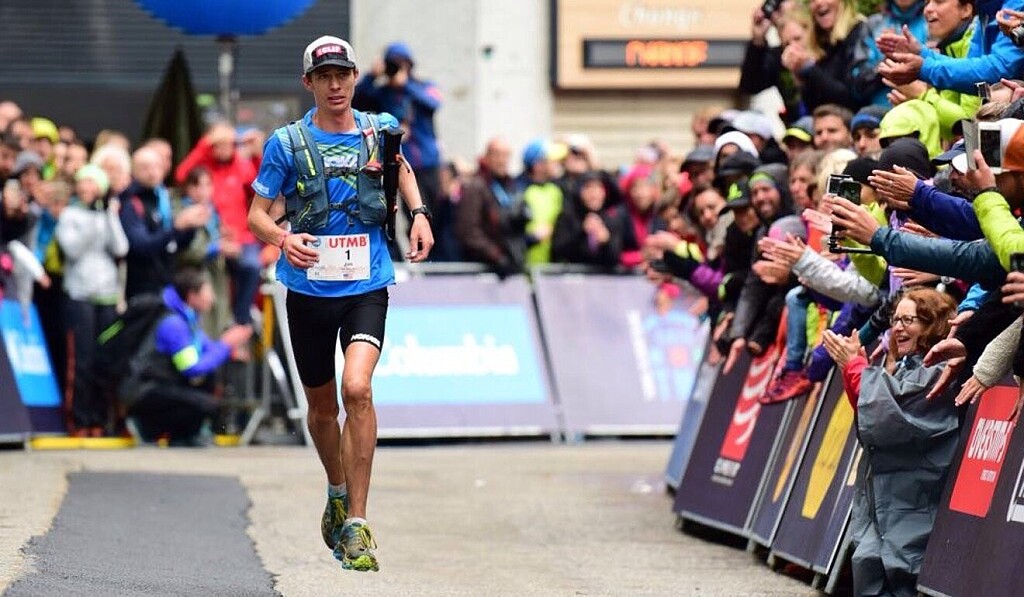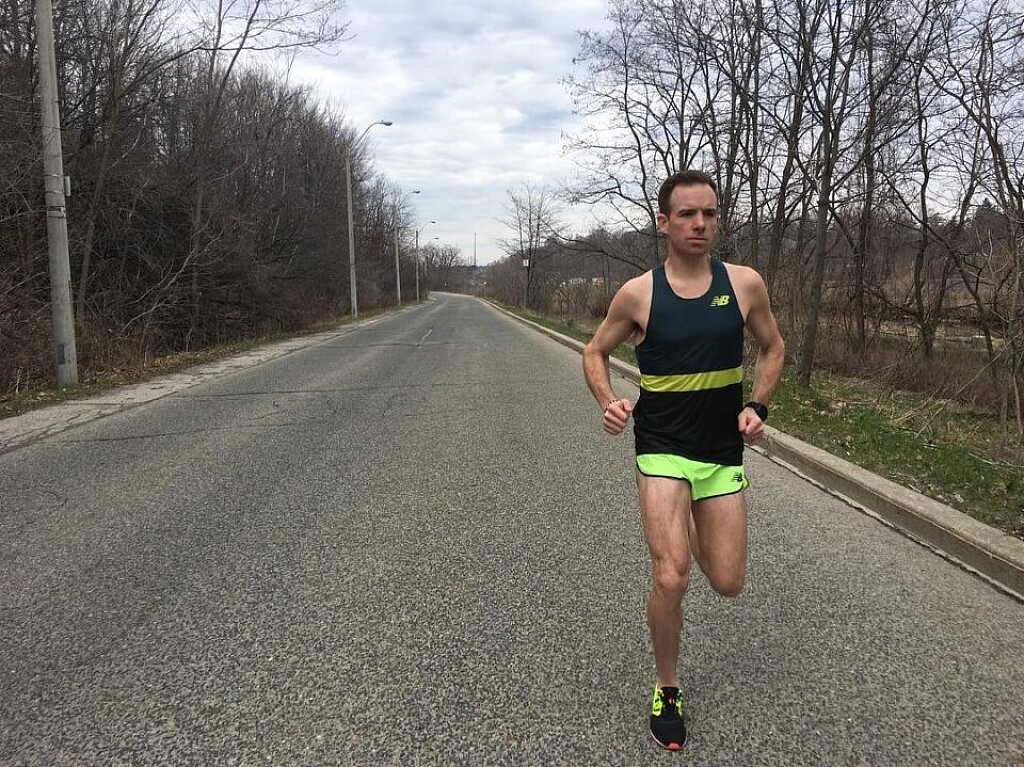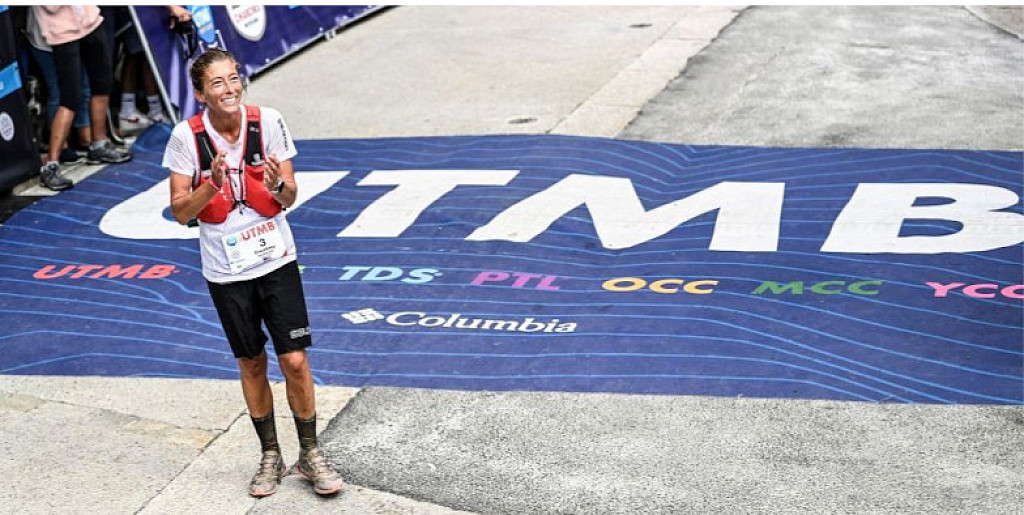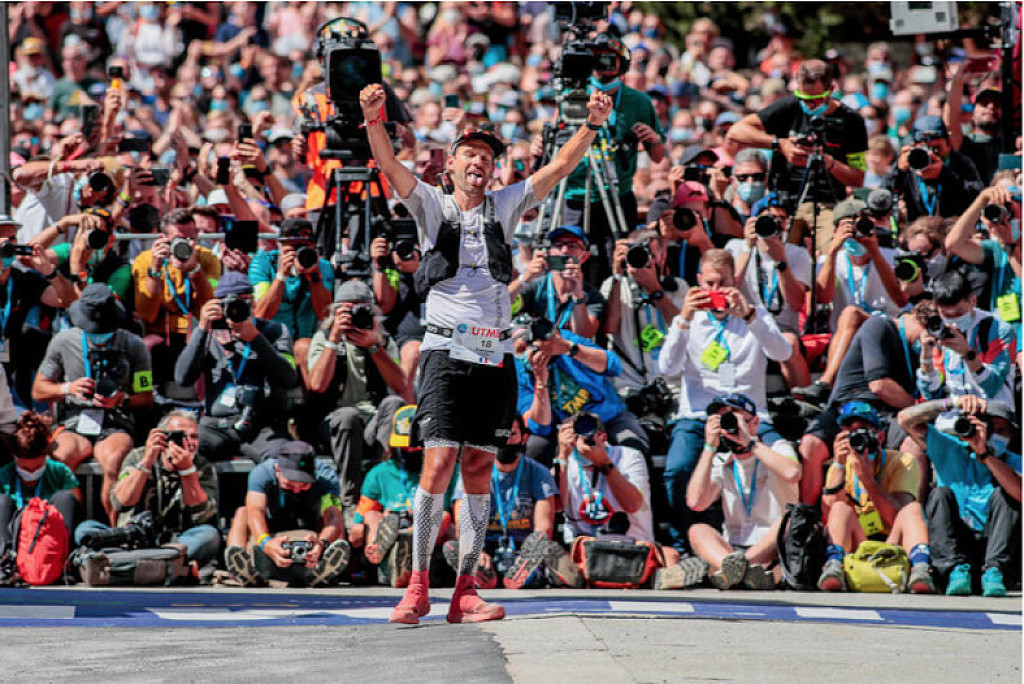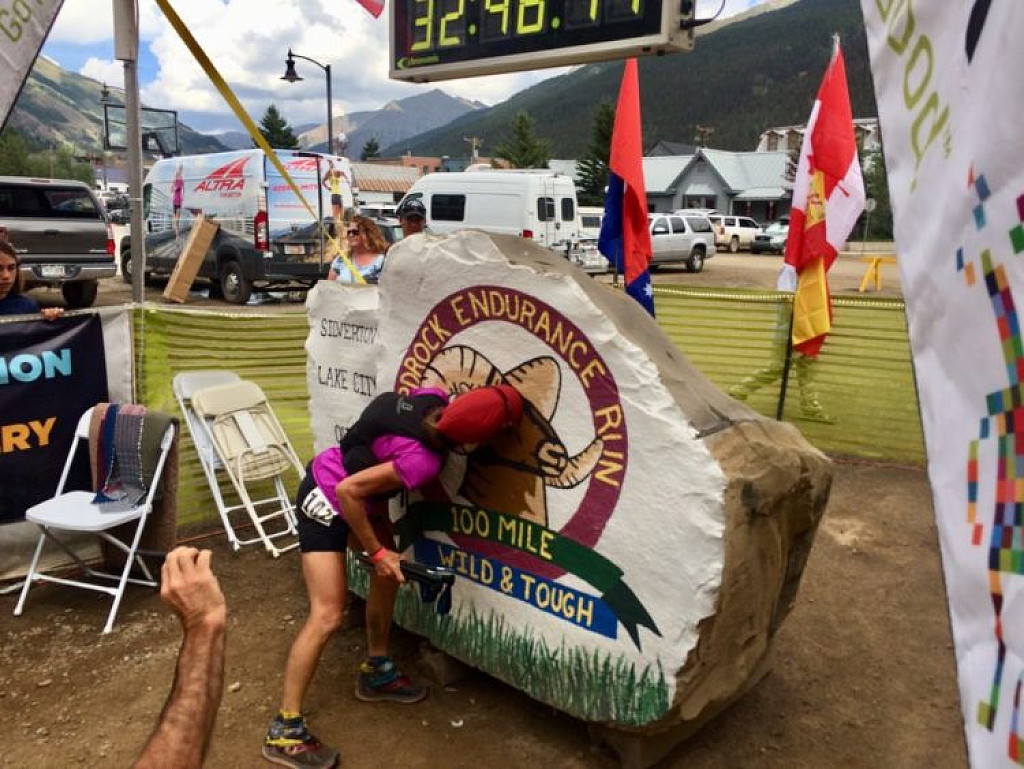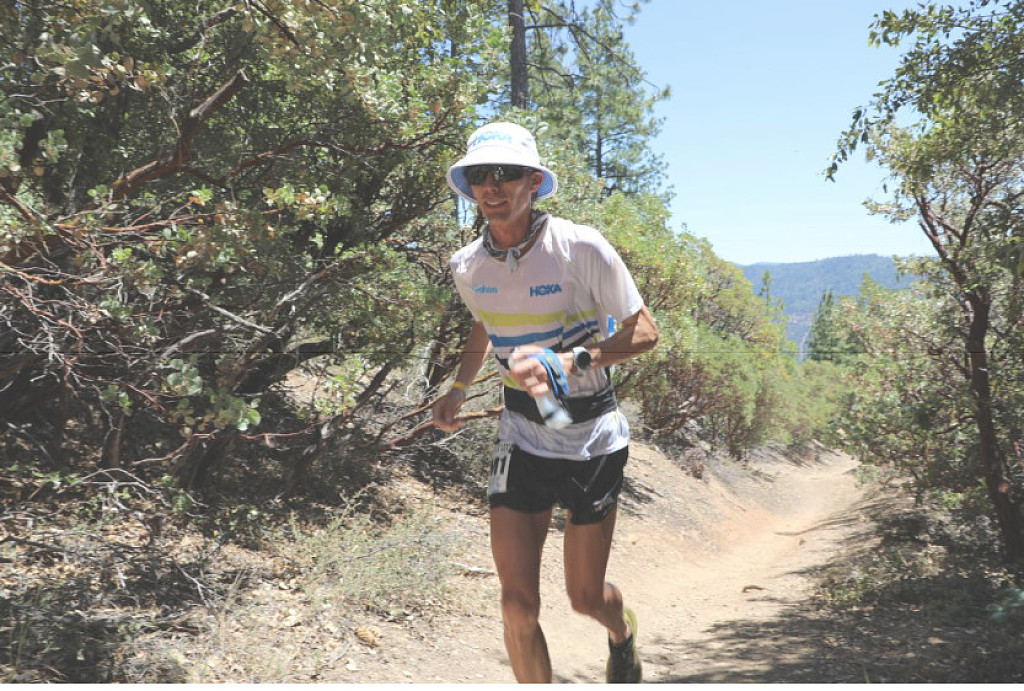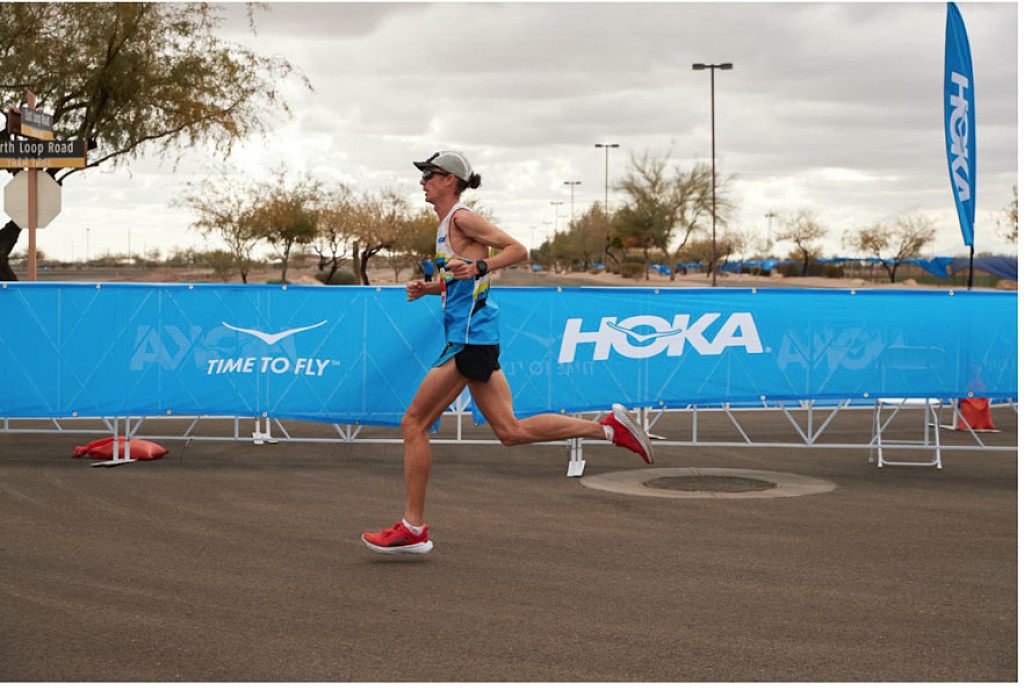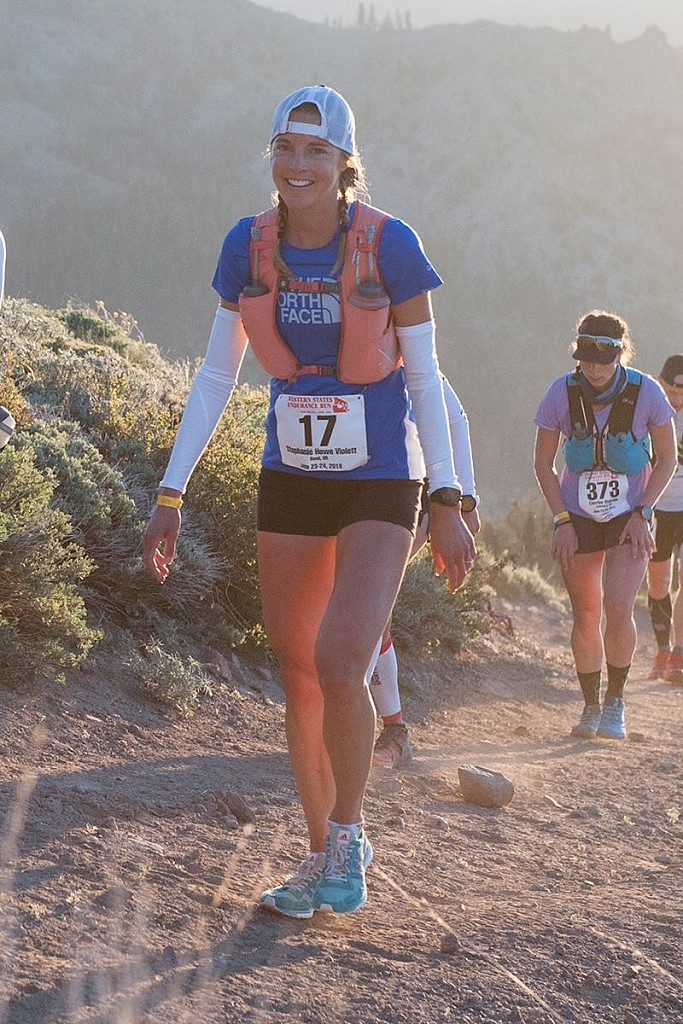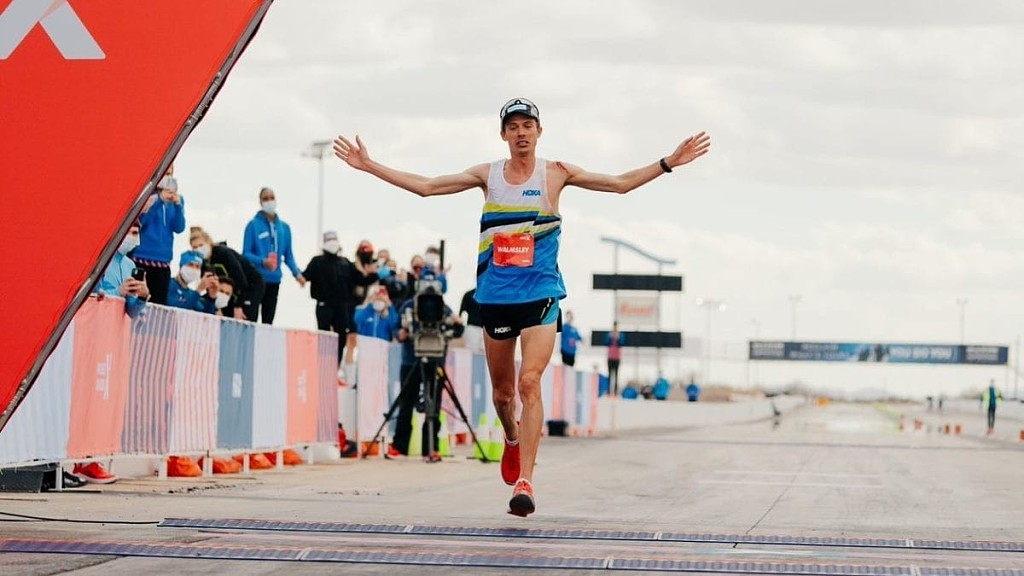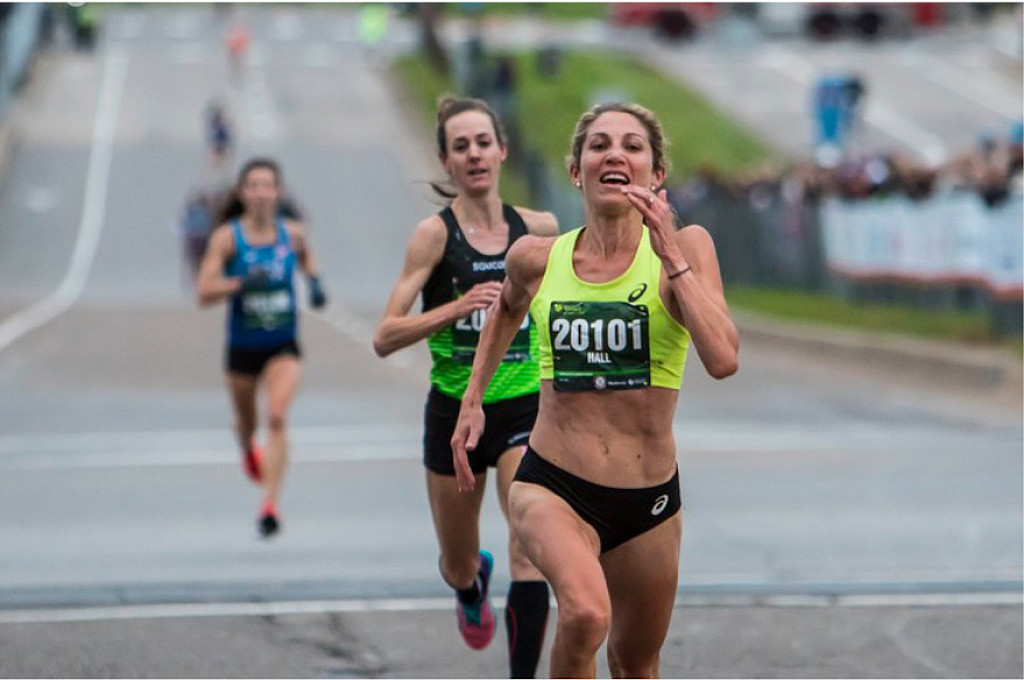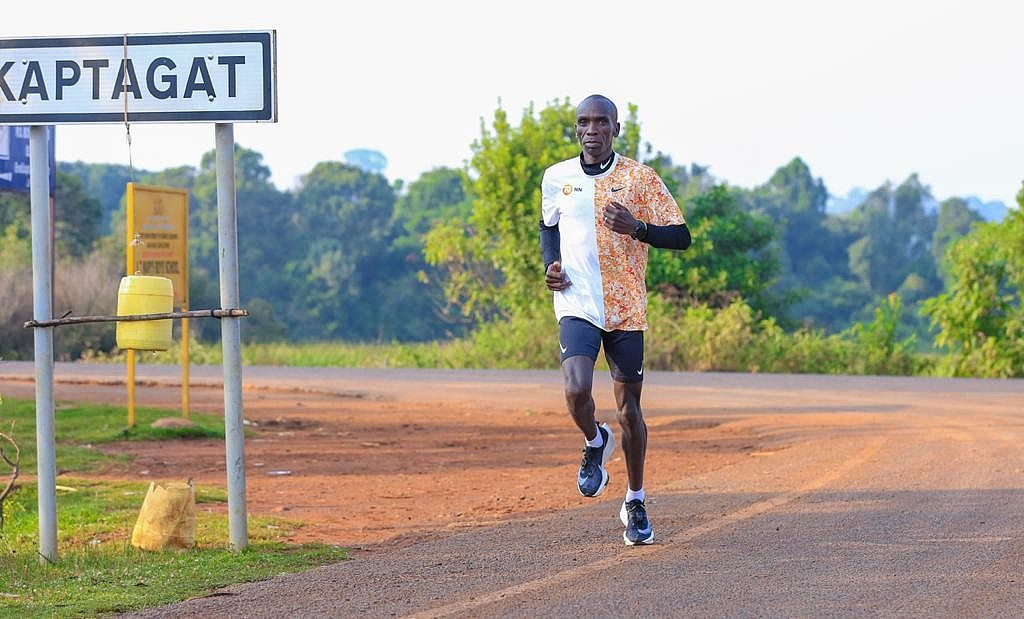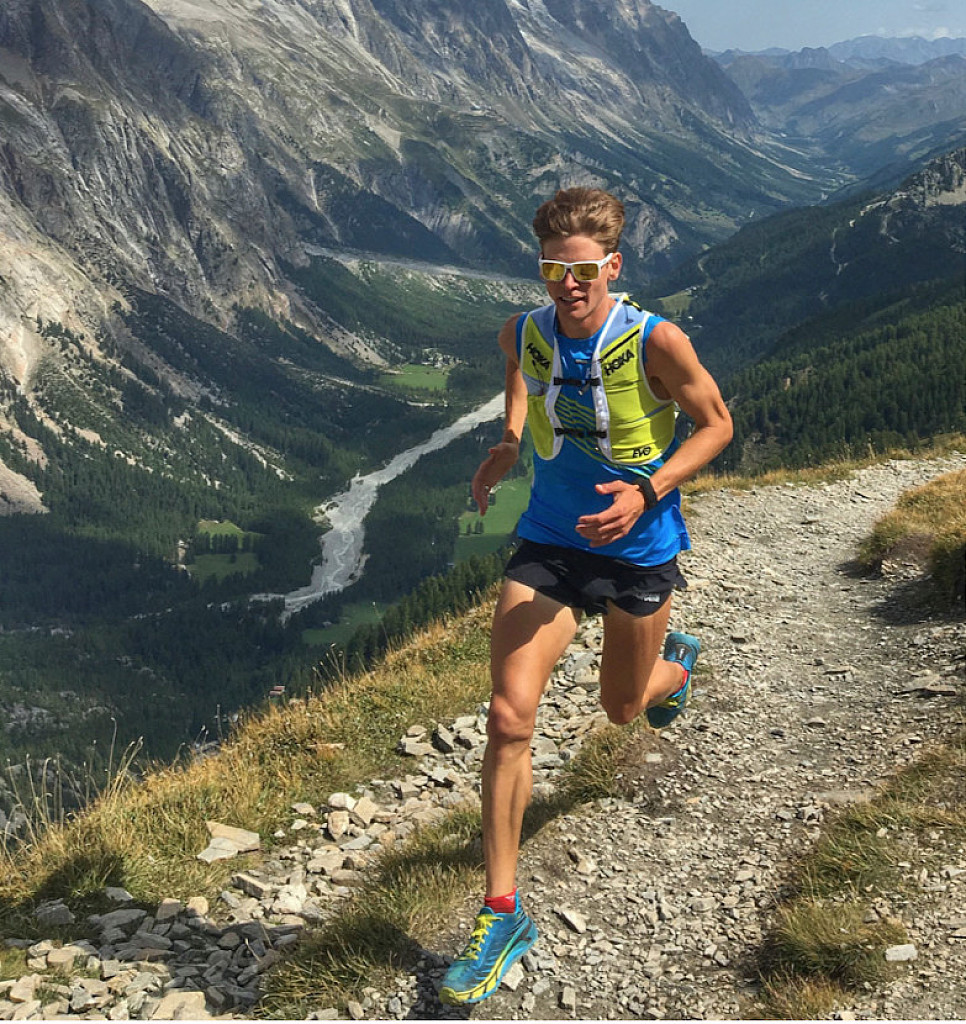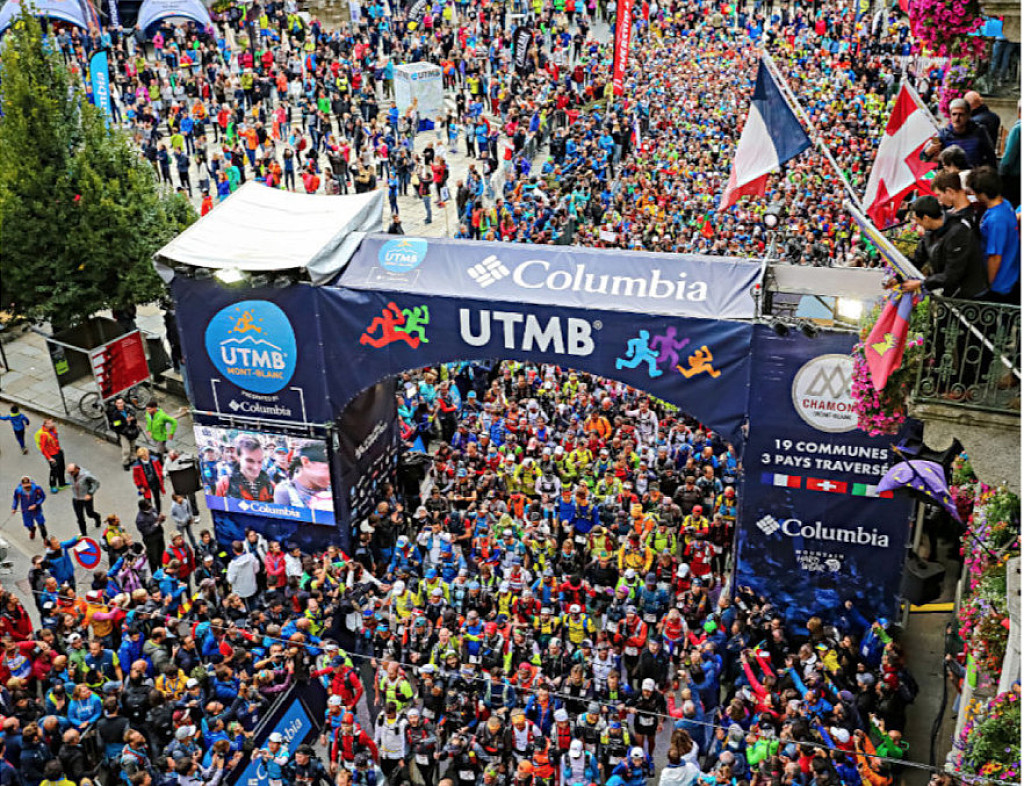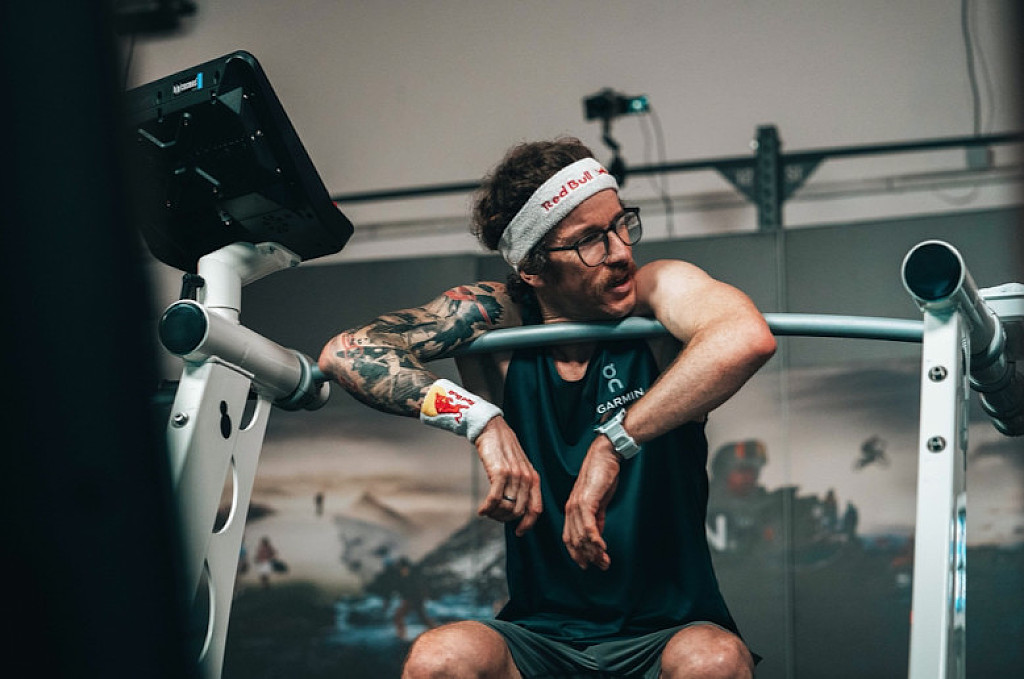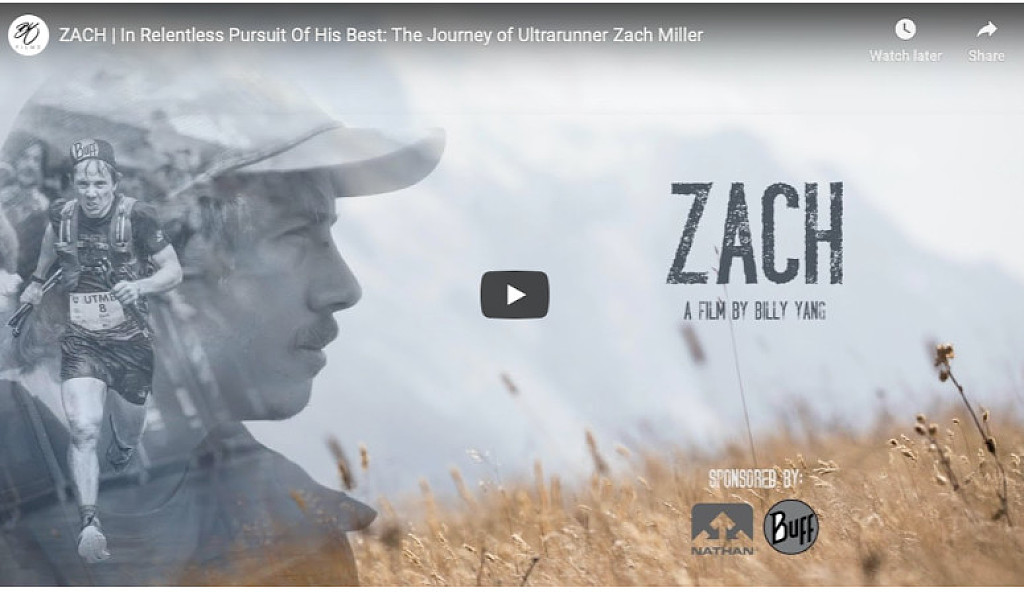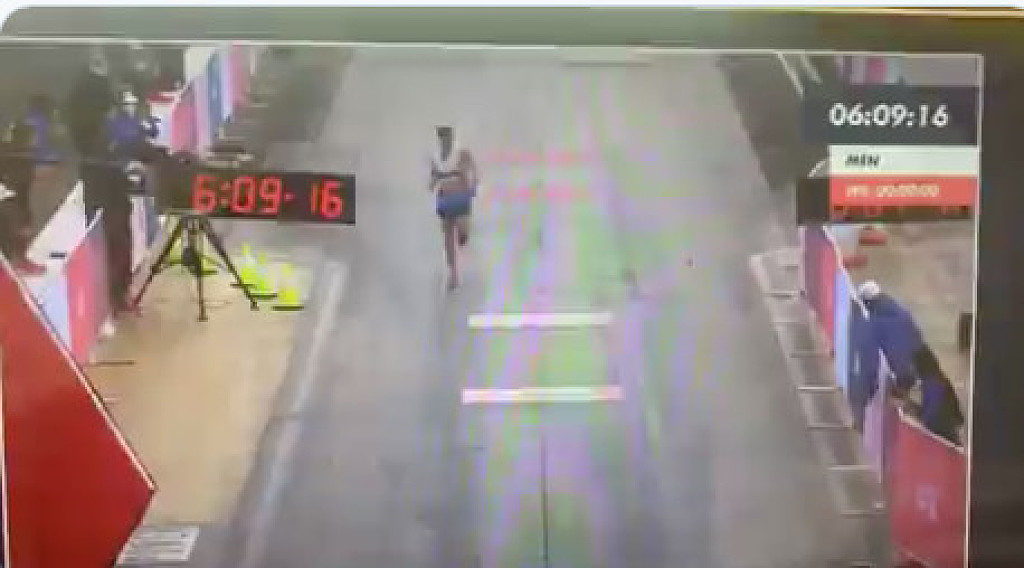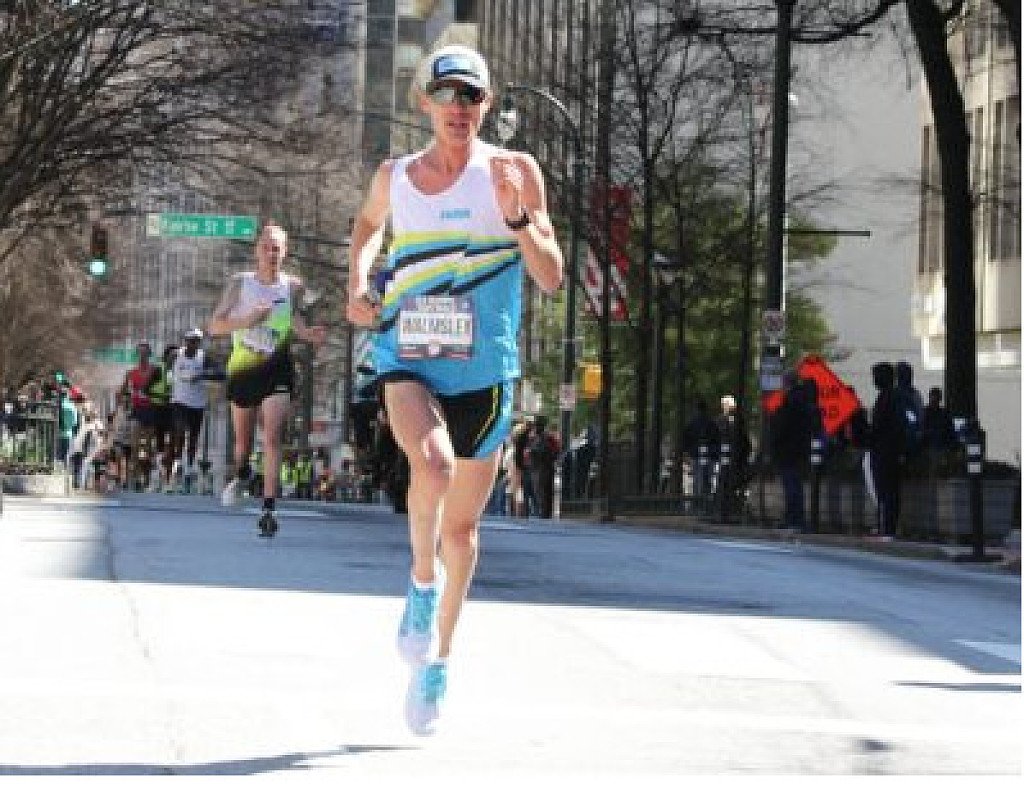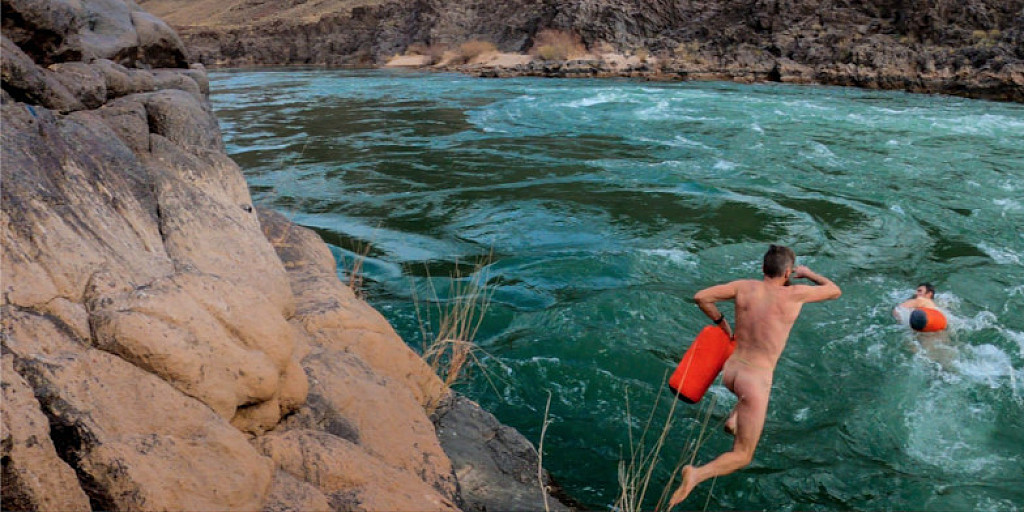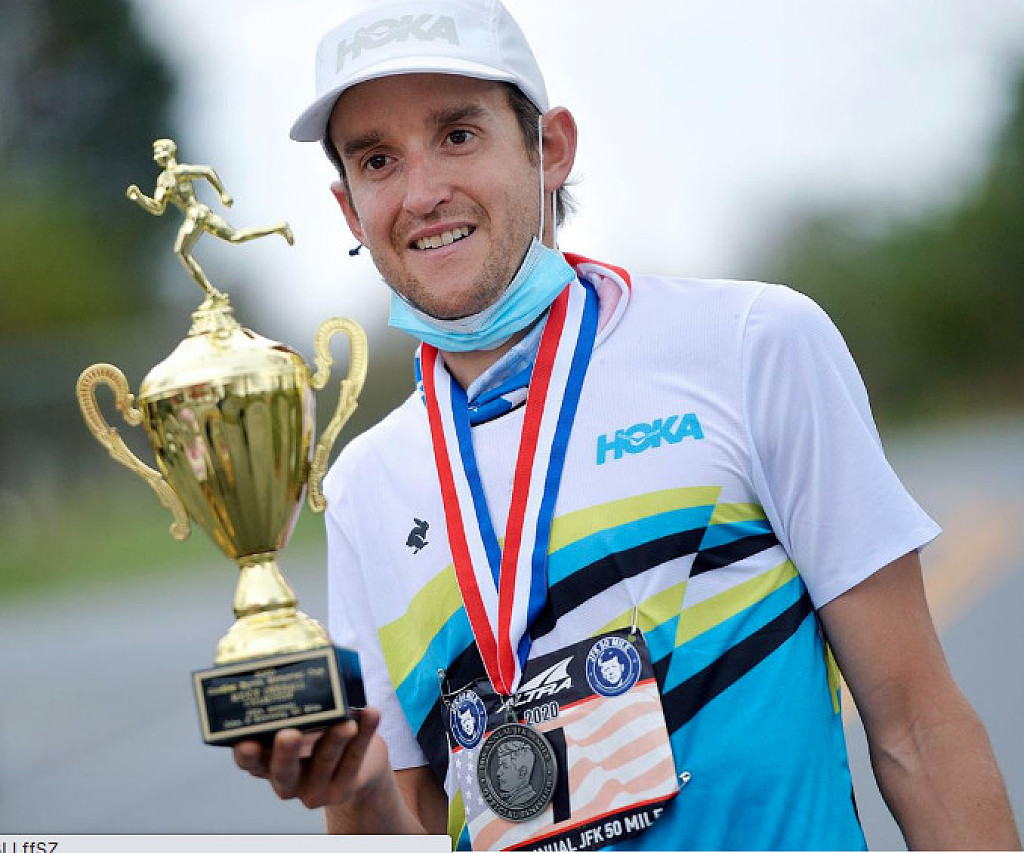Running News Daily
Running News Daily is edited by Bob Anderson. Send your news items to bob@mybestruns.com Advertising opportunities available. Train the Kenyan Way at KATA Kenya and Portugal owned and operated by Bob Anderson. Be sure to catch our movie A Long Run the movie KATA Running Camps and KATA Potato Farms - 31 now open in Kenya! https://kata.ke/
Index to Daily Posts · Sign Up For Updates · Run The World Feed
Articles tagged #Jim Walmsley
Today's Running News
Americans Jim Walmsley and Katie Schide Win Trail Running World Championship Titles
Canfranc, Spain — September 27, 2025. It was a historic day for U.S. trail running in the Pyrenees as Jim Walmsley and Katie Schide stormed to victory in the Long Trail race at the 2025 World Mountain and Trail Running Championships. Both dominated the grueling 50.9-mile course that packed in nearly 17,750 feet of elevation gain and loss across technical, mountainous terrain.
Walmsley’s Men’s Triumph
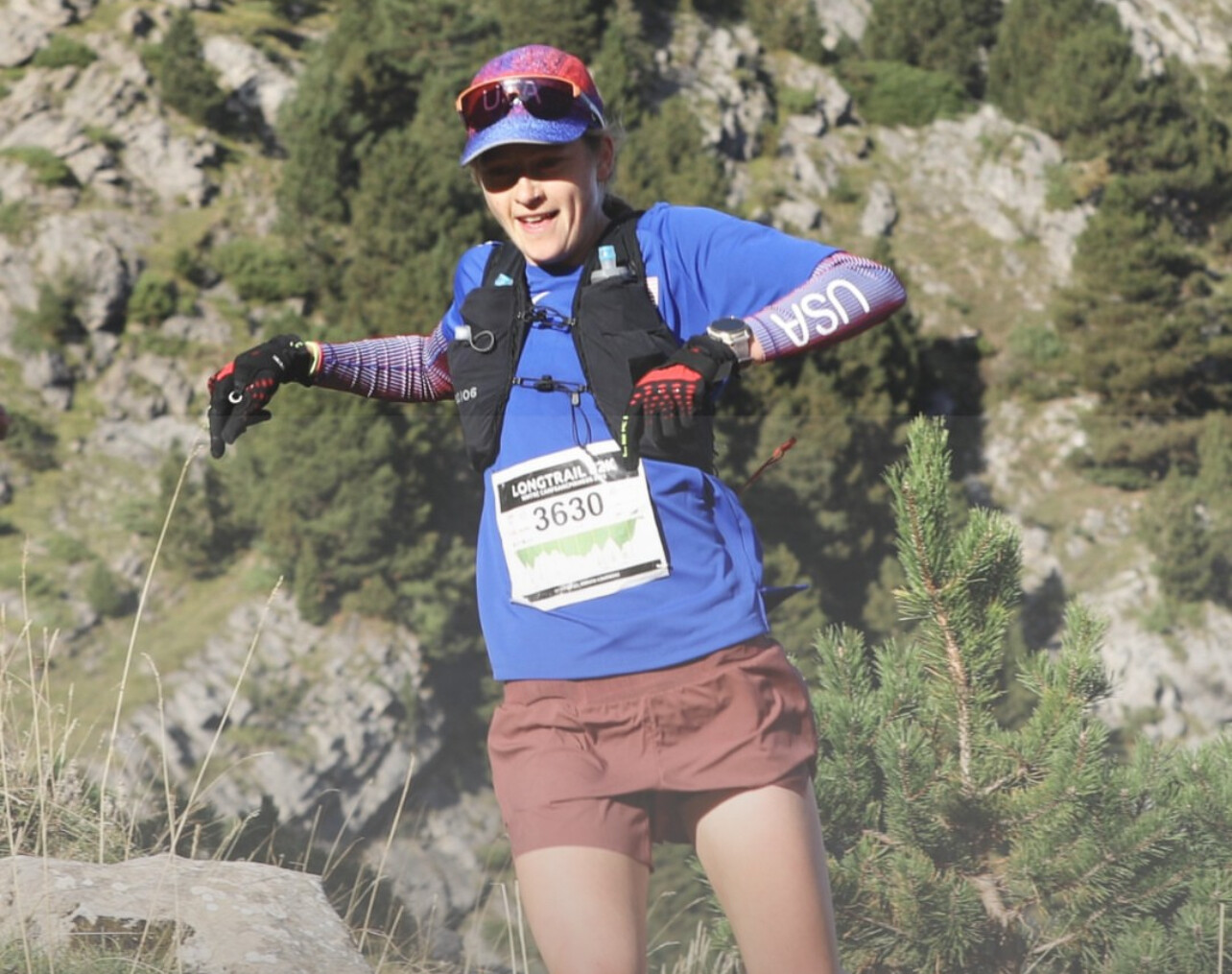
Walmsley, already celebrated as one of the best ultra runners of his generation, played his cards perfectly. After running with France’s Benjamin Roubiol and Louison Coiffet through the opening stages, he surged clear just past 47 km. By the 70 km mark he had carved out a commanding lead and never looked back.
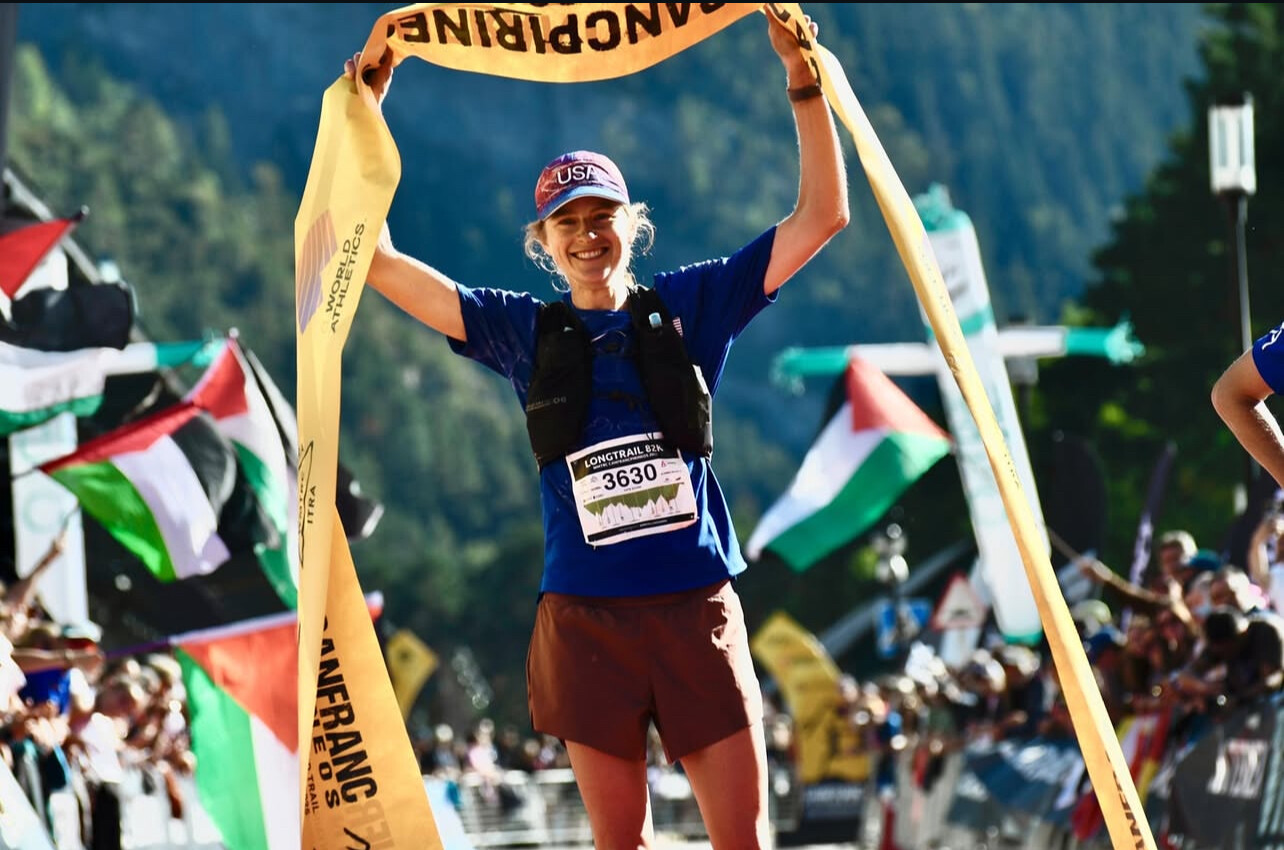
He broke the tape in 8:35:11, more than ten minutes ahead of Roubiol and Coiffet, who shared silver in 8:46:05. For Walmsley, who became the first American man to win UTMB in 2023, this victory further cements his legacy as the standard-bearer for U.S. trail and ultra running.
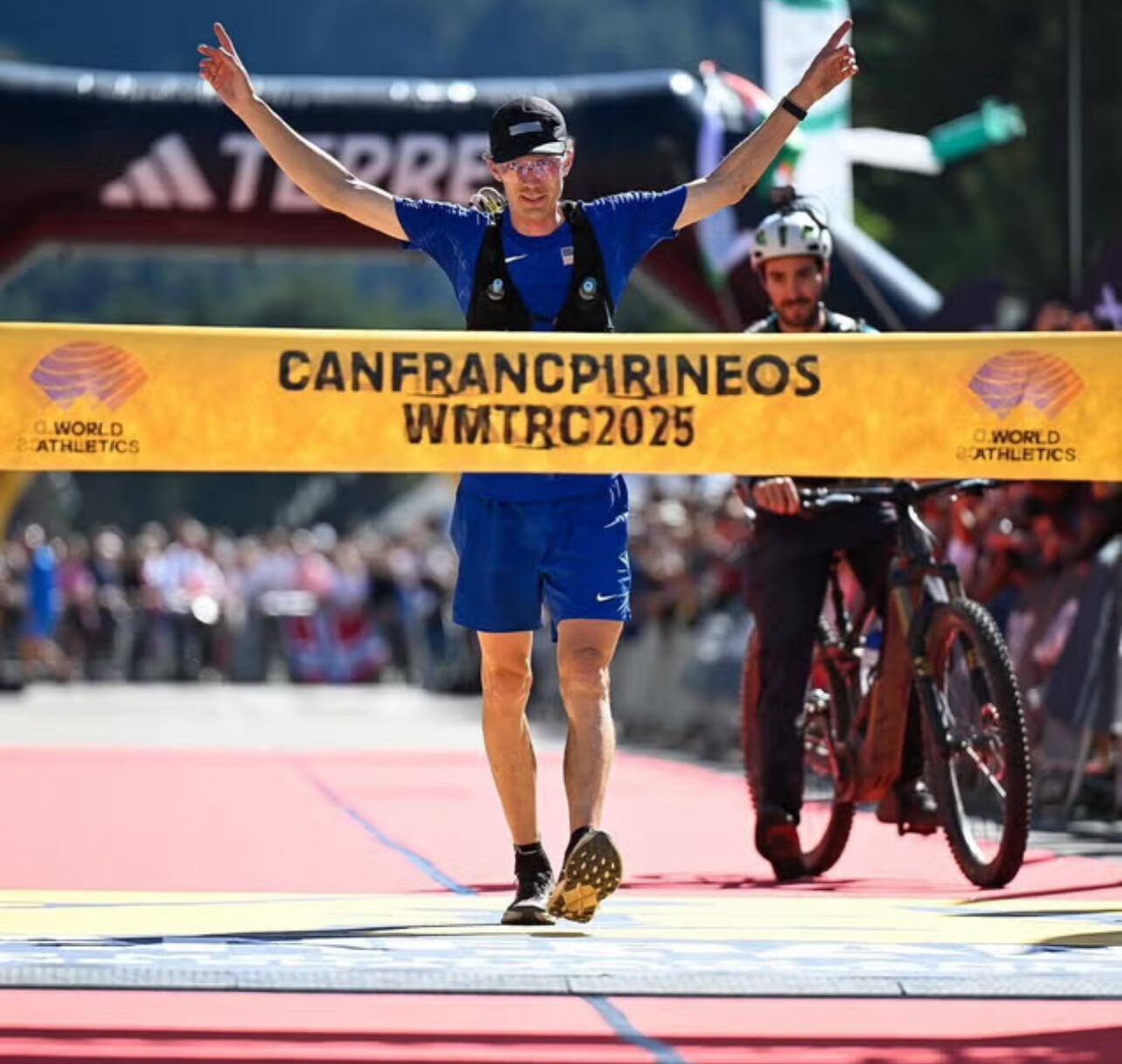
Schide’s Commanding Performance
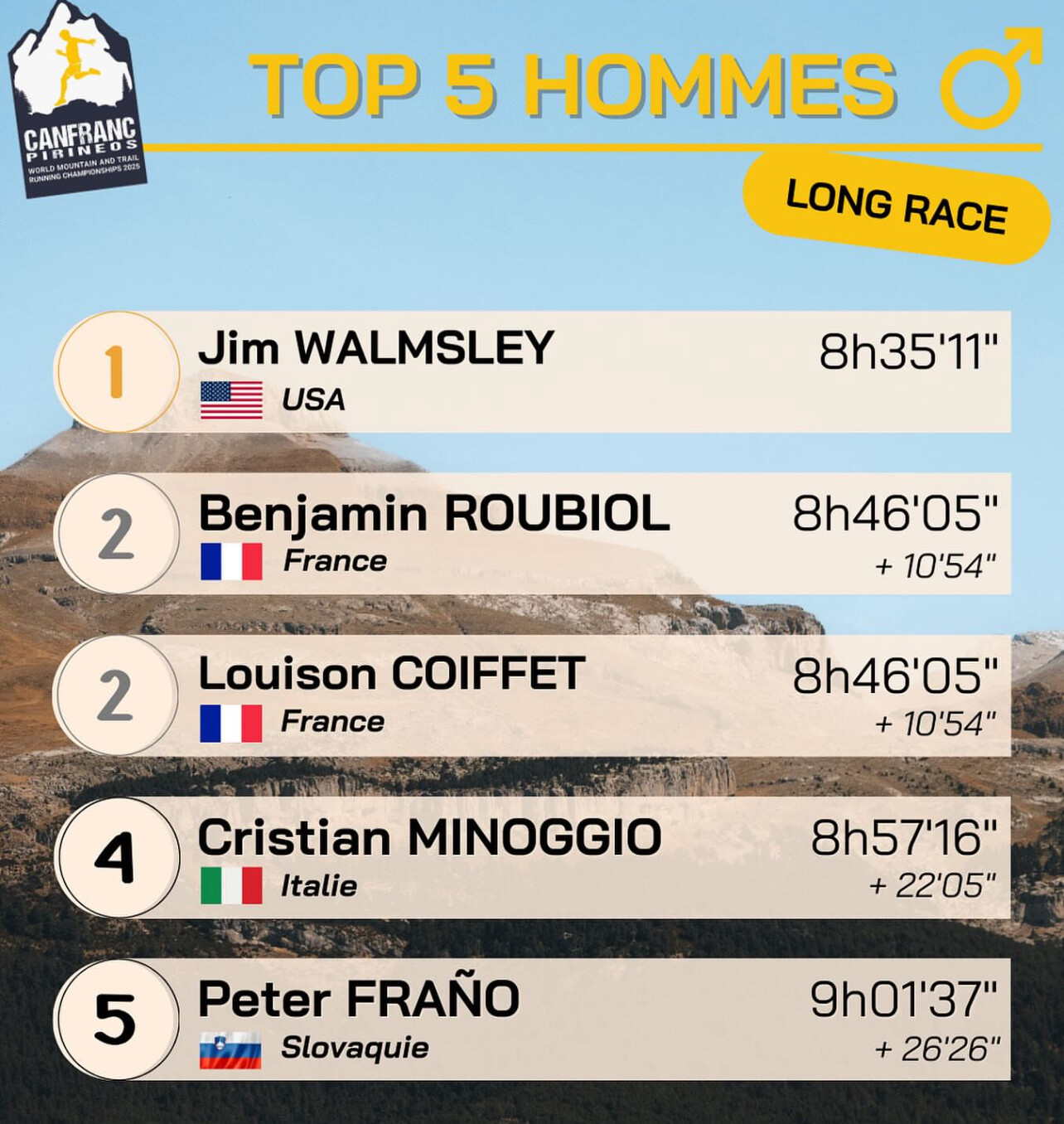
On the women’s side, Katie Schide delivered a masterclass in front-running. She built a gap of 38 seconds within the first 4 km, stretched it to five minutes by 25 km, and by the halfway point was nearly 20 minutes ahead of her nearest rival.
Schide crossed the finish in 9:57:59, winning by more than 25 minutes. Already a champion of UTMB, Hardrock, and Western States, her latest triumph adds a world title to a résumé that ranks among the most impressive in the sport.
A Landmark for U.S. Trail Running
Together, Walmsley and Schide showcased American dominance on one of the world’s toughest stages. Their wins highlight not only physical endurance and technical skill but also tactical brilliance and unwavering mental strength.
For fans and fellow athletes alike, their victories in the Pyrenees are a reminder of what’s possible when preparation meets opportunity on the world stage.
by Boris Baron
Login to leave a comment
Ludo Pommeret and Katie Schide Dominate a Gritty 2025 Hardrock 100
The 2025 Hardrock 100 delivered everything the ultra-trail world expects from one of the sport’s most iconic races—grit, altitude, heartbreak, and triumph. At the heart of it all, France’s Ludovic “Ludo” Pommeret successfully defended his title, while American ultra star Katie Schide shattered the women’s course record.
Pommeret Goes Back-to-Back
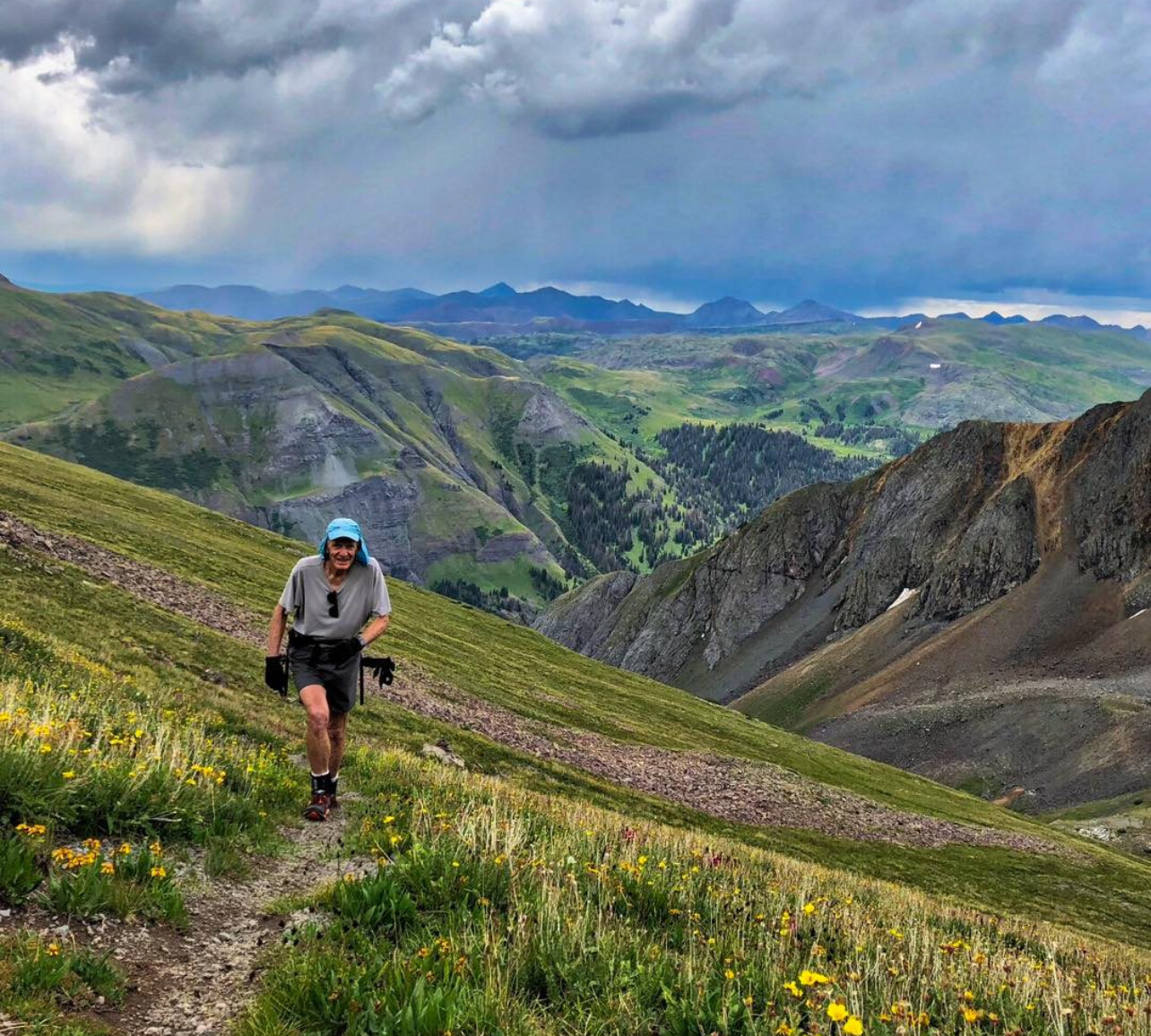
For the second year in a row, the 49-year-old Pommeret conquered the brutal 102.5-mile loop through Colorado’s San Juan Mountains, finishing in 22:21:55—the fifth-fastest time in race history. Battling thin air, smoky conditions from nearby wildfires, and rugged terrain with over 33,000 feet of elevation gain, Pommeret executed a masterclass in pacing.
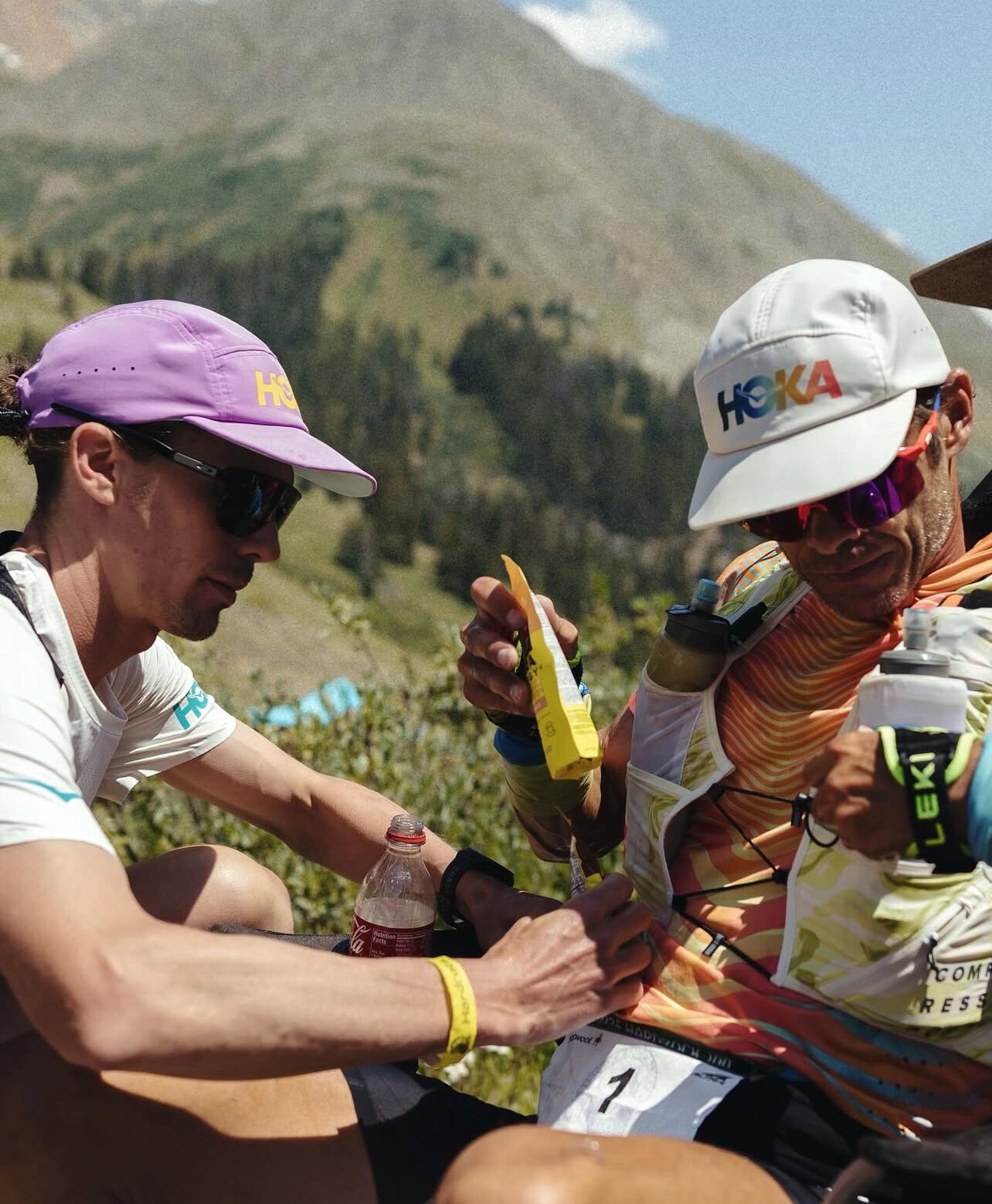
Starting conservatively on the climbs, he surged on the descents, aided by elite pacers Jim Walmsleyand Vincent Bouillard. By dawn, he had extended his lead and cruised into Silverton well under the 48-hour cutoff, earning another coveted kiss of the Hardrock finish-line rock.
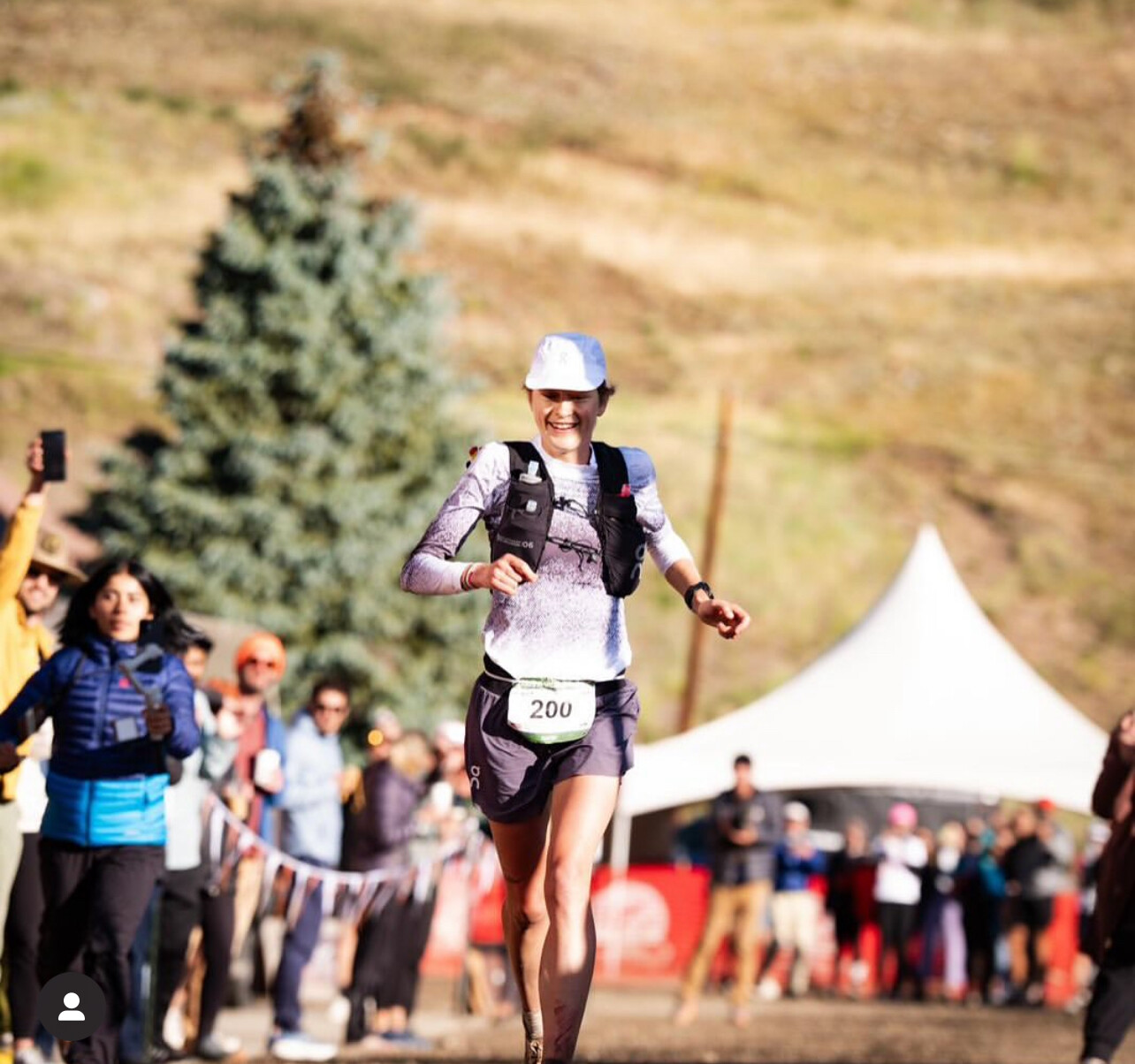
The men’s podium was a French sweep: Mathieu Blanchard placed second in 23:44, followed by Germain Grangier in 24:04.
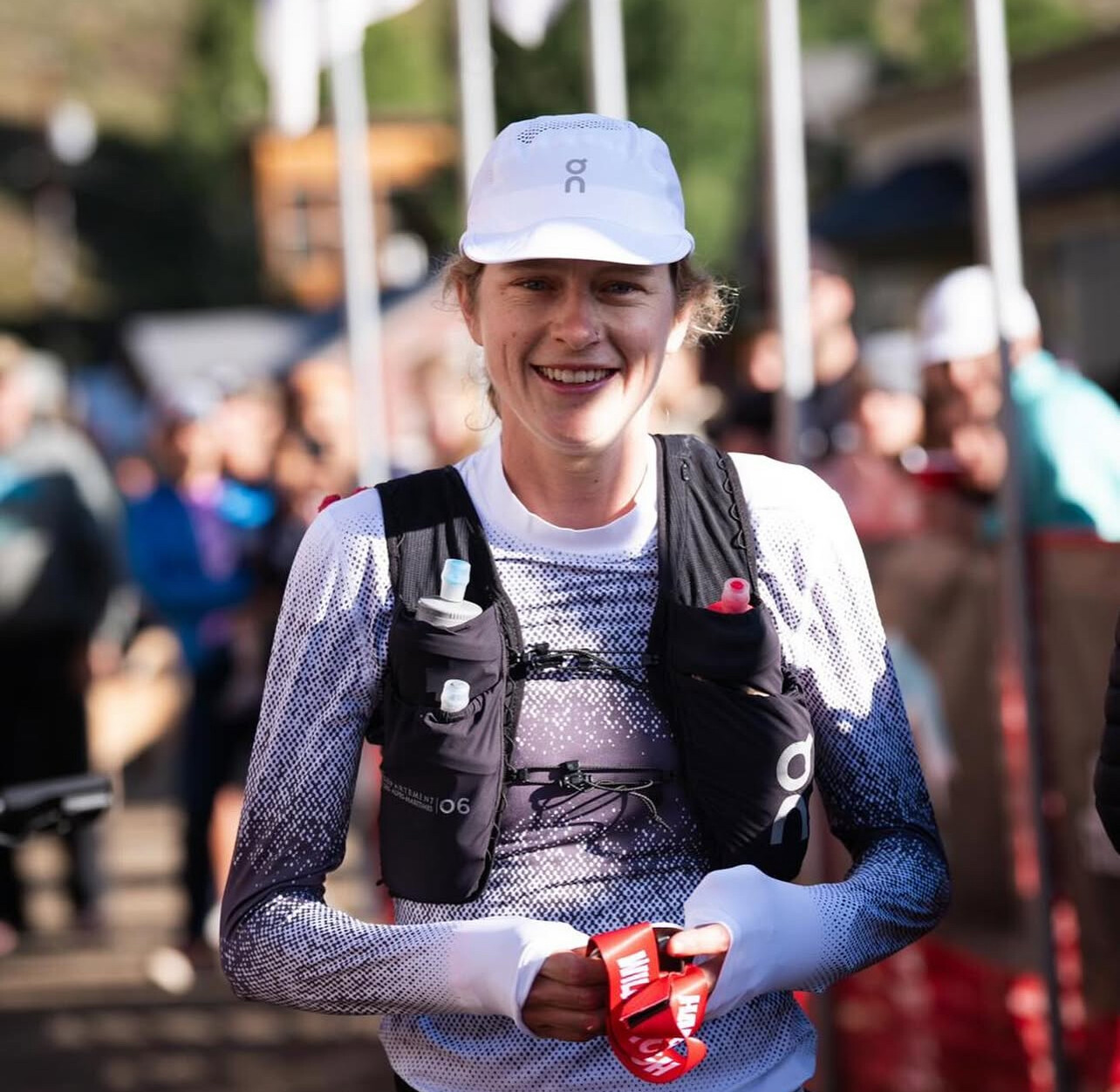
“I was worried about the smoke early on,” Pommeret said afterward, “but the final miles were magic. I even walked the last climb to take it all in.”
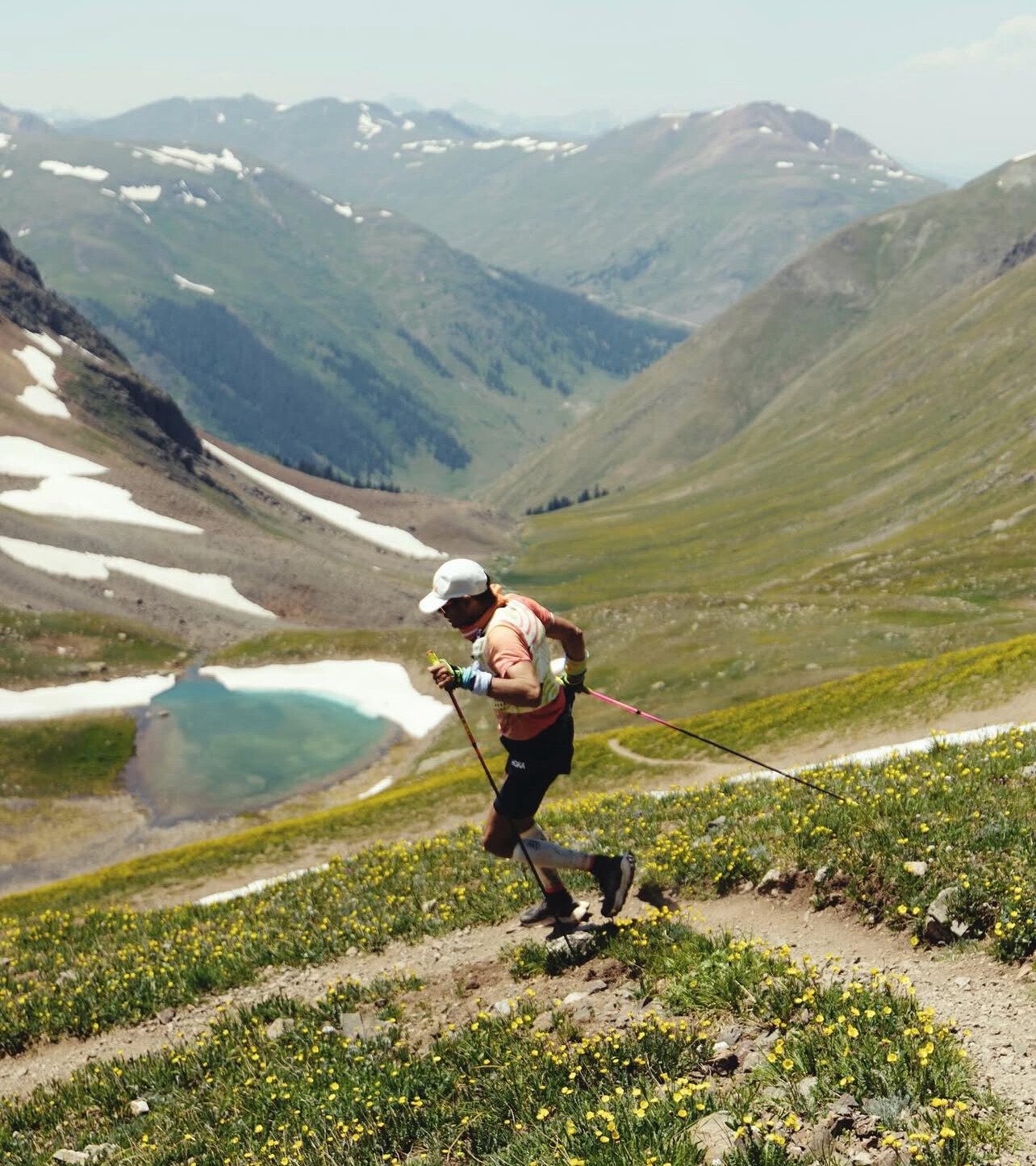
Schide Smashes Course Record
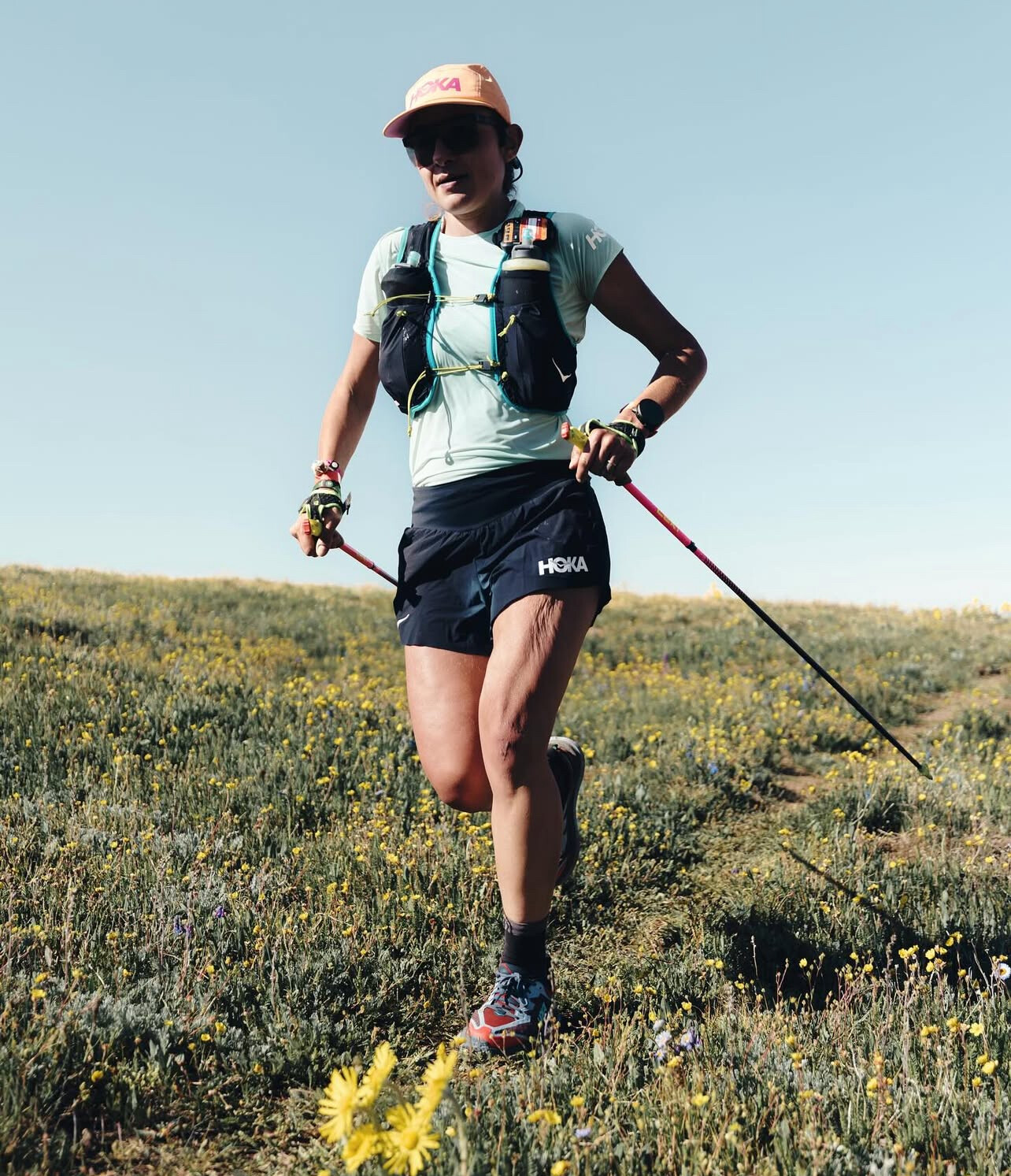
In the women’s race, Katie Schide delivered one of the most commanding performances in Hardrock history, crossing the finish in 25:50—the fastest counterclockwise time ever on this course. Her effort redefined what’s possible on one of the toughest 100-milers in the world, solidifying her place among the sport’s elite.
A Somber Note
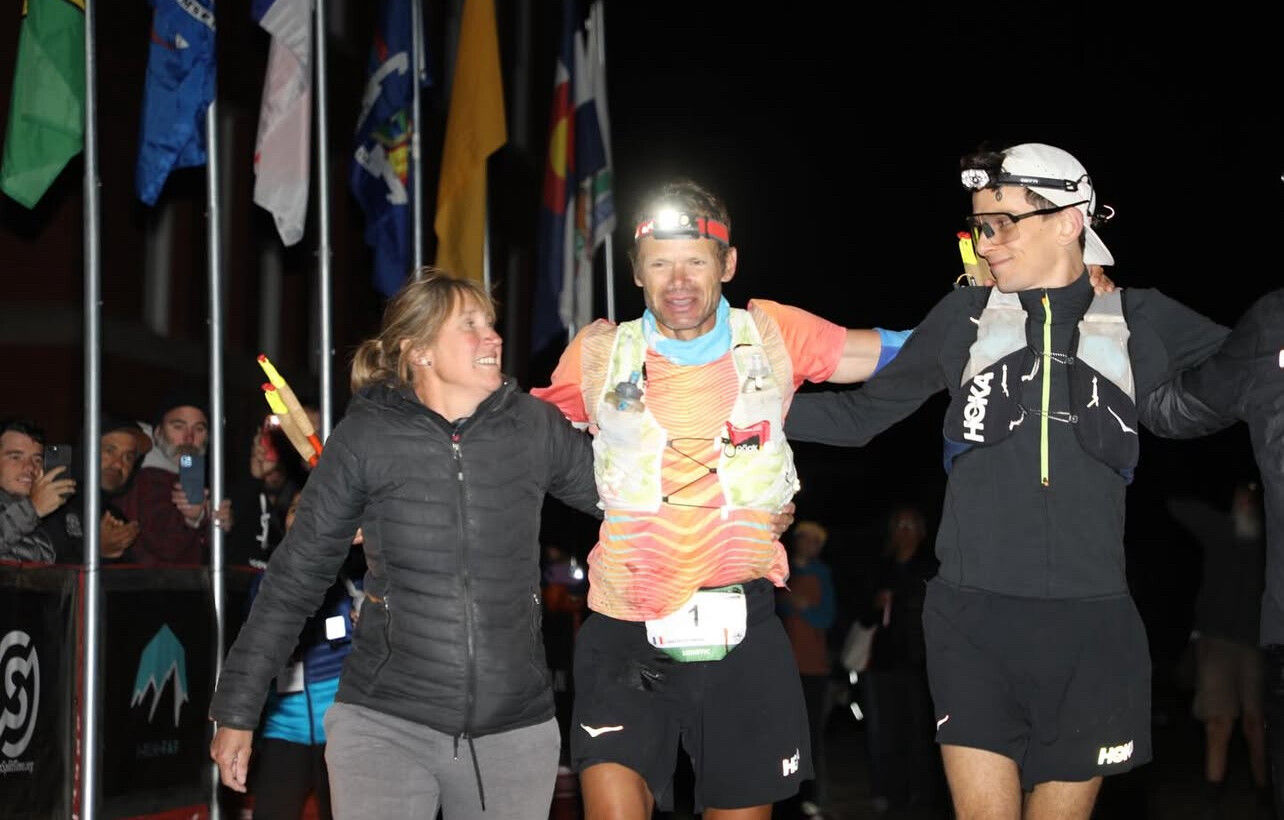
The celebration was tempered by tragedy. One of the 146 starters, 60-year-old Elaine Stypula, passed away early in the race. The trail community paused to honor her memory, a reminder of both the beauty and the inherent risk of this extreme pursuit.
Why This Race Matters
• Age is just a number: At nearly 50, Pommeret continues to perform at the highest level, adding another major title to a résumé that includes victories at UTMB (2016) and Diagonale des Fous (2021).
• Trail’s toughest test: With extreme elevation, altitude averaging over 11,000 feet, and no room for error, Hardrock remains a crucible for the toughest athletes on Earth.
• Global competition: With a French men’s podium and an American record-breaker, the international caliber of this year’s race underscored its global significance.
2025 Hardrock 100 Key Results
|
Category |
Winner |
Time |
|
Men’s Champion |
Ludovic Pommeret |
22:21:55 |
|
Women’s Champion |
Katie Schide |
25:50 (course record) |
|
Men’s 2nd |
Mathieu Blanchard |
23:44 |
|
Men’s 3rd |
Germain Grangier |
24:04 |
|
|
|
|
With record-breaking performances and powerful moments of perseverance, the 2025 Hardrock 100 once again proved why it’s one of the most respected races in the world of ultrarunning.
by Boris Baron
Login to leave a comment
Hardrock 100
100-mile run with 33,050 feet of climb and 33,050 feet of descent for a total elevation change of 66,100 feet with an average elevation of 11,186 feet - low point 7,680 feet (Ouray) and high point 14,048 feet (Handies Peak). The run starts and ends in Silverton, Colorado and travels through the towns of Telluride, Ouray, and the ghost town...
more...Caleb Olson Stuns the Field with Breakthrough Win at the 2025 Western States 100
American ultra-trail runner Caleb Olson delivered a career-defining performance at the 2025 Western States Endurance Run, emerging as the surprise champion in what was billed as one of the most competitive editions in the race’s 52-year history.
The 29-year-old from Salt Lake City conquered the infamous 100-mile (161-kilometer) course through Northern California’s rugged Sierra Nevada mountains, finishing in 14 hours, 11 minutes, and 25 seconds—just two minutes shy of Jim Walmsley’s legendary course record set in 2019 (14:09:28). Olson’s time is now the second-fastest ever recorded at Western States.
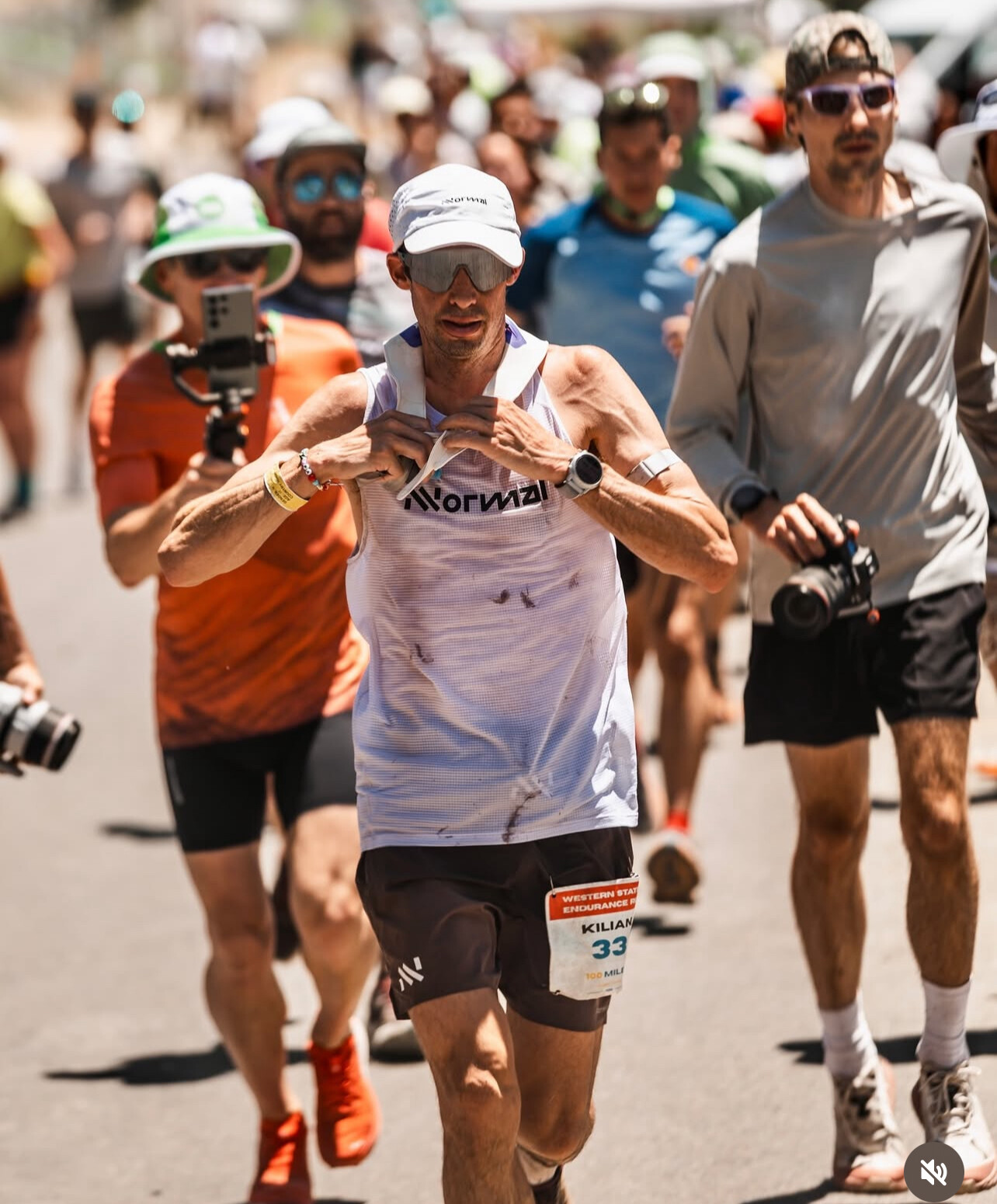
His win comes just a year after a strong fifth-place finish in 2024 and cements his place among the top ranks of global ultrarunning.
A Battle of Heat, Elevation, and Grit
The race began at 5:00 a.m. in Olympic Valley, with runners quickly climbing to the course’s highest point—2,600 meters (8,600 feet)—before descending into the heat-scorched canyons. Snowfields in the early miles gave way to punishing heat, as temperatures soared to 104°F (40°C) in exposed sections of the trail.
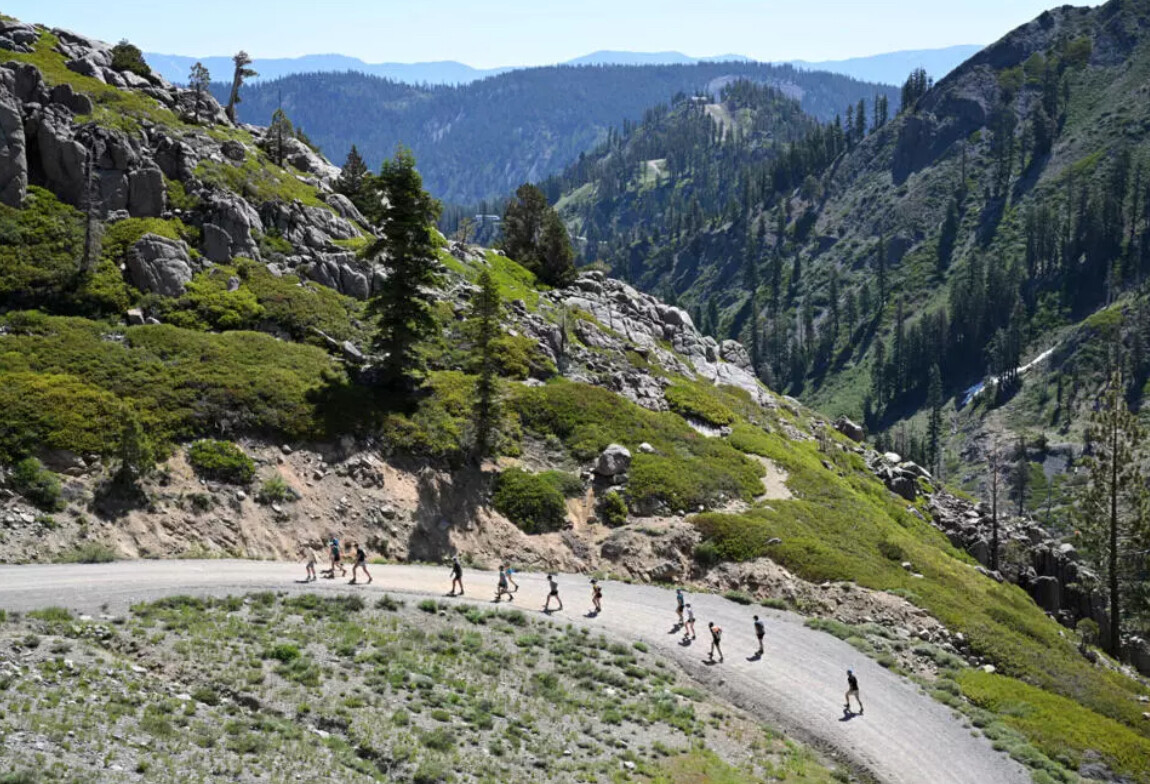
Despite the brutal conditions, approximately 15 elite athletes crested the high point together, setting the stage for a tactical and attritional race. Olson surged to the front midway, clocking an average pace near 12 kilometers per hour and never relinquished his lead.
Elite Field Delivers Drama
Close behind Olson was Chris Myers, who battled stride-for-stride with the eventual winner for much of the race before taking second in 14:17:39. It was a breakthrough performance for Myers, who has been steadily climbing the ultra ranks.
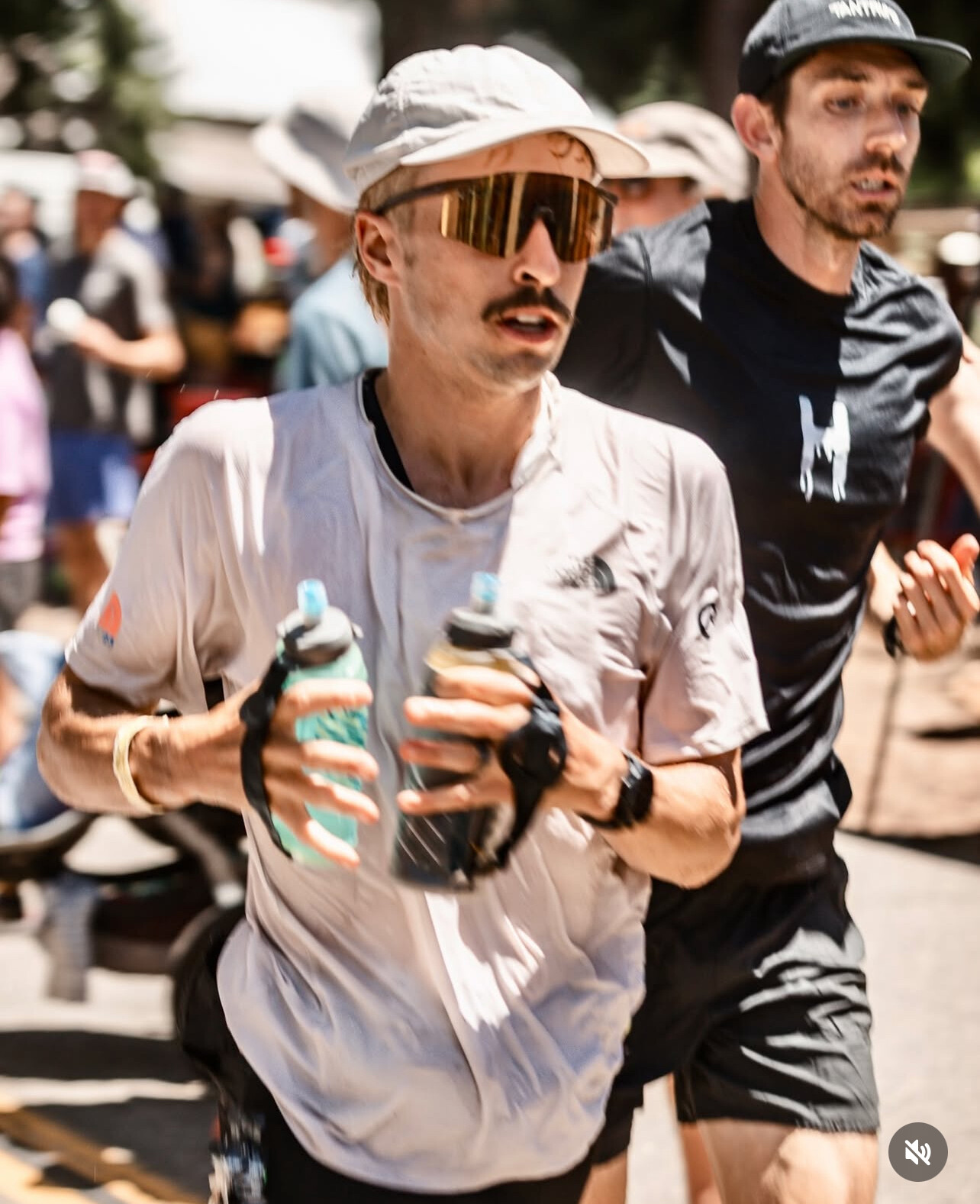
Spanish trail running legend Kilian Jornet, 37, finished third, matching his 2010 result. Returning to Western States for the first time since his win 14 years ago, Jornet hoped to test himself against a new generation on the sport’s fastest trails. Though renowned for his resilience in mountainous terrain, he struggled to match the frontrunners during the course’s hottest sections.
“Western States always finds your limit,” Jornet said post-race. “Today, that limit came earlier than I’d hoped.”
Rising Stars and Withdrawals
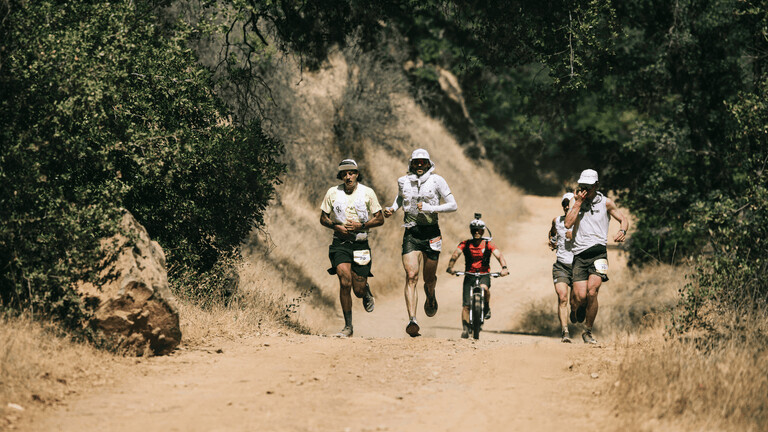
Among the elite field was David Roche, one of America’s most promising young ultrarunners, who was forced to withdraw after visibly struggling at the Foresthill aid station (mile 62). Roche had entered the race unbeaten in 100-mile events.
“I’ve never seen him in that kind of state,” said his father, Michael Roche, who was on hand to support him. “This race just takes everything out of you.”
Roche’s exit was a reminder that, even with perfect preparation, the Western States 100 is as much about survival as speed.
The Lottery of Dreams
Held annually since 1974, the Western States Endurance Run is more than a race—it’s a pilgrimage. With only 369 slots available, most runners enter via a lottery system with odds of just 0.04% for first-timers. Elite athletes can bypass the lottery by earning one of the coveted 30 Golden Ticketsawarded at select qualifying races each year.
For many, getting to the start line takes years of qualifying and persistence—making finishing the race an achievement in itself.
Olson’s Star Ascends
Before this landmark win, Caleb Olson was already on the radar of the ultra community. He had logged top-20 finishes at the “CCC”—a 100-kilometer race associated with the Ultra-Trail du Mont-Blanc series—and had demonstrated consistency in major trail events.
Saturday’s victory vaults him into the upper echelon of global ultrarunners and marks a generational shift in the sport.
“I’ve dreamed of this moment,” Olson said at the finish. “Today, everything came together—the training, the heat management, and the belief. This is why we run.”
2025 Western States results
Men
Saturday June 28, 2025 – 100.2 miles
Caleb Olson (USA) – 14:11:25
Chris Myers (USA) – 14:17:39
Kilian Jornet (SPA) – 14:19:22
Jeff Mogavero (USA) – 14:30:11
Dan Jones (NZL) – 14:36:17
by Boris Baron
Login to leave a comment
Western States 100
The Western States ® 100-Mile Endurance Run is the world’s oldest and most prestigious 100-mile trail race. Starting in Squaw Valley, California near the site of the 1960 Winter Olympics and ending 100.2 miles later in Auburn, California, Western States, in the decades since its inception in 1974, has come to represent one of the ultimate endurance tests in the...
more...How Trail Races Are Redefining the Running Boom
In recent years, the global running community has seen a dramatic shift in where and how people race. While traditional road marathons still draw massive crowds, trail races—once considered a niche segment—are experiencing a surge in popularity. From rugged mountain paths to dense forests and desert crossings, more runners are lacing up to compete off-road, seeking challenge, solitude, and a deeper connection to nature.
The Rise of Trail Runnimg
Trail running has grown rapidly in the past decade, but its momentum accelerated after the COVID-19 pandemic, when road races were canceled and people turned to nature for both fitness and sanity. What started as necessity turned into passion for many, and race organizers took note. Events that once attracted a few hundred now sell out in minutes.
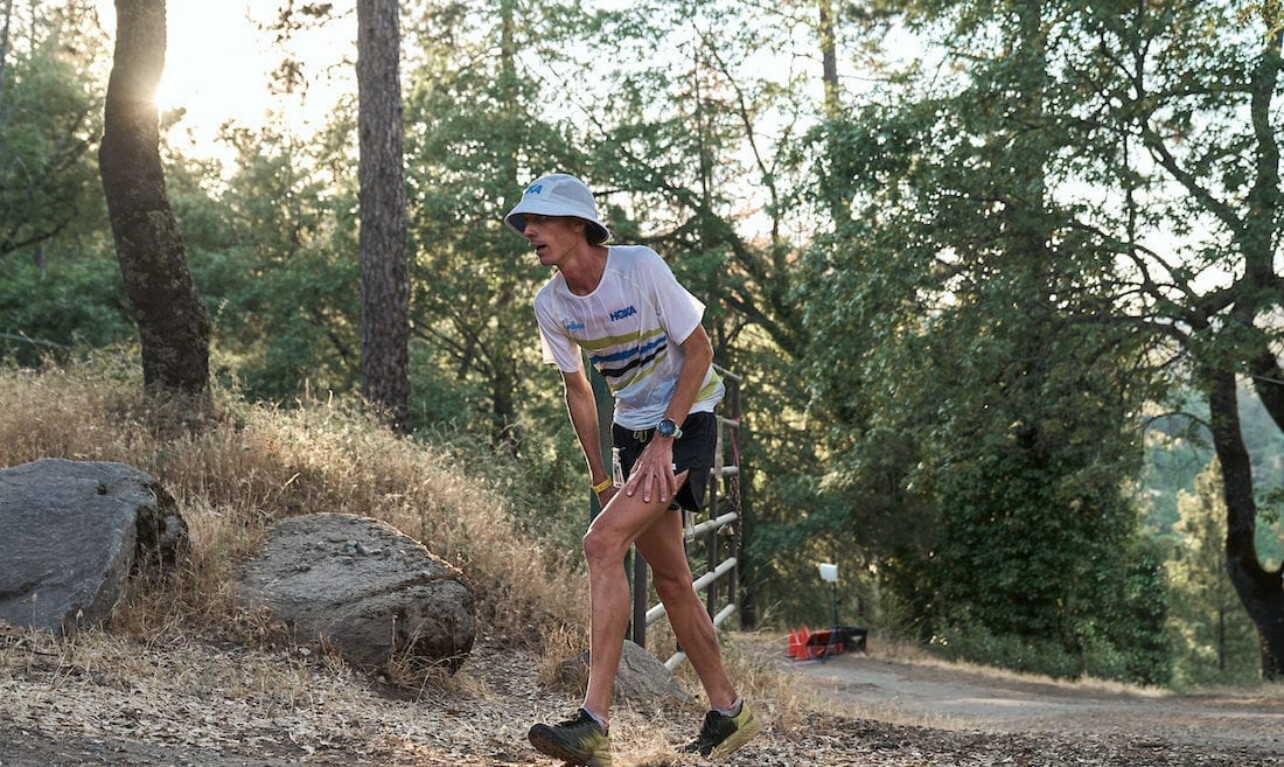
Today, races like the UTMB (Ultra-Trail du Mont-Blanc) in France, the Western States 100 in California, and the Ultra-Trail Cape Town in South Africa are globally recognized—drawing elites and amateur runners alike. These races offer not just distance and competition, but elevation, terrain variety, and breathtaking backdrops.
More Than a Race—A Journey
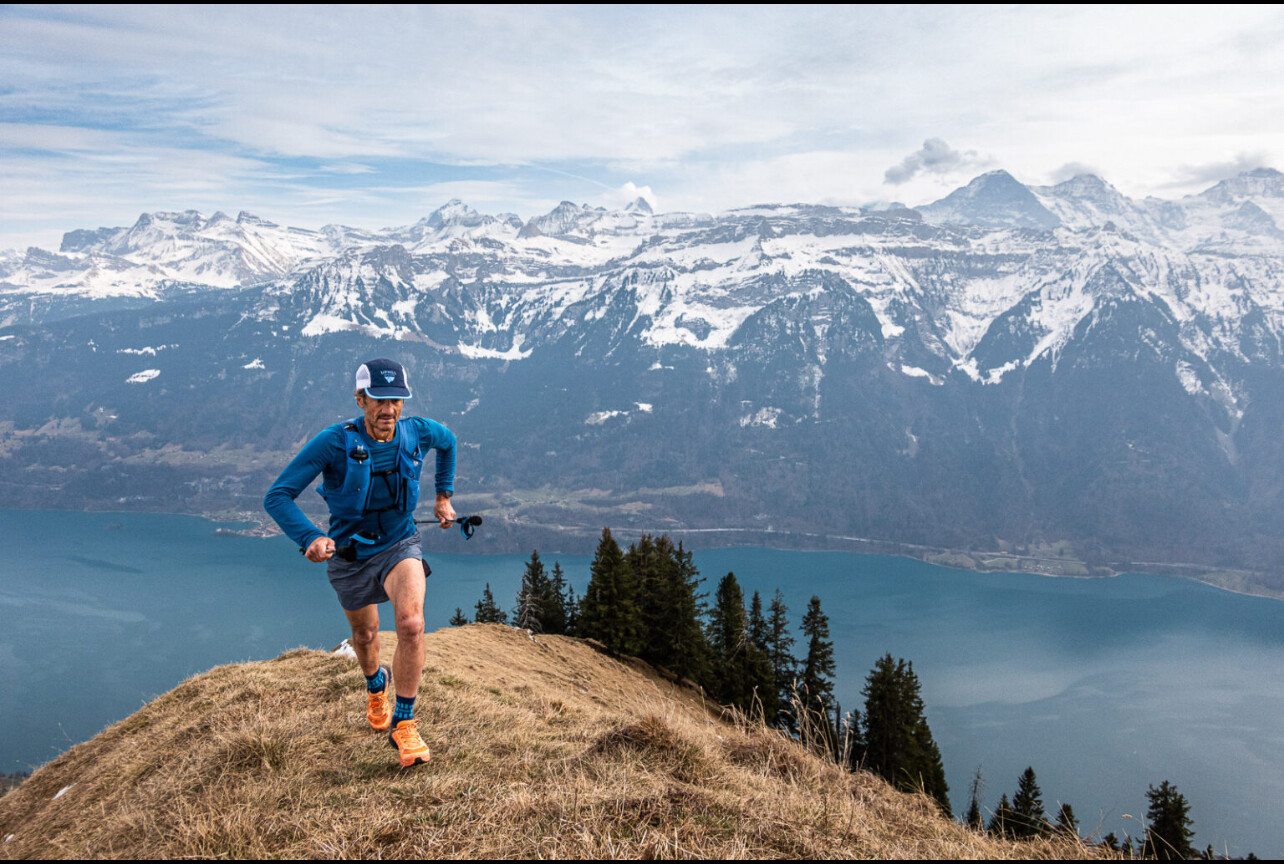
Unlike a typical 10K or marathon, trail races often require navigation, climbing, and mental fortitude. Weather and terrain can change quickly. Aid stations may be miles apart. But it’s exactly these demands that attract runners hungry for something deeper than just speed or medals.
“There’s something primal about running in the wilderness,” says 2023 UTMB finisher Sara Delgado. “It’s not just about pace—it’s about presence.”
Elite Trail Runners on the Rise
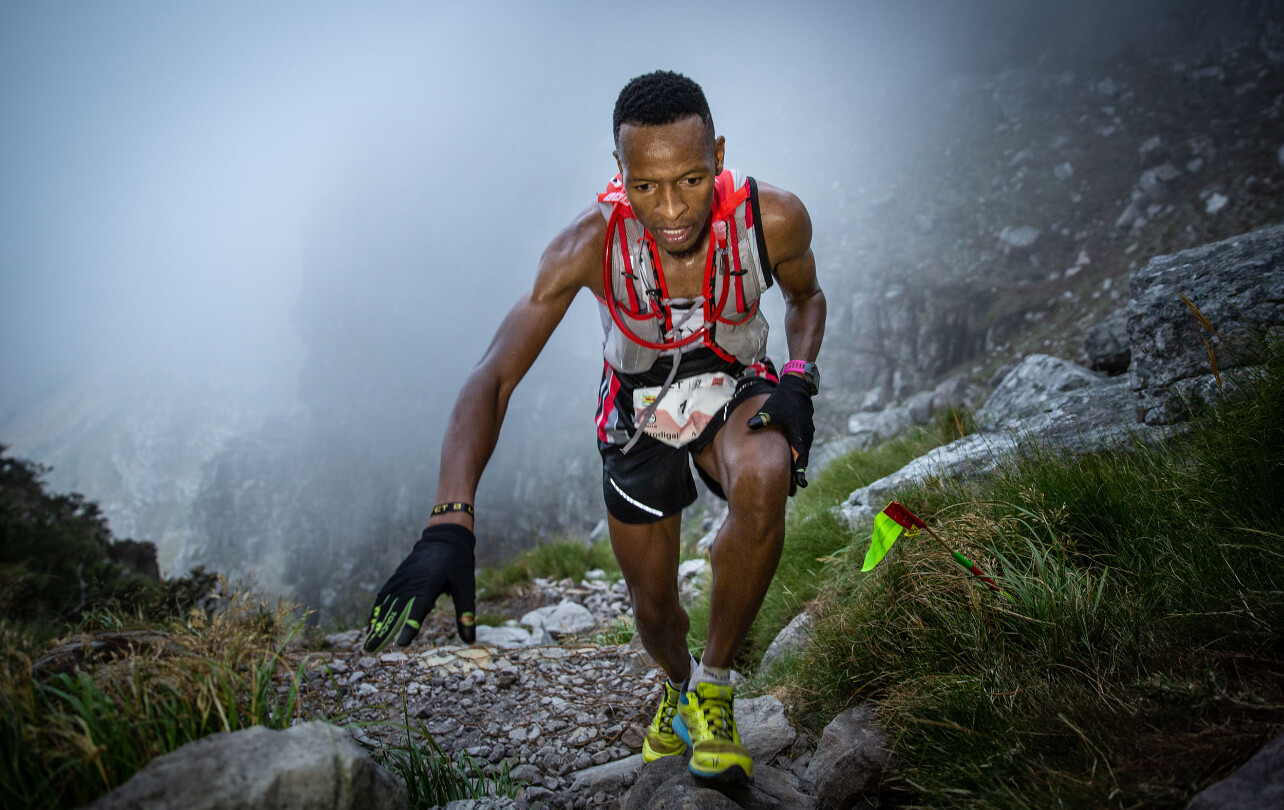
Top road racers are taking notice too. Marathoners like Jim Walmsley and Kilian Jornet have made trail dominance a core part of their legacy. Meanwhile, athletes like Courtney Dauwalter are redefining what endurance looks like, regularly winning 100-mile races overall—not just in the women’s field.
Sponsors have followed the talent. Major brands are investing in trail running gear, shoes, and media coverage, making the sport more visible and viable for elite athletes and growing its appeal for weekend warriors.
Global Appeal
From Portugal’s Douro Valley to the jungles of Costa Rica and the peaks of Japan’s Alps, trail races are being launched in every corner of the world. Many combine local culture with intense landscapes, turning these events into destination experiences.
Travel-based trail running adventures—3-day stage races, run-and-yoga retreats, and culinary trail tours—are also gaining traction. It’s no longer just a race, but a way to see the world, one footstep at a time.
What This Means for the Future
Trail running is redefining the running boom by offering what many road races cannot: quiet, challenge, authenticity, and unfiltered connection to the earth. As the sport continues to grow, it’s likely we’ll see more hybrid athletes, crossover races, and increased visibility across the media.
The road will always have its place, but for a growing number of runners, the real race begins where the pavement ends.
by Boris Baron
Login to leave a comment
American Katie Schide Shatters Courtney Dauwalter’s Course Record to Win UTMB
She’s now the third woman to win both Western States and UTMB in the same year.
Katie Schide is on a tear.
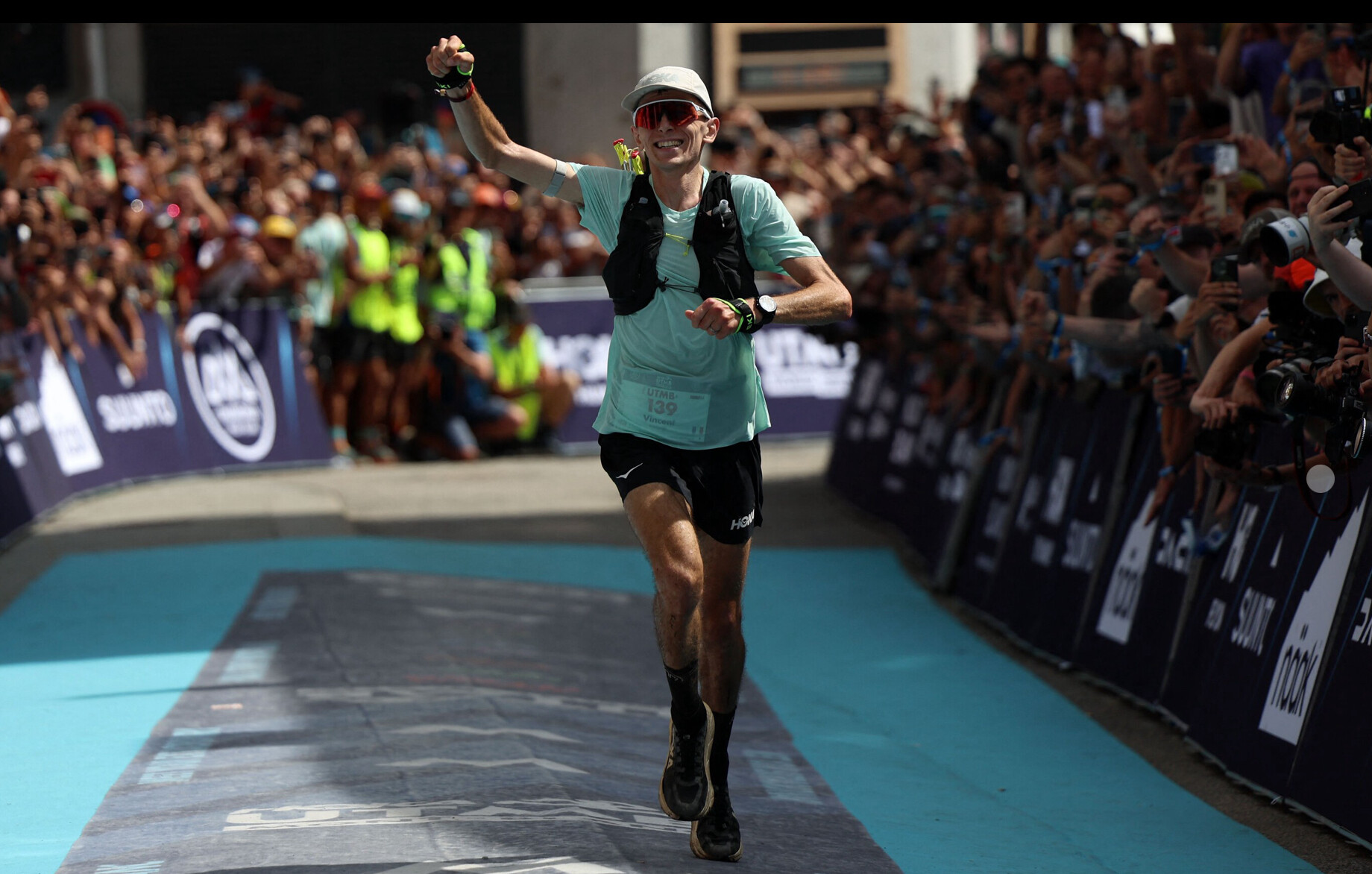
On Saturday, the American won the women’s race at the Ultra-Trail du Mont-Blanc (UTMB) in dominant fashion, finishing the 109-mile race in 22 hours, 9 minutes, and 31 seconds. Her time is 21 minutes faster than Courtney Dauwalter’s course record of 22:30:54 from 2021.
Schide, 32, is undefeated this year, winning the Canyons 100K in April and the prestigious Western States 100 in June.
Ruth Croft of New Zealand was 39 minutes behind Schide in second place (22:48:37). She passed Canada’s Marianne Hogan—who would finish third in 23:11:15—just after the 100-mile mark. Dauwalter, who won the Hardrock 100 on July 12, did not compete in this year’s edition.
In the men’s race, Vincent Bouillard of France was not favored to win, but he ultimately took the crown. He went to the lead after 48 miles and never relinquished it, crossing the finish line in Chamonix in 19:54:23. His compatriot, Baptiste Chassagne, was next to finish in 20:22:45, while Ecuador’s Joaquin Lopez placed third (20:26:22).
Last year’s champion, Jim Walmsley of the U.S., withdrew just after 50 miles because of a knee issue, according to a post on his Instagram story. He remains the only American man to win the race.
UTMB has been contested since 2003. The course—which slightly changes year-to-year—starts and ends in the French Alpine town of Chamonix and traverses through Italy and Switzerland along the way, covering over 30,000 feet of elevation gain.
This is Schide’s second time winning the event after taking top honors in 2022. Originally from Maine, Schide now trains in France and is sponsored by The North Face.
In the final 7 kilometers, a downhill section, she was over 20 minutes ahead of course record pace, but she started limping. The buffer, however, was enough, and by the end, the hitch in her stride had mostly dissipated.
Schide said in a post race interview on the UTMB broadcast that her main goal was to dip under the 22-hour barrier, followed by a secondary goal breaking Dauwalter’s time from 2021. Schide went out hard in the first half—like she did in 2022—but she said winning two years ago gave her some much-needed context.
“I think this race, I just went in more confident in myself and I wasn’t surprised that I was fast,” she said. “Whereas in 2022, I was kind of freaking out because I was like “Oh, I didn’t really mean to do that.’ But this time, I meant to do it, and I was just focused on trying not to die too hard at the end.”
Schide now joins Dauwalter (2023) and Nikki Kimball (2007) as the third woman to win both Western States and UTMB in the same year.
Login to leave a comment
UTMB Is Having a Golden Moment. But It’s Delicate.
After a year that included a maelstrom of controversy, the world’s most prominent ultra-trail running event has righted its path
“It felt like a golden era of trail running.”
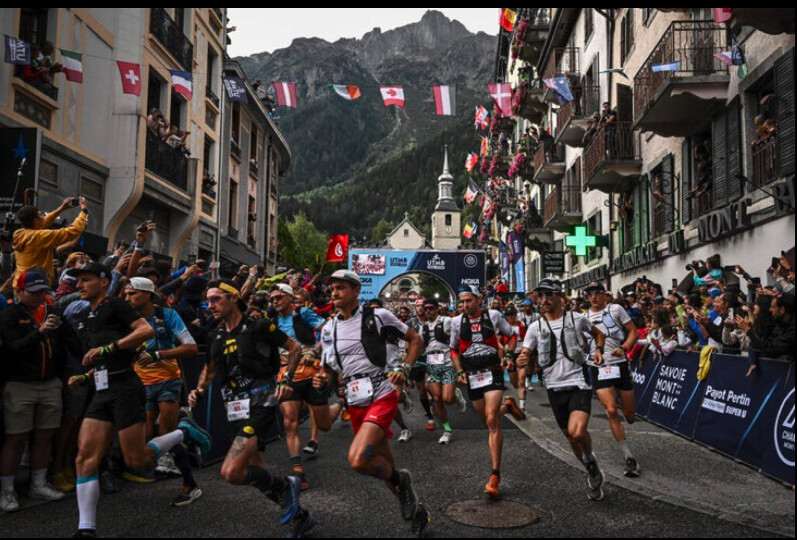
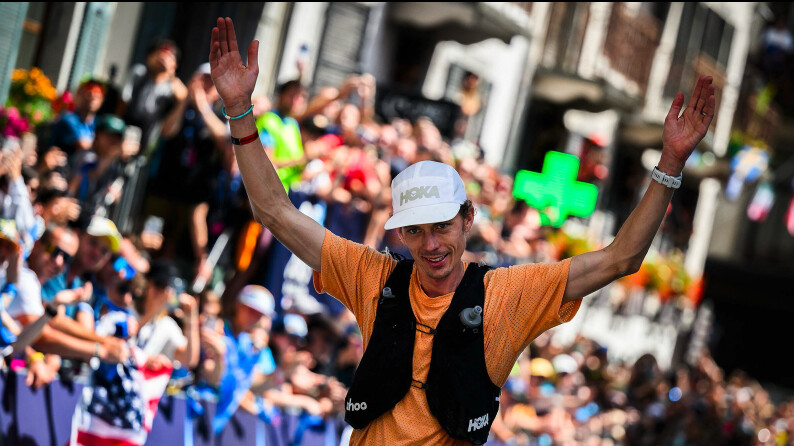
That quote came from Keith Byrne, a senior manager at The North Face and a UTMB live stream commentator for nearly a decade, who was talking about last summer’s UTMB World Series Finals in Chamonix, France.
The UTMB races during the last week of August last summer were, I thought, the most alluring in the event’s 20-year history.
After years of being frustrated by the course, American Jim Walmsley finally put it all together for a victorious lap around Mont Blanc. In doing so he became the first U.S. man to win the race, setting a course record of 19:37:43. He and his wife, Jess, had moved from Arizona to live full-time in France to make it happen. And then there was Colorado’s Courtney Dauwalter, who won the race handily in 23:29:14 to notch her third victory and continue the strong legacy of American women on the course. The win felt extra historic because it made her the first person to win Western States, Hardrock, and UTMB in the same year—arguably the three most legendary and competitive 100-mile events in the world, and she dominated each one.
The events came off without a hitch and included record crowds in Chamonix, plus a record 52 million more tuning into the livestream.
Throughout the fall and winter, harmony and happiness seemed to give way to chaos and discontent. But a year later, as the UTMB Mont Blanc weeklong festival of trail running kicks off on August 26, everything seems back to normal in Chamonix. What happened along the way is a tale of drama, perhaps both necessary and unnecessary, all of it culminating in course corrections by the multinational race series.
In short, what a year it has been for UTMB.
And now, hordes of nervous and excited runners from all corners of the globe are descending on Chamonix for this year’s UTMB Mont-Blanc races. Registration for UTMB World Series events is reportedly up about 35 percent year over year with even greater growth in interest for OCC, CCC and UTMB race lottery applications. There is more media coverage, more pre-race hype, and more excitement than ever before. More running brands are using the UTMB Mont Blanc week to showcase their new running gear with media events, brand activations, and fun runs. Even The Speed Project—although entirely unrelated to UTMB—chose Chamonix as the starting point of its latest so-called underground point-to-point relay race to try to catch some of the considerable buzz UTMB is generating.
So what happened? Did the UTMB organization do its due diligence and make amends with several significant changes in the spring? Was the angst and stirring of emotions just not as widely felt as the fervent bouts of Instagram activism claimed it to be? Have the participants and fans of the ultra-trail running world suffered amnesia or become ambivalent? Or is it all a sign of the race—and the entire sport of trail running—going through growing pains as it adjusts to the massive global participation surge, increased professionalism, and heightened sponsorship opportunities?
On the eve of another 106-mile lap around the Mont Blanc massif, I wanted to take a look at what happened and the current state of UTMB’s global race series that culminates here in Chamonix this week.
We caught a glimpse of what was to come shortly before UTMB last year, when the race organization announced the European car company Dacia as its new title sponsor. A fossil-fuel powered conglomerate didn’t sit well with some fans of the event, coming amid an era of widespread climate doom (even though the brand would be highlighting its new Spring EV at the UTMB race expo.) The Green Runners, an environmental running community co-founded by British trail running stars Damian Hall and Jasmin Paris, called it an act of “sportswashing” and released a petition calling on UTMB to denounce the partnership. (Hall even traveled all the way to Chamonix to deliver the petition in person.)
These grumblings of discontent and others that followed exploded into a social media firestorm shortly after UTMB. In October, it became public that UTMB had moved to launch a race in British Columbia, Canada, just as a similar event in the same location was struggling with permitting. A he-said, she-said back-and–forth left onlookers with whiplash. Then on December 1, UTMB livestream commentator Corrine Malcolm announced on Instagram that she had been fired and in late January, a leaked email from elite runners Kilian Jornet and Zach Miller to fellow athletes called for a boycott of the race series. All of it, jet fuel for social media algorithms.
“We’re at a turning point in trail running, but we can keep the core values if the community stands up,” the Pro Trail Runners Association secretary, Albert Jorquera, told me at the time.
In the midst of these dramas, I interviewed race founders Catherine and Michel Poletti over lunch at a Chamonix cafe. For nearly a decade now, I have met with the couple for candid conversations that helped frame online articles and magazine stories, and most recently for the book, The Race that Changed Running: The Inside Story of UTMB.
I plunged headlong into two articles with hopes of explaining it all. There was so much heat swirling around the UTMB stories, and so little light.
“The very thing that made ultrarunning so bonding was being torn apart by the community itself through social media,” said Topher Gaylord. A former elite runner who tied for second in the inaugural UTMB in 2003, Gaylord engineered UTMB’s first title sponsorship with The North Face and has been a close supporter of the Polletis for 20 years. “Some players are using social media to divide the community. That’s super disappointing.”
To me, it felt like the aggressive online activists were winning the day. Trail running suddenly seemed polarized, infected with the intertwined social media viruses of false indignation and close-mindedness. Twice, I deep-sixed my article drafts. Friends and editors convinced me they wouldn’t be read dispassionately. Who wants to be handed a fire extinguisher, when your goal is to torch the house?
Well, what a difference eight months can make. We now have some perspective and, with it, some answers.
Since its earliest days, UTMB’s volunteer founding committee believed in the values of the sport. The very first brochure produced for the race—a mere sheet of paper—featured a paragraph on values. In later years that statement became much more comprehensive, expanding to cover a wide range of topics and the race’s mission to support and protect them.
But maintaining those values in an organization that has gone from a singular race with a literal garden-shed office to a 43 global event series with a staff of more than 70 full-time employees is tricky at best. In an interview once, Michel Poletti paused, asking if I had seen a photo of a mutual friend that was making the rounds. He was climbing one of Chamonix’s famed needle-sharp aiguilles, one foot on each side of a razor sharp ridge—a perilous balancing act, big air on each side. It was his metaphor for trying to move ever up, while balancing business growth and heartfelt values.
Over the course of dozens of hours of interviews with the Polettis, I came to learn one thing: UTMB always moves forward up the ridge. In the process, UTMB corrects its course. It starts with a careful analysis after each edition, evaluating pain points in areas such as logistics, security, media, traffic, and others, discussing how they can be addressed. Historically, those course corrections haven’t been at the pace others might want—especially since the social unrest that developed during the Covid pandemic—but the organization has a reliable pattern of steadily addressing concerns.
And so, not too many weeks after that lunch meeting, UTMB set to work. First came a heartfelt effort they kept under the radar—traveling around the U.S. to listen and learn. They spent two weeks in the U.S. in February, visiting with American athletes, race directors, journalists, consultants, and their Ironman partners. “We need to learn from our mistakes and from this crisis,” Michel said.
Methodically over the ensuing months, UTMB rolled out a series of changes. Some were aimed at directly addressing the controversies, others were overdue for what is, by any metric, the world’s premier ultra-trail running event.
“My hope is that the trail running community understands that we are human,” Catherine had told me over the winter.
Four months ago, at the end of April, the race organization announced that Hoka would become the new title sponsor of UTMB Mont-Blanc and the entire UTMB World Series through 2028. It was a huge move because Hoka, one of the biggest running brands in the world, essentially doubled-down on its support of UTMB and trail running in general. The five-year deal brought benefits other than cash, too. Hoka has a strong history of inclusivity and growing representation among marginalized communities, an area UTMB has announced it intends to focus more on beginning this year. The deal also moved Dacia out of the title sponsor limelight, instead bringing a brand with a strong reputation in trail running to the fore.
Dacia was shifted to the role of a premier partner in Europe, and now plays an integral part in a new eco-focused mobility plan UTMB updated in July. Fifty of their cars can be signed out for use by over 70 staff and 2,500 volunteers, encouraging them to arrive in Chamonix using public transportation instead. The move is estimated to eliminate 200 vehicles driving into the valley. (The organization’s new mobility plan will transport an estimated 15,000 runners and supporters, eliminating the need for approximately 6,000 cars during the UTMB Mont-Blanc week. On average, a bus will run every 15 minutes between Chamonix and Courmayeur, Italy, and Chamonix and Orsières, Switzerland.)
In May, UTMB announced a new anti-doping policy it had developed with input from PTRA. The organization committed to spending at least $110,000 per year, money that will be allocated to test all podium finishers and a randomized selection of the 687 elite athletes in attendance. The new policies will be implemented by the International Testing Association, an independent nonprofit that has also conducted two free informational webinars for the 1,400 UTMB Mont Blanc elite runners.
Not long after the announcement, Catherine Poletti suggested this was just a start. Speaking at TrailCon, a new conference held in Olympic Valley, California, on June 26, she said, “It’s a first big step for us. And we’ll continue to develop this policy.” (The most important anti-doping protocol may still be beyond UTMB, however. “The elephant in the room is that we need a coordinated approach to establish out-of-competition testing,” Tim Tollefson, an elite U.S. runner and director of the Mammoth TrailFest in California, who spearheaded independent testing at his event in 2023. “Individually, we’re just lighting our money on fire.”)
In mid-June, UTMB addressed a longtime issue with top runners—prize money. A chunk of the funding from the ratcheted-up Hoka sponsorship was directed to supporting the bigger prizes for the OCC, CCC and UTMB races in Chamonix—about $300,000 this year, nearly double of 2023—as well as more prize money for the three UTMB World Series Majors. (The sequence was intentional. The organization wanted a new doping policy in place before increasing prize purses, since large cash awards are often thought to lead to a growth in doping.)
It’s a move that was long overdue—the most celebrated marquee event in any sport should reward its top athletes more than any other event—but not possible without Hoka’s increased involvement. The proposal was shared with PTRA in advance of the announcement, and the group provided feedback that was incorporated into the final divvying up of the purse. The total amount spent on prize money across all UTMB races is now more than $370,000.
“We increased the prizes quite dramatically,” said UTMB Group CEO Frédéric Lenart. “It’s very important for us to support athletes in their living.”
Finally, just last week, UTMB announced a new department within the company called “Sport and Sustainability.” The group is headed by longtime UTMB staffer Fabrice Perrin. He was a driving force behind the creation of UTMB’s live coverage back in 2012. Heading up relations with the pro athletes will be longtime elite trail runner Julien Chorier. Nicolas LeGrange, UTMB’s Director of Operations, will be in charge of sustainability and DEI, Diversity, Equity Inclusion.
On the DEI front, UTMB is calling its strategy “leave no one behind,” and they promise new initiatives coming this fall so that, according to Perrin, “every athlete feels a sense of belonging within our community,” he says. “I am committed to ensuring that we perfect symbiosis with the entire community of trail running.”
UTMB has already begun to embrace adaptive athletes, something it was criticized for lacking as recently as last year. This year’s UTMB Mont Blanc races will feature a team of 12 adaptive athletes who will be participating in the MCC, OCC and UTMB races. Under the direction of adaptive athlete and team manager Boris Ghirardi, who lost his left foot and part of his left leg after a motorcycle accident in 2019, the race organization recruited the athletes from around the world to showcase how adaptability and resilience are key elements of the UTMB values.
“I proposed this program to make a concrete action around adaptive athletes and the inclusion policy, and to prove that it was possible,” he said this weekend. “If you really get everyone working on this, you can change the game.”
And with that, UTMB Mont-Blanc 2024 is underway, resuming the golden era status that Byrne raved about last August. Starting this past weekend, banners have been unfurled over Place du Triangle de l’Amitié in the heart of Chamonix, kicking off the carefully choreographed trail running Super Bowl that is UTMB. The excitement begins on August 26 and culminates as the race for UTMB individual crowns reach a tipping point on August 31. (The golden hour of the final finishers on September 1 will be something to behold, too.)
“It’s like wrapping the Tour de France, Burning Man, and the biggest industry trade show into one giant, week-long festival,” Gaylord says. “It’s an amazing week for our sport, one of the biggest showcases we have.”
The aura of Chamonix and the opportunity to run a race there is drawing as much or more interest than ever before. It is perhaps the essence of what will keep the UTMB World Series afloat into the distant future. Runners will continue to chase Running Stones at qualifying events around the world, knowing the carrot of running one of the races around the Mont Blanc massif is second to none.
Trail running is booming on a global scale, and it’s not just UTMB shouldering the burden or reaping the benefits. The Golden Trail World Series, Spartan Trail Running, Xterra Trail Running—and even the World Trail Majors, Western States 100, and dozens of other more prominent trail races—are all trying to get a bigger piece of the pie, either by way of money or relevance.
UTMB Mont Blanc, as trail running’s most important race, is at the very beating heart of it all. And trail running is a soul sport, so when change and growth happen, it can feel threatening to all of us whose lives have been changed for the better by time spent with dirt underfoot and blue sky above. UTMB is big enough now that it’s urgently important that it make changes judiciously and preemptively.
As the world’s most significant trail race, the consequences of UTMB’s choices will ripple throughout the ecosystem. UTMB understands this. “Do we owe something to trail running? Yes, of course we do,” Michel Poletti once told me. That’s truer than ever now.
At TrailCon in June, Catherine Poletti summed up UTMB’s challenge. “Trail running is changing around the world. We’ve seen that evolution over 20 years. We need to adapt, to find a good balance, to accept different models and ways of organizing.”
Back in August 2021, I wrote an article here called, “UTMB, Don’t Break Our Hearts.” It came the summer after the organization announced its investment from the Ironman Group. Change– big change– was everywhere. Could the race around Mont Blanc maintain its soul and passion amid talk of multinational sports marketing, we all wondered? Michel Poletti closed the interview by saying, “Nous prenons un rendez-vous dans trois ans.” Simply translated: “We’ll schedule an interview in three years.”
Three years is now, and both UTMB and trail running’s landscape have changed dramatically, if not literally then certainly figuratively. We’ve seen UTMB adjust its rudder this past year, responding to concerns. Perhaps not at the pace any individual or specific group would like, and not to the extent some would wish. But it’s happening, and for that we should all breathe a cautious sigh of relief. Because if you love trail running, you have to care about what happens at the world’s biggest trail race.
As I write this in Chamonix very early on the morning of August 26, overcast skies are parting and blue skies are in the offing. The forecast for the week ahead is for bright sun with a few clouds. It’s a workable enough metaphor for trail running’s future. But one thing has to happen for it to come true. The race that changed running needs to continue to listen to its stakeholders around the world, and engage with them as it grows and develops in the days ahead. If that happens, Byrne’s vision of the golden age of our sport just might linger on. I can hope.
by Outside Online
Login to leave a comment
Ludovic Pommeret Wins Hardrock 100 in Course-Record Time Courtney Dauwalter is on course-record pace, trying to win the race for a third consecutive year
This is an ongoing story that will continue to be updated as more runners reach the finish line in Silverton, Colorado.]
Maybe you forgot that Ludovic Pommeret was the 2016 Ultra-Trail du Mont-Blanc champion. Or that he was the fifth-place finisher in Chamonix, France, just last year. Or maybe you thought the 49-year-old Frenchman was past his prime. Either way, he reminded us all he’s at the top of not only his game, but the game at the 2024 Hardrock 100.
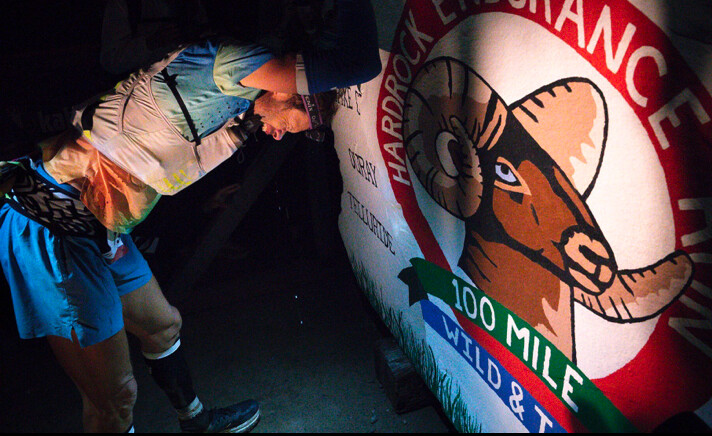
The Hoka-sponsored runner from Prevessin, France, took the lead less than a third of the way into the rugged 100.5-mile clockwise-edition of the course after separating from countryman François D’Haene, the 2021 Hardrock champion and 2022 runner-up, and never looked back. Pommeret progressively chipped away at the course record splits—a course record, mind you, set by none other than Kilian Jornet in 2022—to win this year’s event in 21:33:12, the fastest time in the race’s 33-year history. Jornet set the previous overall course record of 21:36:24, also in this clockwise direction in 2022.
(Pommeret kissed the rock in to complete the course in 21:33:07 at 4:33 A.M. local time, but race officials credited him with the slightly slower official time.)
“It was my dream (to win it),” Pommert told a small collection of fans and media after winning the race at 3:33 A.M. local time. “I was just asking ‘when will there be a nightmare?’ But finally, there was no nightmare. Thanks to my crew. They were amazing. And thanks to all of you. This race is, uh, no word, just so cool and wild and tough.”
On Friday, July 12, 146 lucky runners embarked on the 2024 Hardrock 100. Run in the clockwise direction this year, it was the “easy” way for the course with a staggering 33,000 feet of climbing and an average elevation over 11,000 feet thanks to the steep climbs and more tempered, runnable descents.
Combined with relatively cooperative weather (hot during the day on Friday, but no storms) and a star-studded front of the pack headlined by Courtney Dauwalter and D’Haene, the tight-knit Hardrock 100 community was on course record watch.
And the event delivered—along with a whole lot more.
On the men’s side, the front of the race took a blow before the gun even went off when Zach Miller, last year’s Ultra-Trail du Mont Blanc runner-up, was denied entry after undergoing an emergency appendectomy the weekend before.
Despite the heartbreak of being forced to wait another year to participate in this hallowed event, Miller was very much a presence in the race, most notably for slinging fastnachts (Amish donuts) from his van in Ouray for race supporters and fans.
Such is the spirit of this event, deemed equally as much a run as a race.
The men’s race was further upended when D’Haene, in tears surrounded by his wife, three children, and friends, dropped from the race at the remote Animas Forks aid station (mile 58). An illness from two weeks before proved insurmountable for the challenge ahead. That blew the door wide open for the hard-charging leaders ahead.
Pommeret had built a 45-minute lead over Jason Schlarb, an American runner who lives locally in Durango, and Swiss runner Diego Pazosby, the time he had left the 43.9-mile Ouray aid station amid 85-degree temperatures. His split climbing up and over 12,800-foot Engineer Pass (mile 51.8) extended his lead to more than an hour over Schlarb and nearly 90-minutes at the Animas Forks aid station.
“I thought it was great. To run off the front like he did, and then just hold that all day and get the overall course record is pretty awesome,” Miller said. “When Killian did it, two years ago, it was a, it was a track race between him, Dakota, and François, after they got some separation from Dakota, it was Kilian and and François, all the way to Cunningham Gulch (the mile 91 aid station) and then Kilian just torched it on the way in. So yeah, it was super, super impressive for Ludo to do that. That’s a very impressive effort.”
The sleepy historic mining town of Silverton, Colorado was unusually hectic at 6 A.M. on Friday. In the blue hour before the sun poked over the San Juan Mountains looming above, 146 runners toed the start line of the Hardrock 100, marked by flags from the countries represented by competitors on either side of the dirt road.
With the sound of the gun, runners jogged off the start line—their caution a tacit sign of respect for the monumental challenge of what was to come. As the runners passed through town to the singletrack wending its way up to Miner’s Shrine, group of men headlined by D’Haene, Ludovic Pommeret, Diego Pazos, and Jason Schlarb quickly took command of the front, the bright yellow t-shirt of Courtney Dauwalter was easy to spot just behind, along with Katharina Hartmuth and Camille Bruyas.
If they weren’t awake already, runners certainly were after crossing the ice-cold Mineral Creek two miles into their journey before starting the grunt up to Putnam Basin. At the top of a sunny, grassy Putnam Ridge (mile 7) 1:34 into the race, the lead pack of men remained, while Dauwalter had made a statement solo just three minutes back from the men and four minutes up on Hartmuth.
Dauwalter was smiling and chatty when she reached the KT aid station at mile 11.5, in 2:24 elapsed. By Chapman (mile 18.4), four hours in and 10 minutes under her own course record pace, she was pouring water on her head under the blazing sun. Things were heating up—in more ways than one.
When Pommeret galloped into Telluride (mile 27.7) after 5:37 of elapsed time in the lead, he was right on Jornet’s course record pace. One minute, some fluids and restocking later, and he was gone.
But wait, it was still a close race! D’Haene charged into Telluride just two minutes later and hardly stopped before continuing on through downtown before busting out the poles and starting the steep, steep 5,000-foot climb up Virginius Pass to the iconic Kroger’s Canteen aid station nestled into a notch of rock at the top at 13,000 feet.
Not to be outdone, the women’s race proved equally thrilling coming into Telluride. Bruyas bridged the gap up to Dauwalter, and the two ran into town together in 6:25 elapsed. Both took three minutes in the aid station, although that must have been enough social time for Dauwalter, as she pulled ahead marching up the climb, poles out and head down. A bouncy Bruyas alternated between hiking and jogging just behind.
But time again again, Dauwalter’s long, powerful stride simply proved unparalleled. By Kroger’s (mile 32.7) Dauwalter had reestablished her lead by five minutes over Bruyas and 17 ahead of Hartmuth in third. She’d built that gap to 10 minutes in Ouray at mile 43.9, but she left that aid station in less than two minutes with a stern, serious look on her face. But as she crested Engineer Pass at the golden hour, wildflowers blanketing the vibrant green hillsides basking in the setting sun, she enjoyed a 30-minute lead in the women’s race and was knocking at the door of the men’s podium.
While Dauwalter forged ahead with her unforgiving campaign for a third straight win, the men’s race started to rumble. Like Dauwalter, Pommeret continued to blaze the lead looking strong as he trotted down Engineer to the Animas Forks aid station at mile 57.9 in 11:39 elapsed. He hardly stopped before continuing on to Handies Peak, which at 14,058 feet marks the high point of the race. He had blown the race wide open.
An hour and 15 minutes later, Schlarb, looking a bit more beleaguered, ran into Animas Forks with his pacer, where he sat down and changed his shirt while receiving a pep talk from his partner and son. But he made quick work of the time off feet nonetheless, and three minutes later he was back at it, seven minutes before Pazos appeared.
While D’Haene arrived just 10 minutes later, he did so in tears, holding the hand of his youngest son. After a considerable amount of time sitting in the aid station, surrounded by his family and crew, he called it quits. The lingering effects of an illness from just 10 days before proved too much to overcome as the hardest miles of the race loomed ahead.
While D’Haene pondered his fate, Dauwalter blitzed into Animas Forks in 13:26 with that same look of determination, 16 minutes ahead of course-record pace. She briefly stopped to prepare for the impending night, picking up her good friend and pacer Mike Ambrose to leave the aid station in fourth overall. Bruyas maintained her second place position 30 minutes back, with Hartmuth in third about 20 minutes behind her.
Pommeret continued charging ahead solo, increasing over Schlarb and Pazzos by more than two hours late in the race. When Pommeret passed through the 80.8-mile Pole Creek aid station at 10:44 P.M., it shocked the small group of race officials, media and fans watching the online tracker from the race headquarters in Silverton. Based on that split, it was originally calculated that Pommert could arrive as early as 2:34 A.M.—which would have been a finishing time of 20:34—but he didn’t run the final 20 miles quite as fast as Jornet did in 2022.
Behind him Pazos caught Schlarb to take over second place before Pole Creek and increased the gap to four minutes by the Cunningham aid station (mile 91.2).
Pommeret, who develops training software for air traffic controls in Geneva, Switzerland, didn’t break into ultra-trail running until 2009 when he was 34 years old. He was third in UTMB that year—behind a 20-year-old Jornet, who won for the second straight year—the first of seven top-five finishes in the marquee race in Chamonix. (He was third in 2017 and 2019 and fourth in 2021 and 2023.) He also won the 90-mile TDS race during UTMB week in 2022, and the 170-kilometer Diagonale des Fous race (Grand Raid La Reunion) on Réunion Island in the Indian Ocean in 2021 and placed sixth in his first attempt at the Western States 100 in California in 2022.
Last year, Pommeret placed 13th overall in the Western States 100 and nine weeks later finished fifth at UTMB behind Jim Walmsley, Miller, Germain Grangier, and Mathieu Blanchard.
“We know Ludo is a beast, but to be a beast for so long, for so long is so impressive,” Miller said. “He’s 49, which by all means is a capable age in this endurance world. But I think anytime someone 49 does something like that, it’s gonna turn some heads because that would’ve been a really good performance for anyone. To have the track record he’s had—winning Diagonale des Fous, UTMB and Hardrock, that’s pretty impressive.”
Courtney’s Final
By the time Dauwalter was pushing her way up Handies Peak, she had a smile on her face and engaged in playful conversation with media and spectators on the course. She had good reason to smile: she was feeling good and she had increased her 10-minute lead at Ouray to more than 60 minutes. Dauwalter went through the Burrows aid station (mile 67.9) in less than a minute, while Bruyas came in an hour later and spent four minutes refueling before heading out again.
Three hours after Pommeret had passed through the Pole Creek aid station (mile 80.8), Dauwalter arrived at 1:54 A.M., still in fourth place overall about 50 minutes behind Pazos and Schlarb. She took a little more time there, but was back on her feet in four minutes and running strong again and still on record pace. Bruyas walked in to Pole Creek at 3:08 A.M. in sixth overall, but the gap behind Dauwalter continued to widen.
Dauwalter was in and out of the Maggie aid station (mile 85.1) in two minutes and blazed through the Cunningham aid station (mile 91.2) even faster. The race seemed to be in hand at that point with Bruyas more than 90 minutes behind (in fact, someone updated Wikipedia and declared her the winner not long after Pommeret finished), it was just a matter of how fast she could finish.
Login to leave a comment
Western States 100: Walmsley Wins a Fourth Time While Schide Rocks the Women’s Field
For hours, Katie Schide (pre-race and post-race interviews) chased ghosts. For hours, Jim Walmsley (pre-race and post-race interviews) and Rod Farvard (post-race interview) chased each other. And in the end, after 100 courageous, gutsy miles at one of the world’s most iconic ultramarathons, it was Schide and Walmsley who won a fast, dramatic 2024 Western States 100.
Schide, an American who lives in France, was on pace to break the course record until late in the race, while Americans Walmsley and Farvard battled throughout most of the second half of the race, alternating the lead as late as mile 85.
Schide’s winning time was 15:46:57, just over 17 minutes behind Courtney Dauwalter’s 2023 course record, almost an hour faster than her own time last year, and the second fastest women’s time ever. Walmsley, meanwhile, won his fourth Western States in 14:13:45, the second fastest time ever — only behind his own record of 14:09:28 that he set in 2019.
Second and third in the men’s race came down to an epic sprint finish on the track between Farvard and Hayden Hawks (pre-race and post-race interviews), who finished in 14:24:15 and 14:24:31, respectively.

In the women’s race for the podium, Fu-Zhao Xiang (pre-race and post-race interviews) finished second in 16:20:03, and Eszter Csillag (pre-race and post-race interviews) took third for the second time in a row, in 16:42:17.
Both races featured one of the deepest and most competitive fields in race history, with the men’s top five all coming in faster than last year’s winning time, and the women’s top 10 finishing just under 40 minutes faster than last year’s incredibly competitive top 10.
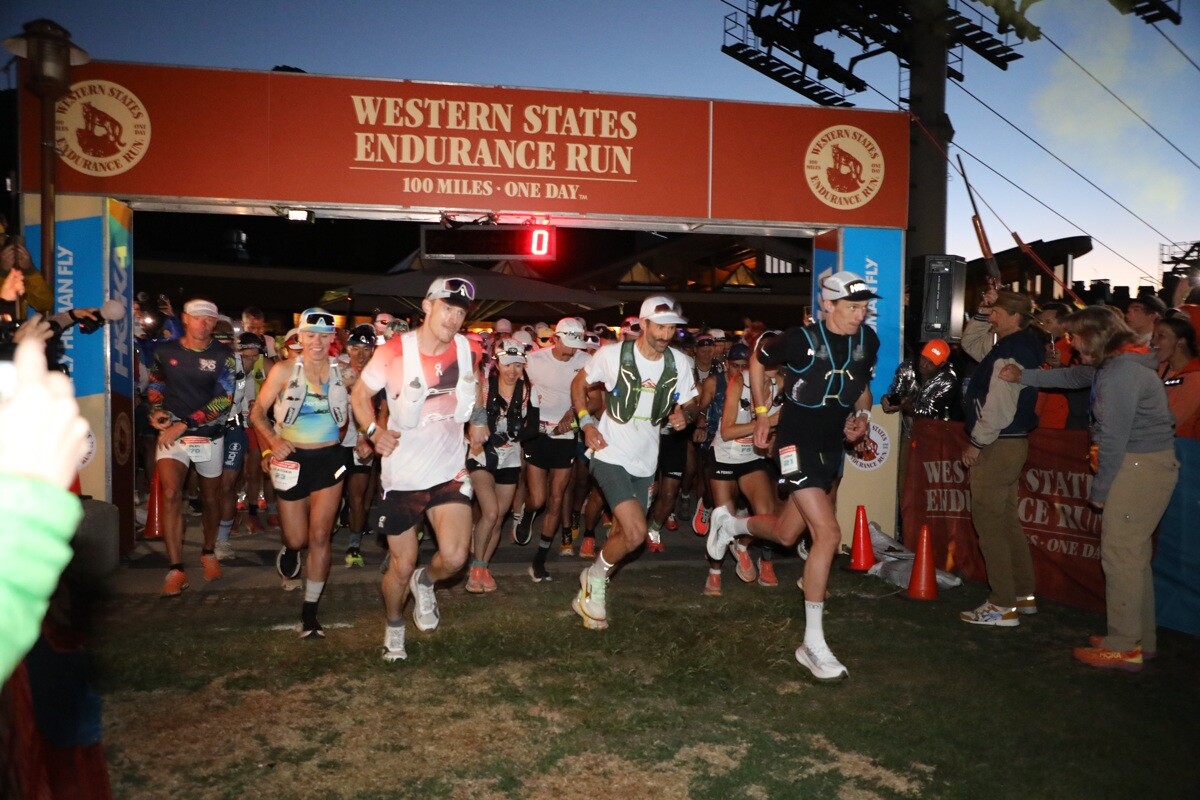
At 5 a.m. on Saturday, June 29, they were all among the 375 runners who began the historic route from Olympic Valley to Auburn, California, traversing 100.2 miles of trail with 18,000 feet of elevation gain and 22,000 feet of loss. After last year’s cool temperatures, the weather at this year’s race was a bit warmer, albeit with a notable lack of snow in the high country. The high temperature in Auburn was in the low 90s Fahrenheit.
A special thanks to HOKA for making our coverage of the Western States 100 possible!
2024 Western States 100 Men’s Race
In his return to the race that propelled him to the heights of global trail running and his first ultra on American soil in three years, Jim Walmsley (pre-race interview) demonstrated why he is, once again, the king of Western States. Before the race, Walmsley exuded a calmness that perhaps eluded him during his first attempts, when he attacked it with an obsessive intensity that led him to famously take a wrong turn and then dropping out in back-to-back years.
“We’ll just roll with what plays out and just kind of see what happens in the race,” he said in his pre-race interview. There’s a marked difference when compared to his remarks from his interview before the 2016 race.
What happened in the race was this: In his fourth Western States, Rod Farvard (post-race interview) had the race of his life to push Walmsley like he’d never been pushed before in his long history with the event.
Farvard — a 28-year-old from Mammoth Lakes, California, who has improved his finish each year at the race, from a DNF in 2021 to 41st place in 2022 to 11th place last year — put himself in a strong position from the start, leading a large pack of runners that included Walmsley at the top of the Escarpment, the 2,500-foot climb in the first four miles of the race. For the next 45-plus miles, Farvard remained in the top 10, part of a chase pack of American Hayden Hawks (pre-race and post-race interviews), Kiwi Dan Jones (pre-race interview), and Chinese runner Guo-Min Deng, among others.
At the Robinson Flat aid station at mile 30 — the symbolic end of the runners’ time in the high country, which features an average elevation of around 7,000 feet — Walmsley, who started the race conspicuously wearing all black, came through in 4:24 looking fast and smooth, now wearing an ice-soaked white shirt. Jones, the 2024 Tarawera 102k champion and fifth-place finisher in his Western States debut last year, and Hawks, who set the course record at February’s Black Canyons 100k after dropping out of last year’s Western States, followed about 90 seconds later. The two runners, frequent training partners, ran together frequently throughout the day, with Hawks often foregoing ice at aid stations.
After the trio of Walmsley, Hawks, and Jones went through Last Chance at mile 43 together, Walmsley put nearly two minutes on them up the climb to Devil’s Thumb. “I was with everybody at the bottom,” he said, according to the race’s official livestream.
About halfway through, at mile 49.5, the order remained the same: Walmsley in the lead with an elapsed time of 6:58, followed by Jones one minute back, Hawks two minutes back, and Farvard just over two and a half minutes back. The rest of the top 10 were last year’s 17th-place finisher Dakota Jones; 2024 Transvulcania Ultramarathon champion Jon Albon (pre-race interview), who is from the U.K. but lives in Norway; 2023 fourth-place finisher Jia-Sheng Shen (China) (pre-race interview); 2023 Canyons 100k champion Cole Watson; Western States specialist Tyler Green (pre-race interview); and Jupiter Carera (Mexico).
Then began a thrilling, chaotic second half of the race — featuring a gripping back-and-forth between Walmsley and Farvard, a wildfire near the course, a two-man river crossing, and a sprint finish on the track.
It all started when Walmsley entered Michigan Bluff at mile 55, again looking calm and in control, changing shirts and getting doused with ice. Farvard came in just behind him and left the aid station first, leading the race for the first time since the first climb up the Escarpment. The same routine took place seven miles later at Foresthill: Walmsley entering first, Farvard leaving first.
For the next 18 miles, the two runners alternated in the lead. By mile 78, they were so close that they were crossing the American River at the same time. Their battle underscored the overall depth of the field at this year’s race: At mile 80, the top five men were within 16 minutes of one another.
Around then, the 15-acre Creek Fire, which started not long before, was visible from the final quarter of the course and crews were temporarily not permitted to travel to the Green Gate aid station at mile 80 because the route to it passed close to the fire. Eventually, a reroute was established for crews to get to Green Gate and, later, after the wildfire was controlled, the regular route was reopened.
At Green Gate, Farvard came through in the lead, with Walmsley four minutes back and looking like he was hurting. It was then, perhaps, that the thought entered people’s minds: Could Farvard really take down the champ?
But Jim Walmsley is Jim Walmsley for a reason, and he again proved why he is among the world’s best. Against the ropes, facing one of his first real challenges in the race that shaped him, he delivered, entering the next aid station, Auburn Lake Trails at mile 85, more than a minute earlier than Farvard. He had made up five minutes in five miles.
Walmsley never trailed again, increasing his lead to 11 minutes by the Pointed Rocks aid station at mile 94 and then picking up his crew, including his wife, Jess Brazeau, at Robie Point to run the final mile with him. He entered the track at Placer High School to loud cheers, his loping stride still looking smooth, stopping a few steps short of the tape to wave to the crowd and raise his arms in triumph. He had done it again.
Behind him, Farvard was fading but determined to cap an extraordinary race with a second-place finish. Hawks, who had made up five minutes on Farvard in the couple miles between Pointed Rocks and Robie Point, was on the hunt, and by the time he stepped on the track, Farvard was within sight.
It was then that fans were treated to one of the most unique sights in all of ultrarunning: After 100 miles of racing, two men were sprinting against each other on a track. In the end, Farvard’s lead held, and he finished 16 seconds ahead of Hawks. He collapsed at the finish line — a fitting end to an epic performance.
Dan Jones ended a strong race with a fourth-place finish in 14:32:29, with Caleb Olson capping an impressive second half of the race — from 11th at mile 53 to fifth in 14:40:12 at the finish. All five men ran a time that would have won the race last year.
Behind Olson came Jon Albon, running 14:57:01 in his 100-mile running-race debut, followed by the surgical Tyler Green, who finished in seventh for his fourth straight top 10 finish at the race. Green’s time of 15:05:39 also marked a new men’s masters course record, breaking the 2013 Mike Morton record of 15:45:21.
Rounding out the top 10 were Jia-Sheng Shen in eighth with a time of 15:09:49, Jonathan Rea in ninth who methodically moved his way up during the last 60 miles to finish in 15:13:10; and Chris Myers in 10th in 15:18:25.
2024 Western States 100 Women’s Race
Through the high country, into and out of the canyons, and along the river of the world’s oldest 100-mile trail race, Katie Schide (pre-race and post-race interviews) raced only the ghosts of the clock and history. Smiling throughout, she seemed unaffected by the solitude and the enormity of the possibility that lay before her: to attempt to break the course record of one of the world’s most iconic trail races.
Schide, an American who lives in France, came into the race as the clear favorite, and for good reason: She finished second last year, breaking Ellie Greenwood’s previously untouchable 2012 course record by more than three minutes and losing to only Courtney Dauwalter, who broke Greenwood’s record by an astounding 78 minutes on her way to a historic Western States-Hardrock 100-UTMB triple win. Schide, winner of the 2022 UTMB and 2023 Diagonale des Fous 100 Mile, spent the last two-and-a-half months in Flagstaff, Arizona, training for Western States, winning this year’s Canyons 100k in an impressive tune-up and putting in a monster training block.
In her pre-race interview, Schide said that she had thought about ways to improve her race from last year, which perhaps should have been the first warning to her competition. The second, then, was her immediate separation from the women’s chase pack: She summited the Escarpment, a 2,500-foot climb during the first four miles, in first place and never looked back. By the first aid station — Lyon Ridge at 10 miles — she was already 12 minutes under course record pace, and by Robinson Flat at mile 30, she was 21 minutes ahead of second-place Emily Hawgood (pre-race interview), from Zimbabwe but living in the U.S.
The lead only ballooned from there. By Dusty Corners at mile 38, Schide was an incredible 26 minutes under course record pace, and though she lost a few minutes from that pace by the time she climbed up to Michigan Bluff at mile 55, her smile had not waned even slightly. She smoothly entered the iconic aid station, doused herself with ice, changed shirts, and was soon on her way. She never sat down.
Twenty-seven minutes behind her was Hawgood, looking to build on back-to-back fifth-place finishes. Eszter Csillag (pre-race and post-race interviews), a Hungarian who lives in Hong Kong, followed soon after, in the same third spot she finished in last year.
After them ran a dense pack of women: Only 16 minutes separated Hawgood in second from Lotti Brinks in 11th.
At the halfway point, the top 10 were Schide, 33 minutes up in an elapsed time of 7:26; Csillag; Hawgood; Chinese runner Fu-Zhao Xiang (pre-race and post-race interviews), the fourth-place finisher at last year’s UTMB; Lin Chen (China); American Heather Jackson, a versatile former triathlete who recently finished fifth at a competitive 200-mile gravel bike race; ultrarunning veteran Ida Nilsson (pre-race interview), a Swede living in Norway; Becca Windell, second in this year’s Black Canyon 100k; 2023 CCC winner Yngvild Kaspersen (Norway); and Rachel Drake, running her 100-mile debut.
Schide, easily identifiable in her pink shirt, maintained her large lead throughout the second half of the race, remaining calm, controlled, and upbeat throughout the tough canyon miles. By Foresthill at mile 62, she was 19 minutes ahead of course record pace and 48 minutes ahead of the second-place Xiang. Schide’s stride still looked smooth as she waved to fans and even high-fived a cameraman.
Schide’s aggressive pace eventually slowed — by Green Gate at mile 80, her lead on the course record had dissipated — but her spirits did not. After a quick sponge bath at Auburn Lake Trails aid station at mile 85, she fell behind course-record pace for the first time all day, only 15 miles remained until the finish.
Schide entered the track a couple of hours later, running with her crew and no headlamp. She would finish before dark. She stopped for a hug on the final straightaway and lifted the tape with, of course, a smile.
Xiang had methodically pulled away from Hawgood and Csillag during an incredibly strong second half to win the battle for second. Fu-Zhao Xiang finished in 16:20:03 for the third fastest time in race history. Chen, who dropped out at mile 78, was one of the few elite runners who had a DNF on this day, which was categorized by a lack of attrition in both the women’s and men’s elite races.
Eszter Csillag came in about 22 minutes behind Xiang in 16:42:17 for her second consecutive third-place finish, a 30-minute improvement from last year — a statistic that perhaps exemplifies the speed of this year’s race better than any other.
The battle for fourth and fifth was nearly as close as Farvard and Hawks’s race for second in the men’s race a couple of hours earlier.
At Pointed Rocks at mile 94, Hawgood led by barely two minutes, running hard and straight through the aid station. Kaspersen, meanwhile, was drinking Coke and made up almost a minute by Robie Point.
Emily Hawgood’s lead ultimately held, and she finished fourth in 16:48:43 to improve her finish from prior years by one spot. Yngvild Kaspersen was less than two minutes back in 16:50:39. Ida Nilsson capped a strong day to finish sixth in 16:56:52 and break Ragna Debats’s masters course record by almost 45 minutes. That means the top six women all finished in under 17 hours in a race that had only ever had three women finish under that mark — and two of them, Dauwalter and Schide, were last year.
The rest of the top 10 were Heather Jackson in seventh in 17:16:43, and, in close succession, Rachel Drake in 17:28:35, Priscilla Forgie (Canada) in 17:30:24, and Leah Yingling in 17:33:54.
The top 10 women were all faster than the 12th-fastest time in race history going into the day.
by Robbie Harms
Login to leave a comment
Hardrock 100
100-mile run with 33,050 feet of climb and 33,050 feet of descent for a total elevation change of 66,100 feet with an average elevation of 11,186 feet - low point 7,680 feet (Ouray) and high point 14,048 feet (Handies Peak). The run starts and ends in Silverton, Colorado and travels through the towns of Telluride, Ouray, and the ghost town...
more...2024 Western States 100 Results: Walmsley Wins a Fourth Time While Schide Rocks the Women’s Field
For hours, Katie Schide chased ghosts. For hours, Jim Walmsley and Rod Farvard chased each other. And in the end, after 100 courageous, gutsy miles at one of the world’s most iconic ultramarathons, it was Schide and Walmsley who won a fast, dramatic 2024 Western States 100.
Schide, an American who lives in France, was on pace to break the course record until late in the race, while Americans Walmsley and Farvard battled throughout most of the second half of the race, alternating the lead as late as mile 85.
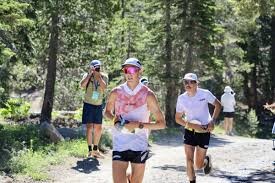
Schide’s winning time was 15:46:57, just over 17 minutes behind Courtney Dauwalter’s 2023 course record, almost an hour faster than her own time last year, and the second fastest women’s time ever. Walmsley, meanwhile, won his fourth Western States in 14:13:45, the second fastest time ever — only behind his own record of 14:09:28 that he set in 2019.
Second and third in the men’s race came down to an epic sprint finish on the track between Farvard and Hayden Hawks , who finished in 14:24:15 and 14:24:31, respectively.
In the women’s race for the podium, Fu-Zhao Xiang (pre-race interview) finished second in 16:20:03, and Eszter Csillag took third for the second time in a row, in 16:42:17.
Both races featured one of the deepest and most competitive fields in race history, with the men’s top five all coming in faster than last year’s winning time, and the women’s top 10 finishing just under 40 minutes faster than last year’s incredibly competitive top 10.
At 5 a.m. on Saturday, June 29, they were all among the 375 runners who began the historic route from Olympic Valley to Auburn, California, traversing 100.2 miles of trail with 18,000 feet of elevation gain and 22,000 feet of loss. After last year’s cool temperatures, the weather at this year’s race was a bit warmer, albeit with a notable lack of snow in the high country. The high temperature in Auburn was in the low 90s Fahrenheit.
A special thanks to HOKA for making our coverage of the Western States 100 possible!
Login to leave a comment
Mountain Running World Cup opens at Broken Arrow
The 2024 Valsir Mountain Running World Cup kicks off in style on Friday (21) at the Broken Arrow in Palisades Tahoe, California. The season launches with the Broken Arrow VK, a short uphill gold label race, and continues with the 23km Broken Arrow Skyrace, a long gold label race, on Sunday.
With a base elevation of 1890m and stunning peaks all around, including the prominent 2700m Washeshu Peak, Broken Arrow has the perfect credentials for mountain racing.
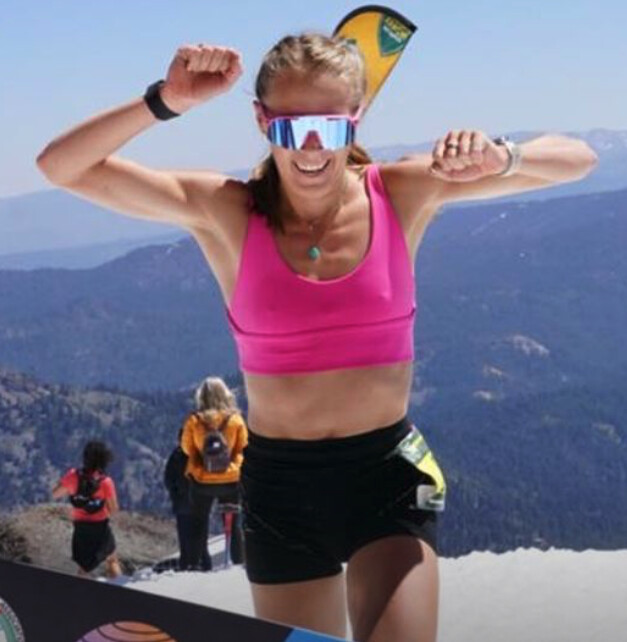
Many of the athletes from last year’s podiums return. In the women’s VK, last year’s winner Anna Gibson is back to defend her title. The 2023 runner up, Jade Belzberg, also returns, as do Annie Dube and Anna Mae Flynn, who finished fourth and fifth respectively last year. But they will face stiff competition in the form of Allie McLaughlin, the uphill champion at the World Mountain and Trail Running Championships in 2022, and Tabor Hemming.
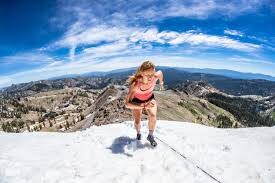
The men’s VK is also looking incredibly competitive. Darren Thomas, second last year, is back, as is last year’s fifth-place finisher Abraham Hernandez Cruz. Joining them will be some big names, including 2023 World Cup winner Philemon Kiriago, Jim Walmsley, Eli Hemming and Christian Allen.
Many runners are contesting both the VK and the Skyrace, with a day in between to recover. Last year the Skyrace was severely affected by snow, but the snowline is not set to be as low this year.
Memorably McLaughlin battled with Gibson last year, taking the lead and stretching it out to win. McLaughlin is doing the double here, as are Tabor Hemming, who was third last year, and Dube. Janelle Lincks, fourth last year, also returns. Sophia Laukli, a breakout star in last year’s World Cup, also looks to be toeing the line and will be one to watch.
In the men’s Skyrace, defending champion Eli Hemming returns, along with the rest of last year’s podium, Chad Hall and Meikael Beaudoin-Rousseau. Allen, Kipngeno and Thomas will double up, which should make things interesting. To shake things up even further, former world champion Joe Gray is on the start list. Zak Hanna, who finished fourth in last year’s VK, is just taking on the Skyrace this year.
The VK on Friday starts on the valley floor and climbs its way up 914m over 4.8km to the summit of Washeshu Peak at 2708m. Despite some changes to the course this year, along the way it still takes in some brutally steep terrain, leading up to the iconic Headwall Ridge and the ‘stairway to heaven’ bolted ladder to the summit of Washeshu Peak. Runners will experience steep rock slabs, snow and scree, which is guaranteed to deliver an exciting race.
On Sunday the Broken Arrow Skyrace is held on a loop which climbs 1533m over the course of 23km. It starts in Palisades Tahoe Village and most of the race takes place above the tree line on technical and demanding trails. Runners will be treated to views of Granite Chief Wilderness and they will experience Emigrant Pass, KT-22 and, like the VK runners, the ‘stairway to heaven’ ladder to Washeshu Peak.
The Broken Arrow offers the first two of 12 races that form part of the Valsir Mountain Running World Cup in 2024. The season closes with the World Cup Final Val Bregaglia Trail on 13 October. There will be a livestream of the Broken Arrow action available on the event website.
Login to leave a comment
Walmsley and Schide favorites as Western States line-ups are finalized
Americans Jim Walmsley and Katie Schide, both UTMB winners, will head the finalized fields for the 51st edition of Western States 100 Endurance Run at the end of this month.
Western States is the oldest and arguably the most iconic 100-mile trail run in the world and the stars are again out in force Auburn on June 29-30.
Can Walmsley make it four?
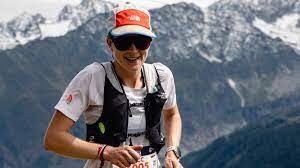
Last year Walmsley memorably ended his quest to finally add a UTMB title in Chamonix to his CV and he’s the current course record holder at Western States, which he’s already won three times.
His time of 14:09:28 from 2019 hasn’t been bettered since and he’s the highest-ranked runner in terms of the UTMB index at 934 (Kilian Jornet is top on 941).
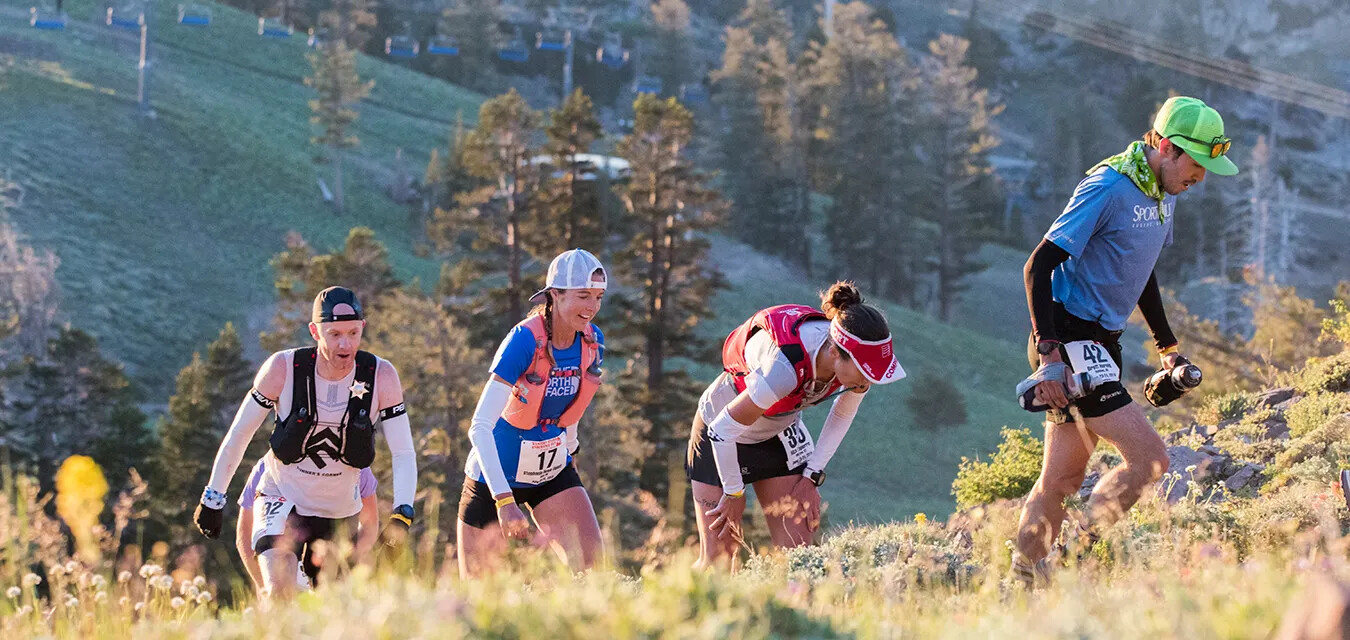
But he’ll face a raft of strong rivals including the 2023 runner-up Tyler Green (USA, UTMB Index 880) and several other top finishers from 2023, including fourth-placed Jiasheng Shen (CHN, UTMB Index 906).
Dakota Jones (USA, UTMB Index 902), Ji Duo (CHN, UTMB Index 889) and Hayden Hawks (USA, UTMB Index 910) booked their spots alongside Walmsley via Golden Tickets from top-three performances at other big events.
Schide the one to beat
And on the women’s side the 2022 UTMB winner Katie Schide (UTMB Index 825) will be looking to go one better than last year’s second place at Western States.
Only superstar Courtney Dauwalter on 847 is ahead of Schide on the UTMB Index but the reigning Western States champion (who smashed the course record time when beating Schide) won’t be back to defend her title.
That means that Schide, who underlined her form with victory at the Canyons Endurance Runs by UTMB at the end of April, starts as the clear favourite.
But she too will face tough opposition from the likes of Eszter Csillag (HUN, UTMB Index 768), who finished third 12 months ago, and three-time finisher Emily Hawgood (ZWE, UTMB Index 757).
Other big names lining up include former professional IRONMAN athlete Heather Jackson (USA, UTMB Index 764), Eleanor Davis (GBR, UTMB Index 753) and Emily Schmitz (USA, UTMB Index 736).
Jackson recently advertised her gravel racing prowess in a thrilling sprint finish at the famed Unbound event.
We’ll build up to the big event over the next couple of weeks here at RUN247.
by Jonathan Turner
Login to leave a comment
Western States 100
The Western States ® 100-Mile Endurance Run is the world’s oldest and most prestigious 100-mile trail race. Starting in Squaw Valley, California near the site of the 1960 Winter Olympics and ending 100.2 miles later in Auburn, California, Western States, in the decades since its inception in 1974, has come to represent one of the ultimate endurance tests in the...
more...How to Prepare for Western States 100 Trail Race
The Western States 100, the world’s oldest 100-mile footrace, stands as a monumental test of human endurance. Traversing California’s Sierra Nevada Mountains, this race demands competitors climb over 5,000 meters, challenging even the most seasoned athletes. It has become synonymous with the legends of ultrarunning, including Jim Walmsley, Scott Jurek, and Ann Trason.
The Western States 100 began as a horse riding event in 1955. It wasn’t until 1972 that a group of infantry soldiers attempted the trail on foot, with seven successfully completing the 100-mile distance in under 48 hours. Inspired by this feat, Gordy Ainsleigh ran the course alongside horses in 1974, finishing in 24 hours and 42 minutes. This marked the birth of the official footrace in 1977.
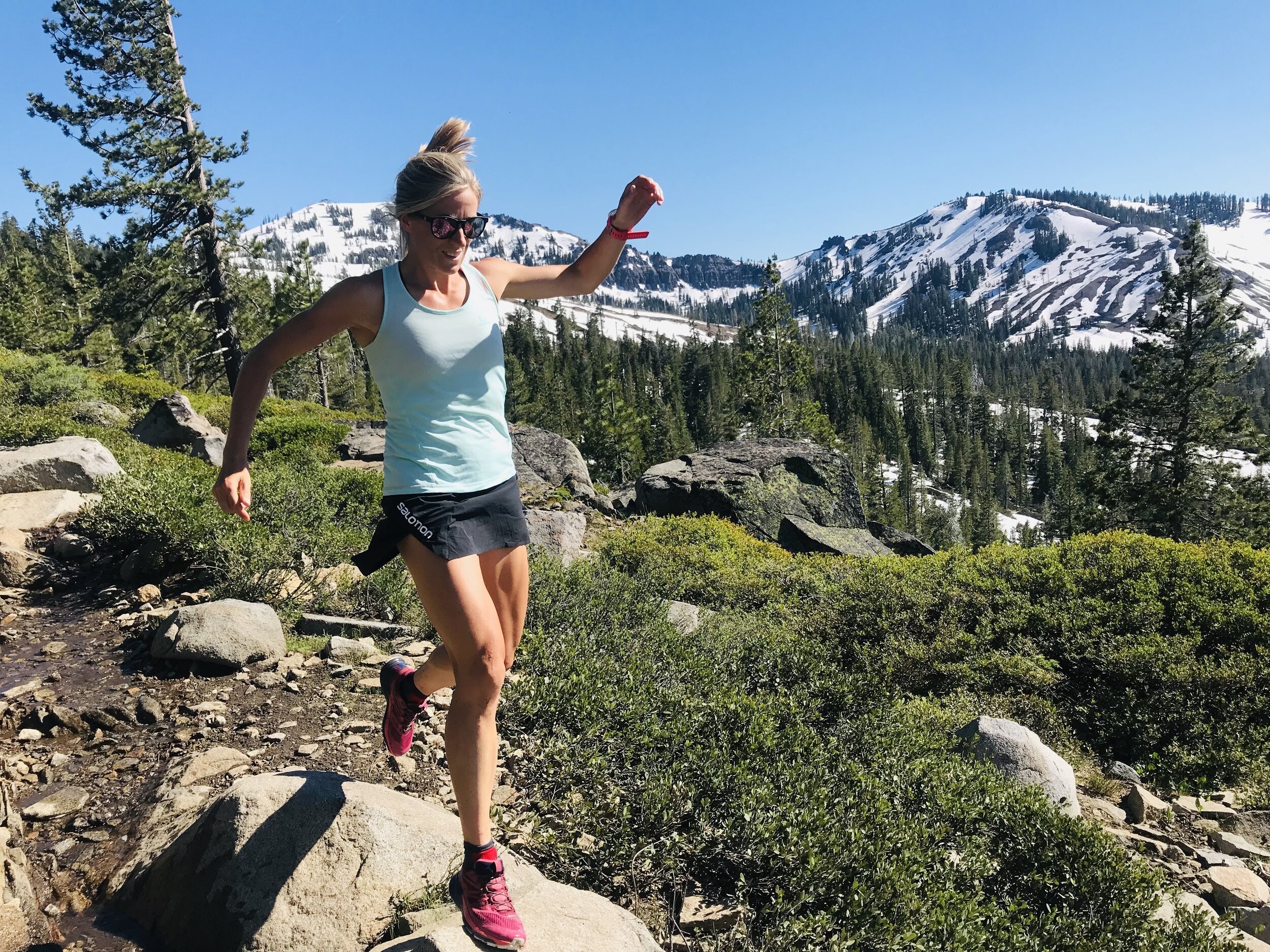
Ann Trason holds the record for the most victories at Western States, securing 14 wins from 1989 to 2003. Scott Jurek dominated the men’s competition with seven consecutive victories from 1999 to 2005. In 2021, Beth Pascall of the UK won the women’s race, recording the second-fastest time in the history of women’s 100-mile races with a finish of 17:10:42.
The Course: A Test of Will and Stamina
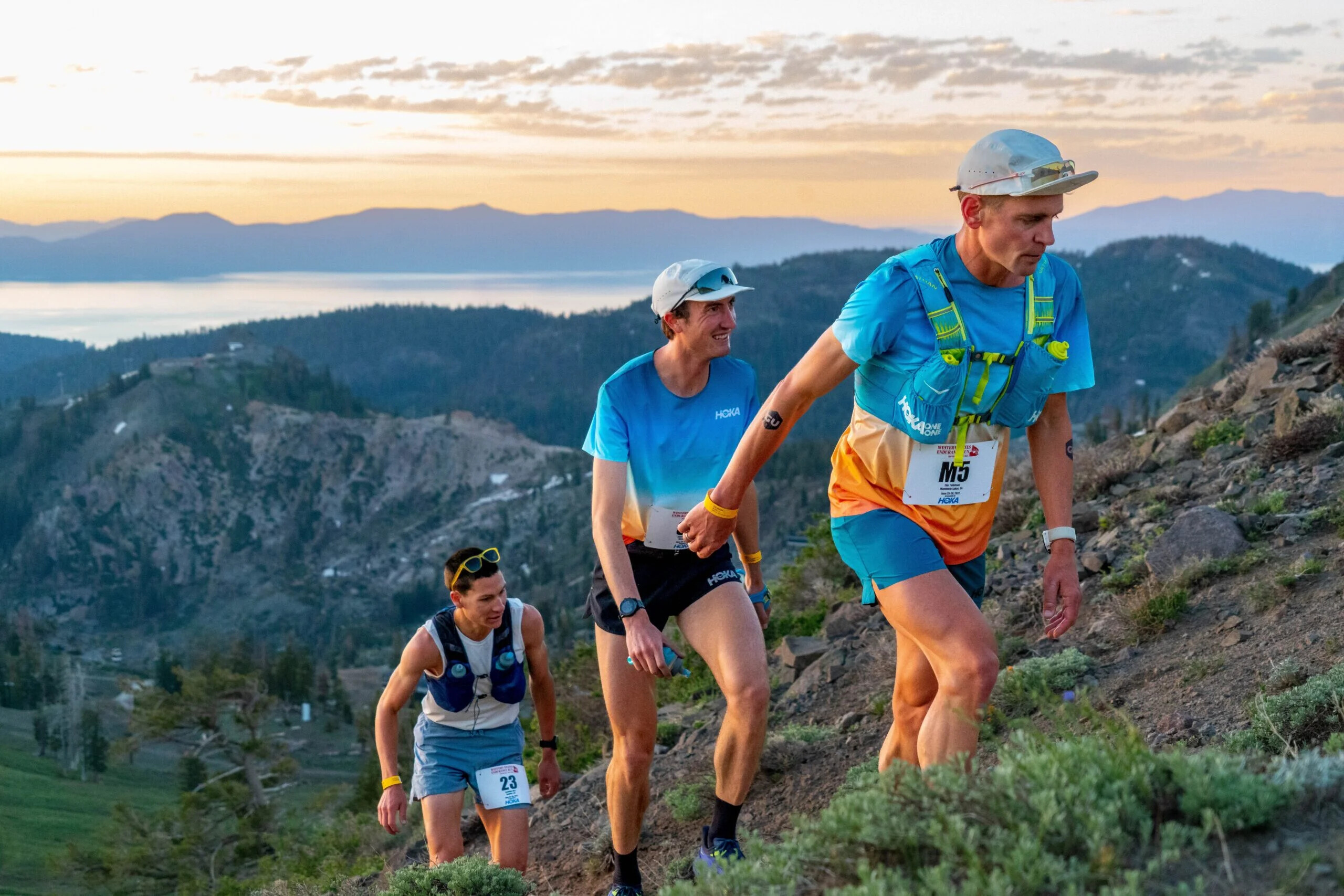
The Western States Trail stretches from Olympic Valley to Auburn, California. Runners start at 5 a.m. on Saturday and must reach the finish line by 10:59:59 a.m. on Sunday to be eligible for an award. The race begins with a steep 777-meter ascent to Emigrant Pass in the first 4.5 miles, then follows historic gold and silver mining trails, climbing an additional 4,700 meters and descending 7,000 meters to Auburn.
The trail cuts through rugged, remote terrain, accessible only by foot, horse, or helicopter. With temperatures reaching up to 35°C, the race tests runners’ resilience in extreme conditions. Despite the challenges, support is robust, with a volunteer-to-runner ratio of 4:1 and 20 aid stations, including 10 medical checkpoints.
The Coveted Buckle
Finishers of the Western States 100 are awarded a buckle, a nod to the race’s roots in endurance horse racing. A silver buckle is given to those who finish under 24 hours, and a bronze buckle to those finishing within 30 hours.
Securing a spot in the Western States 100 is highly competitive, with only 369 entries available each year. Runners must qualify through designated races and enter a ballot. Automatic entries are granted to the top 10 finishers from the previous year and top performers in Golden Ticket Races such as the Black Canyon 100K. Additionally, the race offers a pregnancy deferral policy, allowing expectant participants to defer their entry without a time limit.
Preparing for the Race
Runners typically arrive in Olympic Valley early in the week, with pre-race activities including a shakeout run on Thursday and a mandatory briefing on Friday. The nearest airports are in Reno, Sacramento, and San Francisco. Accommodations are available in Olympic Valley, home to the Palisades Tahoe ski resort, and in nearby Truckee and Tahoe City. Although the start and finish locations differ, transportation options are plentiful, with rideshares and shuttles available.
The Western States 100 is more than just a race; it is a journey of perseverance and grit. Finishing the 100-mile course within the 30-hour limit is a badge of honor, joining the ranks of those who have conquered one of the toughest ultramarathons in the world.
by Runner´s Tribe
Login to leave a comment
Western States 100
The Western States ® 100-Mile Endurance Run is the world’s oldest and most prestigious 100-mile trail race. Starting in Squaw Valley, California near the site of the 1960 Winter Olympics and ending 100.2 miles later in Auburn, California, Western States, in the decades since its inception in 1974, has come to represent one of the ultimate endurance tests in the...
more...Jim Walmsley, Mathieu Blanchard will return to UTMB in 2024
2023 UTMB champion Jim Walmsley and 2022 second-place finisher Mathieu Blanchard have confirmed they will appear at this year’s Ultra-Trail du Mont-Blanc (UTMB) final, which takes place in Chamonix, France on Aug. 30, according to a report by iRunFar. A number of other ultratrail elites have also been announced, including the U.K.’s Tom Evans, who finished third in 2022 and who won Western States 100 in 2023, and Canada’s Christian Meier, the former pro cyclist who won the 145-km TDS race last year.
On the women’s side, Canada’s Marianne Hogan (who finished second in 2022) is confirmed, as are 2022 champion Katie Schide of the U.S., France’s Claire Bannwarth and New Zealand’s Ruth Croft (who won Western States in 2022). (Three-time UTMB champion and course record holder Courtney Dauwalter does not appear on the list.)
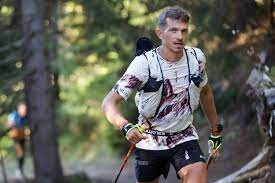
Four-time champion Kilian Jornet and 2023 second-place finisher Zach Miller will also not be returning. After the October, 2023 announcement by UTMB and its minority partner, the Ironman Group, of a new race in Whistler, B.C. in 2024, and the Dec. 1 announcement that UTMB livestream announcer Corrine Malcolm had been fired, the two publicly questioned the organization’s decisions and its treatment of athletes. There was talk of a boycott, though Jornet and Miller dispute this; in the wake of all of this, regular discussions between UTMB and the Pro Trail Runners Association (PTRA), of which Jornet is a founding member, became more frequent, with a view to smoothing relations between athletes and the race.
Walmsley moved to France for two years to hone his mountain-running skills before finally winning UTMB on his fifth try in 2023 (he Walmsley first ran UTMB in 2017, finishing fifth; he DNF’d in 2018 and again in 2021, then finished fourth in 2022). Blanchard, who has returned to France after living in Montreal for a few years (and taking out Canadian citizenship), finished fourth last year after following Jornet onto the podium in 2022. Hogan has been dealing with injuries for much of the last year and a half since her podium finish in 2022.
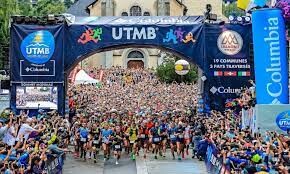
by Anne Francis
Login to leave a comment
North Face Ultra Trail du Tour du Mont-Blanc
Mountain race, with numerous passages in high altitude (>2500m), in difficult weather conditions (night, wind, cold, rain or snow), that needs a very good training, adapted equipment and a real capacity of personal autonomy. It is 6:00pm and we are more or less 2300 people sharing the same dream carefully prepared over many months. Despite the incredible difficulty, we feel...
more...Courtney Dauwalter and Jim Walmsley win 2023 Trail Runner of the Year
Trail running media community Freetrail have announced the winners of the Trail Runner of the Year (TROY), and the epic champions weren’t really a surprise: Americans Courtney Dauwalter and Jim Walmsley, both winners of the 2023 edition of UTMB.
TROY is a global award intended to recognize pro athletes within the sport by ranking their performances during the 2023 racing season. “It’s our hope that TROY will become an annual capstone, celebrating the year in competition,” Freetrail said when they created TROY in 2022.
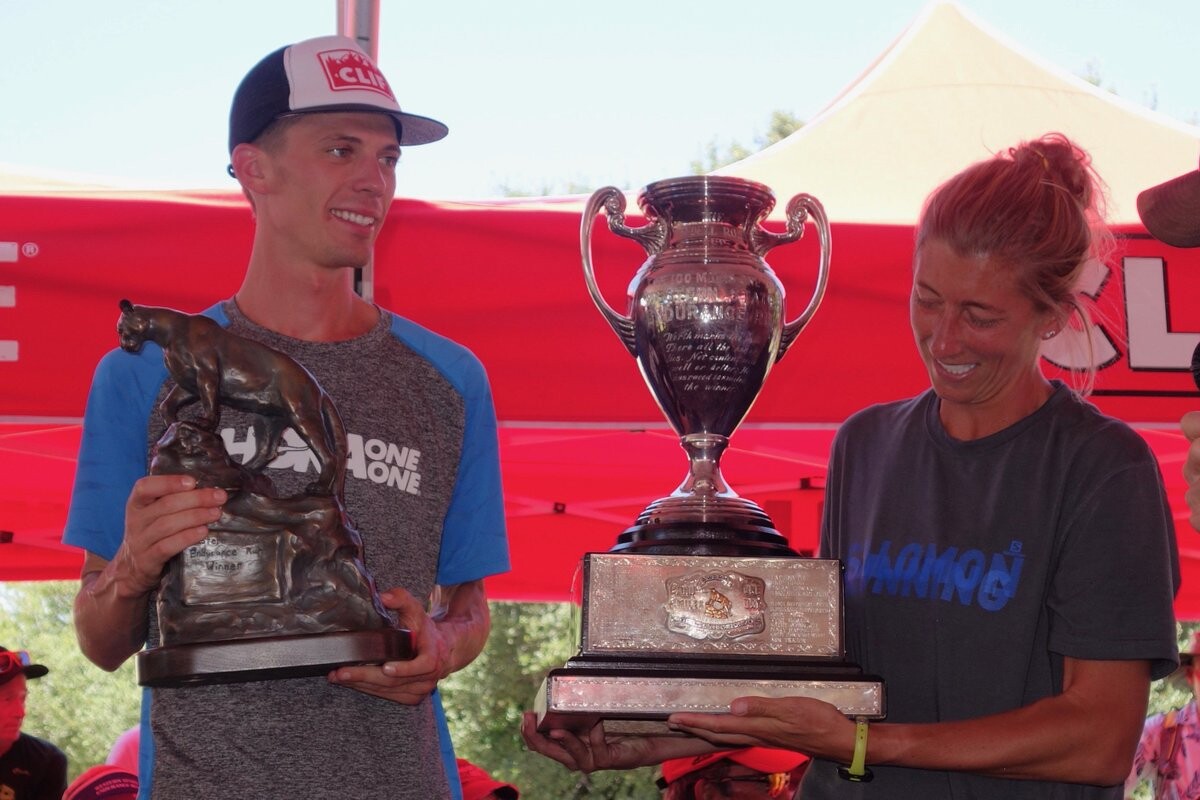
Traditionally, contests like this one have been country-based, so Freetrail is taking a step toward inclusivity by making the competition international. “TROY is an extension of Freetrail’s mission to elevate the profile of the professional athletes in our sport while helping casual observers and the general public feel connected to their stories – hopefully creating diehard fans in the process,” Freetrail shares on its website.
We had some stellar Canadian athletes on the list, including Ailsa MacDonald of Cochrane, Alta., Edmonton’s Priscilla Forgie, Chilliwack’s Ihor Verys and Montreal’s Marianne Hogan. Americans took the lead, however, after remarkable performances in 2023.
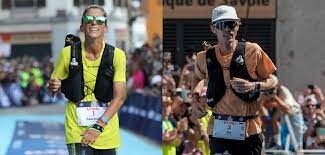
Courtney Dauwalter
Ultrarunner and coach Corinne Malcolm says in the Freetrail announcement that “we are living in the Courtney Era and we aren’t mad about it.” The trail and ultrarunning community witnessed a historic chapter in 2023 as Dauwalter conquered the elusive triple crown of 100-mile races (Western States 100, Hardrock 100 and UTMB 171K) becoming the first person to win all three in one season.
Malcolm captures the essence of Dauwalter’s remarkable journey in 2023 when she says, “We’ve reached peak Courtney.” Before the triple was even an idea, Dauwalter kicked off her season with wins (setting new course records) at Bandera 100K, Transgrancanaria 128K classic, and a record-breaking performance at Western States 100 (WSER).
auwalter’s 2023 season unfolded as an extraordinary narrative of triumphs. Fans watched in awe when she ran to victory at WSER, breaking Canadian Ellie Greenwood‘s long-standing record by 77 minutes, and three weeks later, dominated the Hardrock 100, setting yet another course record.
The unexpected revelation of Dauwalter’s pursuit of the triple crown at UTMB adds a surreal dimension to her already illustrious season. “While she would go on to convincingly win her third world-class 100-mile of the season, completing a triple that will likely never happen ever again, she would also show us she was human, gritting through the final 50 km of the course… Leaving us absolutely speechless in the process,” Malcolm writes.
Jim Walmsley
Walmsley is a beloved fixture in the trail community, known for his immense talent and dedicated work ethic. Fans have followed the evolution of his ultrarunning career. Walsmsley’s journey is one of continuous growth, from three consecutive wins at WSER to a strategic move to Arêches, France, to learn from the likes of Francois D’Haene how to conquer UTMB.
“Just like for many of his mountain colleagues, that would also mean coming into the first spring race of the season off of largely ski fitness,” Malcolm says. “To qualify for the UTMB Finals Jim ran, won, and set the course record at the Istria by UTMB 100-mile race—in the process winning his first 100-mile race that wasn’t WSER.”
While temporarily sidelined with an ankle injury, Walmsley’s determination prevailed as he clinched victory at Trail La Frison Roche and, ultimately, UTMB. Fans watched a nail-biting race, with some doubts as to whether Walmsley would best compatriot Zach Miller, but “a switch flipped at Champex Lac,” and Walmsley secured his win in under 20 hours. Jim’s subsequent triumph at Nice Côte d’Azur by UTMB 100K not only cements his legacy but also earned him a golden ticket to WSER 2024, leaving the ultrarunning community in eager anticipation.
by Keeley Milne
Login to leave a comment
2023 UTMB Men’s Race
After a history of struggling with UTMB, the American men showed up this year with Jim Walmsley and Zach Miller (pre-race interview) taking the top two-spots on the podium. Two vastly different racers with different approaches to the event, the two were able to push each other from start to end, with Walmsley’s ever-consistent pace finally winning out in the end with a new course-record time of 19:37:43. But with a stacked field, with nine of last year’s top 10 back for another crack at the race, and last year’s champion Kilian Jornet out with injury, it was anyone’s bet throughout most of the race of who would come out on top.
There’s never a non-chaotic start to UTMB, and this year was no different. With nerves and excitement running high, it was France’s Arthur Joyeux-Bouillon (pre-race interview) who led at Saint-Gervais, 21 kilometers in, with the entire rest of the field hot on his heels. But as darkness fell on the race and the kilometers ticked by, several distinct groups began to form. Coming into Les Contamines, 32 kilometers in, it was Zach Miller, Jim Walmsley, and the U.K.’s Tom Evans (pre-race interview) bunched up and running together. It looked like there would be the potential of a repeat of the Miller-Evans bromance from 2022, with the addition of Walmsley as a third. Frenchman Mathieu Blanchard (pre-race interview) and Petter Engdahl (pre-race interview), a Swede who lives in Norway, teamed up just a minute behind the leading trio, and the rest of the top-10 men came in within five minutes of the leaders.
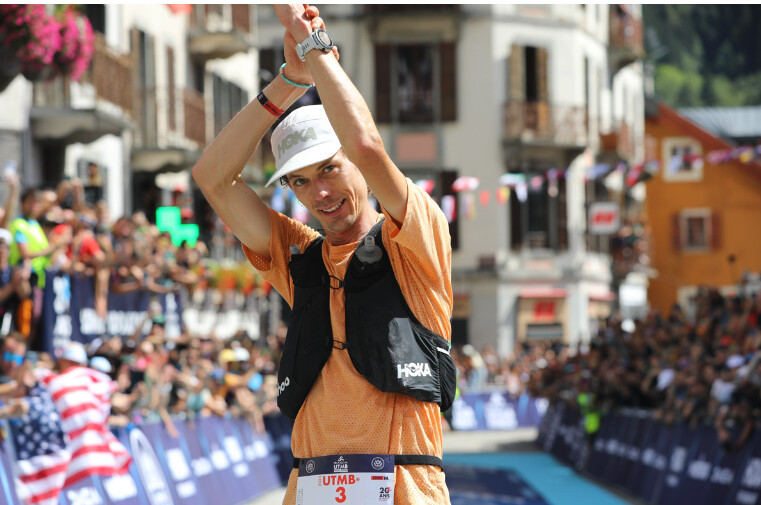
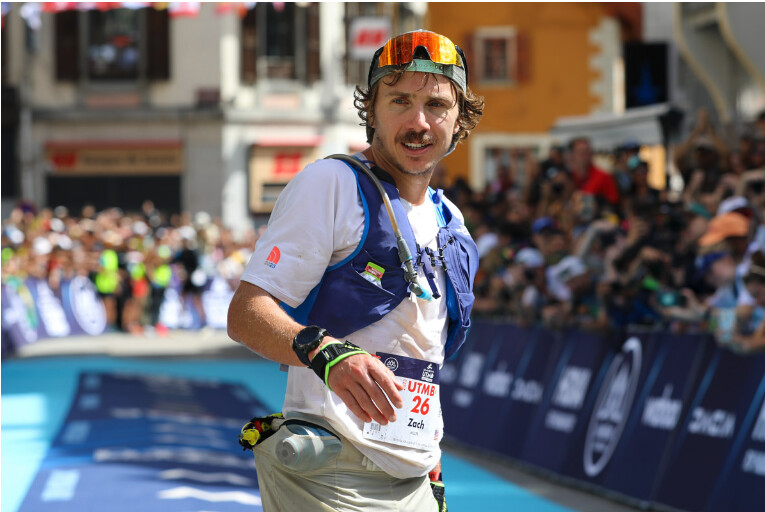
By Col du Bonhomme at 44 kilometers, it was clear that Walmsley was there to put his mark on the race. Miller doggedly hung on 30 seconds back, and Evans came through another 30 seconds in arrears, looking decidedly worse than the two men in front of him. France’s Germain Grangier (pre-race interview), Blanchard, Engdahl, and Joyeux-Bouillon continued to run together just eight minutes off the lead.
The head of the race remained amazingly consistent over the coming kilometers to Courmayeur, 81 kilometers into the race. Walmsley led Miller by a handful of minutes, Engdahl and Grangier followed, running close to each other in third and fourth, at under 20 minutes back after Evans decided to call it a day. Joyeux-Bouillon and Blanchard stayed within half an hour of the leader in fifth and sixth.
Ever the aggressive racer, Miller made his move before Arnouvaz, 99 kilometers in. He came through the checkpoint leading a fatigued-looking Walmsley by two-and-a-half minutes. Many wondered if this was just another instance of Walmsley taking the early race out too hard and paying for it later. Grangier, Joyeux-Bouillon, and Engdahl all came through the checkpoint within 30 minutes of Miller, still well within striking distance if either of the two Americans fell back. The rest of the top-10 men also remained close, with a large group containing New Zeakland’s Scotty Hawker, France’s Thibaut Garrivier, Blanchard, Switzerland’s Jean-Philippe Tschumi, and Germany’s Hannes Namberger coming in hot and fast.
Coming over a dark and foggy Grand Col Ferret at 103 kilometers, Miller extended his lead to nearly four minutes, but Walmsley looked determined and seemed to have found a second wind. Grangier continued to hold strong just 12 minutes behind the leader, and the chase pack of the rest of the top 10 remained relatively unchanged with several of the men teaming up to run the final kilometers to daybreak together.
It’s always a question of when the actual racing at UTMB starts. That is, when do runners make their move and hope that it sticks? Coming into Champex-Lac at kilometer 126 on Saturday morning, it was starting to seem like perhaps Miller’s early move might be the one that worked for the American. With an 11-minute gap over Grangier and Walmsley, who were now running together, Miller looked strong and focused. But there was still a lot of racing to do, and a lot of mountains between him and the finish.
Whether Walmsley was actually in a spot of bother in the later hours of the night, or if it was all part of his strategy to hold back until daylight, everything changed when the sunlight lit up the Alps. By kilometer 139 at La Giète, he’d whittled his gap to Miller down to two minutes, and by Trient six kilometers later, he’d moved back into the lead of the race, a position he wouldn’t relinquish. Grangier continued to run in third, with fourth, fifth, and sixth place, Joyeux-Bouillon, Blanchard, and France’s Ludovic Pommeret, all moving together 44 minutes back from the battle up front.
With the kilometers ticking by, Walmsley’s lead only continued to grow. At kilometer 154 at Vallorcine, he was more than 13 minutes ahead of a struggling Miller. Seven kilometers later at Tête de Béchar, the gap was up to 16 minutes. From here, it would be just one more climb up to La Flégère before the course tipped downward to Chamonix. Grangier maintained his third place up the final climb, with Blanchard in fourth and Pommeret in fifth, more than an hour back on the leader. Garrivier ran in sixth, while Hawker and Joyeux-Bouillon were seventh and eighth, 92 minutes back from the lead.
Once on the final descent, there was no touching Walmsley, and one can only imagine the thoughts and emotions that must have been going through his head. After five attempts at the race, the ultimate student of the course had finally figured out how to put together the race everyone thought he was capable of. He crossed the finish line to huge cheers from the crowd with a time of 19:37:43, breaking Kilian Jornet’s course record of 19:49:30. Wiping away tears while receiving congratulations from past UTMB champion François D’Haene, it was clear how much this victory meant to him.
Fellow American Miller came across the line in second with a time of 19:58:58, looking completely spent. This was his best finish during what can only be called an extended relationship with UTMB starting in 2016. Granger completed the podium with a 20:10:52.
Blanchard, last year’s second-place UTMB finisher, ended just off the podium in fourth. Maybe one of the more impressive results of this years race was of Pommeret in fifth. The 48-year-old masters athlete, who was the 2016 UTMB champion and 2022 TDS winner, showed that age really is just a number. The other surprise in the top 10 has to be Tyler Green, the American who made a late race move to finish in seventh. He didn’t move into the top 10 until Tête de Béchar, 161 kilometers in.
Race favorite Petter Engdahl withdrew at Champex-Lac, 126 kilometers into the race.
by Eszter Horanyi I run far
Login to leave a comment
North Face Ultra Trail du Tour du Mont-Blanc
Mountain race, with numerous passages in high altitude (>2500m), in difficult weather conditions (night, wind, cold, rain or snow), that needs a very good training, adapted equipment and a real capacity of personal autonomy. It is 6:00pm and we are more or less 2300 people sharing the same dream carefully prepared over many months. Despite the incredible difficulty, we feel...
more...Kilian Jornet pulls out of UTMB with injury
While the roster of talented athletes ready to jostle for the win at the 171-km Ultra Trail du Mont Blanc (UTMB) on Sept. 1 is still ridiculously deep, one notable competitor will be absent: four-time winner and course record holder Kilian Jornet.
The athlete announced on social media Thursday that he would not be attending due to an injury that hasn’t healed. “No UTMB for me this year,” Jornet shared. “I still can’t run due to the sacrum injury so we decided it was better to prioritize a good recovery and try to do something fun when the pain disappears.”
Fans were eager for a rematch between Jornet and Canadian Mathieu Blanchard, who will be vying for his third consecutive podium finish in Chamonix. Blanchard ran last year’s race in 19 hours, 54 minutes and 50 seconds to finish a close second behind Jornet, who ran 19:49:30, setting a new course record.
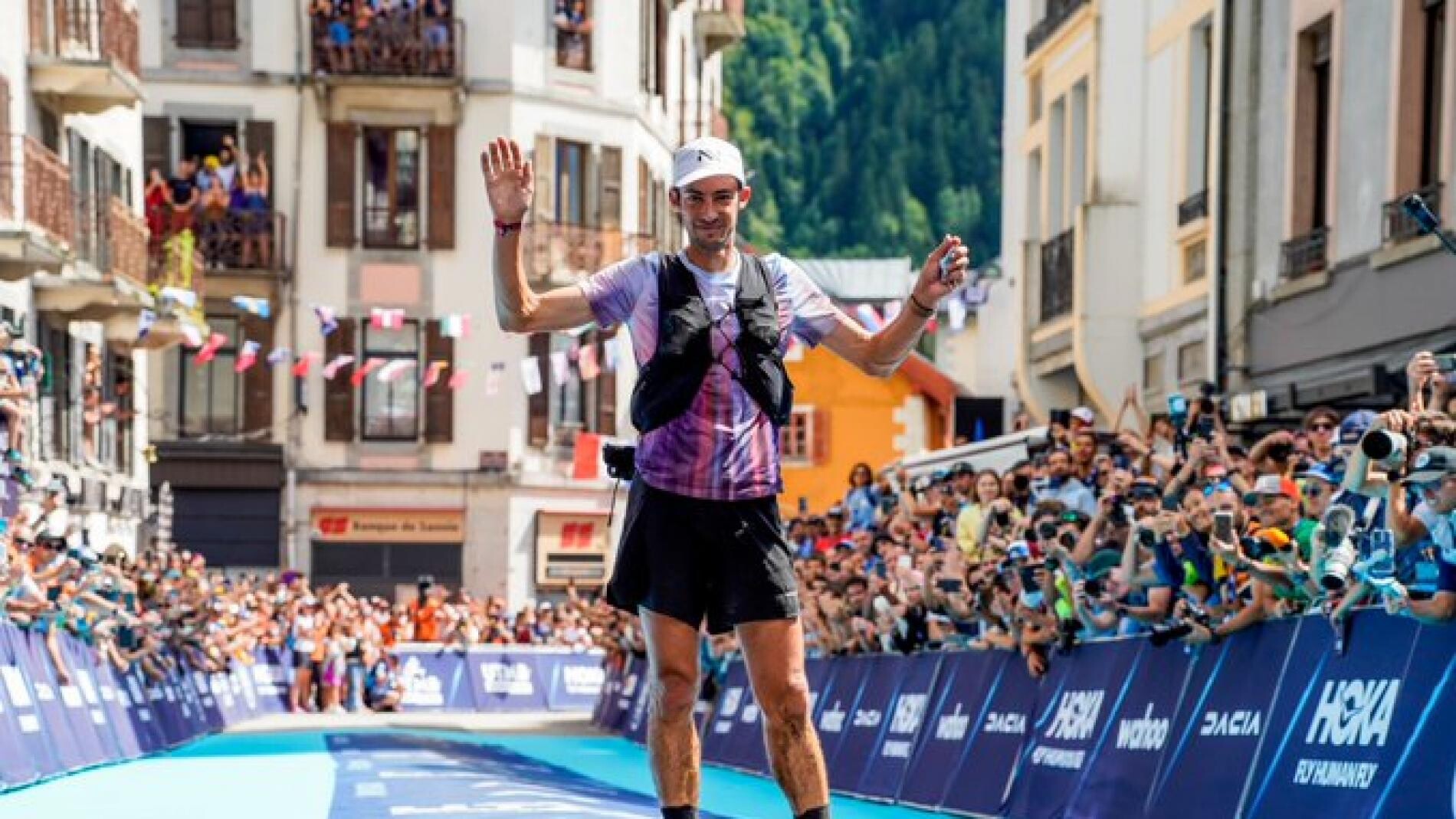
Jornet battled through injury in the Eiger Ultra Trail by UTMB, vying for a UTMB Running Stone that would allow him to compete in the final UTMB event in Chamonix. While Jornet leads the UTMB Index with a 945 rating, he needed to finish the race to become a contender in the final. The athlete injured his sacrum in training two days before Eiger Ultra, but fought through to finish in 48th place in a race won by 16-year-old Swiss athlete Lorick Buclin (1:21:26).
“Some days before Eiger Ultra trail I started to feel pain in my right hip, Jornet shared on Instagram. “I thought it was a muscle problem or tendinitis that would go away with some easy days, but after a check we found out it’s a bone edema.” The multi-sport mountain athlete explained that he suspected the cause was returning to big running weeks too quickly after a Himalayan expedition that left him with broken ribs and a hip injury.”It feels it’s a bad timing to get this injury so close to the races but managing injuries and recovery is part of an athlete’s life,” he said.
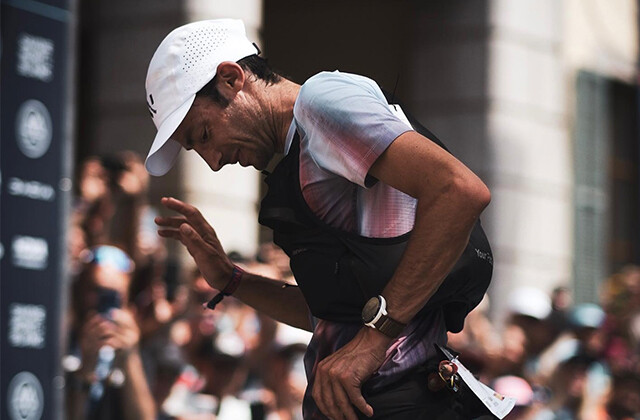
While Jornet expressed hopes in late July that he would be able to line up along the likes of Americans Jim Walmsley and Courtney Dauwalter, British ultrarunner Tom Evans and Canadian Blanchard, the athlete decided against it. Fans can hope to see him crewing his wife, Swedish ultrarunner and ski mountaineer Emelie Forsberg, who will be lining up at CCC (Courmayeur–Champex–Chamonix), the 100K race at the UTMB World Series Finals.
Jornet is somewhat of a legend at UTMB, first winning the race in 2008 as a 20-year-old and returning to win 2009, 2011 and 2022. Jornet has a long list of accomplishments and holds the fastest known time speed record for the ascent and descent of major mountains, including the Matterhorn and Mont Blanc.
by Keeley Milne
Login to leave a comment
North Face Ultra Trail du Tour du Mont-Blanc
Mountain race, with numerous passages in high altitude (>2500m), in difficult weather conditions (night, wind, cold, rain or snow), that needs a very good training, adapted equipment and a real capacity of personal autonomy. It is 6:00pm and we are more or less 2300 people sharing the same dream carefully prepared over many months. Despite the incredible difficulty, we feel...
more...Montreal ultrarunner Mathieu Blanchard to join star-studded UTMB field
Montreal’s Mathieu Blanchard has confirmed he will toe the start line at Ultra Trail du Mont-Blanc in two weeks, joining an elite lineup that organizers of the 171-km race are billing the strongest elite field since the race began 20 years ago.
Blanchard will be vying for his third consecutive podium finish in Chamonix on Sept. 1. He ran last year’s race in 19 hours, 54 minutes and 50 seconds to finish a close second behind Spain’s Kilian Jornet, who ran 19:49:30 for a new course record. In 2021, Blanchard finished third behind French runners François D’haene (20:45:59) and Aurélien Dunand-Pallaz (20:58:31).
In June, Blanchard ran 15:37:02 to finish sixth in his Western States Endurance Run debut. He told Canadian Running after the race that Western States presented a uniquely difficult challenge: “I pushed through, I fought hard, my body was super painful like never before,” he said, adding he was proud to earn the “mythic buckle” awarded to Western States winners.
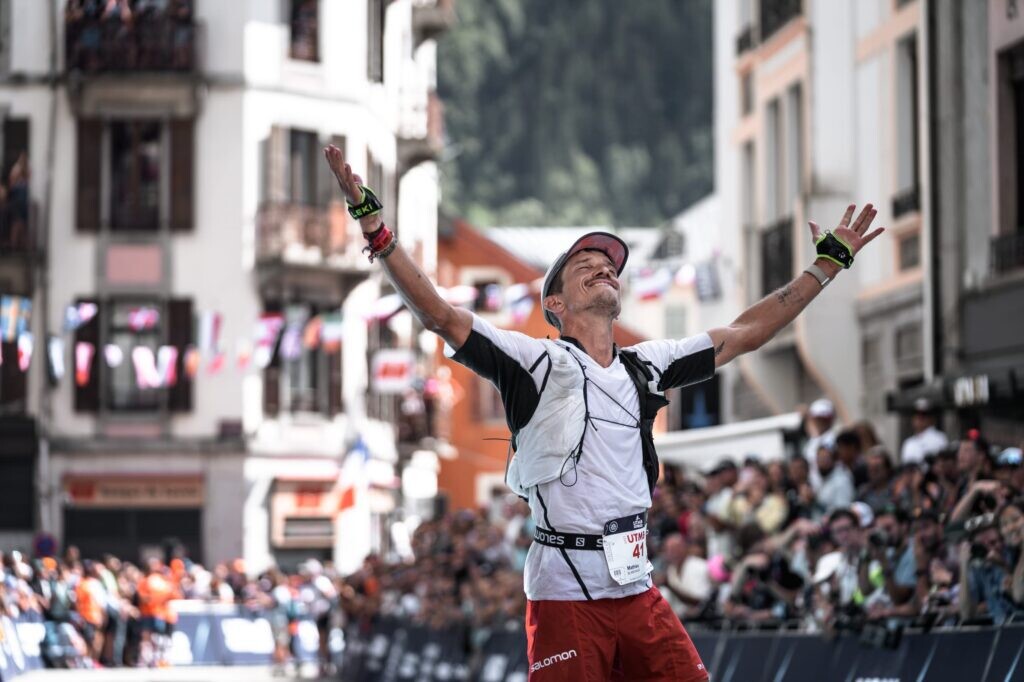
Among the giants of trail running Blanchard will be up against at UTMB is British runner Tom Evans, who ran the fourth-fastest time in Western States history (14:40:22) to win this year’s men’s race, and who finished behind Blanchard at last year’s UTMB to place third (20:34:35).
“I’m incredibly enthusiastic about the idea of taking part in the UTMB this year,” Evans recently told UTMB. “I’m coming into the event in a much better position than last year when I was fresh from a knee operation. The race is so full of history and for the 20th anniversary, I want to be part of the story by doing a Western States 100 Endurance Run and UTMB double. It’s a big challenge and with the strength of the peloton, it won’t be easy, but it’s a contest I’m looking forward to and believe I can achieve.”

In addition to Jornet, this year’s men’s field will see the return of American Jim Walmsley, who finished fourth in last year’s race (21:12:12) and who has held the Western States course record (14:09:28) since 2019.
Other notable entries in the men’s field include Swiss runner Jonas Russi (winner of the Lavaredo Ultra Trail by UTMB 2023), fellow Swiss runner Jean-Philippe Tschumi (who shared victory at the 100K Trail 100 Andorra by UTMB with the American Ben Dhiman) and Sweden’s Petter Engdahl.
Arguably the most compelling storyline from this year’s UTMB will be American trail running phenom Courtney Dauwalter‘s quest for the triple crown following her resounding victories at Western States (where she ran 15:29:33 to smash the 16:47:19 course record set by Canadian Ellie Greenwood in 2012) and Hardrock 100 (where she set a new course record in 26:14:08). The Golden, Colo.-based runner won UTMB in 2019 (24:34:26) and again in 2021, when she set the current women’s course record (22:30:54).
She stands to face fierce competition from an elite field that includes New Zealand’s Ruth Croft (who finished second at Western States last year), Germany’s Katharina Hartmuth (winner of this year’s Eiger Ultra Trail by UTMB), Italy’s Martina Valmassoi (winner of the 2022 TDS in Chamonix) and Hungary’s Eszter Csillag, who finished fifth at last year’s UTMB.
by Paul Baswick
Login to leave a comment
North Face Ultra Trail du Tour du Mont-Blanc
Mountain race, with numerous passages in high altitude (>2500m), in difficult weather conditions (night, wind, cold, rain or snow), that needs a very good training, adapted equipment and a real capacity of personal autonomy. It is 6:00pm and we are more or less 2300 people sharing the same dream carefully prepared over many months. Despite the incredible difficulty, we feel...
more...2023 Western States 100 Men’s Race
There’s nowhere to go but up at the start of the Western States 100, and Jia-Ju Zhao from China charged the opening climb. Despite snow, Zhao hit the top in 42 minutes. Slower to the top, Frenchman Mathieu Blanchard (pre-race interview) and Brit Tom Evans (pre-race interview) turned to greet the brilliant sunrise together.
Zhao won the Ultra-Trail Mt. Fuji 100 Mile in April 2023 and is a two-time winner of the Doi Inthanon by UTMB 100 Mile in Thailand. He pushed his early lead to five minutes at Lyon Ridge, mile 11, while 2022 fourth-placer Tyler Green led the early chase group. Green had finished as high as second here before, in 2021, but was running more aggressively toward the front earlier than ever before.From mile-15 Red Star Ridge to mile-25 Duncan Canyon, the chase group started to make up time on Zhao. Tom Evans, Chinese runner Jia-Sheng Shen, and Dakota Jones (pre-race interview) were among a group that cut four minutes from Zhao’s lead over just nine miles. Evans was third here in 2019 in 14:59, and Jones had just biked 680 miles from his home in Utah to the race start.
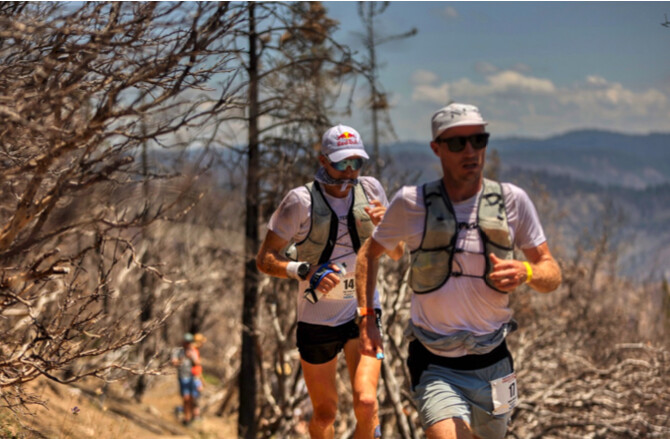
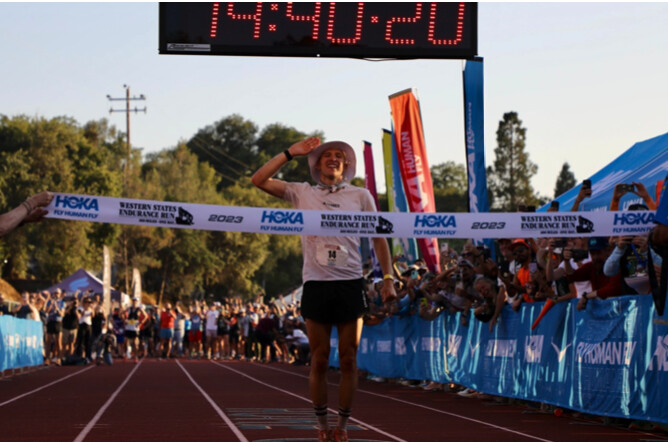
Zhao was quickly swallowed up in the next five miles to Robinson Flat, mile 30, and soon fell out of the top 10. A lead trio of Tom Evans, Dakota Jones, and Jia-Sheng Shen came into aid at 4:45, meeting their crews for the first time. At mile 30 and with Zhao falling backward, Anthony Costales (pre-race interview) was fourth, and then he was with Tyler Green at mile 38 in fourth and fifth. The two would barely separate the rest of the race.Evans and Jones dropped Shen on the climb to Devil’s Thumb, mile 48, and the two leaders came into aid together in 7:03. Four minutes back Costales had caught Shen on the big climb, and Tyler Green, Jeff Colt, New Zealand’s Daniel Jones, Ryan Montgomery, Mathieu Blanchard, and 47-year-old Ludovic Pommeret were inside the top 10. Those six were 14 minutes apart. 2022 third- and second-place finishers Arlen Glick (pre-race interview) and Hayden Hawks (pre-race interview) were back in 11th and 16th, respectively. After earlier moving up, Hawks had just lost several places and would later drop with injury at mile 55. Other top-10 finishers from 2022 Cody Lind, Scott Traer, and Alex Nichols were all noticeably outside the top 10 too.
As the race shifted to its mile-62 Foresthill hub, Evans gained some separation on Jones and entered the aid station first, but as Evans changed shoes and socks, Jones didn’t wait and exited first. Jones was now in the lead by himself for the first time and he was overheard voicing his intention to break Evans. Some 11 minutes back of those two leaders, Green and Costales were again together and in third and fourth. Shen and Jeff Colt were just minutes back of those two, and Colt was remarkably almost an hour faster than a year ago when he finished 11th.Jones and Evans separated leaving Foresthill and anticipation ran high for their next steps. The two had been together for nearly the entirety of the race to this point. Jones wanted to make a move and Evans wanted to keep up with (the) Jones. The duel ended quickly and dramatically though. Tom Evans dropped a 5:54 downhill mile and hit Cal 2, mile 71, in 10:12. That surge pushed Jones eight minutes back at mile 71. It was just nine miles from Foresthill to that split on Cal Street, but the front two had shattered and moved in opposite directions the rest of the race.
Evans ran alone to the river crossing at mile 78, and ultimately to the finish. Tyler Green, Anthony Costales, Jeff Colt, and Jia-Sheng Shen all overtook Dakota Jones on the way to the river too. Forget about Elm Street, Jones was having a bit of a nightmare on Cal Street.
Evans, the 2022 UTMB third placer, continued to put time on the field the rest of the way. He finished in 14:40 and that’s the race’s fourth fastest finish ever. The mark trails only Jim Walmsley and Jared Hazen in 2019, and Walmsley’s 2018 mark too. Evans was a runaway winner, but the rest of the top 10 was much more closely packed.Tyler Green pushed on in second, and held off an Anthony Costales chase over the last 15 miles. Green finished in 15:04. It was his second runner-up finish and a big personal best for the course. He was able to finish with his baby boy on his shoulders. Green’s 15:04 was the race’s 11th-fastest finish ever. Costales was third in 15:09, the race’s 13th-fastest finish ever.
Jia-Sheng Shen and Daniel Jones both finished fast. Shen clocked 15:19 and Jones was fifth in 15:22. Mathieu Blanchard and Ryan Montgomery both overtook Jeff Colt late. Those three — Blanchard, Montgomery, and Colt — finished in 15:37, 15:38, and 15:42, respectively. Local runner Cole Watson bettered his 2022 14th-place finish with a ninth-place 15:54.
In 2019 the top 10 all went under 16 hours. This year’s 10th-place man Janosch Kowalcyzk from Germany just missed matching that feat. He finished in 16:09.
Seven of last year’s top 10 returned, but only Tyler Green was able to again make the top 10. The 2022 top 10 finishers Ludovic Pommeret, Arlen Glick, Scott Traer, Cody Lind, and Alex Nichols finished 12th, 13th, 15th, 16th, and 28th this year, respectively. As earlier mentioned, 2022 runner-up Hayden Hawks dropped.
After running near or in the lead through Foresthill, Dakota Jones finished 17th in 17:00.
Early leader Zhao’s high risk, high reward start ended with a drop at Michigan Bluff, mile 55.
by Justin Mock I Run Far
Login to leave a comment
Western States 100
The Western States ® 100-Mile Endurance Run is the world’s oldest and most prestigious 100-mile trail race. Starting in Squaw Valley, California near the site of the 1960 Winter Olympics and ending 100.2 miles later in Auburn, California, Western States, in the decades since its inception in 1974, has come to represent one of the ultimate endurance tests in the...
more...2023 Western States 100 Men’s Preview
The Western States 100 is set for 2023. The iconic point-to-point, net-downhill course takes in 100.2 miles, 18,000 feet of climbing, and 22,000 feet of descending, as it starts at the Palisades Tahoe ski resort in Olympic Valley, California, and finishes at Placer High School in Auburn.
Environmental conditions will play into the race’s competitive story this year. With record snowfall throughout the upper elevations of the Sierra Nevada, the mountain range through which the race travels, runners will encounter plenty of snow over the course’s first quarter, along with numerous high water crossings lower down as all that snow melts.
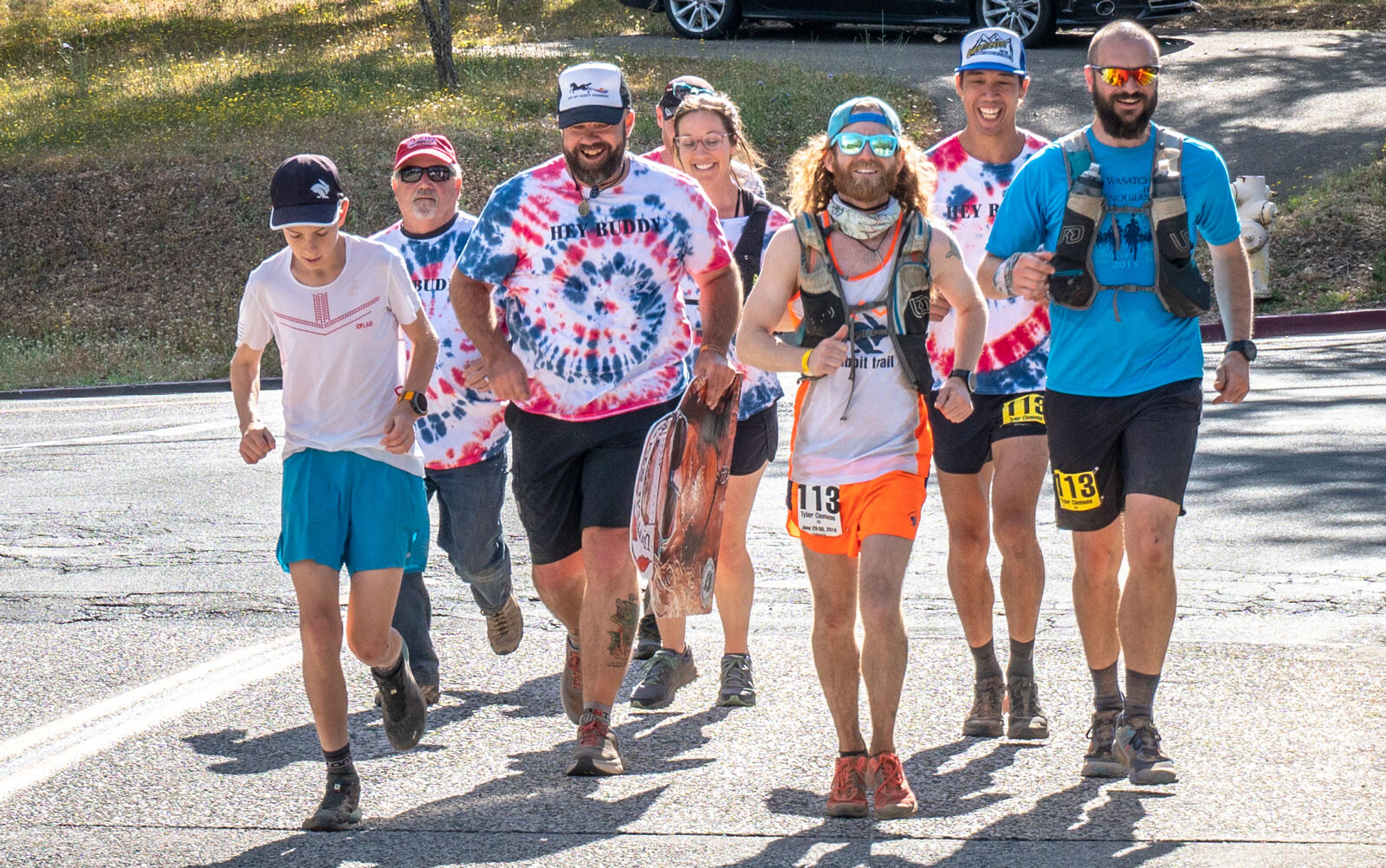
Some 16 miles of the course were burned over by last fall’s Mosquito Fire, leaving miles of shade-less terrain. And of course, there will probably be weather at play, with the event’s notorious heat likely to encompass the middle and lower elevations of the course.
The men’s race at last year’s Western States 100 was sharp, with just 50 minutes separating the first and 10th finishers. Seven of that stellar line-up are back this year, as well as some serious additions like the U.K.’s Tom Evans, French-Canadian Mathieu Blanchard, and Dakota Jones.
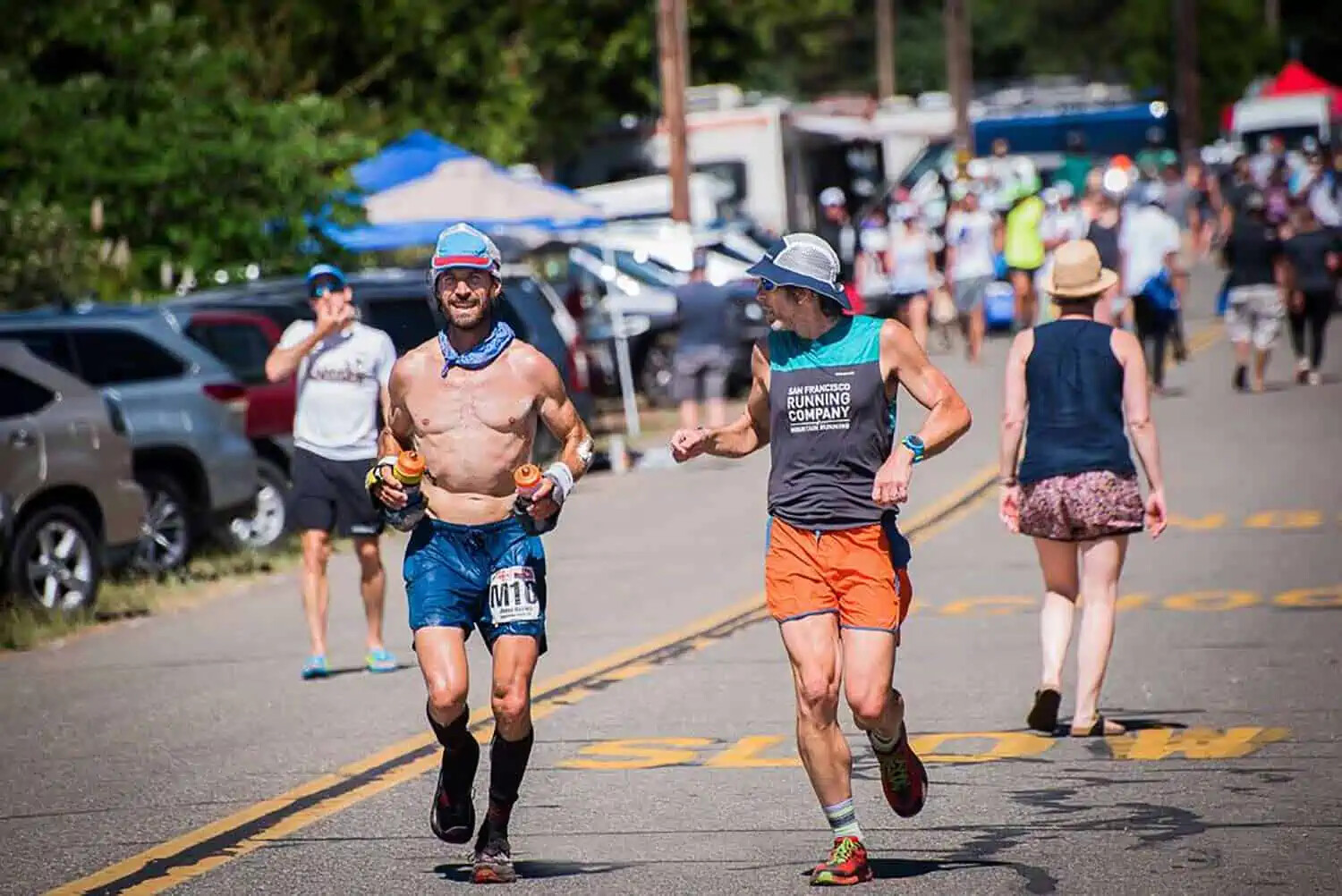
Although there are notable absentees including reigning champion Adam Peterman and course-record holder Jim Walmsley, the depth of this men’s field suggests it could be an even tighter race this year.
As you’d guess, iRunFar will be there to report firsthand on all the action as it unfolds starting at 5 a.m. U.S. PDT on Saturday, June 24. Stay tuned!
A special thanks to HOKA for making our coverage of the Western States 100 possible!
Be sure to check out our in-depth women’s preview to learn about the women’s race and, then, follow our live coverage on race day!
The top 10 runners in the 2022 race were invited to return for 2023. Unfortunately, reigning champion Adam Peterman is out with injury, and seventh-place Vincent Viet of France has opted not to return. It also looks like fifth-place Drew Holmen has withdrawn, as he just finished fifth at the Trail World Championships 80k, held in Austria 15 days before Western States.
Hayden Hawks – 2nd, 15:47:27
Last year’s second-place man, Hayden Hawks, was pretty jovial in his post-race interview about not being able to best race winner Adam Peterman. But without the reigning champion present on the start line, this could be Hawks’s year. Despite struggling with the heat last year, his finish time knocked two hours off his eighth-place finish from 2021, and there are lots of indicators that he could have more to offer on this course.
Some of his previous top performances include a 5:18 win at the 2020 JFK 50 Mile and a win at the 2018 Lavaredo Ultra Trail. So far this year, he’s warmed up by winning the Canyons 50k and taking second at the Tarawera Ultramarathon 100k.
Arlen Glick – 3rd, 15:56:17
Arlen Glick surpassed a lot of people’s expectations when he took third at Western States last year. Although he went into the race with bag of form in the 100-mile distance — having won the Javelina 100 Mile, the Mohican 100 Mile and the Burning River 100 Mile all in 2021 — this was his initiation into mountainous ultrarunning. He took to it very well, running a stormer to place third, and has since logged more mountain miles, taking second in the Run Rabbit Run 100 Mile later in 2022, before returning to the 2022 Javelina 100 Mile to place third.
Tyler Green – 4th, 15:57:10
Tyler Green took fourth at Western States last year, and forced third-place Arlen Glick into an uncomfortable sprint finish as he closed on him in the race’s final moments. In terms of placing, he was back from his second-place finish in 2021, but improved his finish time by about 14 minutes in his third go at the race. In 2019, he placed 14th in a time of 16:51, in what was a very fast year.
Following on from Western States last summer, he had a below par run at the 2022 UTMB, making it just inside the top 50, but showed he is back on form with a third-place finish at the 2023 Transgrancanaria. Last year in his pre-race interview he spoke about stepping back from his day job of teaching to focus more on track coaching and his own running, so that may have allowed him to come into this year’s race with better preparation than previous years.
Ludovic Pommeret (France)
Ludovic Pommeret, sixth at last year’s Western States, went on to inspire veteran racers everywhere with a commanding win at the 2022 TDS at age 47 — almost an hour clear of second place on the demanding route. Some of his other top performances include a win at the 2016 UTMB, where he also took fourth in 2021, and a win at the 2021 Diagonale des Fous.
He’s probably at the other end of the spectrum of Arlen Glick, in that his best performances have been on courses more mountainous than this one, but he’s still not to be underestimated.
Not many ultra-trail runners have made Kilian Jornet sweat to the degree that French-Canadian Mathieu Blanchard did at last year’s UTMB. The two battled it out all day for a close finish, in which Blanchard took second place — under the existing course record — thus earning his Golden Ticket into Western States. He’s been mixing it up a lot this year, taking second in the 146-mile Coastal Challenge Expedition Run stage race in Costa Rica, third in the Marathon des Sables, and running 2:22 in what looked like a fairly casual effort at the Paris Marathon.
by Sarah Brady
Login to leave a comment
Western States 100
The Western States ® 100-Mile Endurance Run is the world’s oldest and most prestigious 100-mile trail race. Starting in Squaw Valley, California near the site of the 1960 Winter Olympics and ending 100.2 miles later in Auburn, California, Western States, in the decades since its inception in 1974, has come to represent one of the ultimate endurance tests in the...
more...More Prize Money Is Flowing Into Trail Running. What Does That Mean for the Sport?
Annie Hughes, one of the top trail runners in the U.S. for the past two years, had another amazing season running ultra-distance races in 2022. On September 17, the 24-year-old Hoka-sponsored runner and part-time college student won the Run Rabbit Run 100 in Steamboat Springs, Colorado, her fourth win of 100 miles or longer since April. Earlier this year, she won the Coldwater Rumble 100 in January, Cocodona 250 in April and the High Lonesome 100 in July.
Those were all exceptional efforts in really challenging races, but the big difference she experienced after crossing the Run Rabbit Run finish line, 21 hours and 26 minutes later, was that she won $17,500. (And yes, she was handed one of those cartoonish, oversized checks at the awards ceremony.)
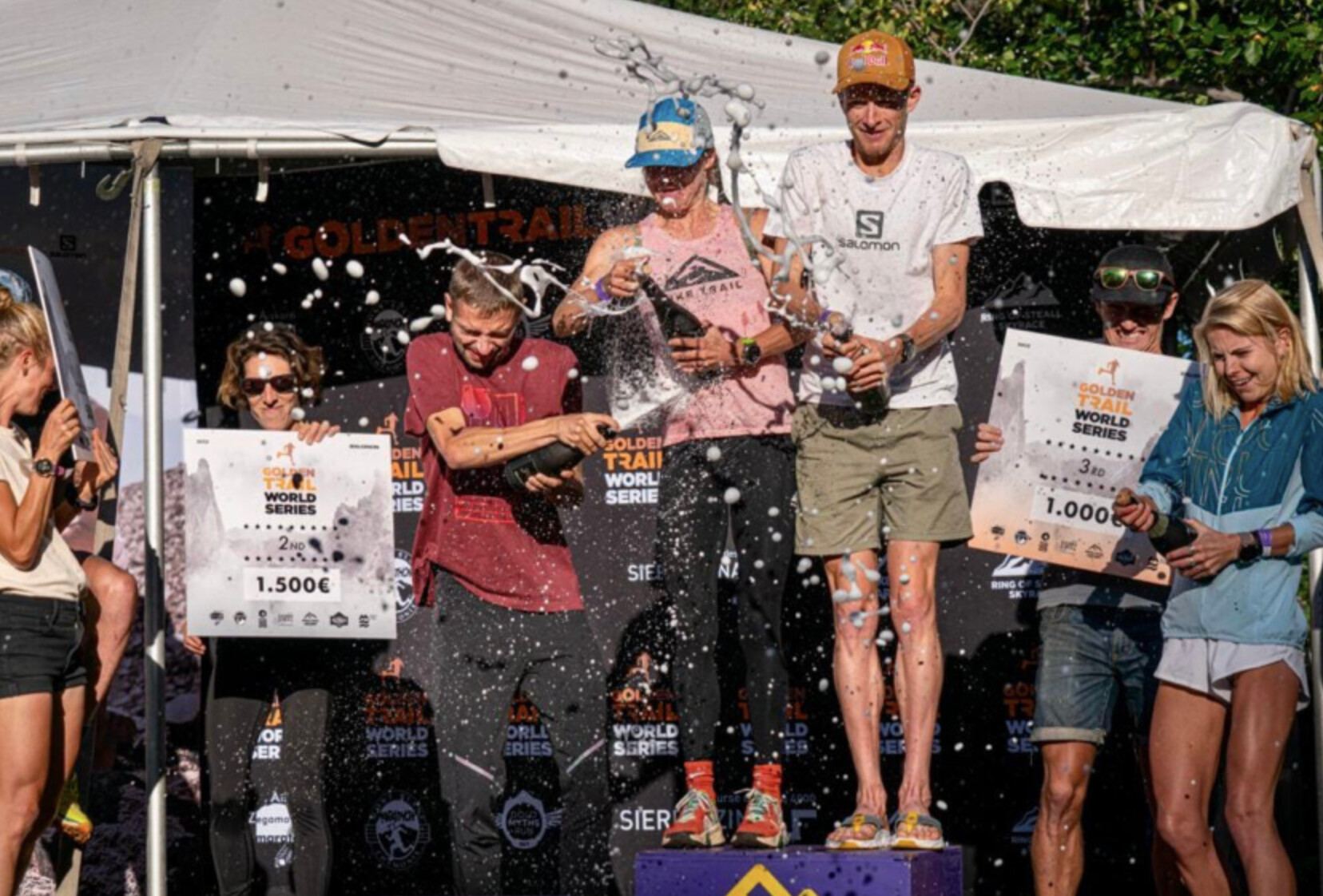
Run Rabbit Run is one of the rare American trail races that offers a relatively large prize purse, and for a decade, it's been the largest in the sport. Hughes earned $15,000 for winning the women's race and split another $5,000 with Arizona trail runner Peter Mortimer (who placed 12th overall) as part of the event's new team competition.
"That wasn't the reason I was drawn to the race, but it was definitely pretty cool to win that much money," Hughes said. "I'm glad I did it, because it wound up being a really great race with an amazing course on a beautiful day."
The origins of trail running were always more about the joy and freedom of ambling through the natural world, and less about the specific time and pace of any run or race, which is why winning big cash prizes is mostly uncommon in the sport, even for top-tier runners like Hughes. Over the past two years, Hughes has won 10 races of 50 miles or longer, yet her Run Rabbit Run victory was the first time she's ever earned money for her efforts.
More sponsorship money and bigger cash prizes are flowing into the sport, helping the top athletes earn a full-time living in the sport and become global stars. But that evolution has also created a desperate need for a unified governing body and more consistent drug-testing as doping becomes a more acute concern.
A Windfall of Prize Money
Historically, America's biggest and most notable trail running races haven't offered any prize money at all-Western States 100, Hardrock 100, Dipsea Trail Race, Leadville 100, Mount Marathon Race, Seven Sisters, Black Mountain Marathon/Mount Mitchell Challenge-partially because races simply couldn't afford to pay it, and also because, at the soul of the sport, that's not what the races were historically about or why most top runners were competing.
But with the continued growth of the sport-trail running has grown by 231 percent over the past 10 years, according to one report-and the dawn of a new level of professionalization over the past decade, there is a lot more money being injected into the sport. That includes more high-profile events and race series, more brands investing in the sport, more sponsored runners and trail running teams, as well as a growing expectation that prize money should be part of the equation as it is in road running, triathlon, and even obstacle course racing.
For many years, The North Face 50 near San Francisco was one of the only ultra trail races in the world to offer a significant prize purse. From its inception in 2006, until it disappeared after 2019, that race famously awarded $30,000 in prize money, which included $10,000 to the top finishers in the men's and women's races, plus $4,000 for second and $1,000 for third. It was a race to look forward to at the end of the calendar year, both for the cash awards and the prize-induced competition that drew top runners from around the world.
During that span, Run Rabbit Run, though a lower-profile race, quietly began dishing out some of the biggest payouts in the sport, in part because race organizers Fred Abramowitz and Paul Sachs believe in rewarding its top athletes for their efforts (as well as giving back to the community via even bigger charitable contributions). The race winnings come primarily from entry fees of the 600-runner event and sponsors, if and when the race has them. That wasn't possible back in the early days of the sport, when entry fees were minuscule and cash sponsors were mostly non-existent, but things have started to change.
Abramowitz and Sachs, who both earn their living as attorneys, are unique in that they want to give back to the elite athletes and the Steamboat Springs community, but they also want to help grow the sport. Abramowitz outlined what he calls "A Blueprint for Sponsors of Ultra Running," a three-page document that explains how and why trail ultrarunning-both as a sport and as individual races-can connect to more casual runners, sports fans, and the general public.
He points to the rampant growth of NASCAR, Professional Bull Riding, and professional poker over the past 20 years from their roots as fringe sports, relatively speaking, to mainstream spectacles with massive fan bases, TV contracts, and social media followings. Trail and ultrarunning aren't there yet, Abramowitz has noted, but they've certainly been growing rapidly.
"Today millions watch those events, though the actual number of participants is minuscule," Abramowitz wrote in his missive. "Ultrarunning can learn from these events: it needs new ideas, new ways of attracting the already committed runners and the casual sports fan to our terrific sport. Fields need to be competitive and races [need to be] dramatic; there are hundreds of 100-mile races, but those that offer competitive fields are a handful at most. Most ultra-races offer spectacular scenery in interesting venues."
Abramowitz said sponsors should support races such as Run Rabbit Run that offer prize money not merely because it's good for sport, but also because prize money can attract competitive fields, and competitive fields attract interest-from spectators, participants, potential sponsors, and the general public. He also points out that having prize money at more domestic races is a way to keep the sport from becoming entirely Euro-centric, which has been an increasing trend in the past several years.
The trend of cash purses seems to be increasing, and on the face of it, that's good for elite athletes capable of podium finishes. But it's a complex topic and one that certainly will simultaneously increase the competitiveness of the sport while, some argue, continue to pull the sport away from its organic, racing-in-nature roots that was mostly viewed as the antithesis of competitive road racing.
On the same day Run Rabbit Run paid out $75,000 in total prize money, the Pikes Peak Ascent awarded $18,000 in prize money for its top 10 finishers-including $3,000 apiece to the men's and women's winners-while the Pikes Peak Marathon, on September 18, had an additional $10,500 in total prize money for the top five runners. The races also offered $2,000 (Ascent) and $4,000 (Marathon), respectively, as course-record bonuses, and a $10,000 premium to any runner surpassing a pie-in-the-sky time well ahead of the course records. None of those records were broken, but the $28,500 in total prize money-partially backed by the Salomon-sponsored Golden Trail Series-was one of several large prize purses offered at U.S. races this year.
Other big American prize purses were also primarily tied to the Golden Trail Series events-the $50,000 spread over four races at the mid-June Broken Arrow Sky Races in Olympic Valley, California, and the September 25 Flagstaff Sky Peaks 26K race in Flagstaff, Arizona, where runners competed for $18,000 in prize money and a chance to compete at the Golden Trails World Series Final, and the $15,000 winner's earnings at the Madeira Ocean & Trails 5-Day Stage Race in October.
Also of note, the November 18-20 Golden Gate Trail Classic paid out $25,000 in total prize money to the top five finishers in both the 100K and half-marathon races, which were part of this year's nine-race $270,000 Spartan Trail World Championship Series.
Meanwhile, the Cirque Series, sponsored by On, paid out $3,600 in total prize money at each of its six sub-ultra mountain running races in the U.S., including $1,000 for the men's and women's winners. The Mt. Baldy Run-to-the-Top on September 5 in Southern California offered $3,000 to runners who broke the event's longstanding course records, and Joe Gray and Kim Dobson obliged by taking down each mark.
Most U.S. Trail and Mountain Running Championships have a minimum of $2,000 in prize money. Typically that comes from regional sponsors eager to support the local race organizations, such as the case with Northeast Delta Dental's contributions behind this year's Loon Mountain Race in Lincoln, New Hampshire, which hosted the U.S. Mountain Running Championships. That event had a $1,500 total prize purse that was paid out to the top three men and women in each race, but it also had an additional $1,500 for an Upper Walking Boss premium that was spread among the top three fastest times in each gender on the super-steep upper part of the course.
Meanwhile, the 2022 World Mountain and Trail Running Championships in Thailand paid out $66,000 to the top five finishers over four races, including $4,000 to the winners of each event.
"(The prize money) is way better than it's ever been, both for the athletes earning it and the number of sponsors who are contributing to it," says Nancy Hobbs, executive director of the American Trail Running Association and the chairperson of the USATF Mountain Ultra Trail Council that oversees national championship races and the U.S. Mountain Running Team.
From a longer view over the past decade or so, Joe Gray agrees there is more money coming into the sport than ever before. As a top-tier pro since 2008 and 21-time U.S. champion, he's regularly won more prize money at high-level races in Europe for more than a decade. But more than the growth of prize money, he has seen more brands interested in putting money behind athletes, races, and the sport in general.
"I think there has always been prize money there, and if you're successful you could make a lot more money really quickly," said Gray, a two-time World Mountain Running Champion. "I do think there is more money coming from the sponsors paying out better contracts and bigger bonuses, which I think will wind up being more beneficial to athletes overall."
Most elite trail runners get annual stipends from their sponsoring brands and bonus money for top performances. Gray is backed by Hoka, but he also has sponsorship deals with Fox River Socks, Kriva, Never Second, Knockdown, Tanri, Momentous, Casio, and GoSleeves. In addition to Hoka, Annie Hughes gets additional support from Ultraspire, Coros, and Tailwind Nutrition. But the life of professional trail runners-independent contractors who don't get healthcare and retirement program benefits-can get expensive with the growing cost of travel, regular bodywork/physio treatments, and private health insurance.
The sport's top-tier elite athletes-Joe Gray, Kilian Jornet, Courtney Dauwalter, Jim Walmsley, Maude Mathys, and Scott Jurek, among others-make a good living from their sponsorships. But there are really only a handful American trail runners making more than about $50,000 a year from shoe brand sponsorships. (Most "sponsored" trail runners are making somewhere between $10,000 to $30,000 per year.) The bottom line is that winning prize money, for those who are fast enough to consistently finish on the podium in big races, certainly helps make ends meet and is necessary to keep the sport's top athletes from having to work other jobs so they can focus entirely on training, recovery, and racing.
"This [2022] is the first year I've gone all-in on trail running," said Hughes, who worked as a waitress in Leadville the previous two years. "I'm able to live off what I make, but I'm not really saving anything. So it was really nice to win that money because then I can put some away in savings."
Higher European Standards
So far, Abramowitz appears to be right about the sport shifting to more of a European focus, and it's, at least in part, tied to the increased prize money that has attracted competitive athletes. While many top-tier European events have paid out modest prize purses for years, some of those races have also helped out visiting runners by way of travel stipends, hotel accommodations, or appearance fees. That's partially because European races are generally larger (500 to 1,000 participants or more) than U.S. races (typically fewer than 500 participants).
Unlike Hughes, who only raced in the U.S. this year, American runner Abby Hall, who runs for the Adidas-Terrex team, raced three times in Europe and earned prize money each time. She placed second in the Transgrancanaria 126K in the Canary Islands in March (which doubled as the Spartan Trail World Championship), finished third in the CCC 100K in Chamonix in August, and won the Transvulcania by UTMB 72K back in the Canary Islands in October.
Like Hughes, Hall receives an annual stipend and race bonuses from her sponsor, but admits it's been nice to have more opportunities to win money-both because it helps her make a living wage and because it's consistent with other professional endurance sports.
"In the past, it hadn't even been a consideration before, for how income would work out as an athlete," Hall said. "But this year it actually added up to be a decent amount. I'm grateful for the opportunities."
In 2022, American runner Hayden Hawks won an off-the-radar 100K a race in Krynica, Poland, and brought home the 100,000 zloty winner's prize ($26,000), one of the bigger individual purses ever awarded in trail running. In 2017, when Hawks won the CCC race, he didn't win anything because UTMB had refused until 2018 to offer prize money at its races, partly because race founders Catherine and Michel Poletti have believed that increased prize money will bring more incentive for some athletes to consider doping or that agents would take too big of a cut.
UTMB finally began offering prize money to podium finishers in 2018 with a total purse of about $34,000 (35,000) and continued that through 2021. But after forging a business relationship with Ironman and launching the new UTMB World Series, it has increased the prize money awarded in Chamonix. In 2022, UTMB said it paid out about $162,000 in total prize money (the approximate equivalent of its stated 156,000 prize purse) to the top 10 men and women finishers of the UTMB, CCC, and OCC races.
That includes $10,400 to the winners of each of those races, with approximately $5,200 going to second-place finishers and $3,125 for third. Fourth- and fifth-place finishers in each of those races earned about $1,500, while 6th through 10th took home $1,000.
While those more notable ultrarunning paydays can be big windfalls for a trail runner, they still pale in comparison to what elite-level road marathoners and triathletes earn at the biggest races that have a much larger audience, including live TV coverage. For example, the 2022 Boston Marathon awarded $876,500 in prize money and $150,000 to the winners, while New York City Marathon paid out $530,000 in total prize money at its November 6 race, including $100,000 to the men's and women's winners. The 2021 Ironman World Championships in St. George, Utah, had a $750,000 prize purse, including $125,000 to the winners, similar to what was awarded at the 2022 Ironman World Championships October 6-8 in Hawaii.
While only a few top trail runners could have opted to pursue a marathon or triathlon career instead of trail running, what's more relevant is the spike of growth trail running. Although it is not yet internationally televised as major marathons and triathlons are, the surge in participation and livestream viewing options is starting to bring in more media attention and sponsorship money than ever before. And more media attention begets more participation and professionalization.
"I think we'll definitely see ultra-trail running continue to grow for years to come," says Mike McManus, director of global sports marketing for Hoka. "I think it's at a point where it's just on the cusp of the real growth that's coming and all that will come with it, similar to where the marathon was in the 1980s and triathlon in the 1990s. It might never be as big as marathoning, but trail running will definitely get more built out as it continues to grow."
"It's nice to make some money for the sport we do. This is my job, and being able to support my family with a decent chunk of money is pretty nice," Hawks says. "I definitely don't go after races just for money, but if there is a gap in my schedule where I can win a little bit of money, I am definitely going to take advantage of that for sure. I want to continue to be in this sport and live this lifestyle as long as I can, so knowing that there are sponsors and races investing more in runners is something I am really grateful for."
The Ongoing Dilemma
While Abramowitz and Sachs have been eager to give out prize money at Run Rabbit Run, not all races are equipped to do so. Many U.S. races are garage-shop operations that barely break even, while some are just too small to make it happen. The Western States 100-Mile Endurance Run (WSER) is operated by a non-profit organization, and offering prize money goes against the mission of the race, says race director Craig Thornley.
The biggest concern that race directors have, including Thornley, is that prize money attracts athletes willing to use performance-enhancing drugs because the sport lacks a comprehensive anti-doping strategy that includes both post-race testing and out-of-competition testing.
"In general, I think the prize money is probably a good thing because professional athletes are able to make a living," Thornley said. "But I think, as a sport, we'll probably have to be more aware of people trying to use drugs or some other ways to get that prize money."
A few years ago, the Western States 100 famously announced its zero-tolerance policy regarding the use of performance-enhancing drugs (PEDs) that prohibits any athlete who has been determined to have violated anti-doping rules or policies-by World Athletics, World Anti-Doping Agency (WADA), U.S. Anti-Doping Agency (USADA), or any national sports federation-is ineligible for entry into the WSER. Although Western States has regularly drug-tested its top finishers, only a few other big trail or ultra-distance races test its finishers with a WADA-sanctioned program.
Thornley believes the incentive to cheat has probably increased as more brands have stepped up to sponsor athletes, but the increase in prize money probably makes it more tangible.
He's not the only one. Ultrarunning coach and podcaster Jason Koop, an outspoken proponent for authentic drug-testing in the sport, agrees, saying that it's time for the sport to collectively start developing mandatory drug-testing protocols, even on a small scale. While he doesn't believe doping is prevalent in trail running, he believes it's definitely already an issue.
"People would be fooling themselves if they thought that every trail running performance was clean. If you think that that's the case, then I have a bridge to sell you," Koop says. "Prize money or no prize money, I think the bigger thing is that the ecosystem is developed enough and there is enough financial reward at stake to where everyone kind of owes it to everybody else to get something done."
In other words, it's time for the sport to take some next steps-either by big governing bodies or small factions of people interested in the long-term health of the sport-to develop more structure and universal anti-doping policies.
by Trail Runner Magazine
Login to leave a comment
Legendary climber Alex Honnold is also a ninja ultrarunner
On Saturday, world-renowned climber Alex Honnold surprised runners and fans when he hopped into the Red Rock Canyon 50K Ultra, just outside of Las Vegas, running to sixth place in five hours and twenty-three minutes. Honnold, 37, has a home in Nevada with his wife, Sanni McCandless, and their daughter June.
Ultrasignup shows Honnold as having completed one other ultra in 2011, but he’s also flown under the radar with some running accomplishments, including a casual R2R2R (Rim to Rim to Rim) of the Grand Canyon in 2021–an endurance challenge that is on many runners’ bucket lists.
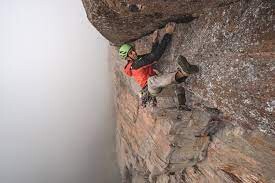
In 2017, Honnold became the first climber to ascend Yosemite’s El Capitan without ropes, documented in the popular film Free Solo, and holds numerous speed-climbing records. He’s also known for long traverses–in October he established a roughly 60-kilometre traverse that included 14 Red Rock multi-pitch routes, hiking and scrambling for well over 7,000 metres of vertical in a 32-hour push. He called the traverse Honnold’s Ultimate Red Rock Traverse or HURT.
While an ultra may seem like a natural extension of those long traverses, Honnold did share some thoughts on trail running back in 2016 with Trailrunner Mag, when he explained that he felt running wasn’t particularly beneficial to climbing.
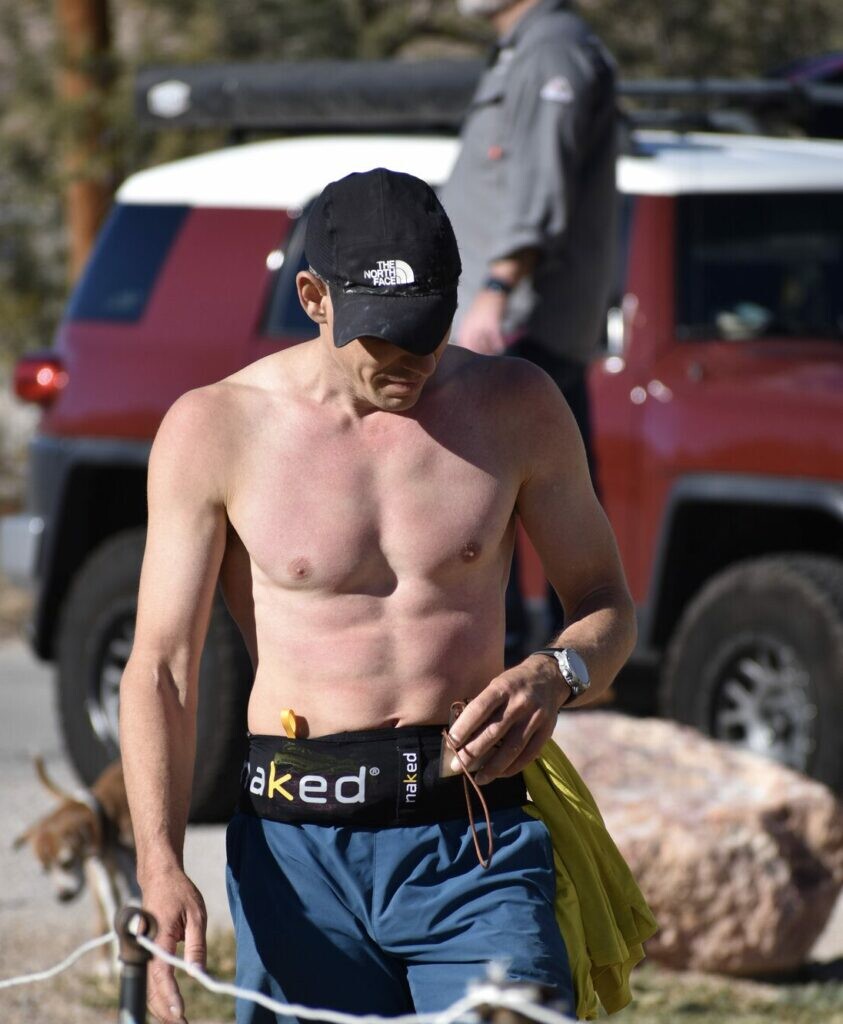
“It uses energy that could better be used doing my actual sport. But at the same time, I like running around and seeing new trails,” Honnold said. “I just enjoy moving quickly through new areas outside. I really like new trails and hills. I like seeing new things.”
“Sometimes it’s just nice to run,” he shared. “Like a kid.”
While most of us can’t comprehend summitting a steep rock face without a rope, the joy of running like a kid is something we can all relate to. It’s unlikely we’ll see Honnold challenging Jim Walmsley to a run-off any time soon, but the accomplished athlete may pop up in an ultra near you, ninja-like. You never know.
by Keeley Milne
Login to leave a comment
Kilian Jornet Isn't The G.O.A.T. of Trail Running Just Because He Wins Big Races
After Kilian Jornet won the Ultra-Trail du Mont-Blanc (UTMB) for a record-tying fourth time on August 27, it was easy to assume that running 100 miles is something that comes easy to him.
It doesn't, but it would be easy to think that because, well, it sure looked that way.
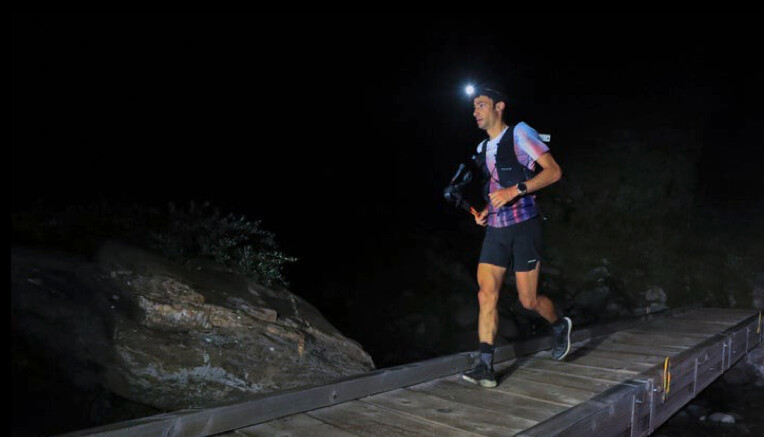
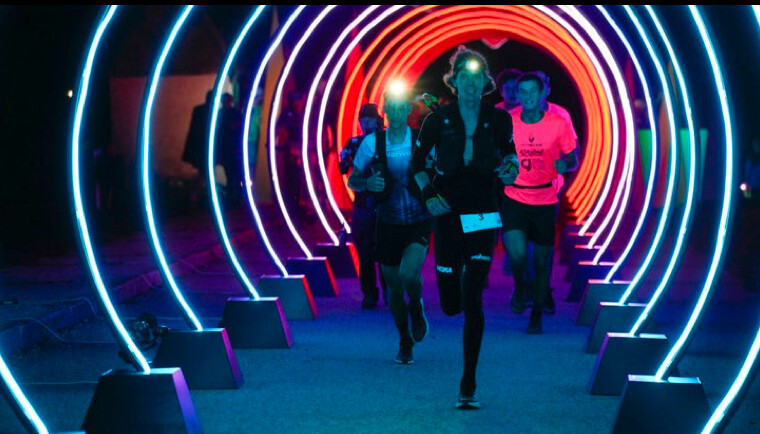
While the 34-year-old who hails from the Catalan region of Spain has long ago established himself as the G.O.A.T. of ultra-distance trail running in the mountains, he's as human as each of the other 2,300 runners who toed the line at this year's UTMB. Like his fellow competitors, Jornet felt fatigue in his legs from grinding through the 171.5km (106.5-mile) course and its 33,000 feet of elevation gain. He said he had difficulty breathing when he ran too fast or climbed too abruptly, likely the lingering effects of having just overcome Covid-19 earlier in the month.
And, like everyone else, he had to fight off low moments of mental torment, and maybe even a tiny trace of self-doubt-remember, he's human-as American rival Jim Walmsley opened up a big lead on him over the Grand Col Ferret as the course passed from Italy to Switzerland.
But what sets Jornet apart, and what has always distinguished him as an athlete, is a unique combination of physical ability, smart racing strategy and a deep connection to the mountains that allows him to move joyfully, patiently and, at times, seemingly with relative ease amid the physical anguish that comes with running such a grueling race.
But make no mistake, he suffered enroute to winning UTMB in a course-record 19 hours, 49 minutes, even if he made it look easy overcoming Walmsley and dispatching competent French contender Mathieu Blanchard.
"Since the start there has not been a single moment in which I didn't suffer," Jornet said after the race. "I knew that I needed to keep my intensity under a certain threshold where it can be heavy for the lungs, but it was no problem. But muscularly it was very hard from the start of the race."
Jornet is human, even if it took a debilitating illness to show it. But as he turned in yet another masterwork performance on the world's biggest stage, Jornet gave glimpses of what has made him so otherworldly for so long. Perhaps surprisingly, superior physicality is only a small part of it.Patience and Respect
Having already won UTMB three times and Hardrock a record-tying five times-most recently just six weeks earlier-Jornet had nothing to prove in Chamonix. In fact, if he had never toed the line or for that matter retires from competition, his legacy of epic race victories and Fastest Known Time (FKT) records on some of the most difficult trails and biggest mountains around the world would stand the test of time.
But that brings up another element that makes Jornet great is that he has always run as if he had nothing to prove. Sure, he's a competitive athlete, but his focus seems to be more about immersing in the zest of competition and the life-affirming bliss he's always felt in the mountains.
For Jornet, the destination truly is the journey, not the outcome. That adventure-oriented focus was something he learned in his youth growing up in the high-alpine environment of the Cap de Rec mountain refuge in the Spanish Pyrenees, where his dad was a mountain guide and his mom was a ski instructor. He climbed his first peak at age 3 and started competing in ski mountaineering races at 12.
Along the way, he developed a grounded sense of presence in the mountains that has allowed him to remain calm and bide his time in ultra-distance races-especially more rugged mountain races like UTMB and Hardrock. Instead of going all-out from the front, he typically follows a more fluid strategy of just staying in contact with the lead group and letting the race play out a bit as the terrain dictates before becoming hyper-competitive.
Contrast that to Walmsley, who has been hellbent on becoming the first American man to win the race with a front-running mentality, countryman Zach Miller, who returned after injuries and Covid-19 kept him away from continuing the same pursuit for three years, and the hard-charging Blanchard, who was eager to steal the show and make a name for himself in front of a supportive mostly French crowd after a robust third-place finish in 2021.
Even when Jornet was younger, he ran with maturity and wisdom beyond his years, always earnestly clinging to the premise that the experience of racing-and sharing it with his competitors, not to mention spectators and volunteers when possible-is always more important than the actual race itself.
When Walmsley built a big lead with a strong power-hiking surge up the Grand Col Ferret, Jornet was seemingly content, at that moment, to ease through the highest point of the course, chatting at times with volunteers, fans and videographers in French, Spanish or English as he had done at times earlier in the race. In previous UTMB races, he's burst ahead on the switchbacks up Grand Col Ferret and other steep climbs on that course, only to stop on top and wait for his competitors to catch up while gazing at the stars or picking mushrooms with children.
"At Hardrock this year, when I saw him on top of Grant Swamp Pass, he stopped in the middle of the race just to chat with me because we hadn't seen each other in a while," Miller says. "That's just the way Kilian is."A Versatile Mountain Athlete
Jornet has a much more diverse set of athletic skills and abilities than most ultrarunners. In addition to winning ultras, Jornet was a multiple world champion in ski mountaineering and SkyRunning in his twenties. He also set a host of new speed ascent marks and roundtrips on Mt. Kilimanjaro (Tanzania), Aconcagua (Argentina), Mont Blanc (France) and the Matterhorn (Switzerland). Although he missed in his attempt to set a new FKT on 29,032-foot Mt. Everest in 2017, he actually summited the world's highest mountain twice in six days without supplemental oxygen.
When he was a few years younger, he set a new record on the 171-mile Tahoe Rim Trail in California and Nevada and posted the fastest-ever time up the steep, rocky 1.3-mile Mt. Sanitas Trail in Boulder, Colorado.
"Kilian is a beast," says Francois D'Haene, the other four-time UTMB winner who last year became the first to win Hardrock and UTMB in the same summer. "When it comes to Vertical K races and distances from 40K to 100K, I think there is no competition between us. He's faster than me and stronger than me, especially on technical terrain."
Aside from long-and-rugged Hardrock and UTMB, Jornet won the shorter and much faster 42km Zegama Alpine Marathon in Spain and placed fourth in the 31km Sierre-Zinal village-to-village race in Switzerland in August. A lot of it has to do with the fact that he still trains in much of the same fashion as he did as a kid, often focusing more on fun, hard, playful days of adventure on foot or on skis as much as he does structured high-performance workouts.
"Kilian is unique in the range that he can cover," Miller says. "As a runner, his ability to switch back and forth from something like Zegama to Hardrock to Sierre-Zinal to UTMB is just incredible. And because of that ability, I think he's a bit of a mad scientist when it comes to training. He kind of turns himself into a guinea pig and trains in ways other guys might not be willing to for fear of overtraining."
All of that translated into Jornet's ability to win this year's UTMB despite trailing Walmsley by about 15 minutes at the 126km aid station at Champex. When the surging Blanchard caught him and quickly left the aid station, Jornet's competitiveness and mountain practicality started to fire up. They passed Walmsley and gapped him and then ran stride for stride over the ensuing 2,300-foot climb from the village of Trient down into the ski town of Valloricine.
Finally, after leaving the 153km aid station at the same moment as Blanchard, Jornet surged on a gently sloped 4km section of trail to the base of the final 2,600-foot climb up Tte aux Vents. Blanchard got a first-hand view of the master at work and all he could do was watch him run away to victory and hold on for second place.
"Running from Champex with Mathieu, I knew I was stronger going up but that he was catching on the downhills," said Jornet, who has lived in Norway for the past several years with his wife, Emelie Forsberg, and their two young children. "Once we got to Valloricine, the strategy was to push very hard up the final climb to Tte aux Vents and then manage the lead. I had about an 8-minute lead and I was feeling comfortable with it, but in a ultra race you never know, many things can happen."A Transcendent Athlete
At some point a conversation about Jornet should transcend trail running and include the similarities he shares with other great athletes who have had a similarly dominant presence in other sports. And yes, that means Tom Brady, Michael Jordan, Lindsay Vonn, Eddie Merckx, Michael Phelps, Ann Trason, Lynn Hill, Kelly Slater and Eliud Kipchoge.
Why not? Like each of those all-time athletes, Jornet has consistently risen to the occasion at the biggest moments of his career, not only because he physically outclasses the competition, but also because his intellectual prowess as an athlete and his ability to outthink, outwit and outlast them. It's not that he wins everything-although he's won the vast majority of his races since winning UTMB as a 20-year-old in 2008-it's more that he's been competing at the highest level for 15 years and hasn't regressed and has rarely had bad days.
In 2017, he had a rough go of it in the UTMB and finished second to D'Haene and in 2018 he dropped out after inflammation and pain caused by a pre-race bee sting made it difficult to keep running.
"Even his bad races he performs well, and I think that's what makes Kilian special," says Walmsley, who finished fourth at UTMB this year. "Whether it's a bad moment or a bad race, he's always still competing at a really high level. I have raced him twice at UTMB and both times I have thought I have found a crack, but I haven't been able to hold onto it."
Until recently, Jornet might have been viewed solely for his athletic. But with his bold move this year to break away from longtime sponsor Salomon and begin a new environmentally friendly trail running shoe brand called NNormal (with Spanish footwear brand Camper), he's not only begun to hone his entrepreneurial spirit in the world of business but also to make an impact as the environmental steward he's always been.
It's a path only a handful of high-level outdoor athletes achieved success at after making their mark in their sport disciplines, most notably Yvon Chouinard, a climber, surfer and kayaker who founded Patagonia in 1970.
Jornet ran all of his races this year in the same model of NNormal shoes that will be available at running shops and online this fall. It's a uniquely designed shoe that's balanced under the midfoot to promote midfoot and forefoot running gaits, but with enough cushioning to run with a heel-striking stride, especially on downhill sections of a trail. A thin polyurethane plate provides protection from rocks and some energy return, while a proprietary version of a Vibram Litebase Megagrip outsole serves up secure traction.
That all might sound pretty standard, but Jornet really wants his NNormal shoes to stand out for their durability. He and his colleagues have gone to great lengths to source long-lasting components, but they've also designed the shoe to be deconstructed so it will be easy to re-sole, repair or recycle it after hundreds of miles of wear and tear. It's all part of NNormal's No Trace philosophy that is all aimed at transparently designing gear with the smallest carbon footprint possible.
"There are a lot of good guys in the sport, but in [my] mind, Kilian is the king of the sport," says Miller, who was the fifth finisher at UTMB this year. "He sets the tone for the entire sport and [is] a great representative of the sport."
by Trail Runner Magazine
Login to leave a comment
2022 UTMB Men’s Race
As expected, the men took the race out fast from the start on the relatively flat roads and trails from Chamonix to the village of Les Houches. Spain’s Pau Capell, the 2019 UTMB winner, led a charging group through Les Houches, seven kilometers into the race, followed closely by Mathieu Blanchard, a Frenchman living in Canada, and Jia-Ju Zhao and Guo-Min Deng, both of China. All the top contenders were in a massive chase pack, settling in for the long night and day ahead.
It didn’t take long for Jim Walmsley (pre-race interview) of the USA to make his intentions for this year’s race clear, coming into Saint-Gervais, at 20 kilometers into the race, in the lead, looking strong and relaxed. Kilian Jornet and Capell were just seconds behind with Deng, Zhao, and American Zach Miller making up a chase group half a minute in arrears. They were followed by Frenchman Germain Grangier, Blanchard, Frenchman Thibaut Garrivier, and Yan-Qiao Yun of China.
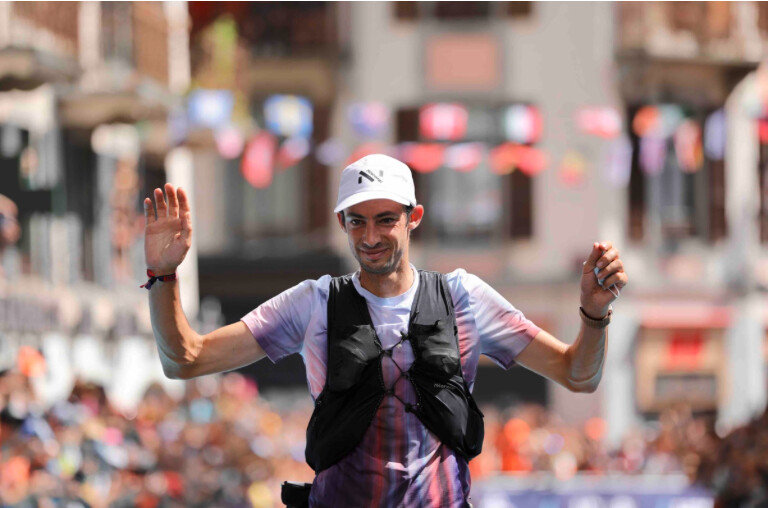
Unsurprisingly, by Les Contamines, 31 kilometers into the race, it was shaping up to be a showdown between Walmsley and Jornet. They came into the aid station together looking relaxed, Walmsley taking the time to high-five fans, and were shortly on their way into the night together. Capell and Miller came in just 30 seconds back, and Grangier rounded out the top five, just a minute behind them.
A notable withdrawal around this time due to physical issues is last year’s second place finisher, Frenchman Aurélien Dunand-Pallaz (pre-race interview).
Climbing over the high Col du Bonhomme, 43 kilometers in, Walmsley, Miller, Jornet, and Tom Evans (pre-race interview) of the U.K. shared the lead. With 1,160 meters (3,800 feet) of climbing down just on this one climb, everyone in the group looked relaxed and was moving well. Capell was just 90 seconds back, trying not to let the elastic to the front group snap in the dark of the night on the run over to Col du Bonhomme before the long descent into the remote French outpost of Les Chapieux.
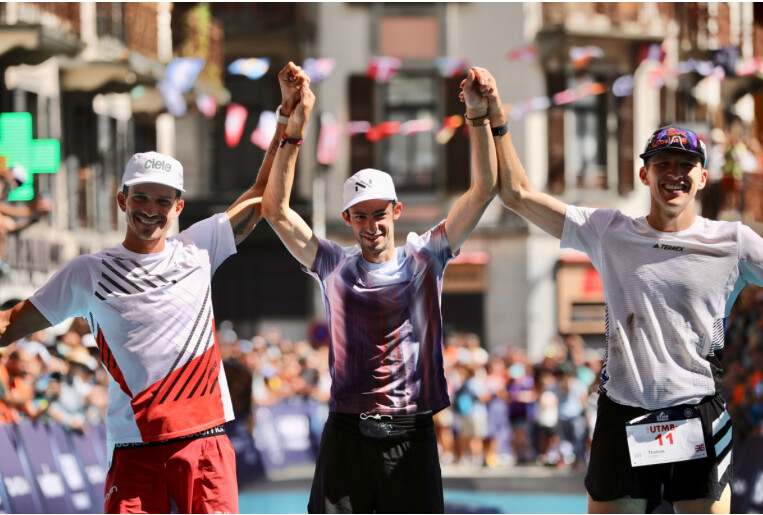
The four leaders stayed together down to Les Chapieux, 50 kilometers into the race, where last year’s winner, François D’Haene — not participating this year — was spectating and cheering on runners. Unfortunately, Capell had lost contact with the lead group over the previous section, coming into the aid station more than two minutes back. The rest of the top nine stayed relatively the same with Erik Sorenson of the USA slotting in 10th for the first time.Coming into Lac Combal, 66 kilometers into the race, after crossing country borders into Italy and traversing the most remote part of the course, Walmsley and Jornet had only slightly pulled away, their gap to Miller and Evans hung at a tenuous minute. All four looked strong, but it seemed like pre-race predictions of a two-man showdown were about to be realized.
Walmsley, with his arms and legs fully covered from the cold of the night but shirt front open, came into the town of Courmayeur, 80 kilometers in, solo and in the lead, but his gap on Jornet just 80 seconds.
Both men were moving well and left the aid station together after only a few minutes. It was a significant 12 minutes before Evans and Miller came through, staying in Courmayeur for under three minutes. Blanchard, looking more relaxed than any of the previous four, was also in and out of the aid station quickly, 18 minutes off the lead. Known for his slower starts and late race surges, Blanchard appeared to know exactly what he was doing.
It was never a question of if Walmsley or Jornet would strike out on their own, it was just a matter of when. Walmsley was the first to throw down a serious acceleration, coming into Arnouvaz (97 kilometers) solo and with a 2.5-minute gap on Jornet. Both were in and out of the aid station quickly, looking strong and motivated. Blanchard also chose the trail between Courmayeur and Arnouvaz to make his move, coming into the Arnouvaz aid station in third, looking very controlled and 14 minutes behind the leaders.
He was familiar with that position in the race, having finished third in UTMB in 2021. He was also familiar with the race tactic of starting slower, letting the leaders fight it out early and tire themselves out, and then moving up as the fast starters dropped back. It had brought him success the previous year, and he was seemingly employing the strategy again. Miller and Evans continued to run near each other, what Evans would later refer to as a “bromance” that lasted over half the race, and both looked like they had less spring in their step than the men ahead of them.
Committed to making the move stick, Walmsley climbed the Grand Col Ferret at 102 kilometers with a strong powerhike and held a five-minute gap over Jornet. Seemingly unconcerned with his position, Jornet chatted in French with both spectators and volunteers before vanishing into the night. Moving faster and looking stronger over the col than the previous two men, Blanchard continued the chase in third 17 minutes back. Miller and Evans continued to work together to keep the gap manageable.
The gap between Walmsley and Jornet stretched even further to 14 minutes by the sleepy Swiss village of La Fouly, 112 kilometers into the race. Both men were running under course-record pace, and both looked calm and collected. Still running strong into La Fouly, Blanchard kept the leaders within reach.
But Walmsley was committed to stretching the elastic on the field as much as he could, coming through Champex-Lac at 125 kilometers with 13 hours and 40 minutes on the race clock, gaining even more time on the course record and moving strongly. It’s generally a bad idea to bet against Walmsley after he’s put his mind to something, and after a fifth place finish in 2017 and DNF in 2018 and 2021 at UTMB, his commitment to the race and move to Europe to train on the trails seemed to be paying off.
But Walmsley is also known for going out fast and strong, and it doesn’t always stick.One could argue that Jornet was just biding his time, letting Walmsley burn his matches out front. However, there were times around this point in the race where Jornet just plain looked like he was working, enough so that we all began to wonder if the GOAT of trail running would have a crack in his armor today. However, by Trient at 142 kilometers, Jornet had decided to make his move, coming into the aid station in the lead. But instead of seeing Walmsley behind him, it was a surging Blanchard, less than a minute back that Jornet would have to now battle.
It was a long 19 minutes before Walmsley would arrive, appearing to be in discomfort. The dynamic duo of Evans and Miller continued to run together, still holding the gap to the race leader at just over 30 minutes, as they had for much of the race.As the kilometers ticked down, it was indeed a showdown between two men, except it was Blanchard challenging Jornet, with both men coming into Vallorcine at 153 kilometers together, well ahead of the course-record pace.
With Walmsley slowly losing time to the leaders but still in third, eyes moved to Evans who’d finally dropped Miller after nearly a night and a day of racing side by side to see if he could make the pass.By this time, it felt nearly inevitable that Jornet would run to the win and it was no surprise when he came into Tete aux Vents solo looking focused and fast with an 11-kilometer downhill run to the finish. Blanchard never gave up the chase, seven minutes back, while Evans passed a tired but “pumped” Walmsley to slot into third for the first time.
Jornet would finish with a course-record time of 19:49:30, besting both François D’Haene’s 2014 record time (20:11:44) on a course which did not include the Pyramides Calcaires, a gnarly little climb and descent added to the UTMB course a few years back, and Capell’s 2019 time (20:19:09), which did include those extra kilometers.
This is his fourth win at UTMB. Just five minutes back, Blanchard would also come into the finishing chute under the previous course record in second place. An elated Evans rounded out the podium, a stellar finish for his first UTMB.
Walmsley came across the line in fourth, releasing the two DNF monkeys on his back and finishing the next step in his goal of ultimately winning this race someday. Miller, no longer on the comeback trail following surgery and recovery, but fully back, crossed the line in fifth place.
Most of the back half of the men’s top 10 are runners who started slower and bided their time, moving up in the race’s second half, including France’s Beñat Marmissolle, France’s Arthur Joyeux-Bouillon,Jonas Russi of Switzerland, and Romania’s Robert Hajnal. The final member of the men’s top 10, however, is France’s Thibaut Garrivier, who went out hot and looked like he paid for it later, but ultimately holding onto 10th place.
Login to leave a comment
North Face Ultra Trail du Tour du Mont-Blanc
Mountain race, with numerous passages in high altitude (>2500m), in difficult weather conditions (night, wind, cold, rain or snow), that needs a very good training, adapted equipment and a real capacity of personal autonomy. It is 6:00pm and we are more or less 2300 people sharing the same dream carefully prepared over many months. Despite the incredible difficulty, we feel...
more...Will Jim Walmsley Be the First American Man to Win UTMB?
Jim Walmsley has always been an outlier among American trail runners.
Not only is he as fast and talented as any ultrarunner the U.S. has ever produced, but he's also been bold and even a little brash about his intentions. His off-the-front racing style is something to be revered-and respected if you're one of his competitors -because the lanky 32-year-old Hoka-sponsored runner from Flagstaff, Arizona, has proven time and time again that it works for him.
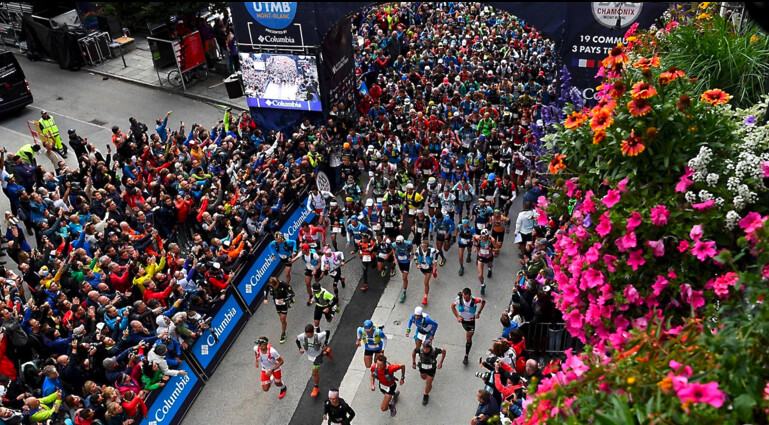
On August 26 in Chamonix, France, Walmsley will embark on his latest and most prodigious quest yet: to win Ultra-Trail du Mont-Blanc (UTMB). It's his fourth attempt at trying to follow up on his stated intention of becoming the first American man to win the race, but he's gone to extra lengths this year to prepare for it. It would certainly add to what has already been a great year, given that he and longtime girlfriend Jessica Brazeau got married on May 4 in Silverton, Colorado.
But if Walmsley is going to pull it off this year, he will have to fend off three-time UTMB winner and 2022 Hardrock champion Kilian Jornet, of Spain, among other strong runners in the talent-loaded field.
UTMB has been one of the pinnacle events in the sport of trail running since its inception in 2003. Not only does the course send runners on a grueling 171.5K loop (106.5 miles) around the Mont Blanc massif with nearly 33,000 feet of vertical gain, it also brings together the deepest international field of the year and more hype and media attention-including epic coverage and commentary via livestream-than any other event in the world by far.
One of several top-tier Americans in this year's UTMB field, Walmsley skipped the Western States 100 this year and since June has been living and training in the mountains of the Rhne Alpes region of France near Beaufort, not far from good friend Franois D'Haene, who knows a thing or two about training for big mountain ultras.
Last year, D'Haene not only became the first male runner to win UTMB for a fourth time, but he also became the first runner to win both Colorado's Hardrock 100 and UTMB in the same year.
The Frenchman was crewed and paced by Walmsley at Hardrock in 2021 and was one of the first people to suggest that Walmsley spend a summer training in the French Alps in order to best prepare for UTMB, rather than showing up in Chamonix 7-10 days before as he-and many other American men-have in the past.
Aside from Jornet, who won this year's Hardrock 100 for the fifth time on July 16, the top international runners include Frenchman Aurelien Dunand-Pallaz, the runner-up at UTMB last year; Germany's Hannes Namberger; New Zealand's Scott Hawker; and Spain's Pau Capell, who won the race in 2019.
D'Haene certainly thinks Walmsley is capable of winning UTMB, but points out that there are always numerous capable runners who are contenders and it all depends on how the race plays out. The idea of Walmsley stating his intent out front-that he wants to win UTMB-is more of a bold American approach, D'Haene says, as opposed to a more subtle European style he prefers.
"Just to explain to people, 'I am here to be the first American to win the UTMB,' puts a lot of pressure on him," D'Haene says. "He thinks UTMB, he sleeps UTMB, he eats UTMB, so it's a lot of pressure. If you take the approach that I just want to smash that course and win that race, then it's a lot of pressure. I'm not sure if he'll win or not win, but at least he's training well in the Alps and his confidence is up."
Walmsley has raced UTMB three times already-taking fifth in 2017 but DNF-ing in 2018 and 2021. The fact that no American man has ever won UTMB is irrelevant in the scope of this year's race, but it certainly adds a heightened focus in Walmsley's quest and a brighter spotlight on him before and during the race.
Whereas four American women have won the women's UTMB race a total of seven times-including the 2019 and 2021 champion Courtney Dauwalter-only a handful of U.S. men have made it to the UTMB podium. The highest finish came when when Topher Gaylord and Bradon Sybrowsky tied for second in the inaugural race in 2003.
While Walmsley appears to be the top American this year, it would be foolish to focus on him as the only American capable of winning. Other U.S. runners with momentum and motivation heading into UTMB include Tim Tollefson, who finished second at CCC in 2015 and third in UTMB in 2016 and 2017; Tyler Green, fourth at Western States 100 this year and 10th in the TDS 145K in Chamonix last year; Zach Miller, winner of the CCC 100K in 2015 and sixth and ninth, respectively, in UTMB in 2016 and 2017.
Miller went for broke trying to win UTMB in 2016 and held a 35-minute lead beyond the halfway point. He still led at the 100K mark, only to struggle over the final 50K and wind up sixth. What makes UTMB different, he says, is that the endless string of long climbs and descents demands a more moderate rhythm and effort over the first half of the course so you don't blow up before the race really begins.
"I don't think there's a super-secret code to crack. We've had a number of really good American men run there, it's just we have to have one of them have a good day all day one of these years," Miller says. "It's not anything we can't figure out or accommodate for. I think we've done it in other European-style races. It's just this one has kind of eluded us. I think it's possible that someone is going to have that 'right' day, but you almost have to have to get a little lucky, too."
Tollfeson is coming off three DNFs at UTMB in 2018, 2019, and 2021, and had a tough Western States this year (21st). Miller also DNF'ed at UTMB in 2018 and 2019 and then was away from racing because of injuries. He finished his first long ultra in several years in late June, winning the Andorra 100K to earn his place in Chamonix.
Other Americans in the field include David Laney (third at UTMB in 2015), Jason Schlarb (fourth in 2014), Seth Swanson (fourth in 2015 and seventh at TDS last year) and Sage Canaday (48th at UTMB in 2017), who is back after suffering a pulmonary embolism and a devastating house fire in 2021.
As for Walmsley, his front-running style has helped him snag three Western States 100 titles, three JFK 50 wins, a 50-mile world-best time, a 100K American record and the Fastest Known Time running across the Grand Canyon and back. It also helped him produce a solid 2:15:05, 22nd-place effort at the 2020 U.S. Olympic Marathon Trials.
Most recently, he tore up the trails (and the competition) at the rough and rugged Madeira Island Ultra Trail 115K in Portugal in April. Otherwise is been running in the Beaufortain Mountains with D'Haene and training a lot on a Wahoo bike trainer in France. Two weeks ago, he completed the arduous 114K (71-mile) Ultra Tour du Beaufortain loop with 7,300 meters (25,000 feet) of vertical gain as one of his last big training days.
"I hope Jim can change it this year," D'Haene says. "I hope he will be OK and can run a good race, of course, but it's UTMB and, of course, it's always difficult."
by Trail Runner Magazine
Login to leave a comment
2022 Western States 100 Men’s Race
This year’s men’s race had the notable absence of course record holder Jim Walmsley, who has dominated the race in recent years, leaving it wide open for a good number of runners with potential to win. Among them were seven of last year’s top 10, including second-place finisher Tyler Green, and Tim Tollefson, who was fifth last year but hotly fancied to be capable of winning this race on a good day. Last year’s eighth place man, Hayden Hawks, who ran Western States as his debut 100 miler, was also believed to have more to offer in this race.
Notably, joining them as a Golden Ticket entrant was Jared Hazen, the second fastest Western States finisher of all time.
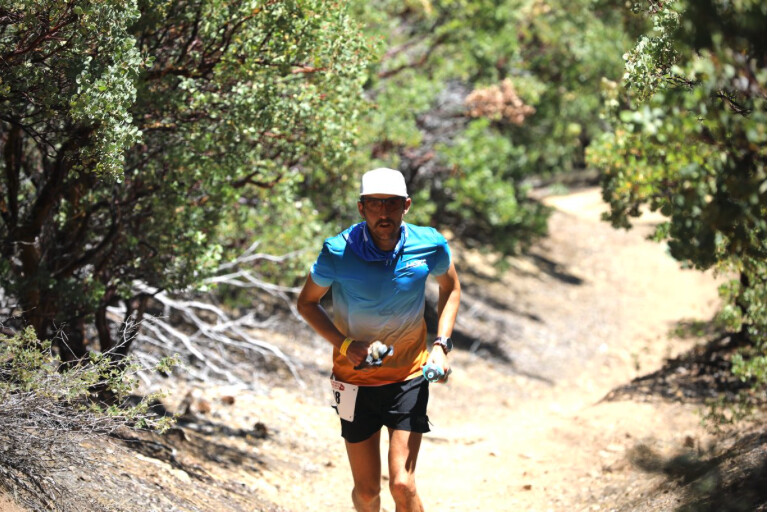
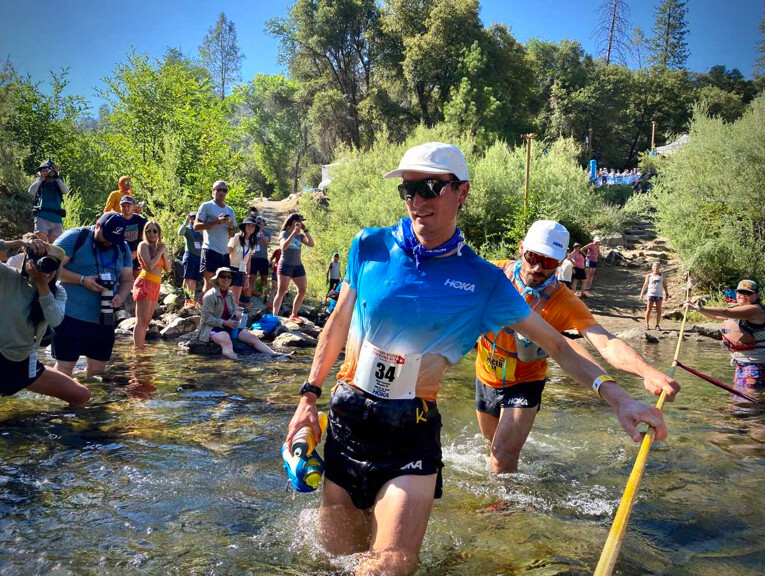
And last but certainly not least, the relative new kid on the block, who has quickly shot up through the distances and dominated every ultra he’s ever started — Adam Peterman.
Peterman won his way into Western States at the Canyons by UTMB 100k, where he toppled the course record in his first ever 100-kilometer race. He took a gamble by taking on his first 100 miler a little over two months later, and defended the decision to iRunFar in his pre-race interview saying: “I don’t feel like I always need to just make logical steps because we’re running 100 miles, that’s an illogical game.”
The first 3.5 miles of Western States features 2,550 feet of climbing, to the first landmark at the Escarpment. First to the top was Adam Kimble, closely followed by France’s Ludovic Pommeret — with Hawks, France’s Seb Spehler, and Hazen coming through in quick succession.
Tollefson, Tom Owens (U.K.), Peterman, Jonathan Rea, and Alex Nichols completed the front 10, all within a couple of minutes of each other.
By Lyon Ridge at mile 10, Ludovic had taken the lead and he came through Red Star Ridge at mile 15, four minutes clear of Spehler in second, with Kimble in third, and Hawks and Tollefson a few minutes back, followed by Hazen, Peterman, and Arlen Glick. Nine minutes separated the first eight runners to this point.
The two Frenchmen held the top positions into mile 24, just before Duncan Canyon, with Pommeret coming through six minutes off course record pace. At this point Tollefson had moved up to third and Hawks and Peterman sat comfortably in fourth and fifth, 8:10 back from the lead, with Glick following 10 seconds behind.
Pommeret held the lead into Robinson Flat, mile 30, with the pressure starting to show. Hawks had moved up to second by now and was looking a lot more comfortable, just two minutes back from the leader. Peterman had then moved up the field also to third position, just in front of Spehler, who’d dropped back to fourth, with Tollefson seconds behind. This chasing pack were just four-and-a-half minutes off the leader.By Millers Defeat at mile 34, Hawks had closed the gap to a minute, and by Dusty Corners, mile 38, he’d taken the lead from Pommeret.
Through Deadwood Cemetery, mile 49.5, Hawks maintained the lead and looked like he was having a super day. There had been some reshuffling in the other top positions, with Peterman, Hazen, and Glick all still in the mix.
By Foresthill, mile 62, Hawks was still in the lead but Peterman had separated himself from the other chasers in second. He arrived just three minutes back from Hawks and almost eight minutes clear of Hazen in third. Spehler, who had a promising first half, had dropped back the field suffering stomach issues, and Tollefson had also fallen back from the front runners.
Hawks was still in the lead after Foresthill, but by Cal 2, mile 70, Peterman had joined him at the front and the race was on! Hazen held third place, 14 minutes back from the leaders, with Glick in fourth another 15 minutes back from Hazen.
When the race reached the Rucky Chucky river crossing at mile 78, Hawks still looked comfortable but Peterman had stretched four minutes ahead, putting 30 seconds per mile on his opponent since Cal 2, showing unbelievable strength and determination for a 100-mile debut.
Hazen maintained third position, now 24 minutes off the lead, with Glick and France’s Vincent Vietmaking up the front five.
Hazen had started to struggle and dropped out at mile 85, with Glick moving up to third. Peterman had by now extended his lead to 10 minutes.
The top three positions remained unchanged for the remainder of the race, but Peterman utterly dominated in the closing miles, finishing in 15:13:48, almost 34 minutes clear of Hawks in 15:47:27. Glick rounded out the top three in 15:56:17.
t’s clear from this 100-mile debut that we will be seeing a lot more of Adam Peterman. He executed this win in a similarly patient manner to his win at the Canyons 100k, and he races like a runner with a lot more ultrarunning experience than he has.
Moving up all race again, Green ended the day in fourth position in 15:57:10, what was two places back but some 13 minutes faster than his debut at this race last year. Drew Holmen (pre-race interview) finished fifth after a strong, all-day performance. His 16:09 finish this year is also two places back but 14 minutes faster than last year. These two gentlemen have much in common.
Frenchman Pommeret stayed strong to finish in sixth place and first masters, and he was closely chased by fellow Frenchman Viet. Nichols moved up two spots this year to take eighth. Cody Lind moved back from fourth last year to ninth this year. And Scott Traer meted out his race effort perfectly to run his way into the men’s top 10 for 10th place.
Men’s DNFs included Spehler and Hazen, both due to various physical issues.
Login to leave a comment
Western States 100
The Western States ® 100-Mile Endurance Run is the world’s oldest and most prestigious 100-mile trail race. Starting in Squaw Valley, California near the site of the 1960 Winter Olympics and ending 100.2 miles later in Auburn, California, Western States, in the decades since its inception in 1974, has come to represent one of the ultimate endurance tests in the...
more...Western States 100 Time Predictions Based On Historical Data
The Western States 100 is the Super Bowl of US trail running, just with fewer cryptocurrency commercials. Every year, the race gathers some of the best athletes in the world to test themselves on the world-famous course. The competition, along with comprehensive data gathering by the race organizers, provides a massive statistical opportunity.
Marshall Burke, associate professor of Earth System Science at Stanford University, seized that opportunity with some wonderfully cool data analyses heading into the 2022 race. The research question he sought to answer: how are race times progressing as the sport grows, and how are those times affected by temperature changes?
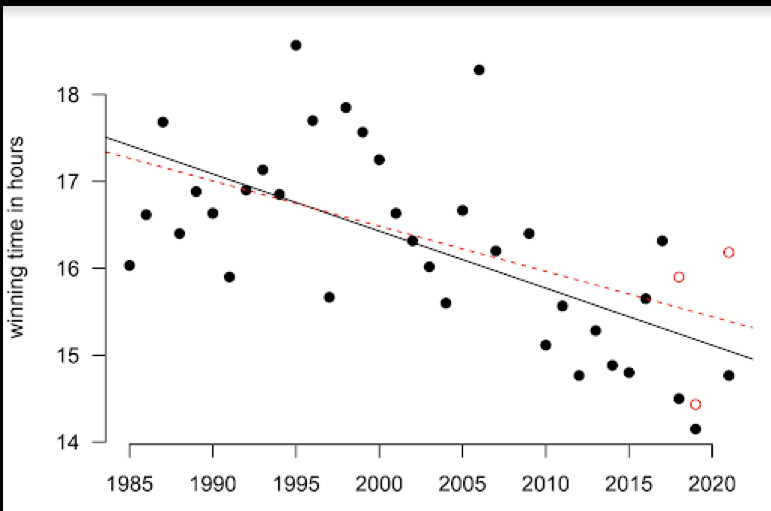
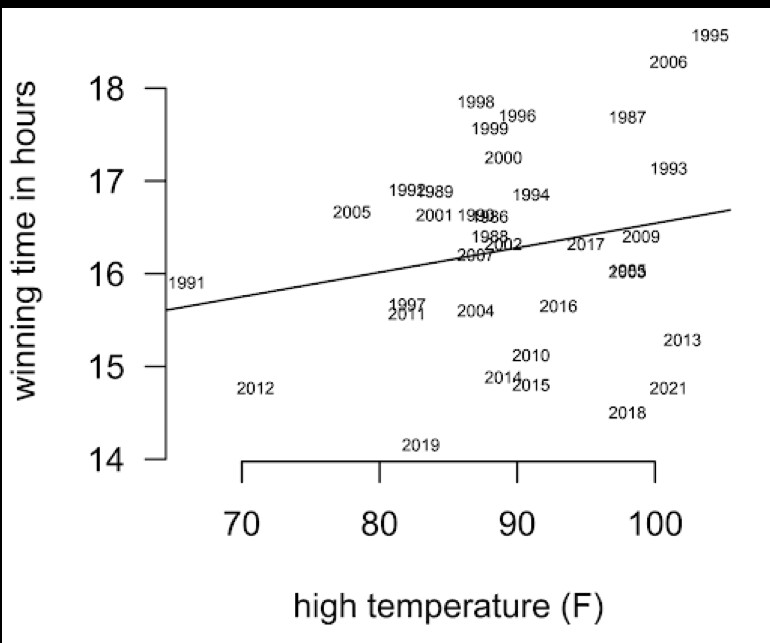
Marshall is a wonderful athlete himself, with an April 2022 Fastest Known Time on the Buffalo River Trail in Arkansas, so he's used to moving fast. In his spare time, between research and Zoom calls, he compiled the data on finishing times and temperatures, controlling for years when there was snow on the course or when the course was altered.
"I may never run Western States," Marshall says. "But I can run statistics on it!"
He's doing world-changing work on climate change at Stanford University, and that made his quest have both a personal and academic interest. "This combines my research focus on the impacts of climate with my hobby of running slowly through the mountains," he says. Since this was a quick analysis for fun (and to help me with coaching; helps to have really, really smart friends), Marshall wants to be clear that the numbers could change. And I want to be clear that any errors are the fault of the field of Statistics for being the worst.
Let's all run fast through some of the fascinating data he gathered!Finding #1: Times of top finishers have progressed rapidly.
Since 2000, a linear model of top times for men and women shows bonkers improvement. Bonkers is a scientific term; you'd know it if you, like me, took an Intro To Stats class in 2004. The male winner is about 2 hours faster on average, with the same general improvement for the average of places 2 through 5. The female winners are around 1 hour faster, with places 2 through 5 improving more than 2 hours.When not accounting for temperature, times would be expected to drop considerably each year-around 4 minutes per year for men since the 1980s, and about 4:45 per year for women. Interestingly, the women's top 5 times are coming down faster than the winning time, showing a tighter race at the front.
I asked Marshall to run the men's times with Jim Walmsley being removed. Want to see a cool chart of just how much of an outlier he is? Taking out Jim's winning times moved the linear regression substantially, with the new red line predicting substantially slower times overall. And if he didn't get lost in 2016, the effect would be even more pronounced! You know you're a good runner when you mess up the statistics.
Finding #2: For all finishers, men are improving gradually, while women are improving rapidly.
Since 2000, the average women's finish time has improved by 5 minutes and 15 seconds per year! Meanwhile, the average finisher independent of gender has only improved around 2 minutes per year. So women are driving the sport forward in an emphatic way! Bosses!
Finding #3: Heat has a massive performance impact.
Let's start with a simple scatterplot of heat versus winning time.There is clearly a ton of variation in the scatter. Heat is not destiny. But there is some clear relationship, so maybe it's destiny's child. If you go too hard on a hot day, the body has to pay the bills bills bills later.
Marshall ran multiple regression analyses to combine the effects of overall time improvements with heat increases to give us a more sophisticated analysis, again also controlling for whether there was snow on the course. He is so damn sophisticated! Using times since 2000, the general rule is that for every 1 degree F increase in temperature in Auburn, California on race day, there is a 2:48 increase in winning time for men and a 2:52 increase for women. Removing Jim's times (Mr. Mess-Up-Your-Stats), there is a 3:26 increase for men for every degree increase.
For the average finisher using the same regression analysis, 1 degree F increases correspond with 2:34 increases in finishing times. DNFs go up about 0.5% for every 1 degree F increase as well. The ratio of times for men and women is not significantly impacted by temperature, so even though the hot year in 2021 saw women absolutely rock the list of top finishers, that may not be explained by heat in the way that everyone assumed.Finding #4: Predictions for 2022
The forecast from Weather Underground is currently 97 degrees F on race day in Auburn, relative to an average of 89. Combining the heat data with the overall improvement in times as the sport progresses, here are the predictions from Marshall's model, again based on data from the last 20 years.
For the male winner, it depends heavily on whether we remove Jim from the data. Assuming Jim is a true outlier, we can expect a winning time around 15 hours. For women, it's 17.5 hours. For the average racer, times should be around a half hour slower than normal, but that is affected by a higher DNF rate, so I'd suggest athletes build in much more buffer.
The trend in the 10th place times is most instructive to me, as a coach that is trying to help support athletes getting an invitation to next year's race. Those 10th place times have come down by massive margins over time, 9:22 for men and 12:50 for women. But the times are also more affected by the heat relative to the top 5 finishers. Put it all together, and the model predicts that 20 hours will place in the top-10 for women, and around 17 hours for men.
My personal prediction will be for fast winning times, but a greater spread after that, with the 10th place man and woman being around 30 minutes slower than predicted. The faster times as the sport progresses will not follow a linear model eventually, and my guess is that we are starting to approach an asymptote. To paraphrase Mark Twain, there are lies, damn lies, Statistics, and a running coach pulling wild guesses out of his butt.
Three Big Conclusions
Respect the heat, but don't respect it too much.
It's good to have brilliant friends like Marshall when you're looking for a possible coaching advantage.
Finally, Jim Walmsley breaks statistics.
by trail Runner Magazine
Login to leave a comment
Aleksandr Sorokin breaks 100K world record, Sorokin ran 6:05:41, averaging an insane pace of 3:39 per kilometer
The 100-mile and 24-hour world record holder, Aleksandr Sorokin of Lithuania, has added another world record to his resume by running 6:05:41 over 100K at the Centurion Running Track 100 in Bedford, U.K. on Saturday. Sorokin broke Japan’s Nao Kazami’s previous 100k world record of 6:09:14 from 2018 by almost five minutes.
The pace of Sorokin’s new 100K world record is three minutes and 39 seconds per kilometer, which is equivalent to running back-to-back marathons in 2:32:33. According to his Strava activity, his goal was to go out at 3:40/km pace, but he found that he felt good 70 kilometers in, picking up the pace to 3:30/km.
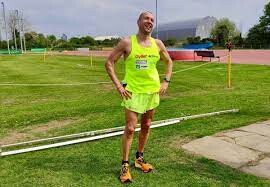
Sorokin also hit the 50K mark in 3:01:50 to set a new Lithuanian national record, breaking his previous 50K record of 3:02:39 from July 2021. The world’s fastest ultrarunner already owned three world records before this: 100 miles in 11:14:56, 12 hours (170.3 kilometers) and 24 hours (309.4 kilometres).
Leading up to his 100K world record attempt, Sorokin spent several months training at altitude in Kenya’s Rift Valley, running upwards of 250 to 300 kilometers a week (43 kilometers per day).
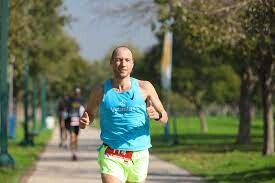
According to Ally Beaven on Twitter, Sorokin’s 50-mile split of 4:53:41 was the fourth-fastest ever, only three minutes behind Jim Walmsley‘s world record of 4:50:08.
It may not be too long until we see the Lithuanian ultrarunner go for his fifth world record over the 50-mile distance.
by Marley Dickinson
Login to leave a comment
Is Multiple 100-Mile Races In A Single Season Too Much?
Jim Walmsley absolutely destroyed the competition and the course record at the 2018 Western States 100. Rather than kicking back and enjoying the win, however, Walmsley needed to quickly return to training for the Ultra Trail du Mont Blanc (UTMB) just two months later. While he started out strong in UTMB, he eventually took a DNF, his legs drained of all energy.
Now that he's had time to reflect, Walmsley admits that top results at two 100-milers within a couple of months might be a stretch.
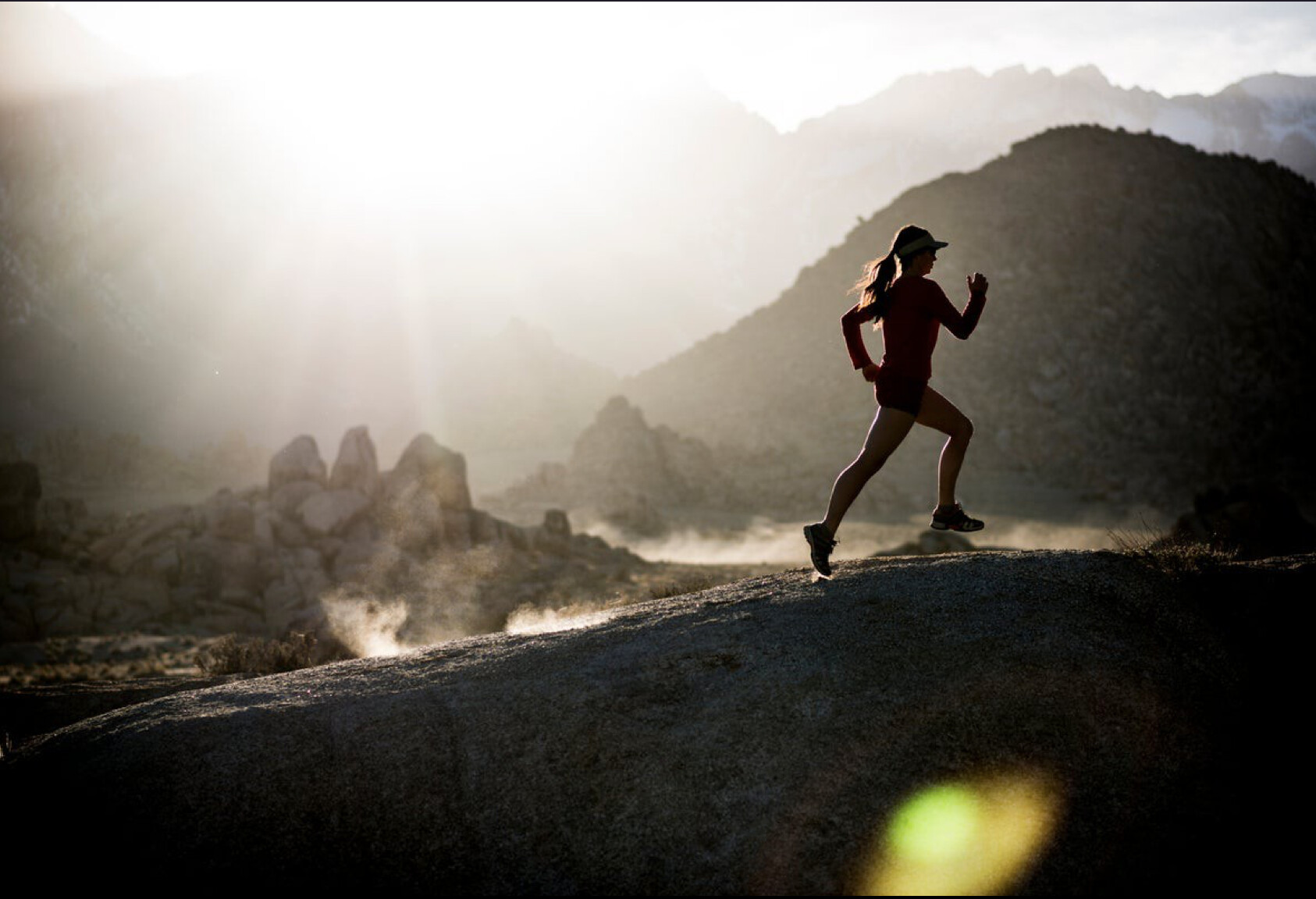
"My training went well and I was able to get in more tapering for UTMB than last year," he says. "But the combination might be asking too much."
The experience has left Walmsley reconsidering how he might approach his 2019 season.
Walmsley's two-big-100s-in-a-season approach is something several elites have attempted, with mixed results-Darcy Piceu, Jeff Browning and Karl Meltzer, among them. Fellow elite Tim Tollefson focuses only on UTMB each year. Magda Lewy Boulet passed over Western States in favor of a good go at UTMB as well (both Tollefson and Boulet took hard falls and had to pull out last year).
Which begs some questions: Is more than one 100-miler feasible in a given season? And how does the question differ for elites vs amateurs?
Figuring the Formula
The formula for successful marathoning (if your definition of success is placing well) is somewhat tried and true at no more than two per year, says Mario Fraioli, author of the "Morning Shakeout" and coach to Tollefson.
"For most athletes, even elites, racing two high-level marathons a year, between the buildup, the race itself and recovery afterward, is a big ask of the body and mind," he says. "Two a year is all most people can handle if they're committed to training properly, performing optimally and recovering adequately."
In contrast, runners and coaches are still tinkering with the right mixture of 100-milers. It pays to consider the toll that mileage takes on your body, a toll that varies depending on distance and how hard your effort was.
Recovery First
"The intensity of a 50K or 50-miler is a lot higher than it is during 100," Fraioli says. "On the flipside, 100 miles is a lot longer time to be out on your feet and more things can go wrong. Your body goes through a lot when it's out for that long (as does your mind), the nutritional demands are different, sleep gets affected, and it just beats you up in a different way under the hood."
Ian Sharman, coach and founder of Sharman Ultra Endurance Coaching, says that pulling off multiple 100s in a season is doable, but should be a game of patience.
"Unlike marathons, where being in top shape on race day is necessary for hitting goal pace, ultras are more forgiving," he says. "Someone like Walmsley can go into a 100 out of peak shape and that won't be the biggest factor for how the day goes."
Temperature, nutrition, trail conditions and the way a race unfolds within the field all play a role, as can plain old luck. Consider the falls that took out several top contenders at UTMB last year, as well as the blistering pace laid down by the early leaders-a pace that eventually chewed them up and spit them out.
Still, Sharman says, elites and amateurs alike should take a long time to build up to the challenge of two or more 100s in a year. "Don't get greedy," he cautions. "Make that first race a big deal, and then wait to see how recovery goes."
That means not fixing a set time to recover or having a second 100 lined up. "Listen to what your body and mind are telling you and don't force the issue," Sharman says.
Look for positive recovery signs like a return to normal resting heart rate, the ability to get a good night's sleep, lack of muscle soreness and mental enthusiasm for a return to training. All indicate you may be ready to return to more normalized training and, eventually, racing.
Fraioli says that because Tollefson is still relatively new to the 100-mile distance, as a team they have approached it conservatively. "A big reason is that at his level, there's a physical and psychological toll to the volume and intensity," he says. "The prep is arduous and we need to build in adequate recovery."
The rules for amateurs, however, will take on a different appearance.
What About the Rest of Us?
For amateurs, the edge needn't be as sharp. "Many age groupers are running 100s as an experiential event-it's not their job," Fraioli explains. "But the same principles of recovery should apply."
That means not jumping back into training quickly after the first event. "You have an incredible base built up from that first race and that's probably your best training for your second," says Fraioli. "Detach from a schedule and keep your running loose and unstructured."
Until you've reached a fully recovered state, run when you feel like it, leave the speedwork at home and keep distances and paces on the shorter/easier side.
That was the approach Jason Bahamundi of Dallas, Texas, took in 2016, when his desire to qualify for the Western States lottery forced him into running two 100s, by accident, just two weeks apart. With seven 100s and several other ultras under his belt, the consistently high-placing age-grouper Bahamundi treaded cautiously in order to pull the double off.
"I ran the Coldwater Rumble in January, mistakenly assuming it was a WS qualifier," he says. "It wasn't so I began looking for a second option. Rocky Raccoon was two weeks later, so I went for it."
Knowing that his only focus between the two races was recovery, Bahamundi completed only a handful of runs, all five miles or shorter.
"I focused on eating healthy and getting plenty of sleep," he says. "I needed the swelling to go down so I'd be prepared to race again."
He also approached the second 100 with a conservative mindset. "I was only concerned with finishing and I know I can walk a 15- to 18-minute mile and still finish under 30 hours," says Bahamundi. "I was able to finish out in 20 hours, three hours faster than at Coldwater. Rocky Raccoon is an easier course so you can wear yourself out pretty quickly if you're not careful."
Your Mileage May Vary
Fraioli says that the quest to run multiple 100s in a season will look different for each runner and that there's no real blueprint to follow. That said: "As a general rule, prioritize rest, recovery and cross training between 100-mile efforts," says Fraioli. "For most people, you won't have to rebuild the wheel in between, but you do have to recover and reset so that you're ready to go to the well again."
"There are more ultras and more interest in running 100-milers than ever," he says. "There's just not much data available yet to understand the toll they will take on a body, so everyone has to figure out their own balance
by Trail Runner Magazine
Login to leave a comment
Kilian Jornet Announces Return to UTMB for 2022
"Return of the King."
That was the title of a YouTube video tweeted out by UTMB on February 23 to announce Kilian Jornet's return to the legendary race in Chamonix.
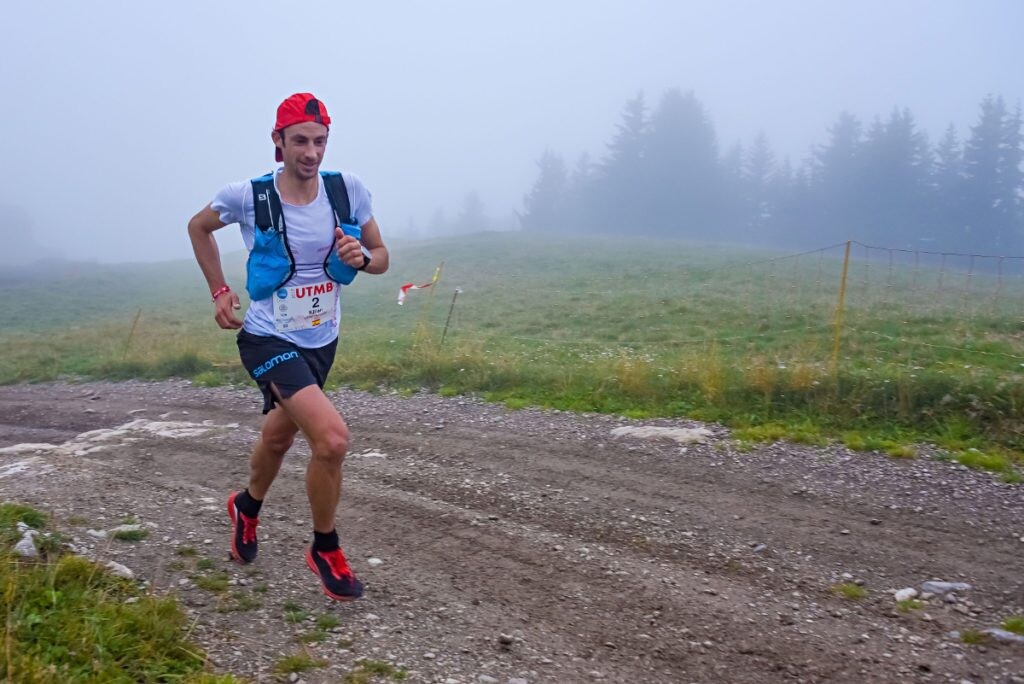
"This year I'm coming back to UTMB," said Jornet, in a clip sprinkled with quotes touting him as the sport's greatest of all time. "Why, you will ask me: it's because I really love to suffer. I really love the pain in the legs, the feet, and everywhere in the body. That's what long distance is about. To enjoy the pain!"
It will be Jornet's first time back at the 105-mile (170K) race since 2018, when he dropped 11 hours in. He has raced UTMB six times since 2008, including victories in 2008, 2009, and 2011. In 2017, he broke the race's course record while finishing second to Francois d'Haene's 19:01:54 and becoming the second man ever to break 20 hours on the course in 19:16:59.
The 2022 edition of UTMB is slated for August 21-28, with the 105-mile flagship race kicking off on Friday, August 26. It will come just six weeks after Jornet's appearance at the Hardrock 100 on July 15, where he will go after another win to complement those from 2014, 2015, and 2017 (as well as a co-victory with Jason Schlarb in 2016, when the two finished hand-in-hand).
Other athletes expressed their excitement for Jornet's return in the Twitter video.
"It would be a bit empty if Kilian wasn't there, to be honest," said Tim Tollefson, who will also race UTMB in August. "He is the king of the sport, so it just feels right to have him on the line."
Once August rolls around, Jornet will compete against one of the strongest fields UTMB has ever seen. Two-time champion Xavier Thevenard of France and an American contingency including Tollefson, Jim Walmsley, Jared Hazen, Sage Canaday, Dylan Bowman, Jason Schlarb, and Cody Reed will all be aiming for a podium finish. On the women's side, Americans Camille Herron, Brittany Peterson, and Hillary Allen will be in attendance, as well as Beth Pascall of the U.K., Audrey Tanguy of France, and Ragna Debats of the Netherlands.
"UTMB always has such a big level, so many good athletes, so I really love this competition," said Jornet in the video announcement. "I'm really looking forward to being at UTMB again this year."
by Trail Runner Magazine
Login to leave a comment
American Jim Walmsley will be taking another stab at UTMB
The 2022 edition of the Ultra-Trail du Mont-Blanc (UTMB) is seven months away, but the elite fields have been made official. Although he has never done better than fifth (and that was back in 2017), American Jim Walmsley will be gunning for a podium finish again on Aug. 28, along with seven of Canada’s top ultrarunners, including last year’s third-place finisher, Mathieu Blanchard. Check out the top athletes who will be racing this year.
UTMB — men
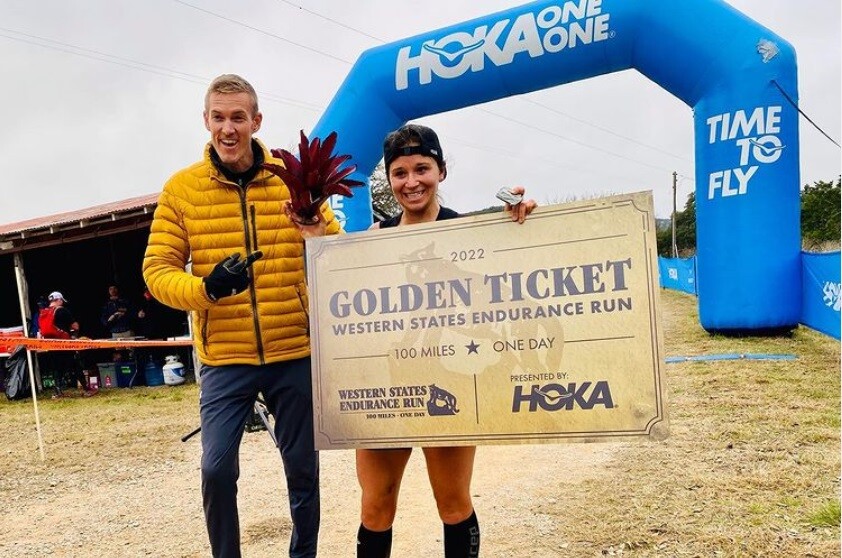
Blanchard, who is from France but lives and trains in Montreal, is among the top men who will be competing this year. Going into the race, Blanchard says his goal is to win the race, and he’ll have two main focuses for his training: “the first will be to prepare myself mentally, to visualize, to accept this possibility of a big goal because I still have trouble believing it today,” he says. “The second will be to build a logical race path to prepare for this race, choices of reason rather than choices of the heart.”
Last year’s second-place finisher, Aurélien Dunand-Pallaz of France will be returning, along with 2019 UTMB winner, Pau Capell of Spain. Walmsley, whose top finish was fifth in 2017 but who has won the Western States 100 for three consecutive years (2021, 2019, 2018) will also be challenging for a podium spot, as will France’s Xavier Thévenard, who has won UTMB three times (2018, 2015, 2013) and placed second in 2019. Nine other recent top-five finishers will also be joining them on the start line.
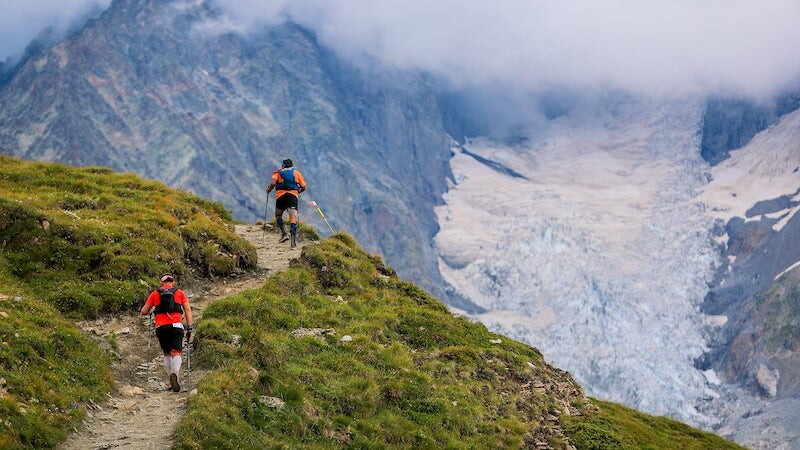
Notably absent from the start list is last year’s winner, François D’Haene and three-time UTMB champion, Kilian Jornet.
UTMB – women
Canadian ultrarunning fans will have plenty to cheer about in the women’s race in August. Three top Canadians will be on the start line, including Montreal’s Marianne Hogan, who won the 2022 Bandera 100K and placed second at the Ultra-Trail Cape Town 100k. Toronto’s Claire Heslop, Canada’s top finisher in 2021, will be joining Hogan, along with Alissa St. Laurent of Moutain View, Alta., who placed fifth in the 2018 UTMB TDS 145K in 2018 and sixth at UTMB in 2017.
“My dream result would be a top 10 at UTMB,” says Hogan, “so I will definitely shoot for that. A lot can happen come race day, so I will make sure to show up to the start line as ready as possible.”
Other top contenders on the women’s side include Camille Herron, who won the 2021 Javelina Jundred Mile (and broke the course record) in 2021 and set the 24-hour world record in 2019, Anna Troup, who won the 2021 Lakeland 100 Mile and the 2021 Spine Race Summer Edition 268 Mile, Sabrina Stanley, two-time winner of the Hardrock 100 and Beth Pascal, winner of last year’s Western States and two-time top-five finisher at UTMB.
There will be five other recent top-five finishers on the start line as well, but running fans will be disappointed to hear the two-time winner Courtney Dauwalter, 2019 third-place finisher Maite Maiora, among several other past winners, will not be in Chamonix on August 28.
CCC — women
There will be three elite Canadian women in the 100K CCC, including Victoria’s Catrin Jones, who placed in the top-10 at the 2019 Comrades Marathon 90k and holds the Canadian 50-mile and six-hour records. She will be joined by Ailsa MacDonald of St. Albert, Alta., who won the 2020 Tarawera 100 Mile and the Hoka One One Bandera 100K, and placed sixth in the CCC in 2019. Rounding out the Canadian squad will be Vancouver’s Kat Drew, who was third at the 2019 Bandera 100K, first at the Canyons 100K and eighth at Western States in 2019.
Other notable runners in the CCC include New Zealand’s Ruth Croft, who won the 2021 Grand Trail des Templiers 80k, placed second at the 2021 Western States 100 and won the UTMB 55K OCC in 2018 and 2019. France’s Blandine L’hirondel will also be looking to land on the podium after winning the OCC last year.
by Brittany Hambleton
Login to leave a comment
North Face Ultra Trail du Tour du Mont-Blanc
Mountain race, with numerous passages in high altitude (>2500m), in difficult weather conditions (night, wind, cold, rain or snow), that needs a very good training, adapted equipment and a real capacity of personal autonomy. It is 6:00pm and we are more or less 2300 people sharing the same dream carefully prepared over many months. Despite the incredible difficulty, we feel...
more...Canadian Reid Coolsaet set to run the 2022 Western States 100
The lotteries for the 2022 Western States 100 and Hardrock 100 took place this weekend, and Canadian Olympian Reid Coolsaet got his name on the Western States list. With over 8,000 applicants vying for only 340 lottery spots (221 for Western States and 119 for Hardrock), runners without automatic entry have a slim chance of having their names pulled, but 34 lucky Canadians got a spot on the start lines.
Western States
Of the top 10 male finishers at last year’s race, eight will be making their return to Olympic Valley, Calif., including second- and third-place finishers Tyler Green and Drew Holmen. Jim Walmsley, who won the race in 2018, 2019 and 2021 (the race was canceled in 2020 due to COVID-19), has not elected to return for the 2022 race. The top three podium finishers from last year’s race, Beth Pascall of the UK, Ruth Croft of New Zealand and Ragna Debats of the Netherlands, will all be returning, as will six more of the top 10 women from 2021.
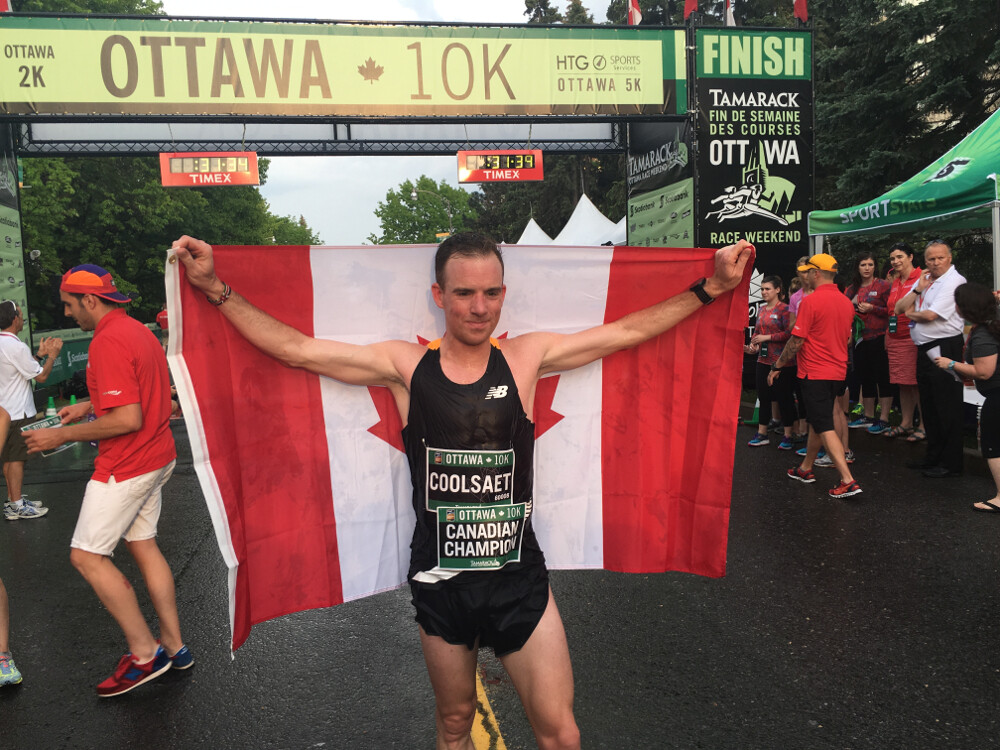
Canada’s Ailsa MacDonald received automatic entry, thanks to her 13th-place finish at the 2019 Western States and first-place finish at the 2020 Tarawera 100 Mile. Other fast runners who have received automatic entry include Sébastien Spehler (second at Ultra Trail Cape Town this year), Tom Owens (fourth at UTMB in 2019), Cole Watson (third at the Javelina Jundred), Stephanie Auston (third at the 2020 Black Canyon 100K and second at the 2019 Tarawera 100K) and Zoë Rom (third at the 2021 Rio del Lago 100 Mile and third at the 2021 Tillamook Burn 50 Mile), among others.
Coolsaet will be one of the top Canadians in the race, despite being relatively new to the ultramarathon scene. In August, he won his first-ever ultra, the Quebec Ultra Trail 110K, despite missing a turn and having to run an extra 10 kilometres. He will be joined by several other Canadians, including:
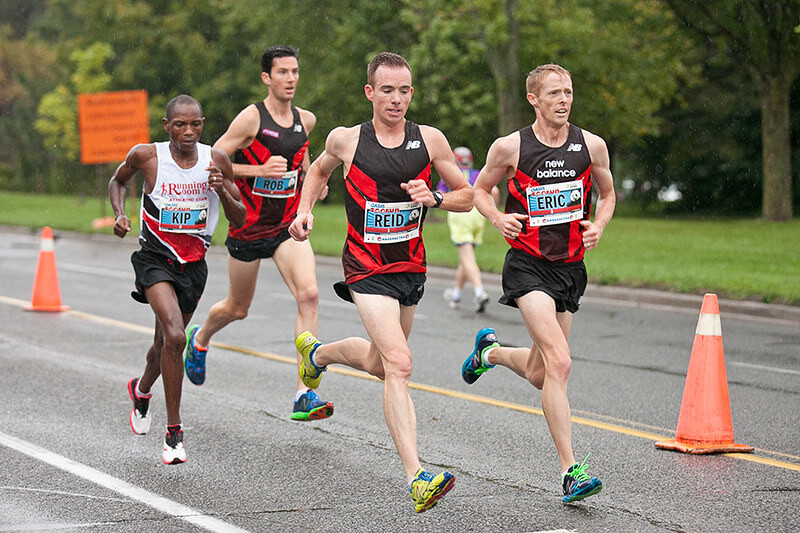
Leo Fung, Calgary
Jesse Hulley, Calgary
Mike Jollie, Calgary
Kevin Jansen, Calgary
Rohan Aurora, Vancouver
Steve Day, North Vancouver
Adam Harris, Squamish, B.C.
Patrick Humenny, Kimberly, B.C.
Ricardo Tortini, Port Moody, B.C.
Dawson Mossman, New Maryland, NB
Aytug Celikbas, Oakville, Ont.
Matt Lowe, Hamilton
Derek Mulhall, Tecumseh, Ont.
Norman Nadan, Orangeville, Ont.
James Swartz, Toronto
Vincent Gauthier, St-Zotique, Que.
Fanny Barrette, Calgary
Tara Chahl, Edmonton
Chelsey Topping, Lethbridge, Alta.
Kelly Haston, Toronto
Karen Holland, Kimberly, Ont.
Hardrock 100
Hardrock is particularly difficult to get into, because the only way to gain automatic entry into the race is by winning it the previous year. A unique addition to this year’s lottery: entrants who were chosen for last year’s race but were unable to travel because of COVID-19 were given automatic entry for 2022, which included 16 men and two women.
There are some big names on the 2022 start list, including Courtney Dauwalter, Sabrina Stanley, Magie Guterl, François D’Haene, Kilian Jornet, John Kelly, Luke Nelson and Jeff Browning. Canada’s Stephanie Case, who was the first woman (and third overall) at the 450km Tor des Glaciers race in Italy, will also be on the start line.
Other Canadians who received entry into Hardrock include:
Suzanne Johnson, North Vancouver
Dana Samis, North Vancouver
Joanna Ford, Calgary
Larry Kundrik, Lethbridge, Alta.
Ken Legg, Powell River, BC
Randy Duncan, Victoria, BC
Christopher Aubrey, Sherwood Park, Alta.
Nathaniel Couture, Fredericton, NB
Matthew Fortuna, Oyama, BC
Leo Fung, Calgary
by Brittany Hambleton
Login to leave a comment
Western States 100
The Western States ® 100-Mile Endurance Run is the world’s oldest and most prestigious 100-mile trail race. Starting in Squaw Valley, California near the site of the 1960 Winter Olympics and ending 100.2 miles later in Auburn, California, Western States, in the decades since its inception in 1974, has come to represent one of the ultimate endurance tests in the...
more...Courtney Dauwalter Smashed the Women’s Record at UTMB and Knocked Over 2 Hours Off Her Previous Best
In her second appearance at the French race, she knocked over two hours off her previous best and placed 7th overall.
Courtney Dauwalter returned to the 106-mile Ultra-Trail du Mont-Blanc (UTMB) to defend her 2019 crown and did not disappoint in her second appearance in Chamonix, France.
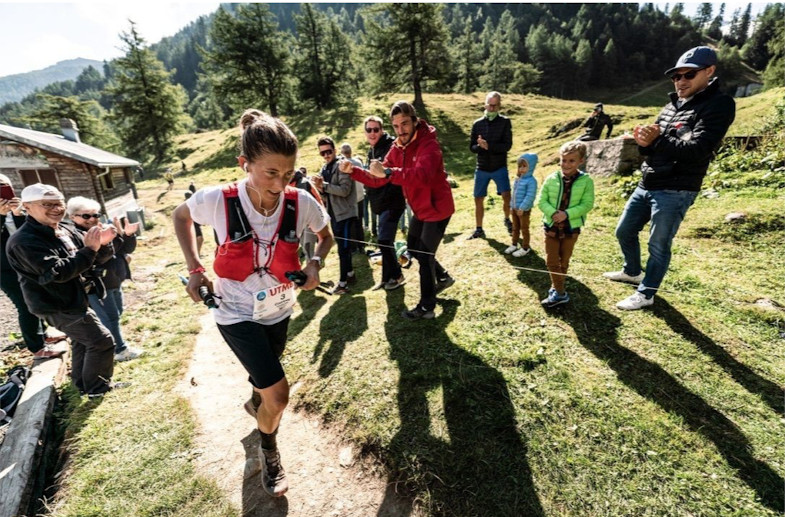
The 36-year-old from Golden, Colorado, led wire to wire in the women’s race, running into only a few minor issues along the way to set a new course record in 22:30:54 and finish seventh overall.
“It was an incredible experience again, and we were so excited to be back, immersed in that community,” Dauwalter told Runner’s World. “I didn’t know what to expect from the race, but I knew that I was lining up healthy and physically and mentally as ready as I could be.”
UTMB was a redemption race for Dauwalter, who was forced to drop out at mile 62 of the Hardrock 100 in July because of stomach issues.
Since then, Dauwalter said she has been tweaking her fueling strategy with her husband and crew chief, Kevin Schmidt. With solid foods causing issues at a certain point, she found that she should take in liquids only.
What happened at Hardrock turned out to be a blessing for her second time through the Alps. Similar problems arose around mile 50 at the Courmayeur aid station. Dauwalter was well ahead with only Mimmi Kotka of Sweden near her, but solid food wasn’t going down. Though she initially planned to switch to liquids only at mile 70, she and Schmidt opted to make the change earlier.
This meant Dauwalter relied on drinking a lot at aid stations and only fueling with the single liter she carried with her between aid stations.
“Climbing out of Courmayeur and coming to the top, I lost my lunch a little bit,” Dauwalter said. “But once it happened, it never happened again and I felt fine. I don’t know if my body was rejecting the fluids I put into it, but it ended up not being a big deal.”
Dauwalter then opened up a massive lead in the women’s race, picking off male competitors one by one. She said there were still low points in the latter part of the race—her legs felt shredded with each climb—but in those moments, she turned to her old friend, the iPod Shuffle.

“It literally has just the play button,” Dauwalter said. “It’s the best. Helps occupy my brain space with upbeat music. It basically has a playlist that started in 2010 and has just been added to since. So an eclectic mix of country music, Michael Jackson, Prince, some early 2010s pop and rap, and Taylor Swift.”
Dauwalter led the women’s race by over an hour as she made the final climb out of Vallorcine at mile 93 and descended back into Chamonix. Dauwalter found herself overjoyed upon seeing the mass of spectators welcoming her back into town.
As she ran through the streets and across the line, Dauwalter said she had no idea her time of 22:30:54 had set a new course record. Her time bested fellow American Rory Bosio, who set the previous record in 2013 (22:37:26) on a course that was three kilometers shorter.
“I feel very happy to have made the entire loop,” Dauwalter said. “After DNFing Hardrock, I wanted to finish UTMB no matter what it took. I’m grateful to my legs, my body, and Kevin and I were able to make the whole 100-mile adventure together. It’ll make for another great memory.”
Not only did Dauwalter make history with her time, she also finished seventh overall in the race. The rest of the women’s podium rounded out with French runner Camille Bruyas taking second (24:09:42) and Kotkas taking third (25:08:29). You can find the full results here.
“It’s a very cool time in the sport,” Dauwalter said. “There’s a lot of women pushing the limits and seeing what is possible. I feel lucky to be in this sport right now and sharing miles with those women and sharing races with these women.”
Dauwalter celebrated at the finish with Schmidt and her Salomon team. Having a beer was her top priority, so she grabbed a light beer that was handed to her. The next event on her race calendar is Big’s Backyard in October.
In the men’s race, French runners took the top five spots, led by now four-time champion Francois D’haene (2012, 2014, 2017, and 2021), who finished in 20:45:59.
American men continued their struggles at the event with Jim Walmsley and Tim Tollefson dropping out. The top American male was Luke Jay, who finished as the second American and 34th overall in 25:54:40. No American man has ever won UTMB.
Login to leave a comment
Francois D'haene claims his fourth victory at UTMB
Frenchman Francois D’haene delivers once again in the Alps, achieving his fourth victory at Ultra-Trail du Tour Mont Blanc. D’Haene finished in 20 hours and 45 minutes to cover the 170km course, climbing over 10,000m up and down the valleys of Mont Blanc.
This is D’haene’s fourth win in his fourth attempt at UTMB. He now single-handedly holds the record for most wins since the race began in 2003, passing Spain’s Kilian Jornet who holds three.
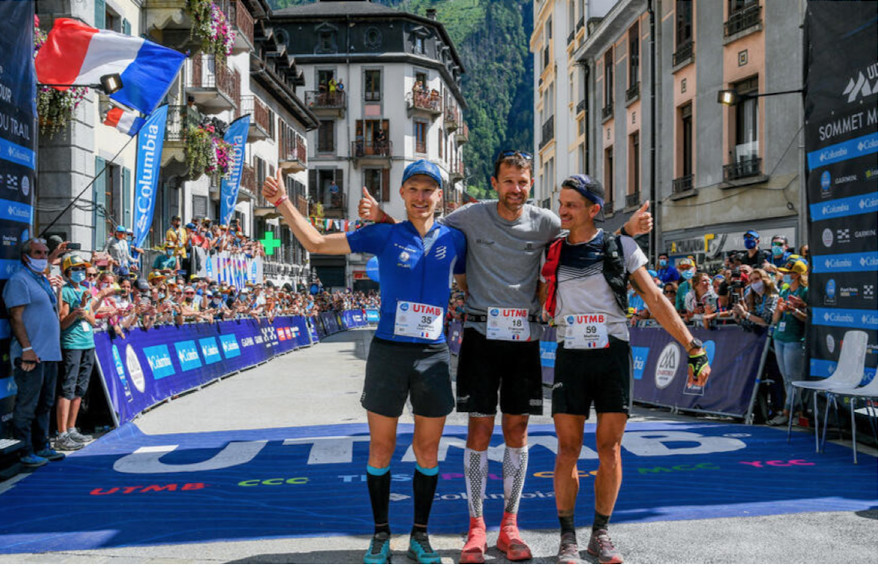
D’haene lead since the first breakaway and started a second breakaway group with American Jim Walmsley, as they began the climbing in Italy, D’haene dropped Walmsley and charged on towards the finish line. Walmsley dropped out of the race after failing to stay on pace with D’haene.
French-Canadian, who lives and trains around Montreal but was born in France, Mathieu Blanchard finished third to round out the podium. This marks the highest finish by a Canadian ever at UTMB. Aurélien Dunand-Pallaz of France was second to round out the French sweep of the podium, for the first time in history at UTMB.
In the women’s race, it was American Courtney Dauwalter who rose to glory. Dauwalter won the previous edition of the race, becoming the third woman to successfully defend her title on the hills of Mont Blanc. Dauwalter broke fellow American Rory Bosio’s course record finishing in 22 hours and 30 minutes. Dauwalter finished seventh in the overall standings, the highest finish ever by a woman.
Login to leave a comment
North Face Ultra Trail du Tour du Mont-Blanc
Mountain race, with numerous passages in high altitude (>2500m), in difficult weather conditions (night, wind, cold, rain or snow), that needs a very good training, adapted equipment and a real capacity of personal autonomy. It is 6:00pm and we are more or less 2300 people sharing the same dream carefully prepared over many months. Despite the incredible difficulty, we feel...
more...François D'haene, Sabrina Stanley win first Hardrock 100 in three years
After two successive cancellations (one due to snowfall and one to COVID), the Hardrock 100 took place in Colorado’s San Juan mountains on Friday, and it was worth the wait. French ultratrail superstar and three-time UTMB winner François D’haene was strong from the start, and powered through to a 21:45:51 finish early Saturday – the fastest time anyone has run the course, counterclockwise or overall (both records were held by Kilian Jornet, who did not run this year).
Defending champion Sabrina Stanley of Silverton, Colo. (where the looped-course race starts and finishes) won the women’s race in 27:21:48 – the second fastest women’s finish ever, and her second time racing Hardrock. Stanley was sixth overall, and was on pace for a course record until approximately mile 80.
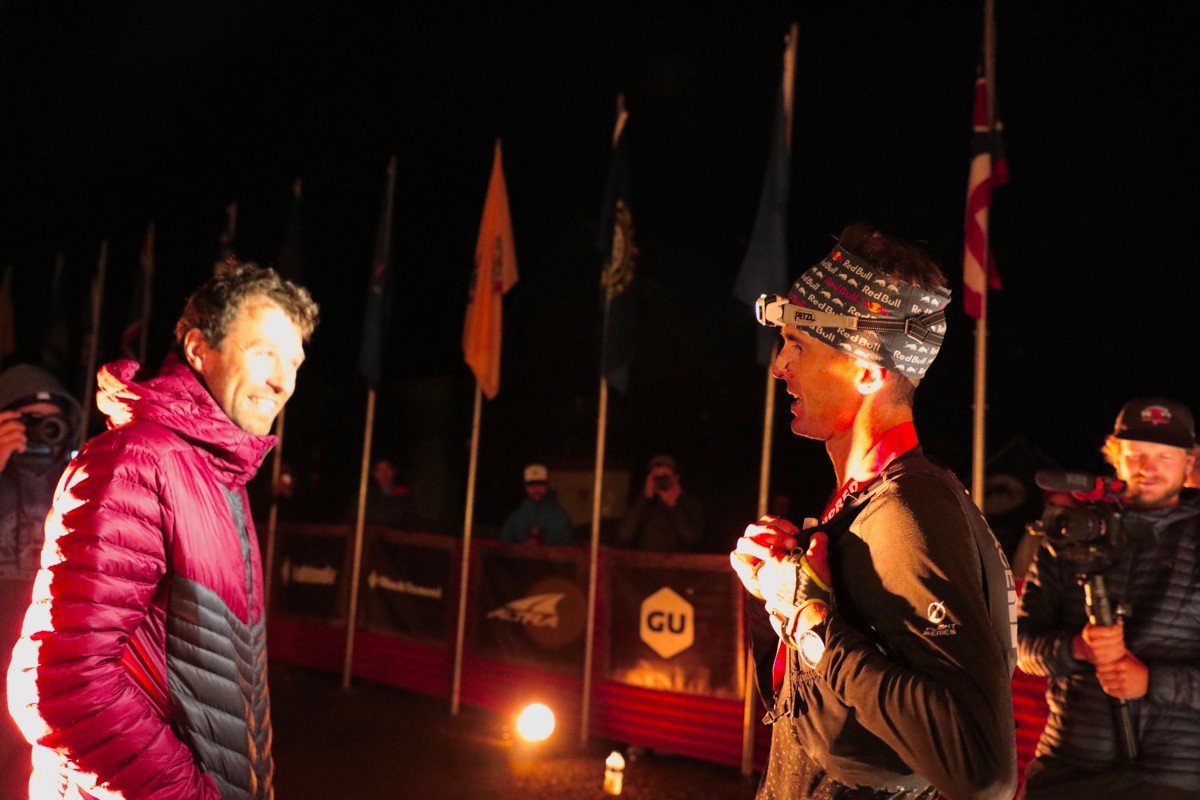
Dylan Bowman of Portland, Ore. took second place, exactly one hour behind D’haene, in 22:45:50. and Ryan Smith of Boulder, Colo. was third, in 23:24:29. All three finished faster than Jornet’s counterclockwise course record of 23:28:00, set in 2015, and D’haene bettered Jornet’s overall record of 22:41:33 from 2014.
Darcy Piceu of Boulder was the second woman to finish, in 32:08:17. Piceu has finished first or second in all eight of her Hardrock finishes. Meghan Hicks of Moab, Utah finished third, in 33:04:59.
D’haene is a three-time UTMB winner (2012, 2014 and 2017), among other titles, and Bowman has twice won the Ultra-Trail Mount Fuji, in 2016 and 2019. Both are Hardrock first-timers. D’haene was paced for the 30-mile section from Grouse to Telluride by Jim Walmsley, who won his third consecutive victory at Western States just three weeks ago and is now training for UTMB.
The second First-timer and favourite Courtney Dauwalter did not finish, dropping out at mile 62. Mike Wardian finished in 26th place, in 36:00:25.
Mario Festival of Calgary, who also dropped out at Ouray, appears to be the only Canadian entry.
Top 10 men
François D’haene 21:45:50
Dylan Bowman 22:45:50
Ryan Smith 23:24:29
Julien Chorier (2011 winner, 2nd in 2014) 25:56:57
Jeff Browning (2018 winner) 26:58:16
Nick Pedatella 28:27:47
Troy Howard 28:33:51
Trevor Fuchs 29:19:42
Kevin Shilling 30:33:20
Mick Jurynec 30:33:20
Top 10 women
Sabrina Stanley 27:21:48
Darcy Piceu 32:08:17
Meghan Hicks 33:04:59
Olga Nevtrinos 36:35:26
Heather Brooks 38:09:00
Betsy Nye 39:36:00
Pam Reed 41:56:00
Barbara Olmer 43:22:00
Marta Fisher 45:21:47
Betsy Kalmeyer 45:47:17 her second time racing Hardrock. Stanley was sixth overall, and was on pace for a course record until approximately mile 80.
by Running Magazine
Login to leave a comment
2021 Hardrock 100 Preview
Come the morning of Friday, July 16, 146 lucky runners will set off for 100 miles of beauty and challenge through southwestern Colorado’s San Juan Mountains in the Hardrock 100. Along the way, they’ll climb (and descend) 33,000 feet, all at elevations of up to 14,000 feet. The course switches direction with each event edition, and 2021 sees the route run in a counterclockwise direction.
Despite the insistence of some that it’s a ‘run’ rather than a ‘race,’ there’ll certainly be some at the front of both fields going for the win or another top position. This year’s edition will feature strong women’s and men’s races for the win, even if there’s not the competitive depth that the larger fields of other events allow. In the women’s race, we’ll see defending champ Sabrina Stanley challenged by Hardrock newcomer Courtney Dauwalter and three-time winner Darcy Piceu. The men’s returning champion, Jeff Browning, may have even taller task in holding off a pair of talented Hardrock first timers in François D’haene and Dylan Bowman. We dive into the details of each field below!

2021 Hardrock 100 Women’s Preview
Despite only 16 of the 146 runners slated to start this year’s Hardrock at the time I’m writing this, it wouldn’t surprise me if three of this year’s overall top 10 were women. In fact, we could see a pair in the top five if things play out just so.
It’s also worth keeping Diana Finkel’s course record of 27:18:24 from 2009 in mind. She set the course record traveling in the counterclockwise direction, the same direction as this year’s event. It’s also fun to note that the three-fastest ever women’s times at Hardrock were run in this counterclockwise direction.
Although she’ll be a Hardrock rookie, Courtney Dauwalter has to be the women’s favorite at this year’s race. In recent years, she’s won the 2019 UTMB, 2019 Madeira Island Ultra Trail, 2018 Western States 100, and 2018 Ultra-Trail Mount Fuji 100 Mile. Just a few week ago, she set a new course record at the San Juan Solstice 50 Mile, run not far to the east of the Hardrock course. What’s more, Courtney now bases herself up at 10,200 feet in Leadville, Colorado, so she’s plenty accustomed to the thin air she’ll find along the Hardrock cour
Sabrina Stanley returns to Hardrock as the defending women’s champion, having won the 2018 race in 30:23. Since then, she’s won the Hurt 100 Mile (2019) and Diagonale des Fous (2019) along with the shorter Mount Cheaha 50k in February 2020 and Quest for the Crest 50k this May. Last year, Sabrina managed to set the women’s supported FKT for Nolan’s 14—twice. A resident of Silverton, Colorado, she’s fully acclimated to the altitude and knows the course well.
If there’s a current Queen of Hardrock, it’s Darcy Piceu with her three Hardrock wins (2012-14) among her seven finishes while she continues to be a near lock for the women’s podium any given year. Indeed, she finished second in 2015 and 2017, her two most recent runs at the race. More impressively, she has twice as many sub-30 hour Hardrock finishes (six) than another other woman (Diana Finkel has three), and, as far as consistency, Darcy has finished all seven of her Hardrocks between 28:57 and 30:15!? Back in 2018, Darcy won both the Andorra Ultra Trail and Angeles Crest 100 Mile. Darcy did battle a serious injury earlier this year, but bounced back with a win at the Jemez 50 Mile in late May and a second at the Squaw Peak 50 Mile in mid-June.
Meghan Hicks has a pair of Hardrock finishes, with a rough 39-hour finish in 2015 and an improved 34:25 in taking fifth in 2016. In 2016 and again in 2020, she set the then women’s supported FKT for Nolan’s 14. This spring, she took third at Scout Mountain 50 Mile. More important, she’s been living and training on the course since March.
2021 Hardrock 100 Men’s Preview
While this will be his first time running the race, that makes France’s François D’haene no less of a favorite to win this year’s Hardrock. Why? He’d be on a very short list of best mountainous 100-mile trail runners in the world with three wins at UTMB (2012, 2014, and 2017) and four wins at Diagonale des Fous (2013, 2014, 2016, and 2018). Without Kilian Jornet, Xavier Thevenard, or, maybe, Jim Walmsley (he knows these mountains well) here, it’s François’s race to lose outside of the San Juan Mountains and the challenges they hold taking it from him. After a light 2020, François tuned up for Hardrock in taking third at the 112k Ultra Cabo Verde Trail in May. It’s worth noting that when snow canceled Hardrock in 2019, he came over and spent a few weeks training on the Hardrock course anyway and he’s back in the area acclimating and scoping the course for at least two weeks again this year.
After trying to get in for seemingly forever, Dylan Bowman will be another Hardrock rookie challenging for the men’s win. Bowman’s damn good at mountainous 100 milers and spent plenty of years living and training in the Colorado Rockies. Among the reasonably recent results that show his chops in the mountains are a third at Transgrancanaria in 2020, wins of Ultra-Trail Mount Fuji in 2016 and 2019, and a seventh at UTMB in 2017. While he lives in Portland, Oregon these days, he’s been living at altitude in Mammoth Lakes, California and training in the Sierra Nevada for much of the past month.
Jeff Browning returns to Hardrock as the defending champion, from winning in 26:20 back in 2018 following the disqualification of Xavier Thevenard. Among his three other Hardrock finishes, he took fourth in 25:42 in 2016 and fourth in 26:58 in 2014. Earlier this year, he won the Zion 100 Mile. Late last month, Browning dropped out midway through the Western States 100 due to dead quads and wanting to save something for Hardrock. In 21 years of running ultras, it’s only the second time he’s DNFed a race, with the other being due to a sprained ankle at UTMB 2015. Browning will be 49 years old on race day.
High-altitude 100 milers seem to suit Ryan Smith, who won Leadville in 2019 and High Lonesome in 2018. Going back a few years, Smith was ninth at UTMB in 2015 and 22nd there the following year. Other top results include fifth at the shortened to 47k Ultra-Trail Mount Fuji in 2016 and 16th at the 85k Trail World Championships at Penyagolosa in 2018.
One shouldn’t underestimate Trevor Fuchs on a mountainous 100-mile course. He’s won the Hurt 100 mile in 2020, taken second at the Bear 100 Mile in 2019, and won the Wasatch 100 Mile in 2016 and 2017. I’m looking forward to finally seeing Trevor race in person.
Although it’s been quite a while, Julien Chorier has twice run Hardrock, winning in 2011 in 25:17 and taking second to Kilian Jornet in 2014 in 25:07. This Frenchman may no longer be able to run that fast of a time, but he continues to have success, placing ninth at TDS and seventh at Ultra Pirineu in 2018 and finishing fourth at Transgrancanaria and 17th at UTMB in 2019. Earlier this year, Chorier took 13th at Transgrancanaria.
If you’re going to follow this year’s Hardrock, you should know Troy Howard, who finished third in 2018 after finishing second in both 2009 and 2013. One could be worried that he took 14th at the relatively small San Juan Solstice 50 Mile in late June, but he was 12th there in 2018 ahead of his third place at Hardrock. Troy simply knows what he needs to do for a good finish at Hardrock. I should add that Troy will be 48 years old on race day. That goes along with Browning at age 49, Smith at 42, and Chorier at 40. That’s a solid masters field right there!
by I Run Far
Login to leave a comment
2021 Western States 100 Men’s Race
It would have taken a lot to convince most everyone to bet against Jim Walmsley (pre-race interview) this year. And yet some of us still somehow did, because Walmsley took an unconventional path to 2021 success. But we all should have known better.
With many of the international men choosing not to make the trip over the various ponds, it was going to be a showdown of domestic talent. Listening to Walmsley talk before the race, it was clear he was in a good place mentally and physically. An IT band injury in the spring may have cut down on his training volume, but in the end, it may have ended up being a blessing in disguise. He went into the race with the experience of two well-executed States performances, and he surely he drew on that knowledge to put together a smart and measured race from start to finish.
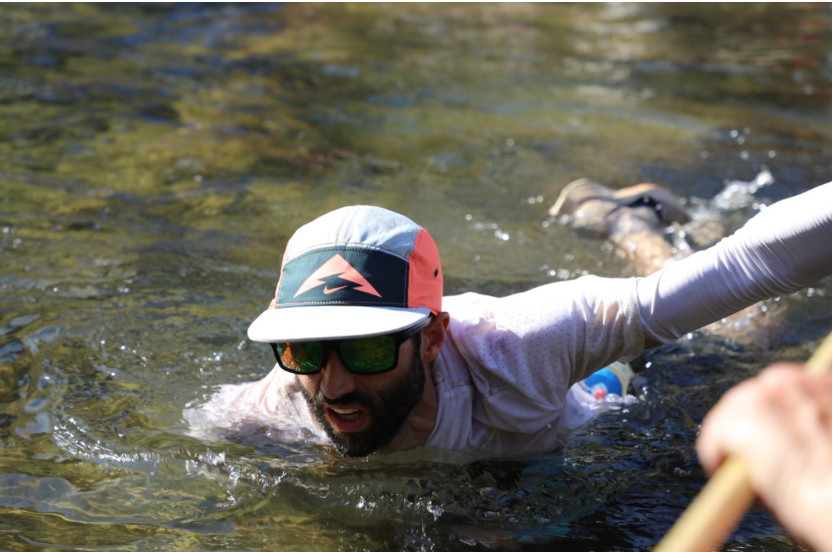
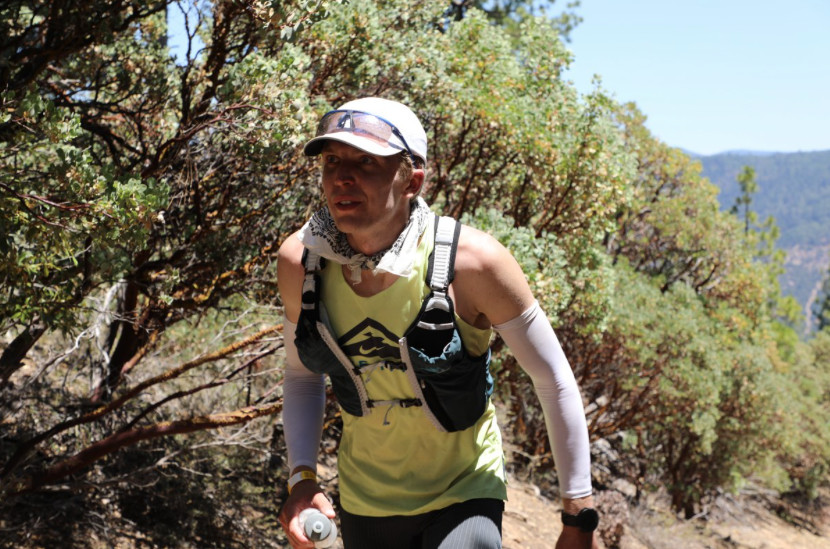
Hayden Hawks (pre-race interview), on the other hand, was making just his second attempt at the 100-mile distance. But after setting a course record at the JFK 50 Mile last fall and a solid block of training leading up to Western States, he was out to race and win. Jared Hazen (pre-race interview) was hoping that fourth time would be the charm for Western. After a third and a second in previous years, he hoped that a training block that started in February would deliver results.
It didn’t take Walmsley long to make it the 3.5 miles up to the Escarpment. He was accompanied by Hawks and followed closely by Hazen. This order was entirely unsurprising given that all three men had the confidence to try to win the race.
Early on at Red Star Ridge at mile 15, Hawks and Walmsley were already running three minutes under record pace, the lack of snow clearly saving them time. Hazen followed in third two minutes back with other race favorites Tim Tollefson (pre-race interview), Matt Daniels (pre-race interview), and Mark Hammond close on his heels. Just under an hour later at Duncan Canyon, Walmsley and Hawks had pushed the pace another four minutes under record pace, both running smooth at 24 miles in.
By Robinson Flat at mile 30, Walmsley’s pace had become too much for Hawks. He passed through five minutes under course record pace and 45 seconds in front of Hawks. By this time, Tollefson, running toward his childhood home in the foothills of the Sierra Nevada, had moved into third, just over 12 minutes back, looking very relaxed. Thirty seconds later, Hazen came through, already looking decidedly rough.
Sometime before mile 38, Walmsley had donned a bucket hat and continued to cruise at six minutes under record pace, slowly pulling away from the rest of the field. Hawks held the gap to just six minutes while Hazen and Tollefson joined forces nearly 17 minutes back. The likes of Alex Nichols (pre-race interview), Drew Holmen, and Max King stayed close, just another seven minutes back.
By mile 50, Walmsley had put eight minutes into the course record. Maybe it was the bucket hat, but the only word to describe his appearance was relaxed. It was a full 26 minutes later before second place Hawks rolled through, still seemingly running within himself. Nichols led Tollefson through, both looking strong. Hazen continued to suffer, dropping back to fifth.
By the time the leaders rolled through Foresthill at mile 62, it was 93 Fahrenheit in the shade and 97 in the sun. It was time for the heat management strategies to come into play. “It’s not the heat, it’s the hills,” said Hawks, coming through after losing 10 minutes to Walmsley in the previous five miles. He was now 48 minutes back and had Nichols to contend with who was slowly closing the gap.
That ever-infamous Cal Street, stretching between Foresthill at mile 62 and the Rucky Chucky river crossing at mile 78, is where the day started to catch up to Walmsley—just a little bit. At the Cal 2 aid station, he’d given back his advantage on the course record. From there on out, he moved faster than everyone else behind him, but slower than a 2019 Walmsley.
By Green Gate at mile 80, Walmsley was five minutes over course-record pace. But Hawks came through a full 77 minutes back. A surging Holmen was just 11 minutes behind and didn’t even stop. This was his first attempt at 100 miles, and he’d clearly done his homework on pacing and patience. Tyler Green was close behind. With a 14th-place finish at Western States in 2019, Green was on a mission to do better.
By the time Walmsley made it to Robie Point, just a mile to go, and with the course record was off the table, he stopped for a Coke and walked the climb. He would continue to cruise the final mile in his bucket hat to win his third Western States in a row with a time of 14:46:01.
Behind him, the race for the podium stayed intense. Somewhere between Green Gate and Pointed Rocks at mile 94, Hawks disappeared from the front of the race, leaving Green in second place with Holmen chasing just six minutes back. Cody Lind followed in fourth and just 17 minutes back.
At the end, Green would hold off Holmen with a time of 16:11:00 to take second, a massive jump up from his 2019 finish. Holmen completed the podium with a time of 16:23. Both had started off conservatively and had it pay off in the end.
Lind would finish fourth in 16:49:40, an impressive run for his first 100 miler and first attempt at Western States. He clearly had insider’s knowledge as the son of two-time Western States finisher Paul Lind and the grandson of the event’s original medical director Dr. Bob Lind.
Tollefson rounded out the top-five men with a time of 16:55:49. He’d put off running Western until he felt ready to do the race justice, and clearly, he was ready. The fact that he’d grown up in the area and run the last miles of the course hundreds of times certainly paid off in the race’s most difficult miles.
In the back half of the men’s top 10, we had sixth-place Kyle Pietari, who executed yet another well-played top-10 performance, Stephen Kersh who finished seventh for the second time in a row after curiously bouncing around almost all the top-10 positions over the course of the day, and Hawks who ultimately crossed the line in eighth place after experiencing physical struggles and a long stay at the mile 94 aid station to regroup.
Among the day’s breakout runs was ninth place Kyle Curtin, who moved up into the top 10 late. And Nichols rounded out the top 10 in what looked like a difficult finish after an even more difficult day.
And just to clear the air for those wondering, Daniels DNFed at mile 55. Hazen and Jeff Browning left the race at mile 62. And Hammond and King tapped out at mile 80.
by I Run Far
Login to leave a comment
Jim Walmsley wins his third consecutive Western States 100
On an exceptionally hot day in California, Jim Walmsley won his third consecutive Western States 100 title Saturday in 14 hours, 46 minutes. Walmsley came through the Pointed Rocks aid station at mile 95 with a comfortable lead of about 81 minutes, and the live webcam followed his final mile by bike.
Walmsley, who lives in Flagstaff, Ariz., had admitted earlier in the week that he hadn’t been entirely healthy throughout his build up and had been nursing an IT band injury, leading to speculation that he might not even make it to the start line, but apparently he had nothing to worry about, as his remarkable result proved.
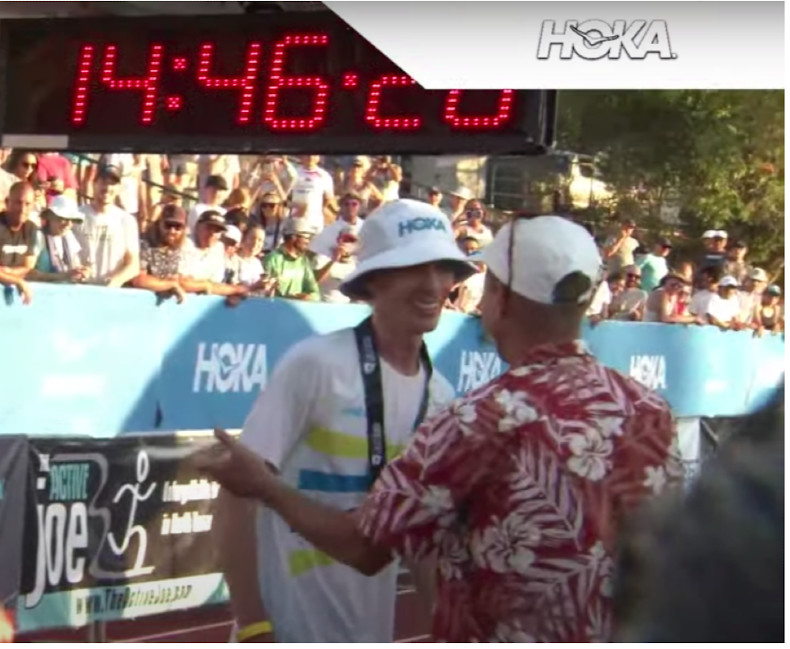
Walmsley ran 14:09:28 in 2019, the last time the race was run (it was cancelled in 2020 due to the pandemic), smashing the course record of 14:30:04 that he set in 2018, in his third appearance at the race. Today, he had put considerable distance between himself and Hayden Hawks by around mile 35, but it was clear another record was not going to be possible. (Hawks was in second position for most of the race, but shortly before Walmsley’s arrival at the finish line, announcers Dylan Bowman and Corrine Malcolm mentioned he was in danger of being passed by Tyler Green and Drew Holmen.)
Walmsley is only the third man with three consecutive victories; the other two are Scott Jurek, who had seven straight victories from 1999-2005, and Tim Twietmeyer, who won five times, three of them consecutively in 1994-1996.
Beth Pascall of the U.K. led the women’s race all day and is a good bet to win, but the top five were very close together throughout, making it too risky to call. Pascall won the Canyons 100K race in California in April, and shattered the record on the Bob Graham fell round in the U.K. last year. At the time of Walmsley’s finish, she was sitting at 7th or 8th overall, with Ragna Debats of the Netherlands (who is 42) and Ruth Croft of New Zealand (in her 100-mile debut) just outside the top 10 overall.
For the first time, there were live broadcasts on YouTube and by iRunFar, so fans could follow every minute of the race, with constant well-informed and passionate commentary from Bowman and Malcolm about the oldest and best-loved 100-miler in North America.
Login to leave a comment
Western States 100
The Western States ® 100-Mile Endurance Run is the world’s oldest and most prestigious 100-mile trail race. Starting in Squaw Valley, California near the site of the 1960 Winter Olympics and ending 100.2 miles later in Auburn, California, Western States, in the decades since its inception in 1974, has come to represent one of the ultimate endurance tests in the...
more...The Western States 100 Is Back and It’s Going to be HOT!
Western States is famously competitive - and this year is shaping up to be one of the toughest competitions yet with hot temps, and a stacked field.
Jim Walmsley and Magda Boulet will be back at the Western States Endurance Run this week.
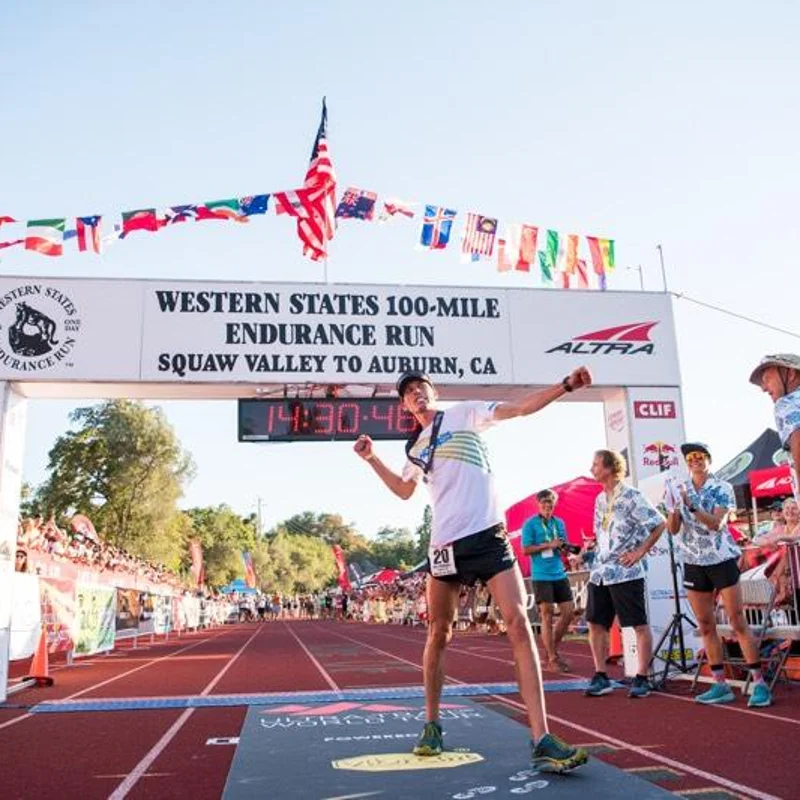
And so will Clare Gallagher, Patrick Reagan, Max King and Brittany Peterson. And, so too is race pioneer Gordy Ainsleigh and 312 other inspired runners who have been training for more than a year and a half to get to the starting line. In fact, we’re all heading back to the Sierra Nevada range this weekend — even if vicariously — to what feels like a bit of normalcy returning.
After a year mostly away from the trail racing running scene, things are starting to feel like old times. With stacked men’s and women’s fields, scorching heat in the forecast and last year’s Covid-19 hiatus hopefully mostly behind us, it’s definitely the event the ultrarunning community has been looking forward to. The race begins at 5 a.m. PST on June 26 and it looks like it’s going to be an epic one. (Follow via live tracking or the live race-day broadcast.)
“Yeah, it will be good to be there and see people and actually be in the race,” says Walmsley, who won the race in 2018 and 2019 in course-record times. “It’s been an odd year.”
Odd for sure, but with deep men’s and women’s fields, hot weather, dusty trail conditions and the late June gathering of a few hundred runners on this hallowed ground feels somewhat normal. The mountains and canyons in and around Olympic Valley northwest of Lake Tahoe have been a sacred place for the native Washoe people for thousands of years before Gordon Ainsleigh’s first romp over the Western States Trail in 1974.
It’s been an especially odd year for Walmsley, who, for the second straight year, had planned to use the first half of his year training for the 90K Comrades Marathon in South Africa. But that was canceled last year (with just about every other big race, including the Western States 100) and this year, too.
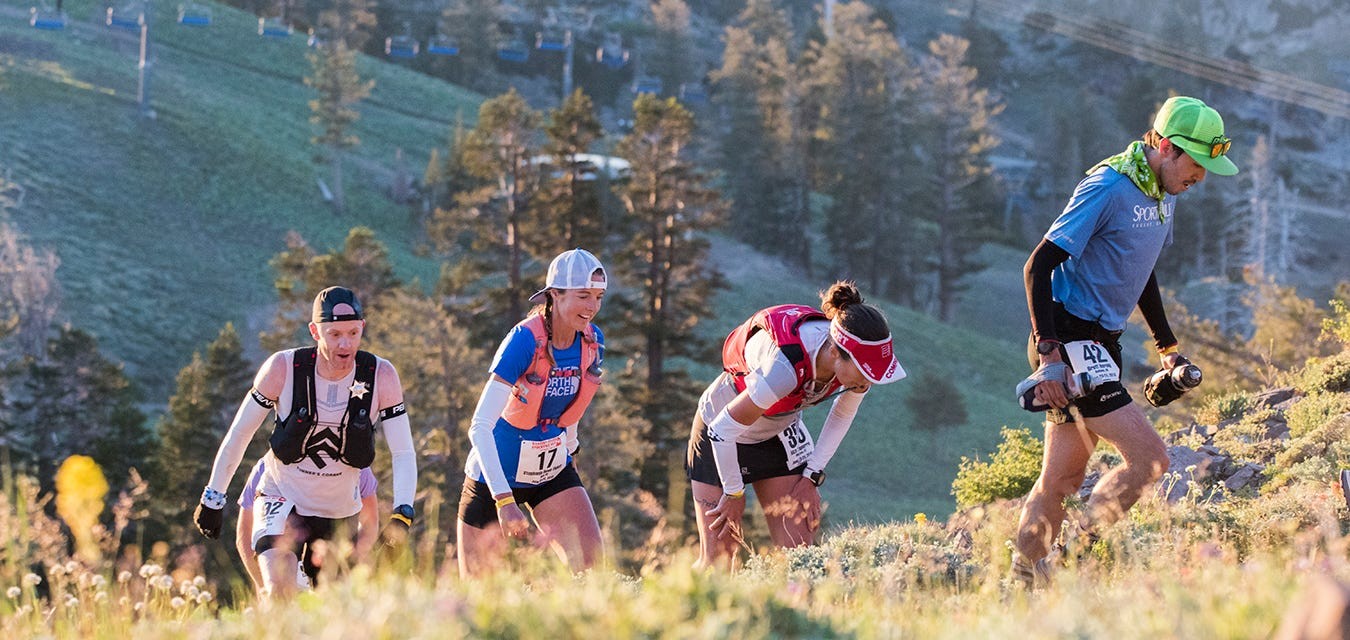
So instead, after setting a new U.S. 100K road record in January, he took a sponsor’s entry into the Western States 100 from HOKA One One and will be once again lining up in America’s most celebrated trail running race. With notable first-timers Tim Tollefson and Hayden Hawks in the mix along with Walmsley, Reagan, King, Matt Daniels, Alex Nichols, Kyle Pietari, Mark Hammond, Stephen Kersh, Jeff Browning and Jared Hazen all returning with previous top-10 finishes, on paper anyway, the men’s race is shaping up to be one of the most competitive in recent memory or maybe ever, even though it’s comprised entirely of domestic runners.
The women’s race might be even more competitive with former champions Boulet, Gallagher (2019) and Kaci Lickteig (2016) leading the way, plus elite American runners Camille Herron, Addie Bracy, Camelia Mayfield and Keely Henninger and international stalwarts Ruth Croft (New Zealand), Audrey Tanguy (France), Beth Pascall (UK), Emily Hawgood (Zimbabwe), Kathryn Drew (Canada) and Ragna Debats (Spain) joining the fray.
Who are the favorites? It’s hard to tell. Most of those runners, including Walmsley and Boulet, have admitted to having dealt with some minor injuries, inconsistent training, a lack of motivation and other setbacks over the crazy year that was. Based on what runners have been reporting, it seems like most are just eager to get back and immerse in a competitive 100-miler and see what they can do.
However, one of the keys will certainly be who can survive the heat the best. The forecast is calling for high temperatures in the upper 80s to the high 90s on Saturday after and the canyons between Robinson Flat and Michigan Bluff could even reach over 100 degrees.
Walmsley has said he’s dealt with some IT band issues and has focused mostly on running with a lot of vert, focusing on getting optimal recovery, strength sessions and body work, as well as spending as much time running in extreme heat as possible. That includes running and hiking countless laps to the summit of 9,298-foot Mt. Elden in Flagstaff, averaging 20 to 25 hours per week on the trails and also spending a lot of time on a bike trainer.
But he’s also spent a lot of time in the infrared sauna in his home and spent time with family in the Phoenix area, where he ran in the afternoons amid 115- to 120-degree heat.
“The heat training is kind of lucky for me, because growing up in the heat in Arizona, I didn’t know any different,” Walmsley says. “I just thought everyone was roasting in the heat. It’s what I grew up with and I try to lean into those memories and embrace the heat.”
Boulet, who lives in Berkeley, Calif., has also gone out of her way to train in the heat. While she says her build-up has been inconsistent compared to previous years, she’s been doing a lot of climbing and descending in the heat, and also working on box jumps to strengthen her legs for the long descent into Auburn. She says a recent 40-mile run up 3,849-foot Mt. Diablo east of Berkeley, is a good indicator that she’s ready to roll.
“I’ve definitely been spending more time in the heat lately, which is something I personally don’t enjoy running in,” says Boulet, who won the race in 2015, DNF’ed in 2016 and placed second in 2017. “But I know the importance of preparing in the heat and falling in love with running in the heat by race day. You can be as physically as ready as possible in terms of your fitness, but if you don’t have the heat training and you’re trying to tackle some of the parts of the canyons that are in the middle of the race, It’s really tough.”
Given the extreme heat, it’s not likely that anyone will challenge Walmsley’s 14:09 course record set two years ago, when it was in the low-80s and cloudy on race day. But there’s also no snow on the course this year, so the early sections that have previously forced runners to hike and walk early on will likely be faster, and that will likely result in fatigue that will slow them down in later stages of the race.
“You’ve got to take what the course gives you,” Walmsley says. “I’ve learned that you don’t fight the course where you shouldn’t. I have some splits in mind that would get me there under 15 hours and maybe close to 14:30, but it’s going to be all about feeling out what the course is giving me, following those guidelines and not forcing it. Because anyone who forces it in that heat will be doomed.”
by Outside Online (Brian Metzler)
Login to leave a comment
Western States 100
The Western States ® 100-Mile Endurance Run is the world’s oldest and most prestigious 100-mile trail race. Starting in Squaw Valley, California near the site of the 1960 Winter Olympics and ending 100.2 miles later in Auburn, California, Western States, in the decades since its inception in 1974, has come to represent one of the ultimate endurance tests in the...
more...Jim Walmsley opens up about injury ahead of Western States 100
The defending WSER champion has been dealing with knee issues over the past few months, but he says he's ready to race this weekend
If you follow American ultrarunner Jim Walmsley on Strava and wondered why he’s been so quiet lately, he posted on Instagram on Tuesday to talk about an injury that has been nagging him for the past few months. Walmsley wrote that he has been dealing with knee and IT band issues, but he added that he has been pain-free for the past couple of weeks. His recovery couldn’t have come at a better time, as he is set to race the Western States 100 (WSER) in California on Saturday. Walmsley is the two-time defending WSER champion and course record holder, and he will be looking to make it three wins in a row this weekend.
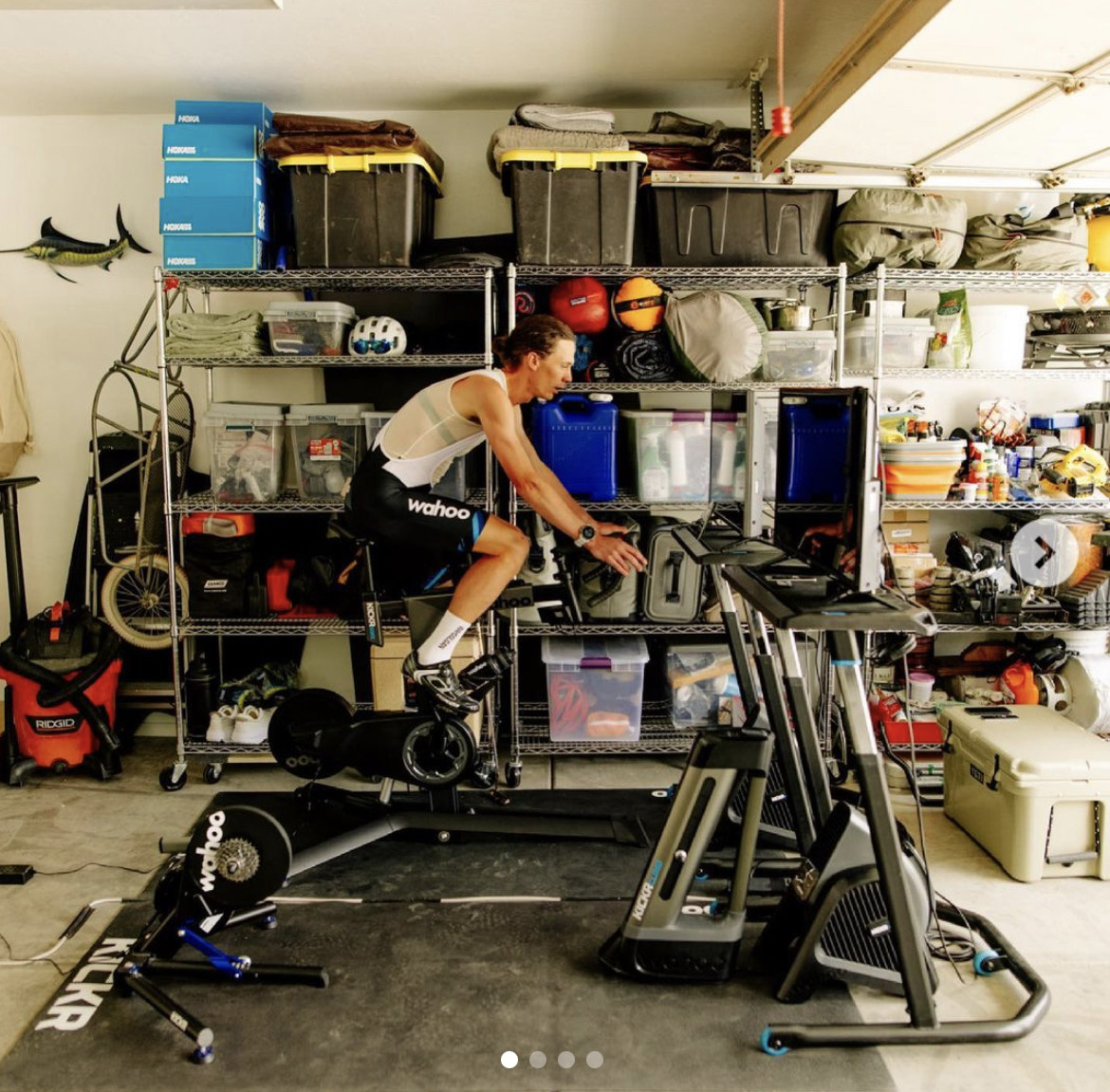
As Walmsley wrote on Instagram, his knee and IT band issues began about three months ago. “It was at a point I saw as a crucial time to take it seriously and take some time to address it,” he said. He made big changes to his training schedule, taking five days off of running each week for the better part of a month. Walmsley said the injury came as a surprise, noting that his training load had been steady and his workouts had been going well for the previous month.
After his “reset with running,” Walmsley said he had eight weeks to go until WSER. While he might have felt better, he didn’t push himself too much, and he spent the next while taking care in his workouts and visiting his physiotherapist regularly. He added that he spent a lot of time riding his bike to make up for his lack of run training in this period.
Walmsley races at Hoka One One’s Project Carbon X 2, where he ran 6:14:26, just 12 seconds off the 100K world record. Photo: Hoka One One
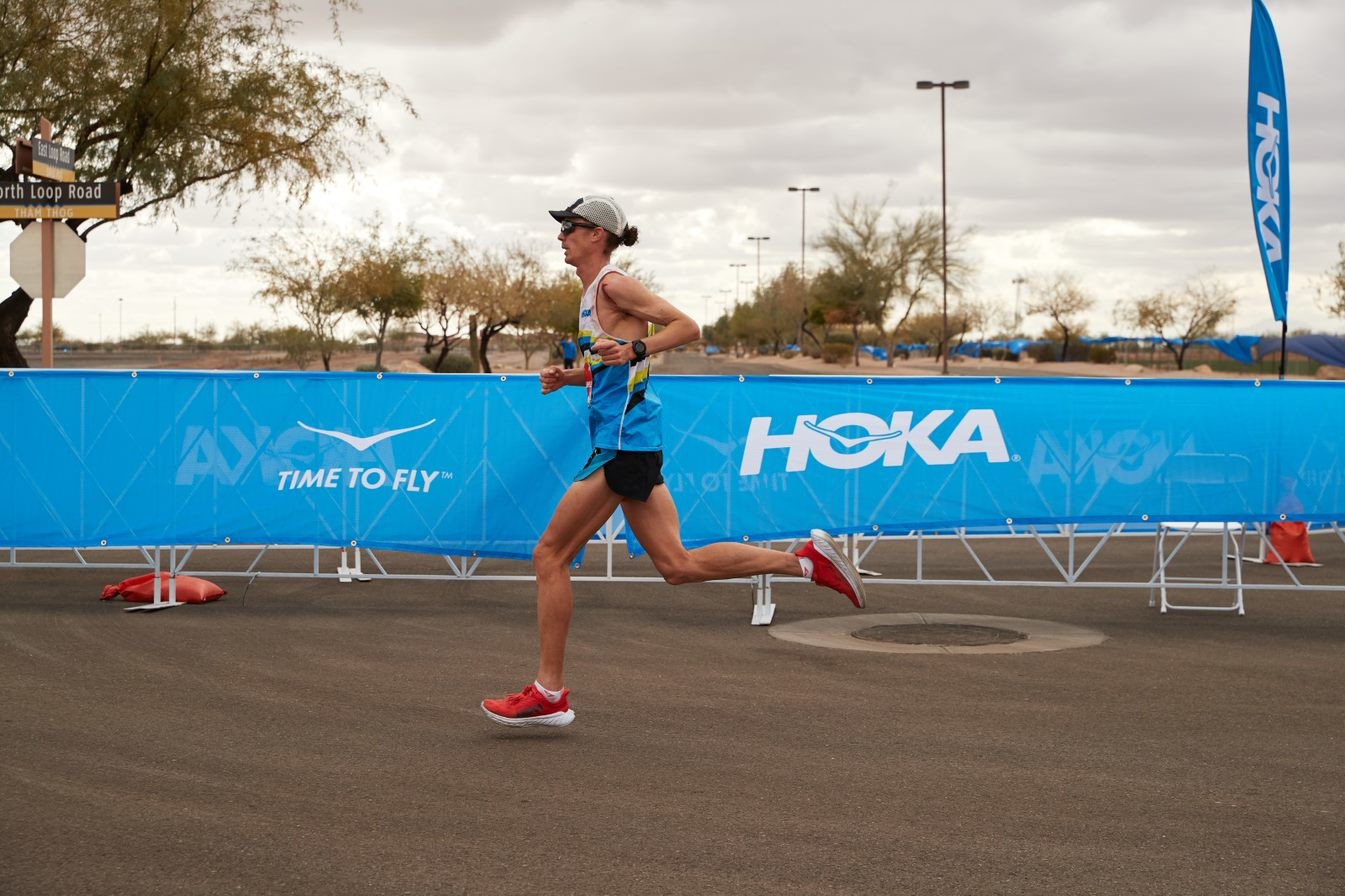
“This block has been so much more work than usual,” he wrote. “I went through ups and downs with emotions, not knowing if I’d be able to line up healthy.” With just a few days to go until WSER, Walmsley’s careful training and build to race day worked out, and he said he feels better and healthier than he has at any point in the past three months.
“I feel like I’m gaining momentum at the right time,” he wrote, “and I couldn’t be more excited to be back at Western States ready to rock.”
by Running Magazine
Login to leave a comment
Western States 100
The Western States ® 100-Mile Endurance Run is the world’s oldest and most prestigious 100-mile trail race. Starting in Squaw Valley, California near the site of the 1960 Winter Olympics and ending 100.2 miles later in Auburn, California, Western States, in the decades since its inception in 1974, has come to represent one of the ultimate endurance tests in the...
more...Sara Hall, Eliud Kipchoge among runners chosen for Sports Illustrated's Fittest 50 honours
Sports Illustrated has released its Fittest 50 list, and as usual, multiple runners were included. The Fittest 50 is SI‘s attempt to list the fittest men and women in the world, looking at athletes from any and all sports. This year, nine runners were selected, with six of the 25 women and three of the 25 men coming from the track, trails or road. Here’s a breakdown of where each individual placed and why the SI panel (which included Dr. Michael Joyner of the Mayo Clinic) chose them.
The women
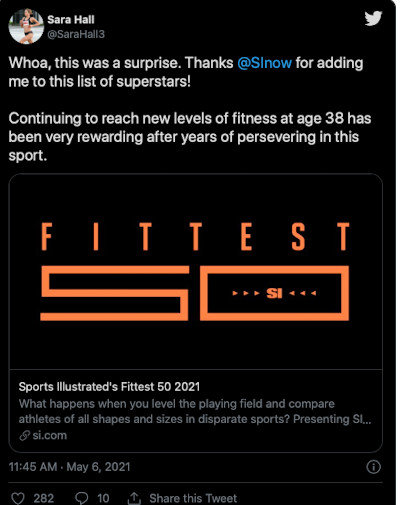
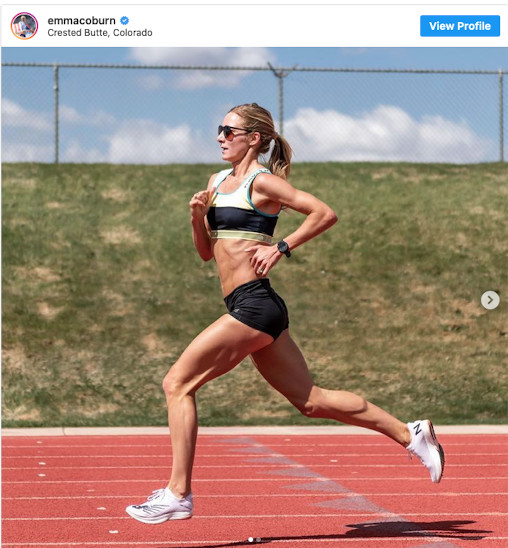
Running was the sport with the most women included in the top 25, and the six athletes chosen was double the three chosen from MMA, which was the sport with the next-most number of selections. American marathoner Sara Hall is #24, and with her performances in the past year, it comes as no surprise to see her on this list. The SI team notes how Hall overcame the disappointment of missing out on the Tokyo Olympics and ended up running two huge marathon PBs, first at the London Marathon (where she finished in second in 2:22:01) and then with her win at The Marathon Project, where her 2:20:32 finish was the second-fastest marathon in U.S. history.
Up next is Dalilah Muhammad at #16. SI refers to Muhammad as the “queen of the 400-metre hurdles,” a title she has owned since her gold medal in the event at the 2016 Olympics. Since then, she has broken the world record on multiple occasions (her current record stands at 52.16 seconds, a time that won her the gold medal at the 2019 world championships), and she is now a heavy favourite to win gold in Tokyo this summer.
American ultrarunner Courtney Dauwalter comes in at #14, and her remarkable result from Big’s Backyard Ultra in 2020 is listed as a big reason for that. Dauwalter won the American title at the event, running 455K. Just ahead of Dauwalter at #13 is American track and field star Tianna Bartoletta. Bartoletta is truly a track and field standout, as she has won Olympic and world medals in both sprints and jumps. In London in 2012, she won Olympic gold as part of the U.S. women’s 4 x 100m relay team. She and the squad defended that title in Rio four years later, and she added an individual gold medal in the long jump.
Emma Coburn is #10 on the list, coming in ahead of tennis star Serena Williams. SI lists Coburn’s multiple steeplechase medals, from her bronze in Rio to her gold and silver at the 2017 and 2019 world championships, and it’s noted that she has the potential to break the American 3K steeplechase record of 9:00.85 later this year. Finally, coming in at #6 on the list is Shaunae Miller-Uibo. The Bahamian sprinter is the defending 400m Olympic gold medallist, and she could also be a threat in the 200m in Tokyo.
The men
Unlike on the women’s list, running didn’t win for the most men selected in the top 25 (American football had four athletes and basketball had three), but three athletes still made the elite list. American ultrarunning sensation Jim Walmsley was included at #24, and he is extremely deserving of this honour. Firstly, as noted in the SI piece, he competed at the U.S. Olympic Marathon Trials in 2020, going out of his comfort zone and running 42.2K instead of his preferred ultra distances of 100K or 100 miles. He finished in 2:15:05, earning him 22nd place in his debut marathon. He then kicked off 2021 with an amazing 100K run in Arizona, where he finished in 6:09:26, breaking the American record and finishing just 12 seconds off the world best.
Next up is Eliud Kipchoge at #20. While Kipchoge had the worst marathon of his career at the London Marathon in October 2020, there’s no denying that he’s still one of the best road runners in the world. He’s the world record holder in the marathon and he is the only human to run under two hours in the event, making him a favourite to win gold in Tokyo this summer.
Finally, breaking into the top 10 is Noah Lyles at #9. Lyles is the reigning 200m world champion, and he owns a PB of 19.50 in the event. He’s a heavy favourite to take gold in Tokyo, and he might even compete in the 100m. Add all this together and he’s a clear choice for SI‘s Fittest 50 list.
by Running Magazine
Login to leave a comment
Eliud Kipchoge and Sara Hall, among runners chosen for Sports Illustrated’s Fittest 50 honors
Sports Illustrated has released its Fittest 50 list, and as usual, multiple runners were included. The Fittest 50 is SI‘s attempt to list the fittest men and women in the world, looking at athletes from any and all sports. This year, nine runners were selected, with six of the 25 women and three of the 25 men coming from the track, trails or road. Here’s a breakdown of where each individual placed and why the SI panel (which included Dr. Michael Joyner of the Mayo Clinic) chose them.
Running was the sport with the most women included in the top 25, and the six athletes chosen was double the three chosen from MMA, which was the sport with the next-most number of selections. American marathoner Sara Hall is #24, and with her performances in the past year, it comes as no surprise to see her on this list. The SI team notes how Hall overcame the disappointment of missing out on the Tokyo Olympics and ended up running two huge marathon PBs, first at the London Marathon (where she finished in second in 2:22:01) and then with her win at The Marathon Project, where her 2:20:32 finish was the second-fastest marathon in U.S. history.
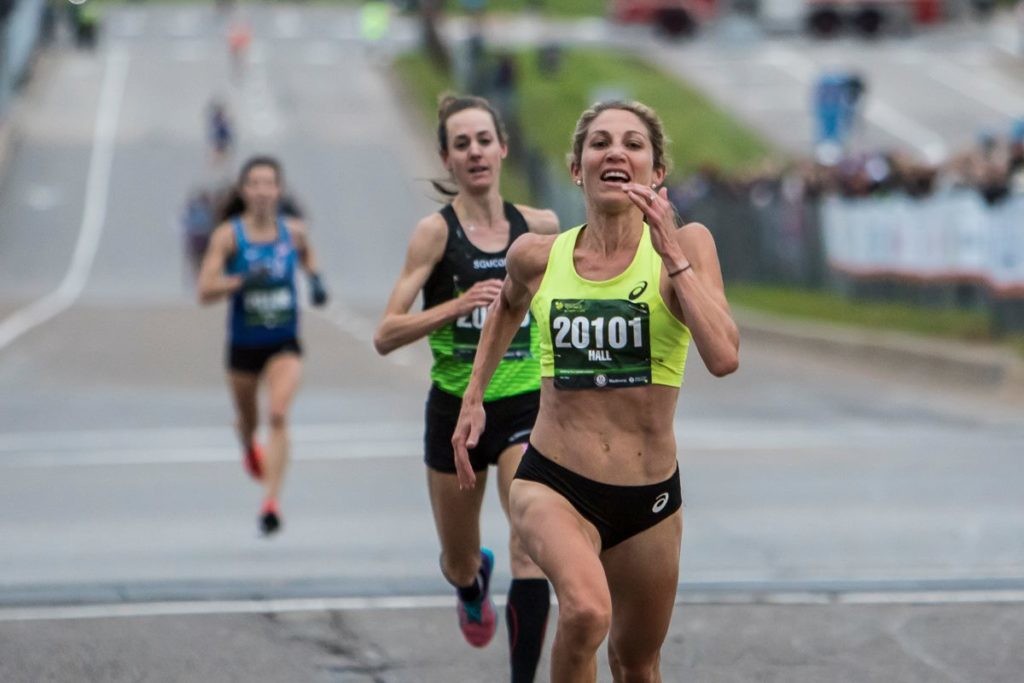
Up next is Dalilah Muhammad at #16. SI refers to Muhammad as the “queen of the 400-meter hurdles,” a title she has owned since her gold medal in the event at the 2016 Olympics. Since then, she has broken the world record on multiple occasions (her current record stands at 52.16 seconds, a time that won her the gold medal at the 2019 world championships), and she is now a heavy favorite to win gold in Tokyo this summer.
American ultrarunner Courtney Dauwalter comes in at #14, and her remarkable result from Big’s Backyard Ultra in 2020 is listed as a big reason for that. Dauwalter won the American title at the event, running 455K. Just ahead of Dauwalter at #13 is American track and field star Tianna Bartoletta. Bartoletta is truly a track and field standout, as she has won Olympic and world medals in both sprints and jumps. In London in 2012, she won Olympic gold as part of the U.S. women’s 4 x 100m relay team. She and the squad defended that title in Rio four years later, and she added an individual gold medal in the long jump.
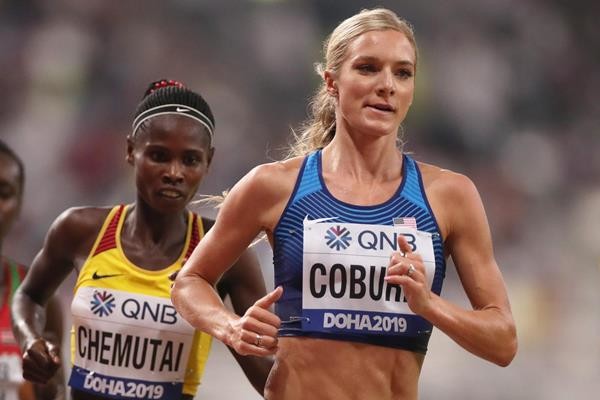
Emma Coburn is #10 on the list, coming in ahead of tennis star Serena Williams.
Unlike on the women’s list, running didn’t win for the most men selected in the top 25 (American football had four athletes and basketball had three), but three athletes still made the elite list. American ultrarunning sensation Jim Walmsley was included at #24, and he is extremely deserving of this honor. Firstly, as noted in the SI piece, he competed at the U.S. Olympic Marathon Trials in 2020, going out of his comfort zone and running 42.2K instead of his preferred ultra distances of 100K or 100 miles. He finished in 2:15:05, earning him 22nd place in his debut marathon. He then kicked off 2021 with an amazing 100K run in Arizona, where he finished in 6:09:26, breaking the American record and finishing just 12 seconds off the world best.
Next up is Eliud Kipchoge at #20. While Kipchoge had the worst marathon of his career at the London Marathon in October 2020, there’s no denying that he’s still one of the best road runners in the world. He’s the world record holder in the marathon and he is the only human to run under two hours in the event, making him a favorite to win gold in Tokyo this summer.
Finally, breaking into the top 10 is Noah Lyles at #9. Lyles is the reigning 200m world champion, and he owns a PB of 19.50 in the event. He’s a heavy favourite to take gold in Tokyo, and he might even compete in the 100m. Add all this together and he’s a clear choice for SI‘s Fittest 50 list.
by Ben Snider-McGrath
Login to leave a comment
UTMB Is Back!
The world's most important trail race is driving forward-pandemic or not-and despite a tough year across the board, it seems to only be gaining steam.
While many races struggle to fill their 2021 entry slots, that was not a problem for UTMB, Chamonix, France's Ultra-Trail du Mont-Blanc-now six races from 40 to 300 kilometers, all of which take place during the final week of August in the legendary mountain town at the base of Mont Blanc. Despite a year off due to the global pandemic, interest in the race series remains very strong.
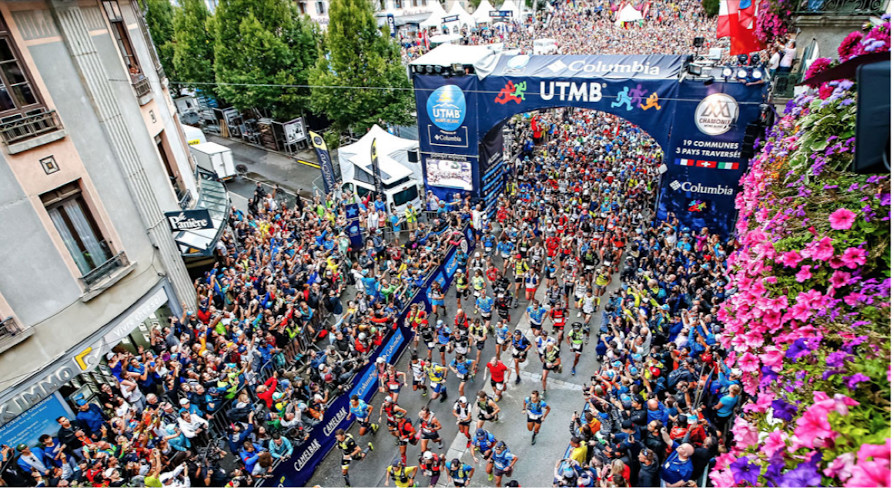
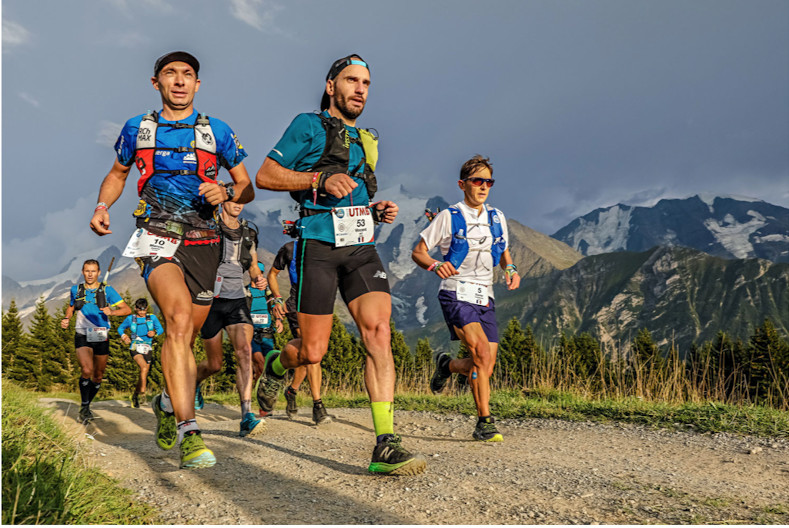
For the 16th time in a row, the UTMB races have sold out, with 10,000 runners slated across all the races. With the pandemic continuing to complicate international travel, the event's mix of nationalities has shifted, with more participants from within Europe and fewer from China and Japan. Despite the long-haul travel involved, U.S. interest in UTMB continues to grow, up slightly to 338 participants.
The UTMB organization is contemplating a number of changes this year, including a streamlined bib pickup system and wave starts with a few hundred runners in each block. Runners will have to wash their hands on their way into aid stations, with social distancing and masks being de rigeur. Shared food bins will be a thing of the past, and it's possible runner assistance areas may be altered or eliminated.
Despite the global uncertainty, 2021's marquee race around 15,774-foot high Mont Blanc looks to be among the most competitive trail races ever, on a par with 2017, which some observers have considered the most stacked trail race in the history of the sport. That year, France's Francois D'Haene edged out Catalonia's Kilian Jornet by 15 minutes, and Spain's Nria Picas won in a down-to-the-wire race, edging out Switzerland's Andrea Huser by under three minutes.
How did such a strong field coalesce? "It was really just organic. We didn't do anything specific to make it happen," says UTMB's Press Officer, Hugo Joyeux. One example is a post by three-time UTMB winner D'Haene, who asked on Instagram, "Who's coming back to take part in the party? I'll be there!" D'Haene went on to tag his top challengers, gently teasing them into showing up at the starting line next to the Mayor's office in the old part of Chamonix this August 27th. Most are in, with Jornet notably absent as he continues to reduce his trail-racing schedule to focus on mountaineering objectives.
The USA's top runners didn't need a social media ribbing from D'Haene to add the race to their calendars. Starting for the women will be Courtney Dauwalter, aiming for a second consecutive UTMB win, along with Katie Schide, Kaytlyn Gerbin, Brittany Peterson and Stephanie Howe. Schide, second in the CCC race in 2018, and 6th in the UTMB in 2019, currently lives in the south of France, in the maritime Alps region, and is easily the most experienced European racer among the U.S. women's elite entrants.
"UTMB reliably draws the most competitive field of the year," says Schide. With top runners coming out of an usual pandemic year-plus, Schide is eager to go head-to-head. "Time trials and personal challenges are fun, but racing is where I'm really able to find the absolute limits."
The U.S. men's delegation is equally competitive-with a dose of angst added, too. In 18 years, no American male has ever won UTMB. It's long since started to be a topic of discussion. Flagstaff, Arizona's Jim Walmsley has started UTMB twice, finishing fifth in 2017 and dropping out in 2019, while Tim Tollefson, from Mammoth Lakes, California, has had four starts, with two third-place finishes. In 2018, he took a serious fall, fileting a quadricep-yet he still managed to run another 90 kilometers before having to drop. The wound ended up requiring eight stitches. The following year, he showed up at the starting line feeling ill, and eventually dropped.
About 2021, Tollefson says, "It's going to be another barn burner," revealing that comparisons with others toeing the start line has been something with which he has struggled over the years. "Contrary to what most may believe, anxiety over who is or isn't in a field has tormented me historically," he explains. "Insecurities over training, fraudulent thoughts of belonging, self punishment and disrupted sleep were commonplace."
For Tollefson, that mix of emotions has added up to sleepless nights and high levels of stress. This past year, counseling has offered him a better perspective. In addition to the usual training, he's working on "becoming mindful in life and believing that the quest to become the best version of myself-which is not dependent on the love, acceptance or applause of anyone else-is the ultramarathon worth mastering."
"I left the Chamonix valley in 2018 full of anger, guilt and shame. What brewed over the next 12 months was a toxic cocktail of unchecked emotions and coping strategies," says Tollefson. "No matter how much I lied to myself and others, I simply did not want to be there."
How will he feel, arriving in Chamonix valley this August? "For the first time in years, the thought of being back in the valley, truly present, is beginning to excite me."
The restart of UTMB this summer is welcome news to this Alps tourist hub, which historically welcomes close to 100,000 guests for the race series at the close of each August. When last August's races were cancelled, the organization refunded 55 percent of the entrance fees for the 10,000 registered runners. The split created grumblings on social-media platforms. Meanwhile, the staff of 30, which includes UTMB's international races, suffered its own share of disruptions. They began working from home starting with the first French lockdown on March 17th, and didn't return to the office until this past December. They now operate with 50 percent of the staff in the office-masks required.
by Trail Runner Magazine
Login to leave a comment
UTMB announces stacked fields for 2021 races
The 2021 edition of the Ultra-Trail du Mont-Blanc (UTMB) is still months away, but the fields for the August race are officially set. After UTMB organizers cancelled their event in 2020 due to COVID-19, any race would have been exciting to watch this year, but fans will be treated to a pair of stacked lineups in the men’s and women’s fields. With six former UTMB champions and many other world-class runners set to race in Chamonix, France, later this year, the storied 170K ultramarathon looks like it will be can’t-miss action.
The women’s race
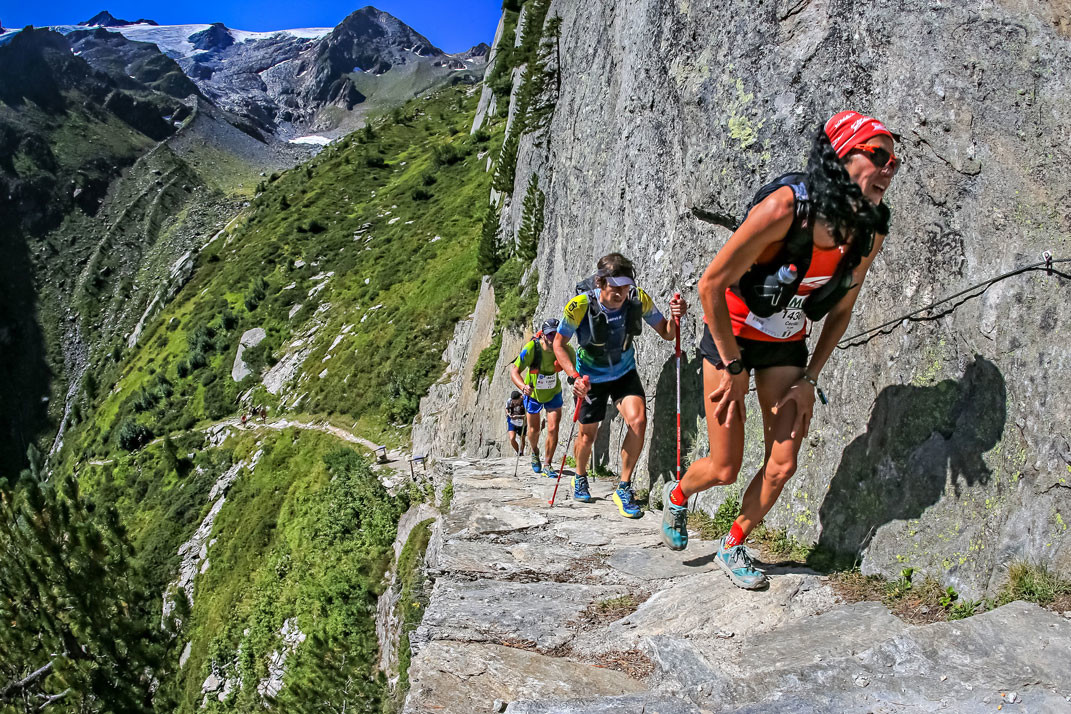
Former UTMB champs Courtney Dauwalter of the U.S. and Francesca Canepa of Italy headline the women’s race. Dauwalter is the reigning UTMB champion after her win in 2019, which was her first time running the race. She is widely recognized as one of the best ultrarunners on the planet, and she will be extremely tough to beat in Chamonix.
RELATED: UTMB adds to international race lineup with Thailand ultramarathon
Canepa won the women’s UTMB crown in 2018, and she also placed second in 2012. Other former top UTMB finishers on the start list for 2021 include Japan’s Kaori Niwa (fourth in 2017 and the winner of the 2019 Oman by UTMB 170K ultramarathon), Uxue Fraile Azpeitia of Spain (three-time UTMB podium finisher) and Beth Pascall of the U.K. (fourth- and fifth-place finishes in 2018 and 2019).
Multiple world record holder Camille Herron is also set to race in Chamonix. She has won ultramarathons around the world, including the Comrades Marathon in South Africa in 2017 and the Tarawera 100-miler in New Zealand in 2019, and she certainly has what it takes to win or place high in the overall UTMB standings.
Ailsa Macdonald is the lone Canadian in the elite UTMB women’s field. With big results like her wins at the Golden Ultra in B.C. in 2018 and the Tarawera 100 in 2020, Macdonald is another podium threat. She also has experience in Chamonix, having placed sixth in the UTMB’s CCC 101K ultra in 2019.
The men’s race
On the men’s side, there are four former UTMB winners: Pau Capell of Spain (winner in 2019) and French athletes François D’Haene (won in 2012, 2014 and 2017), Ludovic Pommeret (won in 2016) and Xavier Thévenard (won in 2013, 2015 and 2018). The past eight UTMB crowns belong to these four men, and they’re all capable of extending that streak to nine straight this year.
Jim Walmsley and Tim Tollefson are the top two American hopes on the men’s side. Tollefson made the UTMB podium in 2016 and 2017 with a pair of third-place finishes, while Walmsley has only raced in Chamonix once, running to fifth place. As Walmsley showed recently in a 100K world record attempt (he ran 6:09:26, missing the record by 12 seconds), he is in incredible shape this year, and while August is still months away, he has to be considered a favourite.
Also on the start list is the U.K.’s Damian Hall, who finished in fifth at the 2018 edition of UTMB. Hall is coming off a fantastic year of running that featured several prominent FKTs, and although he hasn’t raced in a while, he shouldn’t be counted out come August.
Finally, Canada will be represented by Mathieu Blanchard. Born in France, Blanchard now lives and trains in Montreal. He has raced in Chamonix before, running to a 13th-place finish in 2018, and in 2020 he ran onto the podium at the 102K Tarawera Ultra race.
UTMB is set to run from August 23 to 29, 2021.
by Running Magazine
Login to leave a comment
Six former UTMB champs are on the start lists for the famed ultramarathon's comeback in August
The 2021 edition of the Ultra-Trail du Mont-Blanc (UTMB) is still months away, but the fields for the August race are officially set. After UTMB organizers cancelled their event in 2020 due to COVID-19, any race would have been exciting to watch this year, but fans will be treated to a pair of stacked lineups in the men’s and women’s fields.
With six former UTMB champions and many other world-class runners set to race in Chamonix, France, later this year, the storied 170K ultramarathon looks like it will be can’t-miss action.
The women´s race
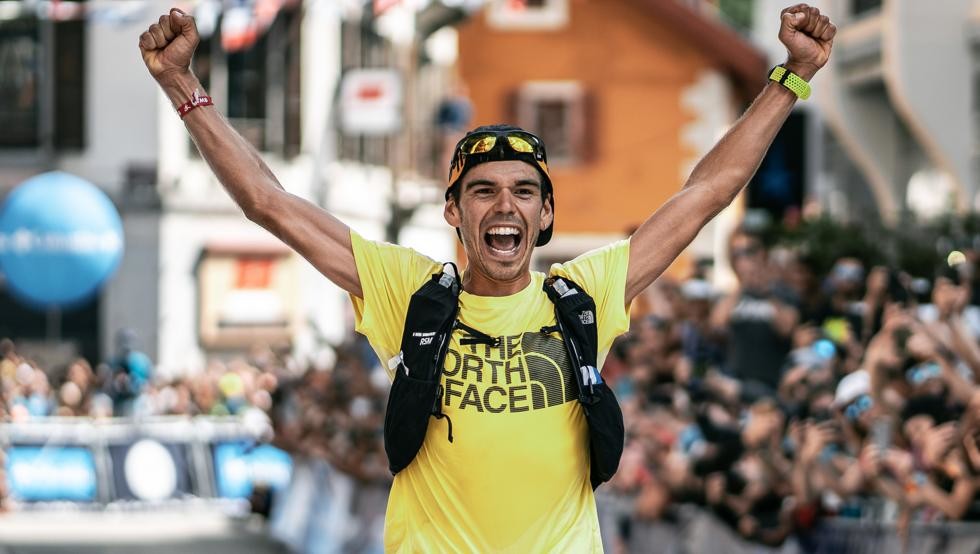
Former UTMB champs Courtney Dauwalter of the U.S. and Francesca Canepa of Italy headline the women’s race. Dauwalter is the reigning UTMB champion after her win in 2019, which was her first time running the race. She is widely recognized as one of the best ultrarunners on the planet, and she will be extremely tough to beat in Chamonix.
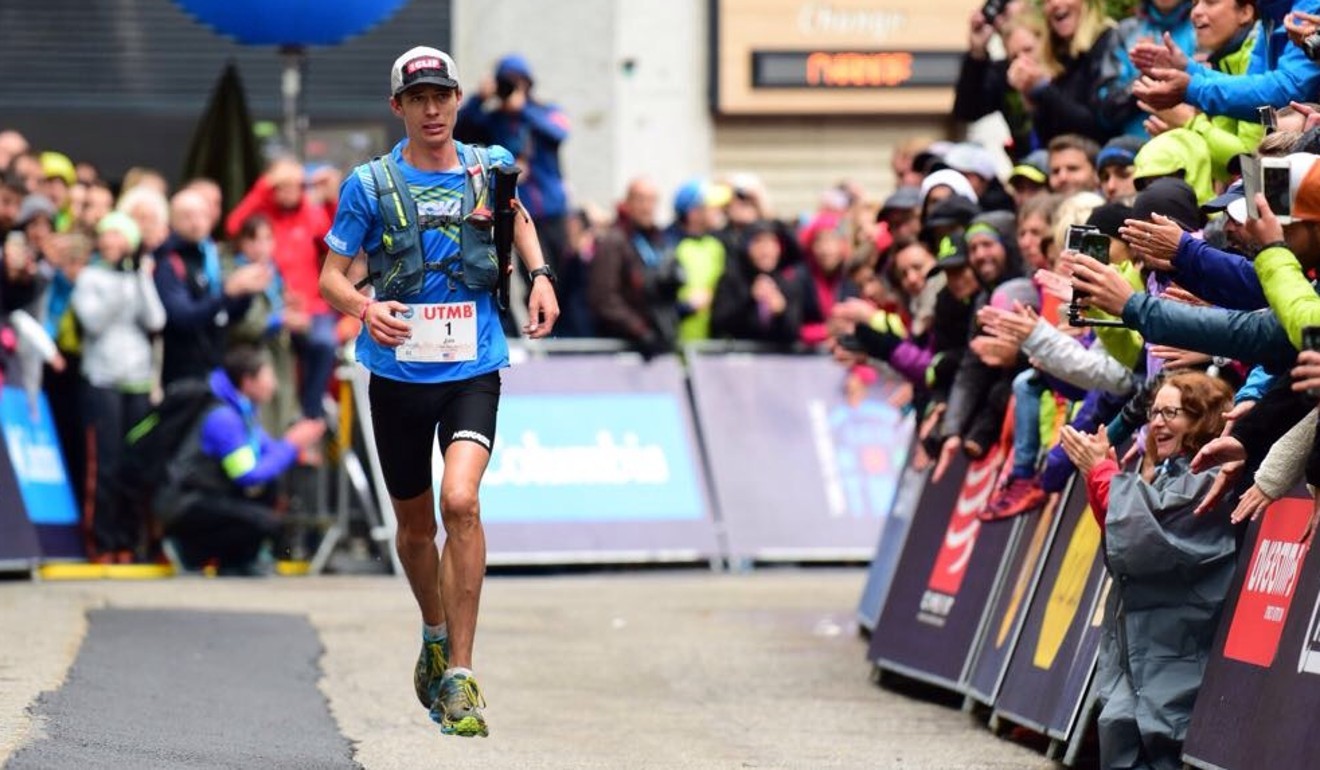
Canepa won the women’s UTMB crown in 2018, and she also placed second in 2012. Other former top UTMB finishers on the start list for 2021 include Japan’s Kaori Niwa (fourth in 2017 and the winner of the 2019 Oman by UTMB 170K ultramarathon), Uxue Fraile Azpeitia of Spain (three-time UTMB podium finisher) and Beth Pascall of the U.K. (fourth- and fifth-place finishes in 2018 and 2019).
Multiple world record holder Camille Herron is also set to race in Chamonix. She has won ultramarathons around the world, including the Comrades Marathon in South Africa in 2017 and the Tarawera 100-miler in New Zealand in 2019, and she certainly has what it takes to win or place high in the overall UTMB standings.
Alisa McDonald
Is the lone Canadian in the elite Camille Herron is also set to race in Chamonix. She has won ultramarathons around the world, including the Comrades Marathon in South Africa in 2017 and the Tarawera 100-miler in New Zealand in 2019, and she certainly has what it takes to win or place high in the overall UTMB standings.
The men’s race
On the men’s side, there are four former UTMB winners: Pau Capell of Spain (winner in 2019) and French athletes François D’Haene (won in 2012, 2014 and 2017), Ludovic Pommeret (won in 2016) and Xavier Thévenard (won in 2013, 2015 and 2018). The past eight UTMB crowns belong to these four men, and they’re all capable of extending that streak to nine straight this year.
Jim Walmsley and Tim Tollefson are the top two American hopes on the men’s side. Tollefson made the UTMB podium in 2016 and 2017 with a pair of third-place finishes, while Walmsley has only raced in Chamonix once, running to fifth place.
As Walmsley showed recently in a 100K world record attempt (he ran 6:09:26, missing the record by 12 seconds), he is in incredible shape this year, and while August is still months away, he has to be considered a favorite.
Also on the start list is the U.K.’s Damian Hall, who finished in fifth at the 2018 edition of UTMB. Hall is coming off a fantastic year of running that featured several prominent FKTs, and although he hasn’t raced in a while, he shouldn’t be counted out come August.
Finally, Canada will be represented by Mathieu Blanchard. Born in France, Blanchard now lives and trains in Montreal. He has raced in Chamonix before, running to a 13th-place finish in 2018, and in 2020 he ran onto the podium at the 102K Tarawera Ultra race.
by Ben Snider-McGrath
Login to leave a comment
North Face Ultra Trail du Tour du Mont-Blanc
Mountain race, with numerous passages in high altitude (>2500m), in difficult weather conditions (night, wind, cold, rain or snow), that needs a very good training, adapted equipment and a real capacity of personal autonomy. It is 6:00pm and we are more or less 2300 people sharing the same dream carefully prepared over many months. Despite the incredible difficulty, we feel...
more...German Ultrarunner Florian Neuschwander Breaks the 100K Treadmill World Record
He ran a 6:13 pace for six and a half hours on a treadmill!
German ultrarunner Florian Neuschwander has proven once again that he is a master of the treadmill, capturing the 100K treadmill world record on January 30.

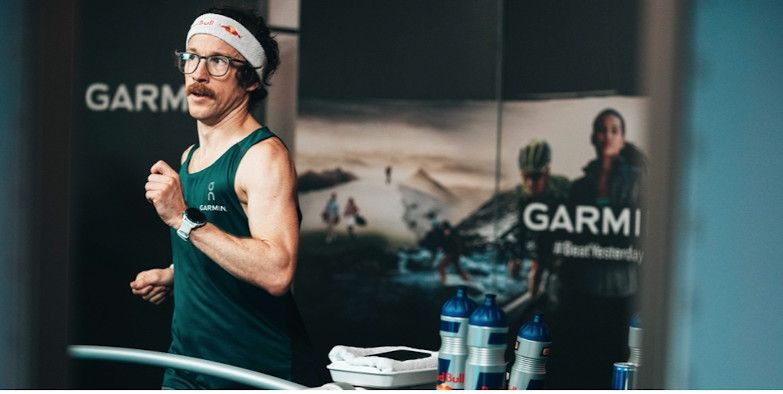
The 39-year-old completed the distance in 6:26:08—an average of 6:13 per mile!—beating the previous record by six minutes.
Neuschwander, 39, is no stranger to treadmill records. He captured the 50K treadmill world record in March 2020, running 2:57:25. But that mark was bested a few more times before the end of the year by runners like Matthias Kyburz and Tyler Andrews.
In October, Neuschwander considered again going after the 50K record—Andrews’s 2:42:51—but instead, he thought he might be more successful going after the 100K record of 6:39:25, set by Mexican-American runner Mario Mendoza in June 2020.
“I planned this run because where I live, we have good snow and it’s icy, and I don’t like to run every day in the cold temperatures or slip,” Neuschwander told Runner’s World. “I always train on the treadmill in the winter and we decided to do it with about 10 to 12 weeks to prepare.”
Neuschwander kept his mileage relatively low for training, logging between 60 to 80 miles a week. He supplemented that with Zwift cycling and backcountry skiing. His biggest runs came on long treadmill efforts: two marathons, four 50Ks, and two 60Ks. The run that gave him the most confidence for his record attempt was a 50K test run he did, which he finished six minutes faster than his world record time.
With the help of one of his sponsors, Garmin, and treadmill company, H/P/Cosmos, Neuschwander set up in a small gym near his home in Germany. With plenty of fresh air flowing in and three screens in front of him to look at for entertainment and motivation, Neuschwander put some Squirrel Nut Butter on his feet to prevent blisters, donned his On Cloudflow shoes, and started up his treadmill and Zwift for the six-plus hours of running ahead. 

“The first half was flying by. It was really fast,” he said. “On the screens, I had comments, texts, and videos that helped me a lot from people who were watching the live stream. That helped me get through to the 60K, which I knew should be easy because I had done it before. After that, it was uncharted territory.”
Neuschwander’s treadmill speed was around 15.6 km/hr throughout the entire run, but his toughest stretch between came between 75 and 85K, when he got some cramps in his quads and he dropped his speed down to 15.1 km/hr (9.38 mph), his slowest of the day. He continued to take his Maurten mixed drink every hour for fuel, supplemented by water, which helped the cramps subside.
For the final 10K, Neuschwander added two Red Bulls mixed with water to his routine and cranked up the speed to 17 km/hr (10.5 mph). This turned out to be too fast after six hours of running, but that didn’t stop him from trying to go faster.
“I went again to 15.5, and then I’d move it up and down, up and down, up and down because I wanted to go faster faster faster,” he said. “But at the same time, I was afraid I’d cramp so I slowed down again. But that last 10K was 36:05, which meant I speeded up after six hours of running.”
Neuschwander got the record comfortably, finish six minutes ahead of the previous record with a time of 6:26:08. That’s an average of 6:13 per mile. The new record-holder admitted that he was worried he would have wobbly legs or that he’d fall down when he got off, but he didn’t experience that.
“For me, treadmill running isn’t really hard,” he said. “The main thing is to have fresh air. This is hard, but if you have a lot of fresh air, your heart rate goes down. In the gym, we had a big door open and it was nearly like outdoor running but in one place.”
With most things still shut down, celebrations were limited after his record run. Neuschwander said he celebrated with his wife and kid and he ate two big pizzas and had two beers.
With his race schedule uncertain at the moment because of the pandemic, Neuschwander plans to continue training for the 100K German Championships in the fall. There or in time, he hopes to capture the German 100K record—6:24:29. After seeing Jim Walmsley miss the 100K record by 11 seconds on January 23, he said his goal that he’d be happy with is a sub 6:20.
by Runner’s World
Login to leave a comment
Billy Yang’s Latest Film Takes Us Through the Amazing Career of Zach Miller
We caught up with the popular trail-running filmmaker to learn all about his latest project.
Zach Miller has been a household name in trail and ultrarunning since his out-of-nowhere victory at the 2013 JFK 50 Miler. Since then, the 34-year-old has raced and won some of the biggest races on the ultra calendar.
Billy Yang: I started off a fan like everyone else. He’s an unassuming guy, as his friends from Colorado Springs, Colorado, say in the film. I was totally guilty of that. When I first met him, here’s this guy that shocked the ultrarunning community out of nowhere. There were a lot of oddballs at that point in time, but Rob Krar was crushing the competition and dominating the scene. I figured that I’d see what this guy was about.
I was doing a film at Lake Sonoma 50 miler in 2014, which ended up gaining a lot of traction. I followed four runners and this guy Zach Miller kind of spoils my film by winning the whole thing. Over that weekend, we hung out and got dinner with the Nike team. He really was this aw shucks, blue-collar guy who has this flip phone. So I wanted to know, who is this guy?
What did you discover?
Yang: Well, he’s clearly a rabbit—a pacesetter in a race. In that JFK race, everyone thought he’d go 30 or 40 miles with Rob and drop back. But Rob’s wheels came off, and he ended up winning and later signing with the Nike Trail Running team. Fast forward to 2017, here is this guy who has this Steve Prefontaine-esque mindset of racing as hard as you can and giving his best. He even has the mustache.
So, I wanted to tell a three-dimensional story around him with a focus on UTMB as his white whale.
The UTMB crown has alluded every male American that has toed the line in Chamonix, France. It seems like one of the last, to use a climbing analogy, first ascents in running. Zach has been to UTMB three times, once with you there. Were you hoping or waiting to see if Zach could get it?
Yang: I’d be wrong to say the story wasn’t centered around this big, awesome white whale that is UTMB. When I zoom out, I do think that the end we have is kind of perfect. The way the outcome is so imperfect. The finish isn’t a given. For two years, we racked this story. I don’t tell the story about the 2019 race when he dropped out. What we see is his racing style and the only thing that’s a given is how hard you decide to push. That was kind of the spirit of the film.
Miller is now the subject of filmmaker and trail runner Billy Yang’s latest film, Zach. Yang spent years following Miller and capturing every detail of his life for this project that is now available on YouTube.
We caught up with Yang to hear more about what went into the making of his latest project and what he learned from spending so much time with Miller.
This interview has been edited for clarity.
You mention the climbing analogy. My inspiration was actually a film called Free Solo. You can take as many stabs at it and the things you want to do is right in front of you. For Alex Honnold, that was El Capitan. He kept coming back. For Zach, that’s UTMB. Sometimes, it’s just challenging and that mark of a good story is learning how to pivot and complete the story without that Disney outcome.
I finally decided after years of working on this that we needed to wrap this up. We can’t keep chasing this victory that I saw in my head.
Zach is a well-known runner. What do you hope viewers see that they may not have before about him?
Yang: In a way, I’m hoping to introduce him to a new crowd. Zach is a runner, he what makes Zach who is is way more. He grew up in Kenya, and is parents were missionaries. Faith plays a big role in his life. Mentorship and giving back is so important to him. The mindset of ‘do the best you can’ shows in all aspects of his life and at the center of that, I wanted Zach to be a model for people. He’s probably not genetically built like Kilian Jornet or Jim Walmsley or Eliud Kipchoge. But what you see is all the hard work, the miles, and the little things he puts in. He’s so easy to root for.
At the end, we don’t totally see it, but you slightly detail where Zach is at after foot surgery. What’s he up to now?
Yang: He’s not running at the moment. He’s working on building out a short bus that’s turning into a home on wheels. He plans to travel the world in it. That’s the epilogue.
Do you think we see an American man winning UTMB in the coming years?
Yang: I think between Zach, Tim and Jim, and maybe some others no currently at the forefront, someone will do it. Zach said it’s a puzzle you have to put together and for whatever reason, that hasn’t been put together yet. I think it will happen in the next five years and I would bet money it will be one of those three.
by Runner’s World
Login to leave a comment
Jim Walmsley Shatters the 100K American Record, But Misses the World Record by 11 Seconds
The king of Western States came so close at the Project Carbon X 2 race.
After more than six hours of running, Jim Walmsley crossed the finish line 11 seconds short of his ultimate goal—the world record in the 100K.
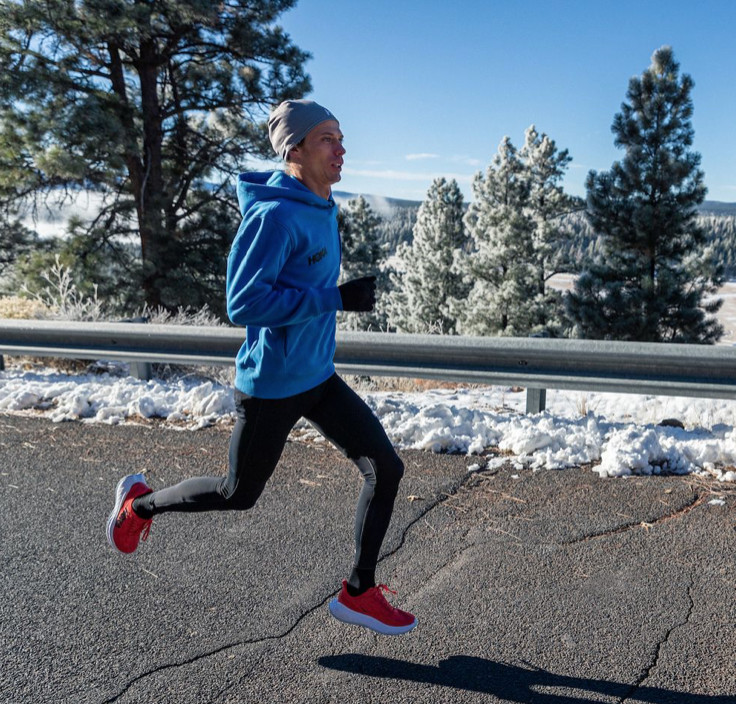
At the Hoka Project Carbon X 2 100K race on January 23, held in Chandler, Arizona, Walmsley ran 6:09:25, shattering the American record of 6:27:44, set by Max King in 2014. But the world record (6:09:14, set by Nao Kazami in 2018) continues to elude him.
“Definitely feels like one of the more special runs I’ve had,” Walmsley said, in his post-race interview. “Really felt like I got everything out of myself today, dug real deep, and fought all the way to the line. I don’t feel like I gave up, but it was tough to see the seconds tick by. It’s a little bittersweet, but definitely awarded with an American record today, and those don’t come very often. I don’t get to do things like this in my home state very often, so it’s extremely positive. A 45-minute PR. It was a pretty amazing day.”
Nineteen men and women were chasing national and world records in the 100K distance in Saturday’s race. Walsmley was the men’s favorite to set both the world record and the American record, while Camille Herron was favored for the women. Herron was forced to drop out of the women’s race with a hip injury.
Walmsley started the race in a pack with five other runners, running conservatively to keep his legs fresh. But the other four runners faded behind him, leaving Walmsley to chase the record alone. His pacing picked up over the final 30K, as he raced the clock with everything he had.
Around the 3:30 mark in the race, Walmsley clipped his left shoulder on a course sign, and he was visibly bleeding for the next two and a half hours. At water stops, he’d fuel and treat his wound as best he could while keeping his stride.
The race came down to the final 10K, as Walmsley needed to run 37:58 or faster over the final miles. Those watching the race on the live stream could see the fatigue and pain set in over that final stretch. He let out a loud “C’mon, Jim” scream with a little more than 5K to go, fighting the clock with everything he had.
As he entered the drag strip to the finish, he had just over a minute to cover the final hundreds of meters. He got on his toes, repeatedly checked his watch, and ran as hard as he could to beat the clock that was now in his sights. Ultimately, he watched the clock tick past 6:09:14, finishing 11 seconds later.
“We’ll have to try it again,” Walmsley said in his post-race interview. “We’re in the right ballpark and on the right track and we have a shoe to compete with this and we’re knocking on the door. I don’t think I’m done with the 100K. Fortunately, unfortunately, there’s likely another one down the road.”
The remainder of Walmsley’s year is uncertain, because of the pandemic. He told Runner’s World before the race that he’s looking at first are the Comrades Marathon and the Ultra-Trail du Mont-Blanc. In the near future, he’s hoping to do the Black Canyon 100K three weeks from this weekend on February 13.
The Flagstaff, Arizona, native wasn’t the only runner with a notable day out on the course. Rajpaul Pannu took second in the men’s 100K in his first-ever attempt at the distance. Pannu is a math teacher in addition to being a pro runner who finished 63rd at the Olympic Marathon Trials in February 2020.
In the women’s race, the United Kingdom’s Carla Molinaro and the United States’s Camille Herron led for the first half of the race before France’s Audrey Tanguy slowly made her way past both runners early in the second half of the race. After that, Herron was forced to drop out after six of nine laps due to a hip injury.
Tanguy, the reigning and two-time champion of the Ultra-Trail Sur les Traces des Ducs de Savoie (TDS), captured the lead and ran away with the race for the win in 7:40:35, unofficially.
American Nicole Monette did move close to Tanguy late in the race and took second, finishing less than three minutes behind the winner.
by Runner’s World
Login to leave a comment
Jim Walmsley, Hayden Hawks Going for 100-km World Record at Project Carbon X 2 in Arizona
A group of top ultra runners will gather in Chandler, Ariz., with hopes of breaking the World Athletics records for 100 kilometers on the road. The event, called Project Carbon X 2 and staged by Hoka One One for the benefit of their athletes, will start and finish at the Wild Horse Pass Motor Sports Park and will use some of the same roads as The Marathon Project which was held with great success last month.
“I’m incredibly excited,” said Hoke One One president Wendy Yang on a video conference today with reporters. “Also feel super fortunate that the team was able to bring this event together.”
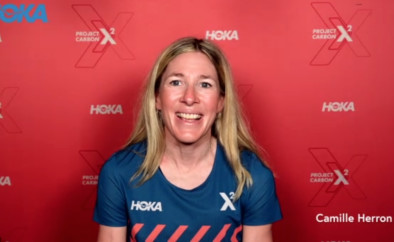
The pandemic has meant dramatically fewer competitive opportunities for road running athletes, especially ultra runners who specialize in distances longer than the standard marathon distance of 42.195 km, or 26.2 miles. However, since most ultra runners train alone or in very small groups, the pandemic has given them a chance to put in long blocks of uninterrupted, COVID-safe training and improve their strength and fitness. Tomorrow’s race will offer them a chance to show off their work.
We wanted to give our athletes the chance to compete,” Yang continued. “We felt like our athletes really needed this chance.”
The top targets for tomorrow’s race are the ratified World Athletics 100-K records of 6:33:11 for women, set by Japan’s Tomoe Abe in 2000, and 6:09:14 for men, set by Japan’s Nao Kazami in 2018. Both records were set at the same event, the Lake Saroma 100-K in Hokkaido, Japan. The women’s record works out to a pace of 3:56 per kilometer, which means running two 2:46 marathons back-to-back plus another 15.6 kilometers at the same pace. The men’s record pace of 3:42 per kilometer translates to running back-to-back 2:36 marathons plus the extra distance.
“You never know what can happen in an ultramarathon,” said Hayden Hawks one of the top contenders in the men’s division. Hawks smashed the course record at the venerable JFK 50 Mile (80.5 km) in Maryland last November, clocking 5:18:40. His pace at that event, which included rugged trails and some steep climbs and descents, worked out to 3:58 per kilometer. He said he’s been practicing on flat, loop courses to simulate the conditions in Arizona, and that with his strength and mental toughness he has a chance at the record.
“My greatest strength is probably just my stubbornness,” Hawks said. He added: “I feel like I have this mental strength to push through a lot of pain.”
Hawks’s main rival tomorrow will be ultra star Jim Walmsley, the man whose record he broke at the JFK race. Walmsley is best known as a trail runner, and is the course record holder for the impossibly difficult Western States 100-Miler in Auburn, Calif., where he ran 14:09:28 in 2019 (he also won in 2018). Walmsley already holds the world best for 50 miles on the road of 4:50:08. Using the popular Riegel Formula, that’s equivalent to 6:05:51 for 100-K, comfortably under the 100-K world record by more than three minutes.
Note: Walmsley was on the LetsRun.com Track Talk Podcast this week where he talked about his 100-k world record attempt, his big plans for 2021 and his cancelled 2020. Highlights here.
“I’m really looking forward to improving on my past performances in the 100-K,” Walmsley said today, admitting that he hasn’t yet perfected his approach to that distance yet. He continued: “I think I’m bringing a more mature approach of being more patient.”
If they don’t eclipse the world record, both men could surpass Max King’s USA record of 6:27:44 set in 2014.
On the women’s side, Camille Herron is the top entrant, and she rated her fitness at “80 to 85 percent.” Like Hawks, the holder of the world best for 24 hours on both the road and the track recently won the JFK 50-Miler. She played down the possibility of getting the world record, but said she was in about the same shape as when she won the famed Comrades Marathon in South Africa in 2017 over a distance of 86.73 kilometers. She allowed that a personal best (sub-7:08:35) was possible, despite only doing a six-week build-up.
“I’m definitely confident in my fitness,” said Herron who recently switched sponsors from Nike to Hoka One One and who will be doing her first race in Hoka shoes. She added: “I’m getting fitter every week. I have a pretty good idea of what I’m capable of.”
Also competing in the women’s division is Irish Olympic marathoner Caitriona Jennings, 40, who will be making her 100-K debut. Jennings will be taking a cautious approach to the race because she is 12 weeks pregnant. She said that there will be plenty of ice and fluids available on the course so that she can keep her core temperature in check.
“It wasn’t a decision I took lightly,” she said emphasizing that she had consulted with her doctor before agreeing to compete. She added: “I think (the water and ice on the course) will help with hydration and keep my temperature down.”
The athletes will start and finish on the race track, and will run about nine laps of an 11-kilometer circuit (Walmsley estimated that each full lap would take him about 41 minutes). The course was measured by two World Athletics “A” measurers, Joe Galope and Jay Wright (an “A” measurer must be used in order for a course to be eligible for a World Athletics record). The event will have in-competition drug testing done by the USA Anti-Doping Agency, also a requirement for setting a world record.
All of the competitors will be wearing the new Hoka One One Carbon X 2 shoe. Colin Ingram, Hoka’s director of product, called the new shoe “one of our sharpest tools in the box.” He explained that the shoe had been improved over its predecessor by incorporating “swallow tail construction” to improve deceleration on the foot strike, and lowering the carbon plate to get it closer to the ground.
“It allows for a more natural gait,” Ingram said.
While Hoka One One has not disclosed the cost of the event, it is significant, especially making it as safe as possible from the coronavirus. Mike McManus, Hoka’s director of global marketing, said that every athlete had at least three antigen PCR tests in the last week, and that masks and social distancing were required at all times except when the athletes are on the course. An industry insider contacted by Race Results Weekly estimated the cost of COVID mitigation for the event was around $60,000.
“It’s been a huge challenge for us to make this event happen in a very safe way,” McManus said.
The race will be streamed live and free at hokaoneone.com beginning at 9:00 a.m. Eastern Standard Time.
by Let’s Run
Login to leave a comment
How Mike Foote and Rob Krar Set the R2R2R-alt FKT (Hint: Skinny-Dipping Was Involved)
To save time, the two pros went naked while crossing the Colorado River twice during the 42-mile run.
It all started with a text on December 15. Mike Foote had a hankering for an adventure after a year without races that left him mostly situated around his home in Missoula, Montana. Wanting to end the year on a high note, he sent a Hail Mary ask to his buddy Rob Krar.
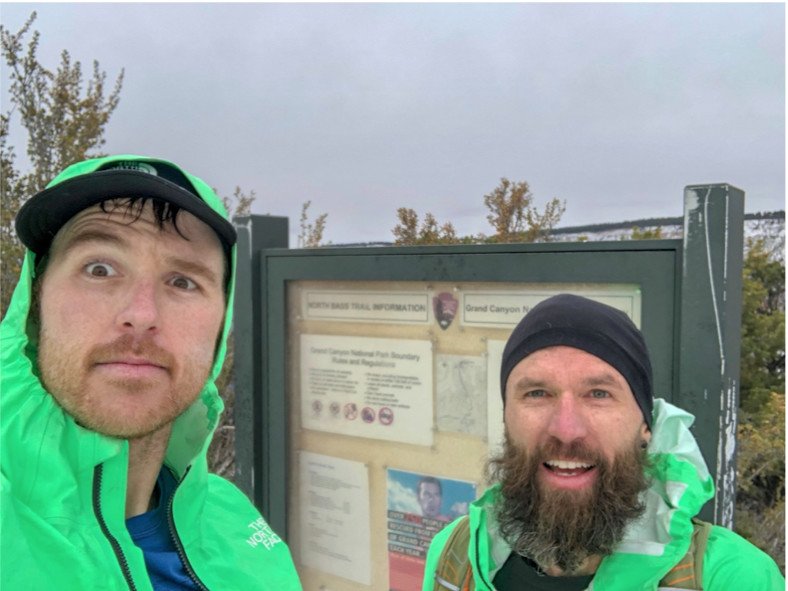
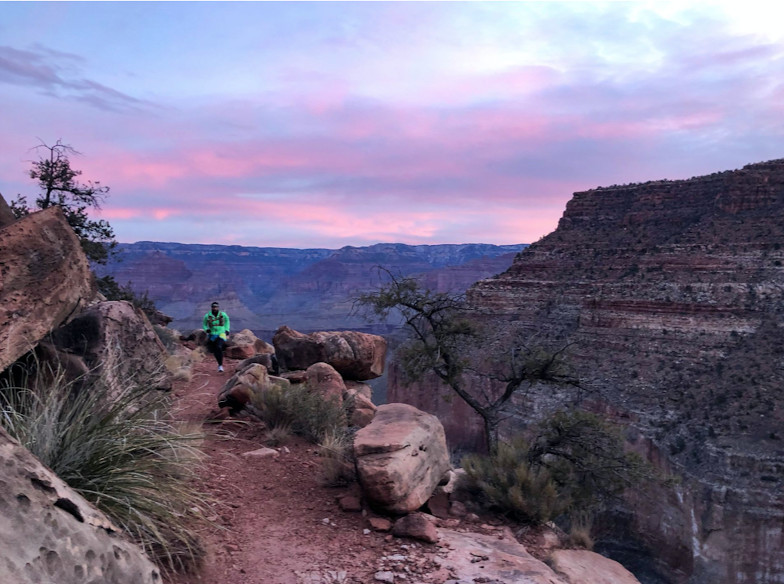
“Are you healthy right now?” the text read. “Any interest in doing the Grand Canyon alternate R2R2R with me sometime in the next couple of weeks?”
Krar, based in Flagstaff, Arizona, responded quickly: “Oh gawd.”
A back and forth commenced. Krar was hesitant and decided to sleep on it. The next day, Krar politely declined the invitation, seemingly ending Foote’s dreams to complete the run. However, a seed was clearly planted.
Krar kept thinking about Foote’s offer, so much that he and his wife, Christina Bauer, decided to scout the south rim of the trail, which is about two hours from their home. No stranger to the Grand Canyon, Krar has run many routes throughout the park, but he had never done this one. They discovered a beautiful trail that led to the Colorado River, and they even set out to check out the north section after, but were forced to turn back 30 miles away from the trailhead due to snow.
Turns out, that was good enough. On December 27, Krar let Foote know he was all in. Four days later, they were camping out at the trailhead.
“I really was somewhat unprepared for what we did, but I was in the realm of possibility,” Krar told Runner’s World. “I like to say, I enjoy big, dumb ideas. Mike’s idea was a big, dumb idea, and it would be an immensely satisfying way to finish what really is a rough year.”
“Sometimes you plan for big objectives with months of preparation,” Foote told Runner’s World. “Sometimes you wing it.”
After a night sleeping in single-digit temperatures, they awoke slowly to prepare for the R2R2R-alt, the 42-mile out-and-back route with two crossings of the Colorado River. It took a bit of time to get rolling because the oatmeal, water, and coffee they brought was a frozen block.
Just before daylight, around 7 a.m. on December 31, they set out in their soon-to-be-released North Face Vectiv trail shoes, running the 18 miles from the south rim to the first river crossing.
Typically when runners cross the Colorado River, they utilize wetsuits and pack rafts. Foote favored that method, but Krar had other ideas.
“I have a tendency to get cold easy, so it was a well-thought-out, calculated decision that, in my mind, offered us to best way to stay warm,” Krar said. “It seemed counterintuitive, but we would spend more time getting in and out of wet suits, especially when it was wet, and the suits would give us minimal warmth for a two-minute swim. Why not just take the shock of the initial plunge and get to the other side with our clothes in dry bags.”
And that’s exactly what the duo did. When they arrived at the river’s edge, they stripped down quickly, and packed up their dry bags. Foote had brought along a pack raft, but instead, they fought that fear we all have of jumping into cold water, and leapt into the river buck naked.
“Once you’re in, you’re in,” Foote said. “You’re 100-percent focused on getting across.”
After about five seconds of shock, they made their way across in roughly two minutes, quickly getting on shore and throwing on the puffy jackets they had in their dry bags. The whole experience swimming from one side to the other took about five minutes.
Starting up the trail to the north rim of the canyon was tougher than the south side. It involved a much more technical trail, particularly on the climb out of the canyon, which required a slower approach.
“We didn’t have deep, philosophical discussions about life,” Krar said. “I’d like to call it comfortable silence and knowing we were doing something incredible.”
Foote agreed, and added that his mind was mostly focused on one thing the entire way.
“The wasn’t a few minutes where I wasn’t thinking about that river crossing,” he said.
After nearly 30 miles and 10 hours, they made it up to the north rim and back to the river. Again they quickly undressed and jumped in—but this time, they got caught by the current and ended up in an eddy. This slowed them down, costing them about a minute before getting to the other side in roughly three minutes.
It took a toll, mentally and physically. Krar said his feet were numb for 20 to 30 minutes, and he struggled to find his running legs again. They also were met with some fresh snow after a flurry while they were running the northern section left two to three inches on the south side trail.
With the river crossings behind him, Foote’s mind shifted to the finish, counting down the minutes as they made their way up the south rim.
“What do we have? 30 minutes? 10 minutes now?” Foote thought as he made the climb up. “The terrain was constantly switching from big steps, then runnable, and we settled into a hiking pace with our headlamps on just trying to get to the end.”
Finally, after 11 hours, 32 minutes, and 9 seconds, they reached the trailhead, officially setting the fastest known time (FKT). Their mark bested the popular 2018 FKT set by the trio of Jim Walmsley, Tim Freriks, and Eric Senseman.
They had thought about camping another night, but after the cold day, Bauer drove them both back to Flagstaff. They warmed up during the two hour drive, arriving home around 11:15 p.m. Bauer threw some pot stickers in the oven and before they knew it, it was 11:55 p.m.
To mark the new year and the successful FKT run, Krar broke out a special Trappist beer, made by monks in the Netherlands and Belgium. It was a birthday present for him from his wife the day before.
He poured three ounces for everyone, said cheers to the end of 2020, and went to bed.
“We went big,” Foote said.
by Runner’s World
Login to leave a comment
Hawks soars to JFK 50 victory in record time
With most major running events having been canceled this year due to the COVID-19 pandemic, opportunities were not to be wasted at the 58th annual JFK 50 Mile ultramarathon in Washington County.
No one seized the chance to showcase their fitness quite the way Hayden Hawks did Saturday.
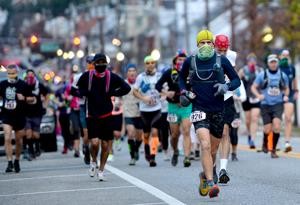
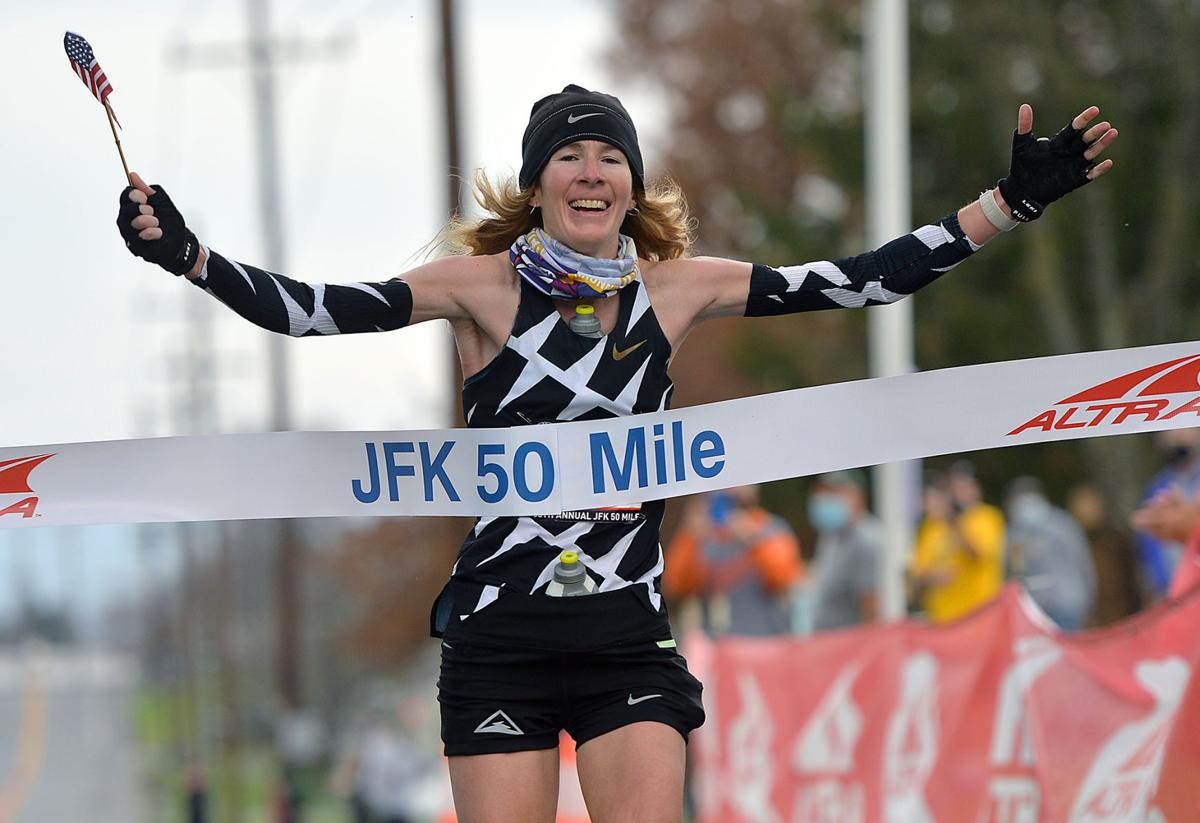
In his debut at the race, Hawks, 29, of Cedar City, Utah, turned in a stunning performance, winning in a course-record time of 5 hours, 18 minutes and 40 seconds — an average of 6:21 per mile.
The women’s title was captured by pre-race favorite Camille Herron in 6:31:14.
“I just really wanted to come out here, have fun and see what I could do. It just all clicked today,” Hawks said. “I kept thinking the whole time during the race how grateful I was to be out here.
“You know, it’s been a hard year for a lot of people, including us as professional athletes. My whole schedule was changed this year. I had all these big plans, competing at all these big things. Of course, all that got canceled, so I just took advantage of the time I had and really dialed everything in — my nutrition, my strength training, my running training — coming into this.
“I was like, you know, I need to be grateful and have gratitude because, really, this might be the first and the last race for a while for me. I was just really fortunate and really happy out there.”
The previous course record was 5:21:29, set by Jim Walmsley in 2016. That was a momentous achievement, as before Saturday, no one else had ever run faster than 5:34:22 in the first 57 years of the event.
“I fully expected Walmsley’s record to stand well into 2040, maybe even 2050,” JFK 50 director Mike Spinnler said. “It was just such a big quantum leap.”
With some help from Walmsley, Hawks took it a step further.
“Jim and I are really good friends. We talk all the time,” Hawks said. “Jim actually gave me some advice coming into this. I was texting him back and forth, asking for shoe advice and what I should do. And he gave me advice.
“He’s a really class-act guy, a really great competitor, and I’m really fortunate to have him as a friend. That’s what we do as competitors. We’re always trying to push each other and reach that next goal. I’m sure Jim is happy for me today to take this course record to the next step, just like I’d be happy for him if he did that as well.”
Stephen Kersh, 29, of Flagstaff, Ariz., placed second in 5:27:07 — the No. 3 performance in race history — in his first JFK.
“I’m definitely pretty happy,” he said. “It was just about as good as it could have been.”
Kersh’s training partners in Flagstaff include Walmsley and two other recent JFK champions, Jared Hazen (2018) and Eric Sensmen (2017).
“I’ve been picking their brains for the last couple months, so I didn’t come into this as green as some people. I knew what to expect,” Kersh said. “Training with those guys, this isn’t as unexpected as maybe some people think, because I’m not really a big name in the sport.”
After the first 15.5-mile segment of the race, mostly comprised of the rocky Appalachian Trail, a lead pack of four — Hawks, Matt Daniels, Hazen and Kersh — took the title fight to the flat C&O Canal towpath for the next 26.3 miles.
“Once we hit the canal path, Matt and I took off,” Hawks said. “We actually train a lot together and are really good friends.
“We talked beforehand about working together on the canal path, and then it would be every man for himself at the end, so that’s what we did. We started clicking off sub-6-minute miles and were feeling very comfortable, having a conversation and feeling really good.
“At Mile 27, I kind of broke Matt a little bit. I think maybe he had a calf injury. He’s been dealing with a lot of injuries over the past few months. Matt on his ‘A’ game would have been hard to beat today.”
Daniels ended up dropping out, and Hazen fell back to a 13th-place finish (6:36:13).
Jonathan Aziz, 29, of Colorado Springs, Colo., finished third in his ultramarathon debut in 5:37:14 — the No. 6 performance in JFK history.
Anthony Kunkel, 28, of Durango, Colo., placed fourth in 5:45:31, and Geoffrey Burns, 30, of Ann Arbor, Mich., took fifth in 5:52:51.
Herron adds to her résumé
In the women’s competition, Herron, 38, of Alamosa, Colo., showed why she was the overwhelming pre-race favorite, leading from start to finish as she won by nearly a half-hour in her first JFK.
Although Herron’s personal record for 50 miles (5:38:41) is an all-time world best, she specializes in even longer events, also owning world-best performances for 100 miles (12:42:40) and 24 hours (167.842 miles).
“Because I was coming down in distance, I felt a little slow and rusty today,” she said.
She had her sights set on the JFK women’s record — 6:12:00, set by Ellie Greenwood in 2012.
Although Herron was off course-record pace on the Appalachian Trail, she had hoped to make up for it on the C&O Canal towpath.
“I was trying to chase time the whole way, and I just didn’t have it. This was the best that I could do today,” she said. “Buy hey, I won. I’m not disappointed for such a crazy year. It’s awesome to even have a race.
“I definitely want to come back,” she said. “I think I have it in me to go for the course record — just keep trying. It’s a stout course record, I can tell you that.”
Sarah Cummings, 31, of Park City, Utah, was the runner-up in 6:57:11, while Haley Moody Gilpin, 31, of Chattanooga, Tenn., placed third in 7:00:52, Alicia Hudelson, 36, of Roswell, Ga., took fourth in 7:14:02, and Sarah Biehl, 26, of Hilliard, Ohio, was fifth in 7:22:32.
Login to leave a comment


